Session 2009/2010
Second Report
Committee For The Environment
Inquiry into Climate Change
Volume Three
TOGETHER WITH THE MINUTES OF PROCEEDINGS, MINUTES OF EVIDENCE
AND WRITTEN SUBMISSIONS RELATING TO THE REPORT
Ordered by the Committee for the Environment to be printed 23 November 2009
Report: NIA 24/09/10R (Committee for the Environment)
This document is available in a range of alternative formats.
For more information please contact the
Northern Ireland Assembly, Printed Paper Office,
Parliament Buildings, Stormont, Belfast, BT4 3XX
Tel: 028 9052 1078
Membership and Powers
The Committee for the Environment is a Statutory Departmental Committee established in accordance with paragraphs 8 and 9 of the Belfast Agreement, section 29 of the Northern Ireland Act 1998 and under Standing Order 46.
The Committee has power to:
- Consider and advise on Departmental budgets and annual plans in the context of the overall budget allocation;
- Consider relevant secondary legislation and take the Committee stage of primary legislation;
- Call for persons and papers;
- Initiate inquires and make reports; and
- Consider and advise on any matters brought to the Committee by the Minister of the Environment
The Committee has 11 members including a Chairperson and Deputy Chairperson and a quorum of 5.
The membership of the Committee since 9 May 2007 has been as follows:
Mrs Dolores Kelly (Chairperson) 6
Mr Cathal Boylan (Deputy Chairperson)
Mr David Ford Mr Adrian McQuillan 7
Mr Ian McCrea Mr Alastair Ross 1
Mr Peter Weir Mr Daithi McKay
Mr John Dallat 5 Mr Danny Kinahan 3,4
Mr Roy Beggs 2
1 From January 21 2008, Mr Alastair Ross replaced Mr Alex Maskey on the
Committee for the Environment.
2 With effect from 15 September 2008 Mr Roy Beggs replaced Mr Sam Gardiner.
3 With effect from 29 September 2008 Mr David McClarty replaced Mr Billy Armstrong
4 With effect from 22 June 2009 Mr Danny Kinahan replaced Mr David McClarty
5 With effect from 29 June 2009 Mr John Dallat replaced Mr Tommy Gallagher
6 With effect from 3 July 2009 Mrs Dolores Kelly replaced Mr Patsy McGlone
7 With effect from 17 September 2009 Mr Adrian McQuillan replaced Mr Trevor Clarke
Table of Contents
Executive summary
Summary of Recommendations
2. Approach and focus of report
3. Current policy position on climate change in Northern Ireland
• Policy development
• Legislation
• Co-ordination of legislation
• Climate / carbon impact assessments
• Northern Ireland Targets
• Sector specific targets
• Role of the Committee on Climate Change
• Role of the MET Office
• Reporting mechanisms
6. Structures and Accountability
• Government structures
• Role of Government
• Role of DOE Climate Change Unit
• Delivery mechanisms including delivery of carbon commitments
• Public procurement
• Role of the Planning System
• Role and responsibilities of Local Government
• Investment and innovation
Cost of delivering climate change obligations
8. Sectoral targets and Action
• Energy
• Transport
• Waste
• Land use
Appendix 1
Appendix 2
Appendix 3
Appendix 4
Other Papers Submitted to the Committee
Appendix 5
Appendix 6
Appendix 4
Other Papers Submitted
to the Committee
Letter from NIIRTA re Oral Evidence

Submission from Carbon Trust
Summary Table of Issues Presented to the Committee in Writing during its Public Consultation Phase
On 23 November 20008 the Environment Committee agreed to conduct an inquiry into climate change. The Committee’s current position on climate change was established at its meeting on 7 September 2007 when it considered a number of questions relating to the UK Climate Change Bill (now the Climate Change Act).
On 11 December 2008 the Committee agreed the aim and terms of reference for the inquiry:
Aim:
To understand the implications of climate change for Northern Ireland and to make recommendations on government policies, in line with the Committee’s earlier response on the UK Climate Change Bill, to mitigate the impacts of climate change, examine economic implications and identify suitable adaptation initiatives.
Terms of Reference:
1. To identify initial commitments for Northern Ireland that will ensure it plays a fair and proportionate role as part of the UK in meeting climate change targets.
2. To consider the necessary actions and a route map for each significant sector in Northern Ireland (energy, transport, agriculture and land use, business, domestic, public sector etc)
3. To identify the costs associated with meeting these obligations and compare them with the costs that will be incurred if they are not achieved.
4. To identify a formal cost effective mechanism for assessing the potential impact of new policies on climate change / CO2 emissions. (Akin to Regulatory Impact Assessments/Rural Proofing)
5. To make recommendations for appropriate targets/actions that could be included in the new Northern Ireland Sustainable Development Implementation Plan.
6. To make recommendations on a public service agreement for the DOE Climate Change Unit’s commitments in the second Programme for Government that will ensure Northern Ireland will meet its climate change obligations.
7. To consider what secondary legislation raising powers within the UK Climate Change Act would contribute to Northern Ireland’s commitment to the UK Climate Change Bill.
8. To express views on if and how the Assembly might conduct more effective scrutiny of climate change responsibilities across all relevant departments.
To produce a report on the findings and recommendations of the inquiry by September 2009.
The tables below summarise points raised in written submissions to the inquiry where they contribute clearly to the terms of reference.
The tables are presented in three columns. The left hand column outlines the terms of reference, the central column included submissions received in writing in response to the public advertisement of the inquiry.
Some comments have relevance to more than one clause in which case they are duplicated in the tables. The specialist adviser has highlighted the key points in the submission for easy reference and in the right hand column has made notes where appropriate regarding the relevance, validity and provenance of the submission, provided additional relevant facts, identified gaps and suggested additional research needs emanating from the information.
Note: MtCO2e = Million tonnes of carbon dioxide equivalent
Carbon Trust
| ToR 1: To identify initial commitments for Northern Ireland that will ensure it plays a fair and proportionate role as part of the UK in meeting climate change targets. | The so-called “20/20/20" package agreed by European Union leaders for the EU27 in January 2008 set a number of ambitious commitments to fight climate change and promote renewable energy, namely: 20% cut in greenhouse gas emissions by 2020, compared with 1990 levels 20% contribution from renewable energy sources (by consumption) by 2020 20% cut in energy consumption through improved energy efficiency by 2020 This sets the context for the UK agreed target of a 15% contribution from renewable energy by 2020 and although this target is not presently disaggregated by country, we believe that NI’s contribution to the UK (and EU) target should be at least of this magnitude i.e. at least 15% of NI’s total energy consumption (electricity, thermal and transport energy) should come from indigenous renewable energy sources by 2020. Indeed, in light of other considerations such as concerns about security of supply, we believe consideration should be given to setting a higher target as part of a comprehensive, holistic package of measures designed to achieve rapid, deep cuts in NI’s carbon emissions. Exploitation of the technical resource available from wind energy and an aggressive policy towards improving standards of energy management (conservation and efficiency) will be the key tenants of such a package. In December 2008, the Committee on Climate Change (CCC) proposed carbon budgets to put the UK on a trajectory to reduce emissions by 80% (from a 1990 baseline) by 2050, and their proposals included an interim target of 34% reduction by 2020, rising to 42% if a global successor deal to Kyoto is reached. An 80% reduction is estimated to be achievable at a cost of between 1-2% of UK GDP in 2050. But cost is not the only barrier to success. Achieving these targeted reductions challenges businesses’ and the public sector’s current capabilities and resources as well as demanding a shift in technologies and business models. The sustainable development strategy for Northern Ireland and the Executive’s Programme for Government includes a number of very challenging energy and climate change related targets including: Reducing NI’s CO2 emissions by 30% below 1990 levels by 2025; Reducing NI carbon footprint by at least 25% by 2025; and 40% of electricity consumed beyond 2025 to be from indigenous renewable sources | EU ‘20/20/20’ target – by 2020 cut GHG by 20%, cut energy consumption through efficiency by 20% and supply 20% from renewables. At least 15% of NI energy (thermal, electric, transport) from renewables by 2020; given NI’s resources should be higher Improve standards of energy management and exploiting renewables key. CCC targets of 34/42% Sustainable Development Strategy: CO2 by 30% by 2025 Carbon footprint by 25% by 2025 40% of electricity from indigenous renewables by 2025 Requires investment of millions and demand management programme Need NI Dept Energy and Climate Change, including aspects of DETI, OFMDFM, DoE, DARD, etc. Adopt (minimum) SMART targets from UK Climate Change Act Develop evidence based delivery plan to meet targets as cost effectively as possible Deliver sector specific action oriented campaigns Public sector demonstrate leadership, decarbonise estate Building regulations, Investment Strategy, Planning all support move to low carbon infrastructure Avoid ‘exporting wealth’ through non-local low carbon energy or carbon credits. Use measure of ‘carbon intensity of NI Economy’ |
| Attainment of these targets in NI will require a multi billion pound investment in both generation capacity and demand-side management projects over the next 10-plus years. Investment at this scale will require careful planning and management to ensure NI’s move to a low carbon economy is achieved at maximum cost advantage to businesses and citizens. We believe that NI’s contribution to UK/European carbon reduction targets can be best managed and delivered through the establishment of a NI Department of Energy and Climate Change, allowing such a Department to take ownership of the various targets and policies presently set by DETI, OFMDFM, DoE, DARD and others. The following actions will help NI deliver on challenging carbon reduction targets in an optimal manner: Adopt – as a minimum – the SMART targets set by the Climate Change Act and ensure that the processes and procedures for carbon budgeting and accounting envisaged by the Act, are applied at a NI level. Development and delivery of an evidence based implementation plan to ensure carbon reduction targets are met in the more cost advantageous manner i.e. prioritising measures with the lowest carbon abatement cost. Delivery of focussed, targeted, carbon reduction awareness campaigns aimed at the various sectors of the economy explaining the need to reduce emissions and highlighting the associated opportunities e.g. reduced energy bills, new business opportunities. NI Public Sector organisations to demonstrate leadership through an accelerated programme of decarbonising their estates which will not only bring about substantial resource efficiency gains but will help build capacity and capability within local businesses regarding the delivery of low carbon solutions. Ensure NI’s Building Regulations, Investment Strategy and Planning processes drive a rapid move to low carbon buildings, infrastructure and solutions. Avoid ‘exporting wealth’ through the purchase of non-indigenous low carbon energy and/or carbon credits. It is worth noting that although absolute reductions in carbon emissions is critical, in order to ‘correct’ for any ‘structural’ changes in NI’s energy usage, we would encourage the inclusion of robust carbon intensity metrics within a suite of key performance indicators e.g. a measure of the carbon intensity of NI economy expressed in terms of millions of tonnes of carbon per £’000 million GDP. | ||
| ToR2: To consider the necessary actions and a route map for each significant sector in Northern Ireland (energy, transport, agriculture and land use, business, domestic, public sector etc) | In 2003, the Carbon Trust and Invest NI commenced a project to develop an action plan that would set Northern Ireland on the path to a low carbon economy. The ‘NI Vision Study’ examined the prospects for reducing CO2 emissions in five key sectors of the economy. Although the study was concluded in March 2005 many of the key findings remain valid today and we attached a copy of the study report to this submission for the Committee’s reference and information. The study concluded that it was possible to realise a 60% reduction in carbon emissions by 2050 (the then target in the UK Energy White Paper), provided early action was taken to: Optimise energy use by implementing all possible energy efficiency and reduction measures; Decarbonise energy/fuel supplies by investing in renewable energy resources; and Decouple economic growth and social activity from the consumption of high-carbon fuels by developing low carbon technologies, products and services. The project also published an initial action plan to help initiate this change: Immediate actions Encourage improvements in energy efficiency in all sectors of the economy by developing additional support mechanisms for smaller organisations and by setting up a capital fund to support major investment in new buildings and industrial plant. Improve building energy efficiency via improved standards, efficiency labelling and compliance monitoring by, for example, requiring all buildings over 1,000 square metres to display a building energy performance certificate that complies with the EU Energy Performance of Buildings Directive. Also support moves towards zero emission buildings. Change public procurement procedures to promote the highest energy efficiency standards and to demonstrate public sector leadership in reducing carbon emissions. This should include only procuring space in buildings within the top quartile of energy performance, a Government commitment announced in its 2004 Energy Efficiency Action Plan. Improve the quality of data collected on energy use, and make it more readily available to consumers to facilitate better targeting of support for energy efficiency measures and to enable progress to be monitored and publicised. Developing options for the future Support the exploitation of local renewable resources such as wind and bioenergy by increasing renewable obligations on energy suppliers. Modify the regulatory scheme to encourage the uptake of good quality CHP and discourage the use of inefficient local generators during peak periods. Encourage investment in the fledgling low carbon technology sector and take the lead on developing new technologies where Northern Ireland could obtain commercial advantage. Cross-cutting actions | See shaded left |
| Develop planning procedures that have the minimisation of energy demand and transport use as prime criteria and explore the options for a transport efficiency programme. Plan and execute sustainability marketing campaigns to capture the hearts and minds of the population and seek to build up the skills base in application of low carbon technologies. Keep a watching brief on international developments in low carbon technologies and position Northern Ireland to become an early adopter of emerging technologies, such as low/zero emission vehicles. The project also considered the actions necessary for key sectors of the economy and these are summarised in the following annexes to the report: Annex A Scenarios for a low carbon economy Annex B Prospects for bio-energy in Northern Ireland to 2050 Annex C Prospects for the commercial, public and agriculture sectors Annex D Prospects for the domestic sector to 2050 Annex E Prospects for power supply in Northern Ireland to 2050 Annex F Prospects for the industrial sector to 2050 Annex G Prospects for energy savings in transport to 2050 | ||
| ToR3: To identify the costs associated with meeting these obligations and compare them with the costs that will be incurred if they are not achieved. | A substantial and credible body of work exists into the economics of climate change. The conclusion of such studies encourage early action to reduce greenhouse gas emissions and suggests that the cost of taking action to avoid the worst economic impacts of climate change can be limited to around 1% of global GDP per annum against 5-20% cost of inaction. The ‘NI Vision Study’ estimated the cost of reducing NI’s carbon emissions by 60% by 2050, which based on the carbon-abatement costs used in national studies, totalled £775 million or around 4% of Northern Ireland’s GDP in 2004. This equated to £75 per tonne of CO2, which is at the upper end of the cost range outlined in the 2004 Energy White Paper. However, some wider economic scenarios suggest the cost could be £1.25bn-£2.5bn. It should be noted that the move to a low carbon economy will deliver significant cost savings brought about by energy efficiency improvements and deployment of cost effective renewable energy technologies. Data from the Government’s Performance and Innovation Unit report of February 2002 suggests that (based on an annual energy spend of £2bn) at least £500 million per annum could be saved in NI through the deployment of existing, cost effective energy management and energy efficiency technologies and techniques. Indeed, energy surveys conducted by the Carbon Trust in businesses within Northern Ireland has identified over £100 million of annual energy savings (£50 million pa of which have been implemented, reducing carbon emissions by over 465,000 tonnes of CO2 pa) and within the domestic sector where the relative and absolute savings are highest, the Energy Saving Trust has indicated that by improving standards of energy efficiency in the home, the average householder in Northern Ireland could save £340 a year which amounts to over £223 million per annum. Furthermore, the move to a low carbon economy will generate significant wealth creation and economic development opportunities. The low carbon energy sector has been identified as an important growth focus by a number of UK and global regional development agencies and one which we believe offers a solid foundation for a forward looking, wealth creating, economic strategy for a region like NI. | Financial estimates provided Stern and NI Vision estimates of jobs and benefits NI could save £500 million per annum with cost effective energy management techniques Businesses so far saved £50 million pa Householders could save £233million pa |
| Northern Ireland already has considerable capability and capacity in a number of key industry sectors which, if strategically managed, could transfer to the low carbon sector. Our natural resources (wind, land, marine) and strategically important infrastructure (e.g. deep-port and cranage facilities), aligned with the internationally recognised talent in low carbon research that resides in both our local Universities, provides the building blocks to enable Northern Ireland to become a significant player in the fast growing clean energy sector - both as a creator of products and services and as an exploiter of the available technologies. This opportunity should be explicitly recognised by the NI Assembly and Executive and help shape the outworking of energy and climate change policy. There is precedent of some small nations that have implemented a strategic energy technology development focus and who have developed profitable niche markets for global products. For example, Denmark in wind turbine technology, Austria in biomass boiler technology and (to a lesser extent) New Zealand in small-scale combined heat and power systems. Although NI is much smaller than these comparators, there is potential for significant economic benefits through innovative product development and through effective networking and partnering to serve existing low carbon supply chains. If NI fails to develop, deploy and exploit clean energy technologies we face the prospect of importing such technologies whilst exporting wealth from NI. In an attempt to quantify the opportunities for NI businesses in relation to the renewable energy sector, an initial study by the Carbon Trust determined that although around 2 million jobs could be created across Europe by 2020, NI businesses will need to work hard to realise these opportunities: NI businesses need to be creative in thinking about the opportunities that the low-carbon economy will present to develop new products and markets. Manufacturers must also not neglect the service opportunities associated with the low-carbon economy, given the contribution that services can make to their profitability. They will also need to act quickly to link into the supply chains being formed to produce the new low-carbon products and establish an early toehold in emerging global markets. The risks and expense involved in developing new low-carbon products means that NI manufacturers will also increasingly need to look at identifying potential collaborative partners. Alongside the government, industry must also make the commitment to invest in the R&D and skills required to deliver the low-carbon economy. | ||
Firms also need to look beyond their current relationships and approaches to markets. For example, the key role that manufacturing will play in the low carbon economy gives it the chance to improve its profile and image.
Clearly the exact number of jobs created in the NI economy depends on many factors. It would depend on the success of companies exploiting supply chain opportunities and exporting products and services to the UK and EU. The initial estimates for potential job creation in NI set out in the table below is based on the premise that NI companies could capture a small share of the total EU and UK market through export of goods and services, and a significantly larger share of the home market. The table provides a range based on NI capturing 0.1% - 1% of total jobs generated in the EU market; 1% - 2% in the UK; and 5% - 10% of jobs generated through renewable energy in Northern Ireland. NB: these estimates are best considered as a discussion point and in actuality would vary depending on the NI’s success in capturing potential opportunities.
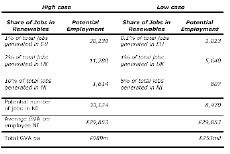 This provides an indication as to the number of jobs that could potentially be generated in NI based on the assumed percentage share of the total market in each region. This percentage share could vary and is subject to the aggressiveness of NI companies in participating and benefitting from renewables supply chain opportunities. If NI companies position themselves well to benefit from the opportunities arising through the renewables supply chain in the coming years the number of jobs created in NI could potentially be around 33,000; this represents an addition to the economy of c£1billion per annum in terms of GVA. To put this into perspective: The EU Commission estimate that continued investment in renewable energy systems could generate an additional 2,023,000 people in full time employment in the EU by 2020, accounting for jobs lost in the traditional energy sector; |
||
| Total energy infrastructure investment in the EU before 2030 is estimated at more than $2 trillion; A detailed study by the Carbon Trust has estimated that UK revenues from offshore wind could hit £8bn per year by 2020 and create up to 70,000 jobs in the UK; In 2006, the global wind industry employed 235,000 people according to WWEA; Germany reports 12,500 people employed in the solar hot water industry and 30,000 people employed in the solar PV industry; and The Obama-Biden comprehensive New Energy for America plan aims to help create five million new jobs by strategically investing $150 billion ovover the next ten years to catalyze private efforts to build a clean energy future. | ||
| ToR4: To identify a formal cost effective mechanism for assessing the potential impact of new policies on climate change / CO2 emissions. (Akin to Regulatory Impact Assessments/Rural Proofing) | We strongly support the introduction of a formal ‘climate change’ / ‘GHG emissions’ / ‘low carbon economy’ proofing requirement for all NI originated policies. This approach should be extended to inform all major projects in NI which would entail, for example, subjecting significant public and private sector infrastructure investments to such a proofing test. Such a systematic process would help avoid lock-in to high carbon projects and systems and help ‘future-proof’ strategic investments. The cross-Departmental nature of this requirements points again to the need for a NI Department of Energy and Climate Change, or similarly mandated Department. | Climate change or GHG emissions or low carbon economy proofing of all policies and projects This ‘future proofs’ all investment Need coordination, so DECC needed to deliver |
| ToR5: To make recommendations for appropriate targets/actions that could be included in the new Northern Ireland Sustainable Development Implementation Plan. | The science of climate change presently indicates that the UK and other ‘developed’ economies need to reduce their GHG emissions by 80% by 2050 as a commensurate and proportionate response to enhanced climate change (this being legislated for by the Climate Change Act which commits the UK to an 80% reduction relative to 1990 base year). Although, this UK-wide target has not been disaggregated by country, we believe that it should be adopted by NI and that the process and procedures for carbon budgeting and accounting envisaged by the Act, should be applied at a NI level. This will help ensure that NI truly plays its part in moving to a low carbon economy. All NI-specific GHG targets should be kept under review in light of emerging research regarding enhanced climate change and scale of cuts required in GHG emissions. We also believe there is merit in revisiting a number of climate/energy related targets within the sustainable development strategy for NI to ensure that they are SMART and will deliver on the policy objectives in the most cost-efficient manner. | Adopt UK targets Review SD targets to ensure ‘SMART’ |
| ToR6: To make recommendations on a public service agreement for the DOE Climate Change Unit’s commitments in the second Programme for Government that will ensure Northern Ireland will meet its climate change obligations. | We feel that this would best be achieved through the Northern Ireland Executive and Assembly creating a dedicated NI Department of Energy and Climate Change. The cross-cutting nature of climate change and the move to a low carbon economy is so profound that continued separation of responsibilities across multiple Departments risks inefficient and sub-optimal policy and delivery. Such a new Department should be adequately resourced and empowered to ensure that NI’s move to a low carbon economy is achieved in the most rapid and cost-advantageous manner possible and in such a way as to maximise the wealth creation opportunities for NI plc through the creation, development and commercial exploitation of low carbon intellectual property and technologies. | DECC is best option |
| ToR7: secondary legislation | x | |
| ToR8: effective scrutiny | x |
Correspondence/Submission from
Irish Academy of Engineering
Standing Committee on Climate Change
From: Paddy Purcell [mailto:paddypurcell@ireland.com]
Sent: 07 May 2009 16:12
To: McGarel, Alex
Cc: TSmyth; PLangford; PCallery; michael phillips; johnduffy7@eircom.net; alan cooper; Don Moore; mhayden2@gmail.com
Subject: Adaptation for Climate Change
Alex McGarel,
Environment Committee,
Northern Ireland Assembly
7th May 2009
Re: Irish Academy of Engineering --- Climate Change Input to Environment Committee
Dear Alex,
I am Chairman of the Irish Academy of Engineering Standing Committee on Climate Change and am writing, following discussion with a number of senior people from the public sector, engineering consultancy and the research community in Northern Ireland who attended a recent climate change workshop in Dublin, to seek the opportunity for the Academy to input to the current deliberations on climate change by the Environment Committee of the Northern Ireland Assembly.
The Irish Academy of Engineering comprises approximately one hundred and twenty invited senior members of the engineering profession, and is an all-island body with membership from Northern Ireland and the Republic of Ireland. Its aim is to concern itself with medium to long term matters (say 10 to 100 years) related to the engineering field, rather than current issues. We seek to provide authoritive, unbiased evidence based advice to Government and government agencies in Northern Ireland and in the Republic of Ireland on important issues, usually in the form of reports.
The Academy’s Standing Committee on Climate Change is currently in the process of completing a report on “Critical Infrastructure - Adaptation for Climate Change". The Committee held a one day workshop on 28th April 2009 in Dublin Castle to obtain essential input from owners of critical infrastructure, policy makers, climate change researchers and engineers. This was attended by seventy invited senior people from Northern Ireland and the Republic of Ireland and four keynote papers were circulated in advance. The keynote speakers made presentations on the morning of the workshop followed by open forum discussion. Most of the day was given over to detailed discussion in six workshop breakout groups focused on three areas of critical infrastructure viz. Energy; Water Services and Flood Protection. Each of these three areas was addressed by two of the breakout groups, who considered a number of pre-set questions (see attached) and any other matters they considered important. Each group provided feedback to a pleanary session in the late afternoon with their considered view of the key issues to be addressed and the required actions. The workshop concluded with an open forum discussion. We were pleased that John Gormley, Minister for Environment, Heritage and Local Government took time to address the workshop.
The Academy’s Standing Committee has commenced drafting it’s report, based in the main on the output from the workshop and the associated keynote papers and presentations. I attach for the information of the Assembly’s Environment Committee a copy of the four papers presented at the workshop. We believe that our final report, to be published later in the Summer, will be of significant interest and benefit to the Environment Committee and seek your advice on how best we can communicate it to the Committee. My personal contact details are paddypurcell@ireland.com tel: 353 1 2802201; mobile: 353 86 8044613
Yours Sincerely,
Paddy Purcell,
Chairman, Standing Committee on Climate Change,
Irish Academy of Engineering.
Research Paper: Meeting the
Challenge of Adaptation

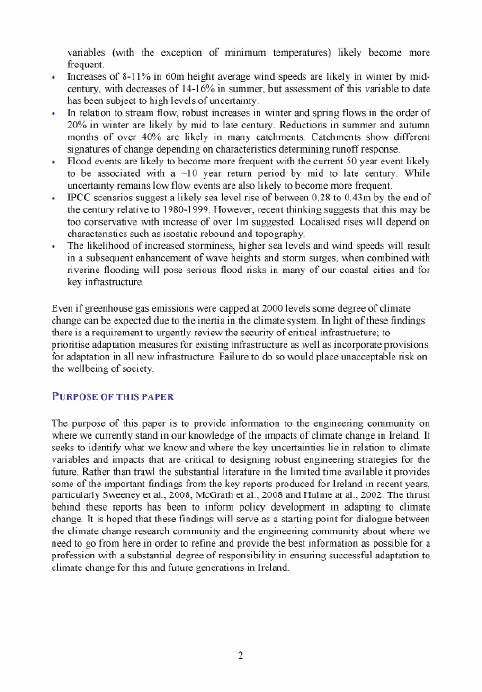

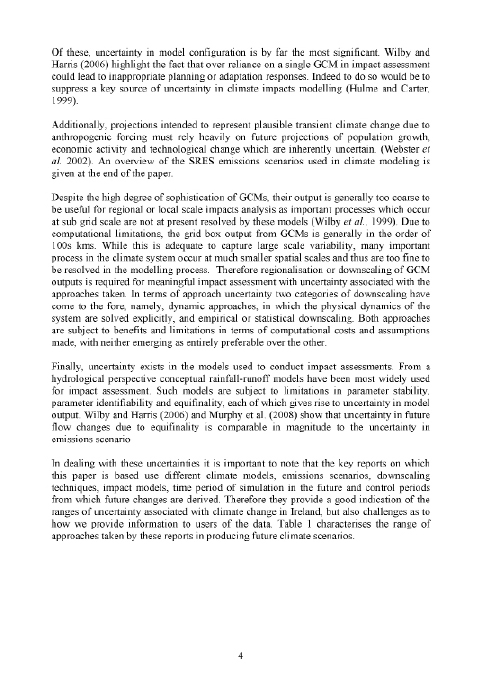

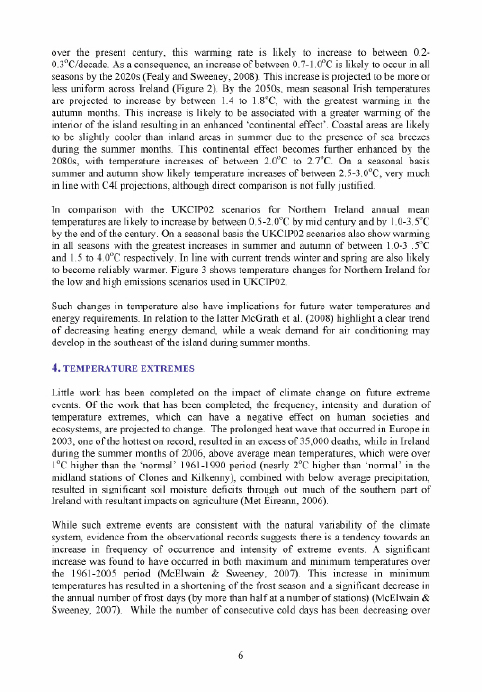


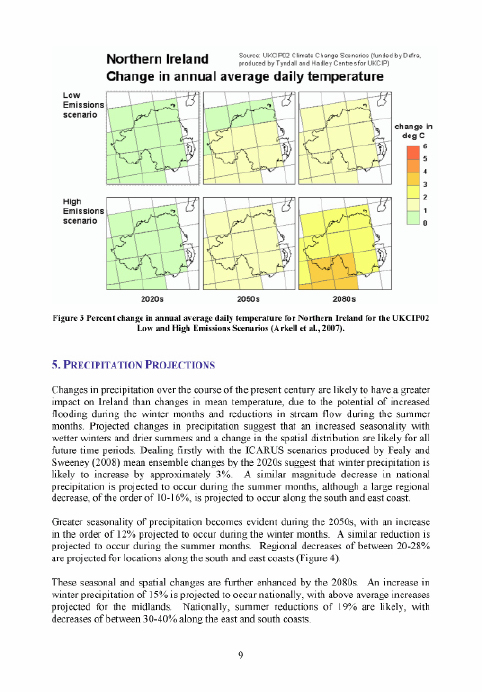
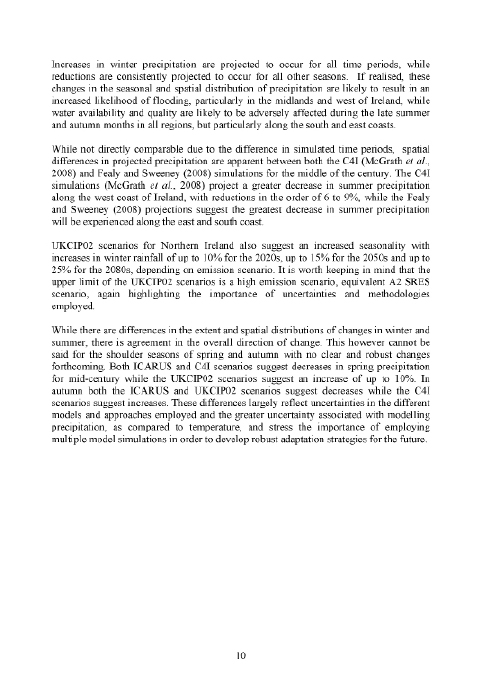


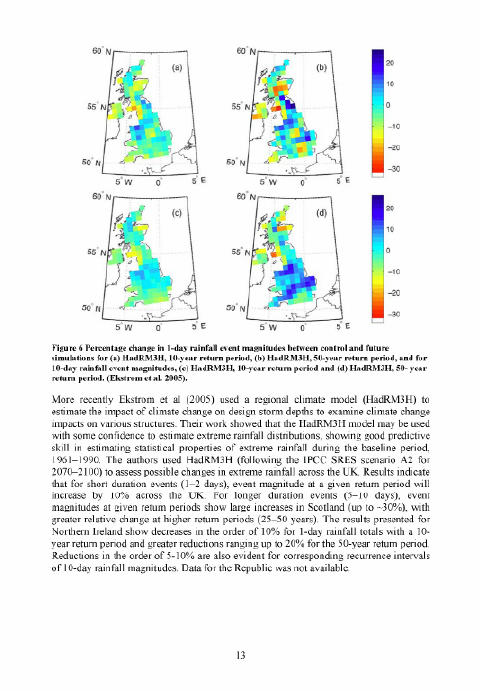
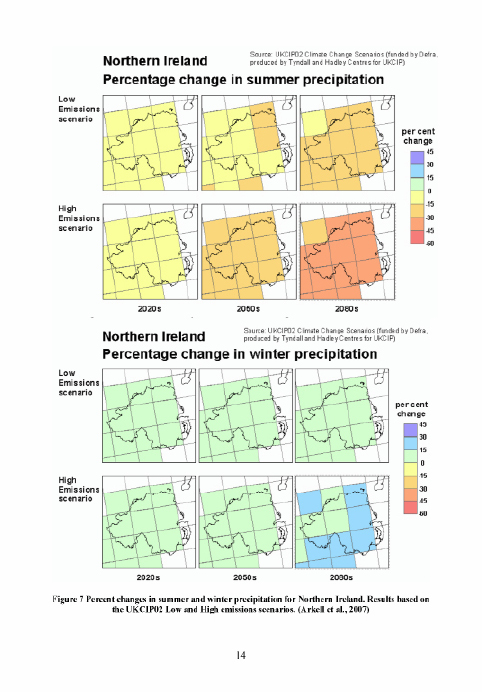

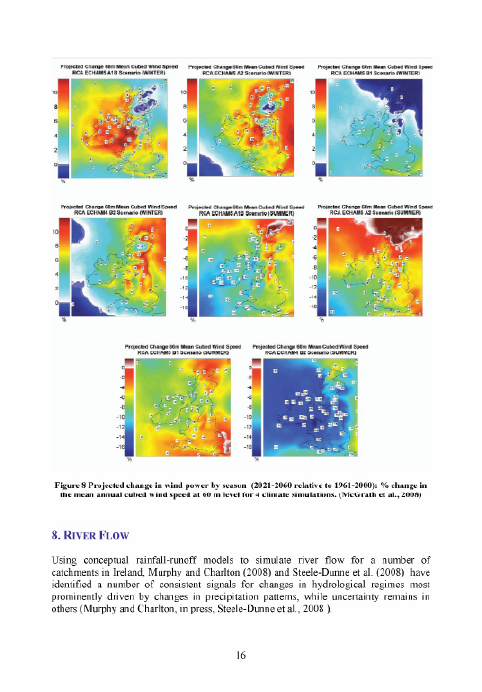
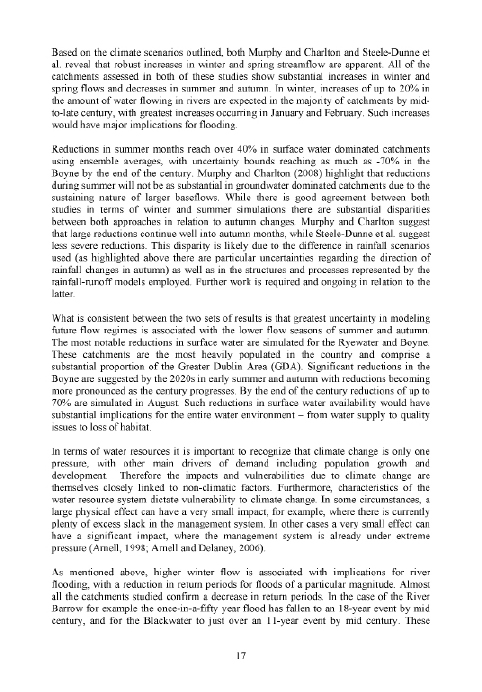
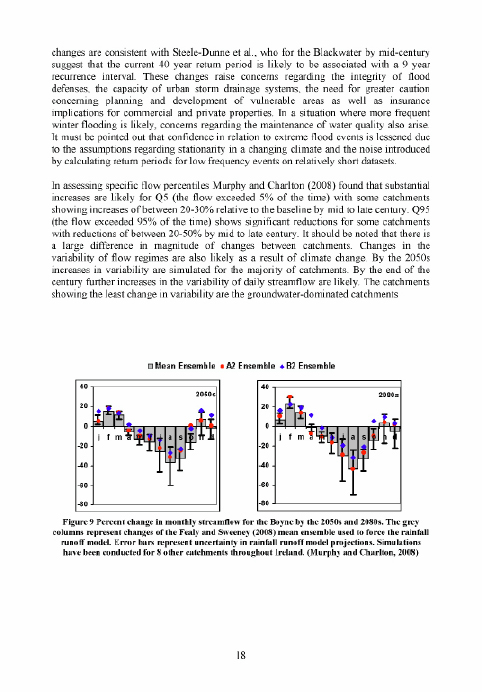

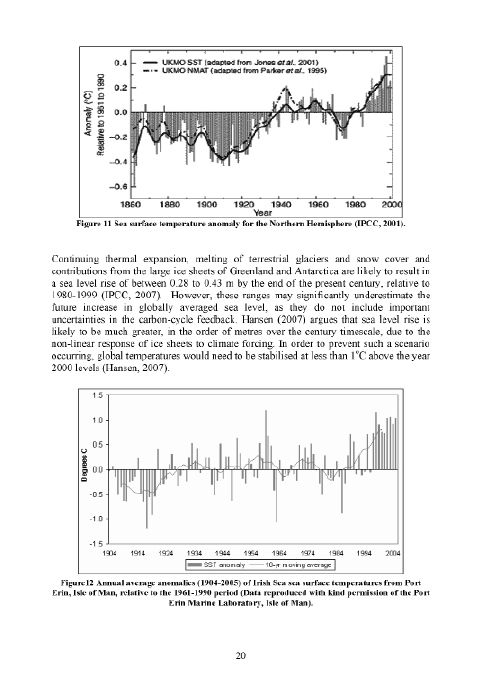


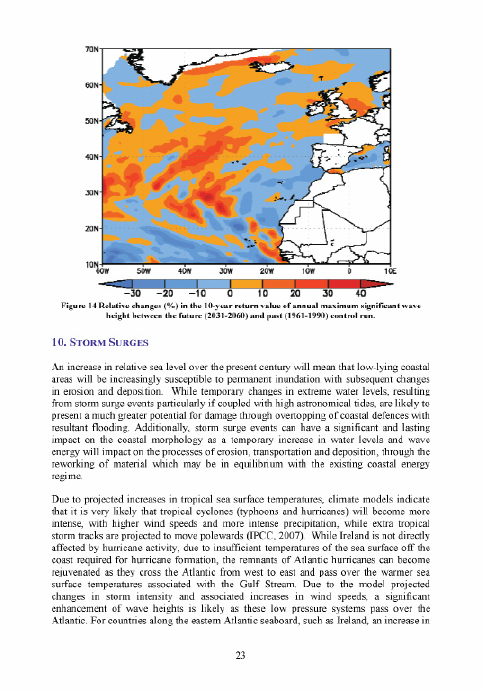
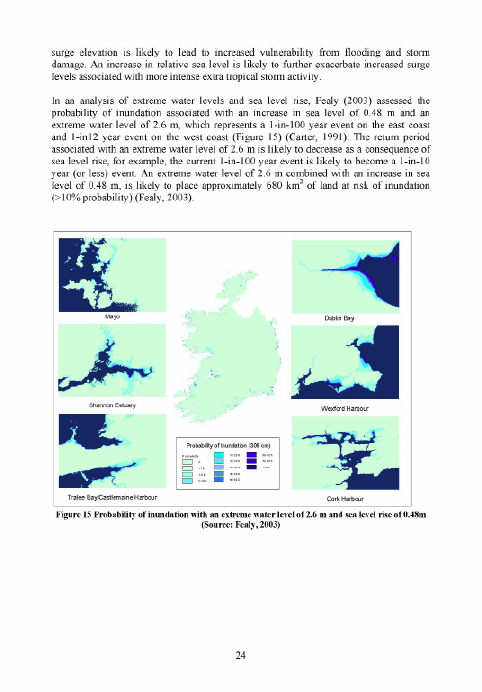
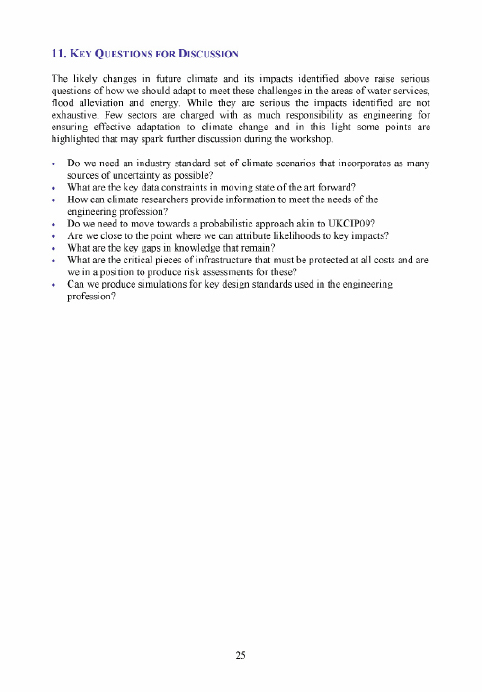
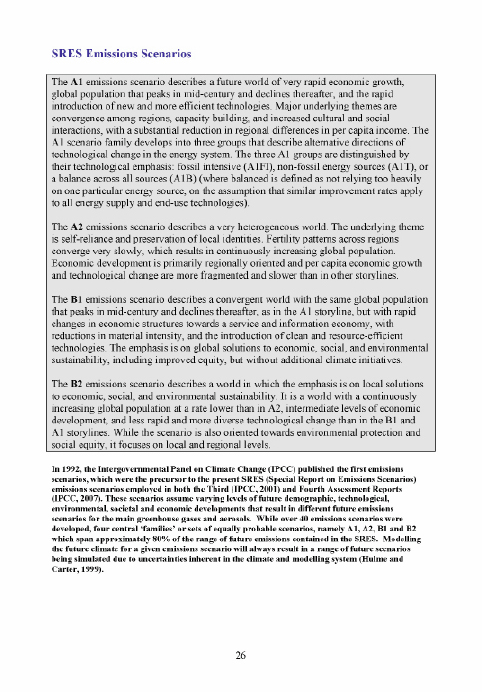
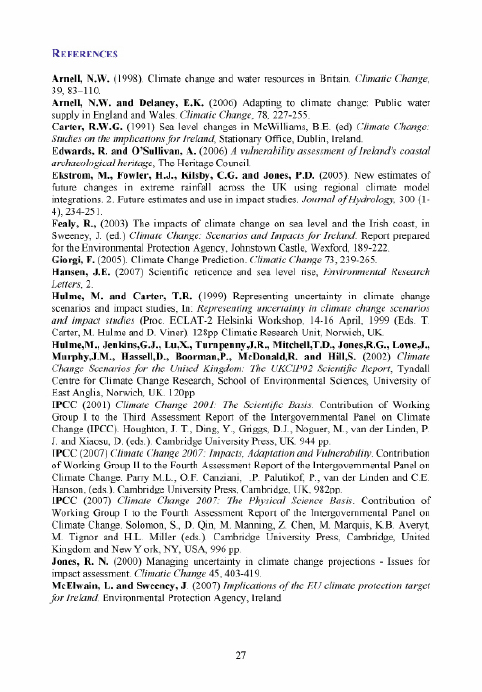
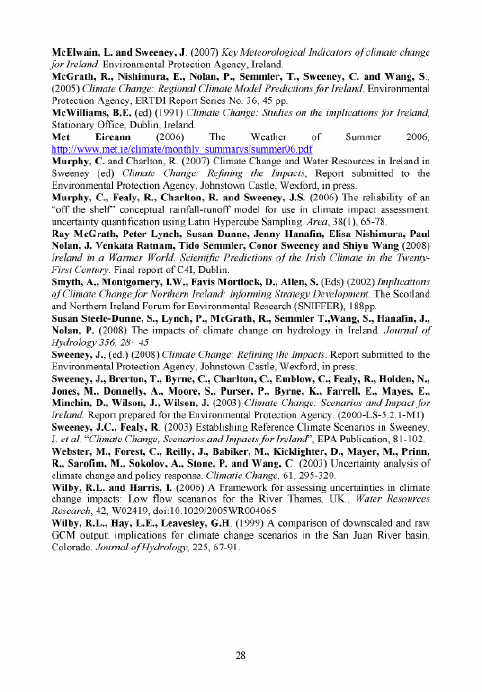
The Irish Academy of Engineering
Critical Infrastructure
Adaptation for Climate Change
Energy Infrastructure
Michael Mackey, Tom Bree,
Head of Engineering Mgr. Environ. Engineering
ESBI Engineering ESBI Engineering
Workshop Dublin Castle: 28th April 2009
Summary
Every day, we hear of new initiatives in the energy sector to mitigate climate impacts. While major changes are underway in energy infrastructure, little attention has been given to climate adaptation.
Ireland’s location in the Atlantic Ocean off Northern Europe has implications for energy supply – we are heavily dependent on import of fossil fuels over long distances, but we have a favourable setting for renewable generation from wind and ocean. The Northern Atlantic is linked to the arctic, where observed rates of change are shown to be faster than the rest of the world. Future energy infrastructure development must therefore address two distinct issues:
- facilitate the exploitation of renewable energy resources
- withstand any environmental impact of climate change
The lead time from planning to operation can be 10 to 30 years in the energy sector. Although this lead time has been reduced significantly in recent years, due primarily to technological advance, projections for energy supply and demand must look forward 20 to 40 years ahead. Plans are heavily dependent on socio-economic factors and on climate change. Latter examples of major impact are flooding of gas network marshalling stations and electricity substations or the destruction due to high winds of electricity lines.
Hence there is a wide range of adaptation issues to be addressed in the energy sector.
These include:
- Socio-economic models and methodologies for integrating adaptation in future demand
- Preparation of wind and wave resource atlases for future scenarios
- Need for climate parameters that will impact on efficiency and capacity factors of energy conversion and storage systems
- Need for adaptation in Codes and Standards for design of power plants, electricity and gas network substations, oil storage and dam safety based on predictions of extreme rainfall, wind, wave and surge - standards that are higher than in most design situations;
- Analysis of the so-called “Water-Energy Nexus", the complex linkage between energy for water/wastewater and water for energy, with changes in rainfall, evaporation, river flows, sea level and surge
- Coastal protection measures at reserve oil storage, pipelines, power generating stations, network substations and seabed cables;
- Bioenergy Action Plan measures accounting for seasonal changes in crop temperature and water cycle.
Measures to address adaptation must be comprehensive and integrated with other sectors, taking account of multiple factors through national and international policies
Introduction
Energy is a vital service for domestic, business, farming and industrial activity. An associated quality infrastructure is essential for Ireland to attract and retain high-tech industrial investment and for the country to have competitive energy supplies and balanced regional development.
Energy asset management and infrastructure planning has to be resilient as it responds to changes in climate and other factors. The long lead-in timescales for major energy infrastructure means that this response must be factored into energy policy, in a manner that accounts for adaptation strategies so that actions are consistent and adaptable.
The objective is to integrate the results of recent climate research in Ireland into the risk reduction strategies of energy planning, operation and maintenance. Existing energy systems in Ireland need to be checked for resilience and flexibility. Priority in energy planning must be given to win-win situations, that is, measures that are robust and flexible enough to cope with changing climate conditions. Irreversible actions are to be avoided.
This paper reviews the issues that arise for the energy sector. It presents a simple ‘climate check’ taking account of significant uncertainty involved in climate change assessment, uncertainty that arises at many levels, from:
- complex climate models at a global level,
- downscaling to the regional level
- local hydrodynamic modelling for water environment
- social and political inputs and assumptions made over the forecast period.
Notwithstanding this uncertainty, the efficiency and effectiveness of investment decisions can benefit from this climate-check. Measures can be said to be ‘climate checked’ rather than ‘climate-proofed’, because of the level of uncertainty involved.
Particular monitoring and research programmes for energy resources and procedures will be required to improve the level of certainty, taking account of additional climate research results as they become available.
Energy Infrastructure – Existing & Planned
Gas Networks
The Bord Gáis Eireann natural gas network consists of 2,169km of high-pressure steel transmission pipelines and over 9,765km of distribution pipelines. The gas network is supplied through three seabed pipelines from Scotland, two to Ireland and one to Northern Ireland. In recent years, the transmission system has been extended to Mayo and North-South and many additional towns are being connected throughout the country.
National Oils Reserve Agency
The National Oils Reserve Agency is the state body responsible for the holding of national strategic oil stocks at a level determined annually by the Minister for Communications, Energy and Natural Resources. Operational stocks in Ireland are held at major ports, at the Whitegate refinery and by large oil consumer companies. Ireland’s IEA Stockholding Requirement for 2008 amounted to 2 million tonnes of Crude Oil Equivalent.
Electricity Networks
The ESB electricity network consists of 150,000km of low and medium voltage networks (mainly overhead lines) and 12,000km of high voltage circuits of which 5,800km relates to the transmission grid and is operated by Eirgrid. In Northern Ireland NIE has 2,100km of transmission network and 42,000km of distribution network. By 2025, the electricity transmission grid will carry 60% more power to cities and towns across Ireland. Eirgrid’s strategy “GRID25" is an essential initiative to facilitate reliable, secure and affordable electricity supplies throughout Ireland. Without it, within the next five to ten years key parts of the grid will have reached capacity with likely overloading increasing risk to supply security. The total expenditure on network capital infrastructure during the period 2001 - ‘10 incl. is €6.5 billion, which is the largest undertaken by any electricity distribution company in Europe.
The demand level forecasts in 2025 are based on the Economic and Social Research Institute’s long-term forecast of moderate growth in economic activity. The projections allow for reductions through energy efficiency and savings and for impacts of climate mitigation such as an increase in the share of electricity in the transport market, through electric vehicles.
Electricity generation in 2020 is projected to maintain present generation from coal, peat and hydro, to phase out oil, to maintain natural gas at about 50% and to increase substantially the amount coming from renewables. Renewable energy will contribute a total of 40% comprising primarily wind power, biomass and a small contribution from ocean energy. Accommodation of wind generation is a significant driver of transmission expansion. Energy storage as a complement to renewable variability is also being evaluated.
General
Contingency plans are in place to mitigate energy supply disruptions in line with Ireland’s EU and IEA obligations.
A comprehensive White Paper was published in 2007 [4], setting out the Government’s Energy Policy Framework to 2020. While climate adaptation is not specifically mentioned, it addresses issues that are relevant under the headings Strategic Goals for Security of Supply and Sustainability of Energy Supply. These are listed below.
Actions to Ensure Security of Energy Supply
- Ensuring that electricity supply consistently meets demand
- Ensuring the physical security and reliability of gas supplies to Ireland
- Enhancing the diversity of fuels used for power generation
- Delivering electricity and gas to homes and businesses over efficient, reliable and secure networks
- Creating a stable attractive environment for hydrocarbon exploration and production
- Being prepared for energy supply disruptions.
Actions to Promote the Sustainability of Energy Supply and Use
- Addressing climate change by reducing energy related greenhouse gas emissions
- Accelerating the growth of renewable energy sources
- Promoting the sustainable use of energy in transport
- Delivering an integrated approach to the sustainable development and use of bioenergy resources
- Maximising Energy Efficiency and energy savings across the economy
- Accelerating Energy Research Development and Innovation Programmes in support of sustainable energy goals.
The “All-Island Grid Study" [9] was published in January 2008. For a range of electricity generation portfolios, it provides a review of theoretical and practicable renewable energy resources and analyses the grid strengthening measures required to support each portfolio. Up to 42% renewables was considered.
In Northern Ireland, Department of Enterprise, Trade and Investment has recently published a Pre - Consultation Scoping Paper, “Northern Ireland Strategic Energy Framework 2009"[5].
The present level of new build and upgrading of energy infrastructure represents a major shift in scale from today’s levels and presents significant challenges to all involved in its delivery. Future infrastructural development will take place in an environment different to todays due to climate change and their delivery must take such changes into account.
Parameters Affected by Climate Change
Summary predictions are presented below for key parameters [6], [7], together with their links to energy infrastructure.
Air Temperatures – linked to higher summer and reduced demand, prolonged growing season for bio energy, drying of peat lands
Temperatures are likely to increase everywhere relative to the present with greatest increases suggested for the summer and autumn of up to 1.2 – 1.4 oC (relative to 200) by 2060 and to 3.4oC by the end of the century. With increases in average temperatures a change in extreme events is to be expected with an increase in the intensity and duration of heatwaves and a decrease in frost occurrence likely.
Sea temperatures – linked to thermal power plant cooling water systems
Sea temperature generally mirrors temperature trends over land. However, over the Irish Sea the satellite measurements suggest a more rapid warming rate (0.6-0.7°C per decade).
Precipitation – linked to hydro, bio energy and energy for water pumping
Precipitation remains an uncertain variable with differences in the extent and spatial distribution of changes between different modeling approaches. A robust signal of increased seasonality is evident with wetter winters and drier summers likely. No clear direction of change is evident for spring and autumn.
Wind speeds – linked to wind power
Increases of 8-11% at 60m height average wind speeds are likely in winter by around mid-century [7], with decreases of between 14-16% in summer but assessment of this variable to date has been subject to high levels of uncertainty [7]. McGrath notes that the Irish observational records indicate that average annual wind speeds decreased in the 1990s, with this trend continuing in the early years of the 21st century.
Sea level rise and storms – linked to seabed cables, coastal power plants and substations on reclaimed land, ocean energy, ports with oil reserves
IPCC scenarios suggest a likely sea level rise of between 0.28 to 0.43m by the end of the century relative to 1980-1999. However, recent thinking suggests that this may be too conservative with increase of over 1m suggested.
The likelihood of increased storminess, higher sea levels and wind speeds will result in a subsequent enhancement of wave heights and storm surges, when combined with riverine flooding will pose serious flood risks in many of our coastal cities.
River flows and flooding – linked to hydro, dam safety, cooling water, water supply
In relation to stream flow robust increases in winter and spring flows in the order of 20% in winter are likely by mid to late century. Reductions in summer and autumn months of over 40% are likely in many catchments. Catchments show different signatures of change depending on characteristics determining runoff response.
Flood events are likely to become more frequent with the current 50 year event likely to be associated with a ~10 year return period by mid to late century. While uncertainty remains low flow events are also likely to become more frequent.
Sunshine/cloudiness – linked to solar thermal and photovoltaics
No significant trends. However, these elements are particularly difficult to model.
Relative humidity – linked to thermal power generation efficiency
No significant trends.
Landuse – biological processes, peat extraction
Changes in species composition are predicted for many habitats, arising from a combination of temperature increase, changes in nutrient cycles and productivity, and soil moisture. Climate change induced drying of heaths and peat lands are likely to increase fire risk. Drying also increases the possibility of wind erosion, particularly on degraded sites, while extreme rainfall events also increase erosion risk and suspended solids loadings to downstream watercourses.
Vulnerabilities
Vulnerabilities are reviewed below in four categories.
Table 4.1 Relative Severity of Climate Change on Energy Infrastructure
| Infrastructure | Relative Severity of Climate Change Adaptation |
| Efficiency and Capacity Factors of Power Generation | Very High |
| Water – Energy Nexus | High |
| Coastal | Medium |
| Networks, Storage | Medium |
Efficiency and Capacity Factors of Power Generation
Significant vulnerabilities relate to power generation.
For fossil-fuelled power plants, optimisation of efficiency of energy transformation from primary energy to electricity is critical to the design and operation, not only from the point of view of economics but also in reducing the amount of carbon and other emissions. The higher the efficiencies of Ireland’s power plants, the fewer plants are needed and total emissions are lower. Rising ambient temperatures reduce efficiency of the necessary air or water cooling systems within the power plants.
In addition, a plant using cooling water from rivers or from the coast has an overall plant efficiency approximately 2-3% higher than air-cooled systems. Water cooling is dependent on mixing in river flows or tidal currents and is subject to environmental constraints such as fisheries movement. A number of power plants on the Danube River shut down during a heat wave across Central Europe in 2003, when river temperatures increased beyond acceptable limits.
The efficiency of intermittent renewable power plants such as wind, run-of-river hydro and wave, will change as changes occur in the average wind speed, river flow and wave height. Increased wind speed can on the one hand lead to greater electricity production from wind turbines, but on the other hand, in storm situations wind turbines must be shut down to avoid storm damage and distribution lines suffer.
Another criterion is power plant capacity factor. This is the annual average output in MWhrs as a percentage of the output if the plant was running continuously. Increased downtime due to extreme weather conditions and to additional maintenance can affect both the efficiency and the capacity factor. For intermittent renewable plants, called non-despatchable plants, there are knock-on inefficiencies in start/stop of other supporting plants.
Energy - Water Nexus
Hydropower will become less efficient as winter flows are increased and summer flows are reduced. Standards for dam safety during extreme floods will need to be reviewed and operating procedures modified. The predicted 40% reduction in low flows will probably mean that other uses will take priority rather than hydropower for large parts of the year, such as public water supply and downstream environmental flows. Cooling water may be subject to constraints as mentioned above. Reduced low flows will also constrain the possible locations of new thermal plants, close to larger rivers where sufficient assimilative capacity is available for effluents.
In the future, substantial energy may be required for increased pumping of water supplies and wastewater systems for populations and industry, due to reduced local low flows. Irrigation pumping may be required. This is practised at present in the low-rainfall vegetable growing region of north Dublin and its widespread use in the future has been mentioned [6]. A higher standard of wastewater and/or sludge treatment may be required which may be energy intensive.
Coastal Infrastructure
Large energy infrastructures are located on the coast, close to jetties for import of oil and coal, and close to cooling water and to centres of population. Oil reserve storage is also on the coast. Most are on reclaimed land. Extensive wave and tidal plants are planned, under test at present off the coast and they are dependent on marine support services from local ports. Seabed cables and pipelines are located on the east coast, across the Shannon Estuary and planned for Co Mayo.
This infrastructure is vulnerable to sea-level rise and especially to storm surge and wave height. One parameter is worth noting in particular - the modelling results indicate an increase in the frequency of storm surge events and a significant increase in the height of extreme surge, with most of the extreme surges occurring in wintertime. There is also some evidence of significant increases in wave height extremes. (The 0.9m height that occurred during the 2002 storms may increase to 1.5m).
Networks and Storage
Higher average temperatures are expected to reduce the need for heating in winter and perhaps increase the need for cooling in summer.
In common with other critical infrastructure, the energy sector has facilities located throughout the country that are vulnerable to flooding and extreme wind loads. These include wind farms, substations, overhead lines, gas stations, oil terminals, offshore drilling rigs, etc. Codes and standards may need to be reviewed, similar to the Pitt Review report and the Energy Networks Association report in the UK, which followed the severe Gloucestershire flood in 2007. This recommended that the 1000-year risk should be considered.
In the longer term, infrastructure reinforcement measures may be required and in extreme scenarios, relocation to more secure locations may be appropriate. Health and safety response policies will be required to deal with catastrophes.
Adaptation Measures
The approach to adaptation in engineering infrastructure could be commenced by:
- Applying a probabilistic approach that provides the basis for a risk assessment due to climate change, with potential constraints on future energy options
- Examining approaches to integrating the impacts of climate change in design
- looking for opportunities to monitor key parameters at existing infrastructure to improve our understanding of climate change trends and impacts.
Plants and networks can be adapted to a certain extent to altered climatic conditions. While the existing energy infrastructure is not expected to be affected by the climate changes expected in the next 20–30 years temperature and sea level rise will need to be addressed. Towards the end of the century the effects will become more pronounced.
Energy infrastructure planning has a lead time of 10 to 30 years. Changes in the next 20 to 40 years are more readily identified than longer-term changes that depend on many social and political assumptions. Changeover and adaptation of plant capacities to address them should be implemented as required.
Predictions indicate that measures are required related to:
- Demand – seasonal changes, irrigation pumping, etc
- Supply – changes to renewable resources, to efficiency and capacity factors of conventional fuel conversion, and to risks at networks and storage facilities
- Local physical setting requiring modifications common to all infrastructure (coast, floodplains).
Measures can be categorised as win-win, no-regrets, regrets, and adaptation actions.
Win-Win Solutions are robust measures in the context of climate change. For example, increasing measures for energy storage provide security of supply and also contribute to climate adaptation.
Table 5.1 Win-Win Solutions
| Measure | Contribution to adaptation to climate change |
| Energy Storage –CAES1, hydro, electric cars | Protection against disruption and extremes |
| Network Renewal/Smart Networks | Facilitates renewables, energy efficiency |
| Increased water Impoundment | Pumping supplied at base load rather than at marginal high-emission supply |
No-Regret Solutions are measures that are robust and flexible enough to be viable under different climatic scenarios and thus will not be affected later by climate change.
Table 5.2 No-Regret Solutions
| Measure | Benefit of measure under changing climate |
| Demand Management | Climate change neutral |
Regret Solutions are measures that bear a high risk of being counter-productive regarding adaptation to climate change, because the adaptive capacity of other sectors is reduced in relation to effectiveness, increases costs, etc.
Table 5.3 Regret Solutions
| Measure | Potential problems under changing climate |
| Siting critical infrastructure in floodplains | Increased flood protection |
Many initiatives in the 2007 Energy Policy White Paper [4] are ‘win-win’ solutions, such as storage for security of supply. This type of analysis highlights the advantages of an integrated approach to energy management within spatial planning and an adaptation strategy. It strengthens future engineering and science policy, linked on climate change by identifying research needs, communicating them to the research community and making best use of available research results.
Interaction with Other Sectors
Management action to address one climate pressure may increase the risk of not achieving objectives for another pressure. Climate change may increase this risk further, highlighting the need for integrated thinking.
Research
Research in adaptation covers a very wide field of problem areas.
The greater part of research efforts up until now have been directed at understanding and describing the impacts of the changing climatic conditions. There has been only limited focus on solutions to the specific challenges connected with future climate change.
Specific research for the energy sector will involve:
- Socio-economic models and methodologies for integrating adaptation in future demand
- Preparation of wind and wave atlases for future scenarios
- Need for identification of climate parameters that will impact efficiency and capacity factors of energy conversion and storage
- Need for adaptation in Codes and Standards for design of structures, power plants, electricity and gas network substations, oil storage and dam safety based on predictions of extreme rainfall, wind, wave and surge - standards that are higher than in most design situations;
- Analysis of the so-called “Water-Energy Nexus", the complex linkage between energy for water/wastewater and water for energy, with changes in rainfall, evaporation, river flows, sea level and surge
- Coastal protection measures at reserve oil storage, pipelines, power generating stations, network substations and seabed cables;
- Bio energy Action Plan measures accounting for seasonal changes in temperature and water cycle.
References
1. Department of Communications Marine and Natural Resources. 2007. Bioenergy Action Plan for Ireland.
2. Department of Environment, Heritage and Local Government. 2007. Ireland - National Climate Change Strategy 2007-2012.
3. Environment and Heritage Service. 2004. Climate change indicators for Northern Ireland.
4. Department of Communications, Energy and Natural Resources (2007). Government White Paper. Delivering a Sustainable Energy Future for Ireland.
5. Department of Energy Trade and Industry, Northern Ireland Strategic Energy Framework 2009
6. McGrath R, Lynch P, Dunne S, Hanafin J, Nishimura E, Nolan P, Venkata Ratnam J, Semmler T, Sweeney C and Shiyu Wang (2008), Ireland in a Warmer World. Scientific Predictions of the Irish Climate in the Twenty-First Century. Final report of C4I, Dublin.
7. Murphy C, Fealy R, (2009) Climate Change: Meeting The Challenge Of Adaptation, Irish Academy of Engineering.
8. SNIFFER (2007). Preparing for a changing climate in Northern Ireland.
9. Sustainable Energy Ireland, ESBI (2008). All Island Grid Study, Workstream 1. Renewable Energy Resource Scenarios.
(Footnotes)
1 Compressed Air Energy Storage
The Irish Academy of Engineering:
Flood Protection Infrastructure

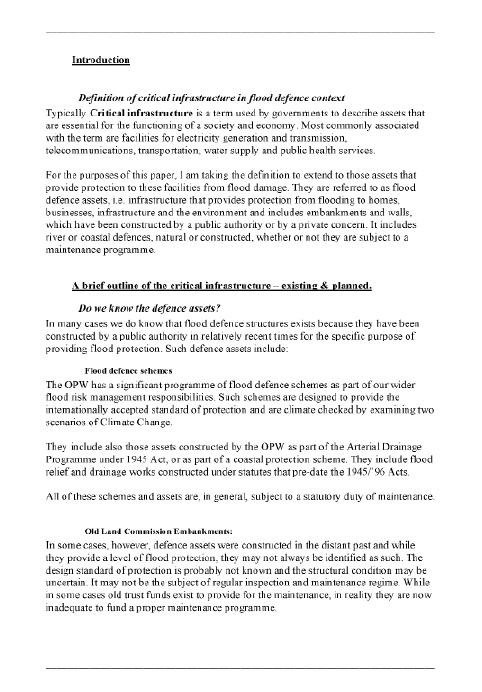

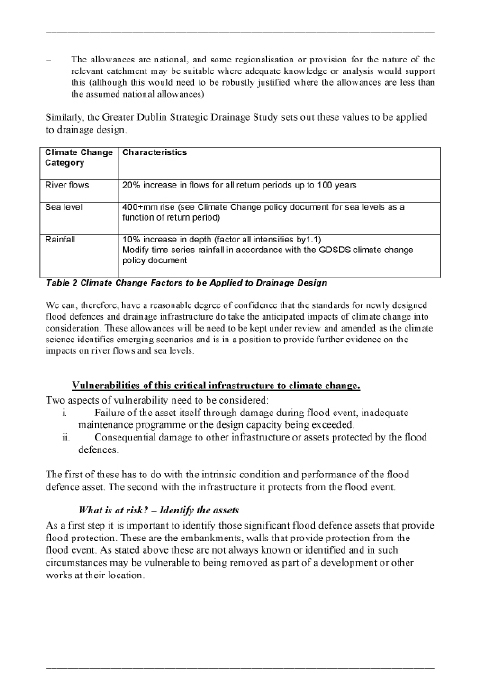

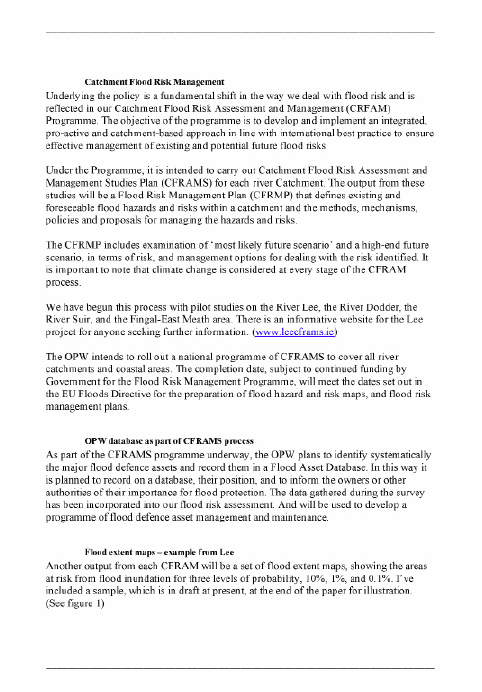
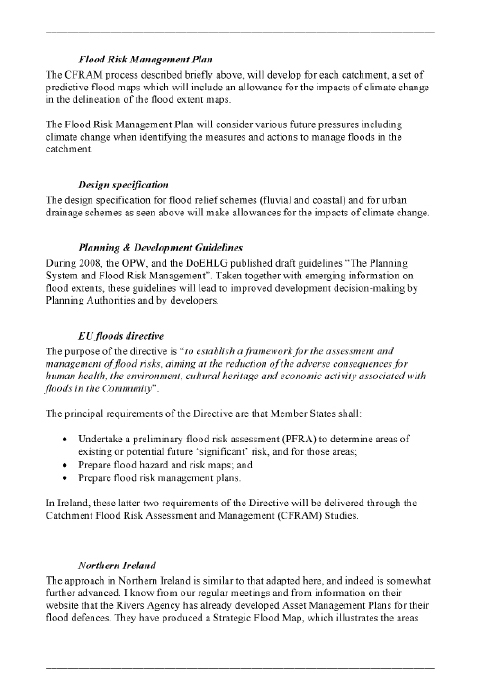

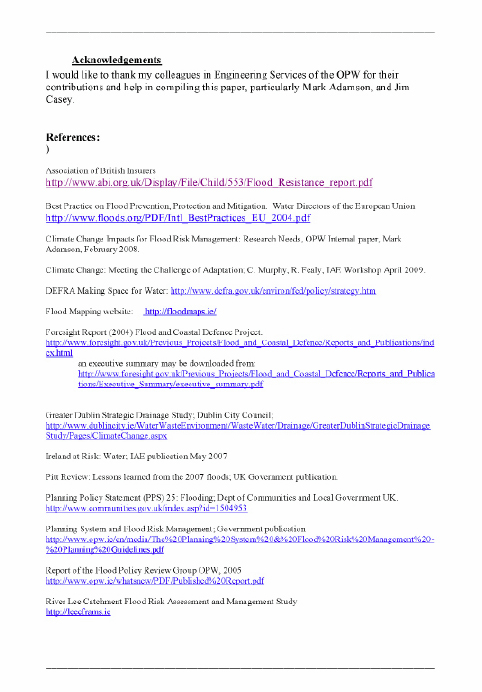

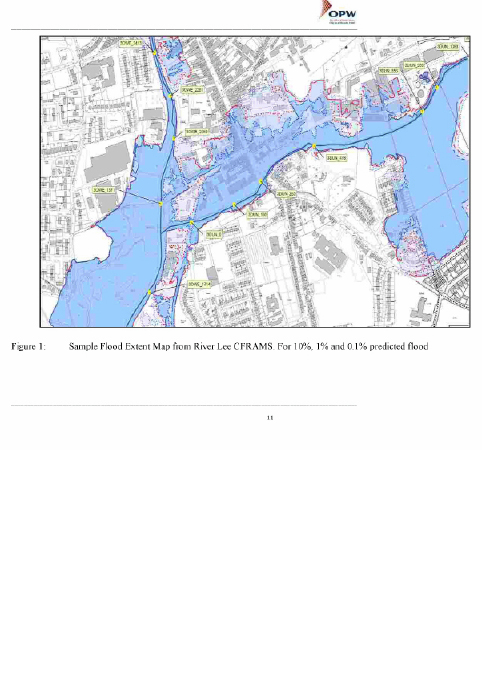
Workshop on “Critical Infrastructure – Adaptation for Climate Change"
Questions for Breakout Sessions
1. What are the critical pieces of infrastructure that must be protected at all costs and are we in a position to produce risk assessments for these and to prioritise required actions?
2. What climate change information do engineering professionals need from researchers or other sources to enable policy makers, planners, designers and those implementing infrastructure projects and adapting existing infrastructure, adequately address the challenges of climate change?
3. How can we ensure that Irish climate change research is as relevant as possible and cost effective?
4. What actions, in priority order, need to be taken and by whom in the short term to enable those involved in planning, designing and implementing critical infrastructure to adequately address the potential medium/long term impacts of climate change? (Highlight say the three most urgent actions).
5. Does climate change present opportunities for Ireland and what adaptation measures are required to maximise these.
6. Any other recommendations?
The Irish Academy of Engineering
Critical Infrastructure - Water Supply
Michael Phillips, Dublin City Engineer
Workshop on:
Critical Infrastructure - Adaptation for Climate Change
Dublin Castle 28th April 2009
Critical Infrastructure - Adaptation for Climate Change
Climate Change and Water
Water is the key to the survival of all human, animal and plant life on this planet. It has the ability to mix with some substances, to corrode others, to operate as a vapour, liquid or solid, and at the same time has extraordinary self-cleaning properties, yet we in Ireland usually take water for granted. That situation will alter, however, as climate change takes effect, and we come to recognise water for the liquid gold it is. As a result, the conservation, use, demand and treatment of water have to be given the most careful consideration in order to ensure a sustainable environment.
The impact of climate change on water resources will become critical for people’s lives and economies. Even if CO2 emissions were stabilised today, the temperature increases and consequent impact on water availability would continue for some decades. The latest assessment report of the intergovernmental Panel on Climate Change (1) projects that global average temperatures in 2010 will be 1.8oC higher than the 1980-2000 average. Meanwhile, the world’s population is expected to increase from the current 6.5 billion to 8 billion in 2020, and hit 13 billion by 2100. While the rate of increase of greenhouse gas emissions depends on global population, and on economic, technological and social trends, the link to population is clearest: the more people there are, the higher emissions are likely to be. The rate of climate change will be determined largely by the USA and the emerging economies of China and India, and what happens in Ireland will have little net effect. Nevertheless, these global trends will affect us and it is prudent that we should plan for the expected changes.
As outlined in the other summary papers here, global climate models are used to forecast the expected climate change and, to predict for Ireland, these models have to be downscaled. The predicted outcome for Ireland for the present century is a temperature rise in excess of 2o, coupled with 11% more rainfall in winter, but 25-40% less rainfall in summer and early autumn. While IPCC scenarios suggest sea levels to rise between 0.28 - 0.43m over the next century (relative to1980 – 1999), recent thinking suggests this may be too conservative with the potential for a one meter rise possible, along with an increase in the frequency and severity of coastal storms (2,3). In addition more frequent and severe droughts, flooding and weather events are to be expected.
The impact of changing farming patterns, possible changes in the hydrological cycle or failure of the North Atlantic Drift (‘gulfstream current’), whether due to natural phenomena or human interference, and the arrival of alien flora or fauna, imported accidentally or otherwise into the country, pose additional threats. Thus Climate Change will, directly and indirectly, impact on every aspect of our daily life, and we will have to adapt over time to these changes. For this long-term adaptation to be sustainable, we need long-term planning of our water resources and to have systems in place to recognise when, where and by how much the change is occurring.
Water Supply Availability
Ireland is fortunate that it is well endowed with water resources, having one of the highest rates of water availability in Europe. Unfortunately, the places where water availability is greatest and where water is most needed tend to be at opposite ends of the country (4)
Most of the eastern half of the country has 750 to1,000 mm of rainfall a year, compared with 1,000 to1,300 mm in the west, and over 2,000 mm per year in many mountainous districts. When evaporative and plant transpiration losses are taken into account, annual effective rainfall is approximately 350 to 550mm in the east, 620 to 820mm in the west, and more than 1,500mm in mountainous areas.
The rain profile and the abundance of surface sources has resulted in over 70% of the population being able to draw its water supply from freshwater lakes, reservoirs and rivers (surface water abstraction). About 30% of water supply sources that abstract more than 10m3/day are derived from groundwater, and many private and agricultural users also depend on groundwater sources (4). This is considerably less than in other countries (e.g. North America 51%, European average75%). Groundwater in Ireland is generally of good quality, requires less treatment, and is cheaper to develop and distribute than surface abstraction. The proportion of water supplied from groundwater is likely to grow as development increases.
The part of the effective rainfall that percolates into the ground to reach the water table is called groundwater recharge. This varies depending on the effective rainfall available, and the geological conditions. Recent research in Ireland indicates that less than 5% of annual effective rainfall becomes groundwater recharge where subsoils comprise thick clay, but can be over 80% where gravels occur. In many areas, particularly the uplands, the bedrock that transmits the groundwater (the aquifer) cannot accept significant quantities of recharging waters due to its poorly transmissive nature. Climate Change will also affect the intensity of the precipitation and this could be critical to the balancing of what is required for groundwater recharge and what runs off into the nearest watercourse
Pollution of groundwater in Ireland tends to be microbiological rather than chemical.
The oceans cover some 70% of the planet; yet deriving potable water from seawater on a commercial basis is relatively recent. As an island, Ireland is ideally located to use such a source and availability and quality are not an issue. Membrane technology and the process of reverse osmosis (RO) have dramatically changed the market, and the price of desalination has significantly reduced in recent years. The main difficulty with membrane technology is the energy required to operate it, and disposal of the brine residue
Adapting to the Future
The most current census gives a population of 5.9 million for the Island of Ireland (5). .It is forecast that there will be 7.8 million people in Ireland by 2026 (6), with the east of the country being the more densely populated. The increase in population together with societies’ increasing dependency on essential services (“always-on" availability) highlights the need to minimise any disruption. This can be achieved through emergency preparedness, contingency planning and investment in critical infrastructure.
For the foreseeable future, water will continue to be abstracted from surface and groundwater sources, with salt or brackish water providing an additional supply in some circumstances. The protection of surface water sources and the increasing demands present challenges. In particular the growth of ‘water thirsty’ crops, and crops grown as biomass or as a biofuel, may increase irrigation needs.
While groundwater currently provides only 30% of Ireland’s water supplies, it is important to note that 70% of Ireland is underlain by ‘poorly productive’ bedrock aquifers – bedrock which is limited in its ability to accept recharge and transmit groundwater laterally. It is critical therefore, that we continue to research the recharge acceptance, storage, capacity, movement and quality of groundwater resources.
Demand is often highest when water is most scarce, so with changing rainfall patterns we may have to investigate the possibility of storing water in times of plenty to meet future demand. Aquifer storage and recovery (ASR) is a technology that may help in some areas to bridge the gap between supply and demand (7)
To date the supply of water in Ireland has been fairly resilient but this cannot be taken for granted. The impact of climate change on weather events, as experienced with floods in recent years, has demonstrated the fragility of the existing infrastructure. Maintaining a specified level of resilience into the future will be complicated by the tendency of the hazard, vulnerabilities and consequences to change over time.
The 2007 floods in the UK had a dramatic effect on electricity power substations, water and wastewater treatment works, and road and rail network. People in recent years have become accustomed to a reliable supply of water and energy and were left feeling exposed and unprepared for the situation when they ceased to function. In total in the UK there were five water and 322 wastewater treatment works affected by the floods. The loss of the Mythe water treatment works deprived 350,000 people of water for up to 17 days. However, it was the “near misses" at various power sub stations, which would have cut off over one million people, that brought home the vulnerabilities of the infrastructural assets (8).
This highlights that there is a need for a more systematic approach into the vulnerability of critical infrastructure and a coordinated approach to improving its resilience. Resilience is considered as the ability of a system or organisation to withstand or recover from adversity, i.e. it is possible to achieve the core activities in the face of adversity through a combination of measures (8).
Demand
The perception of the availability of water is based on the demands for it at a particular time. These demands may originate from a global or national perspective. One such demand is the fact that Ireland, because of its size, must economically be export-orientated in order to ensure economic growth. With a possible population of 8 million by 2026 on the island of Ireland, this means that the demand on available water resources will have to include sufficient flexibility to cater for the uncertainty that global trade introduces to the situation.
In general terms, the population distribution would indicate that approximately 5 million would be along the eastern seaboard and 3 million along the western seaboard (9). At present the population for the Dublin Region is 1.2 million and the daily production of water is 550 Mega litres per day. Assuming adequate sources are available this would mean that facilities would have to double to meet the demand. It is for such a scenario that the design of critical infrastructure would have to cater. Consequently, the loss of an essential service, such as water supply, has the potential to cause greater disruption, economic and social, than might have occurred in the past.
Internationally, Ireland will also be viewed as ‘water rich’ compared with ‘water poor’ developing countries. This could result in increasing inward migration of people and encourage the growth here of ‘water hungry’ crops, such as wheat, the world production of which is decreasing due to water shortages elsewhere. The production of one kilogram of wheat requires 1000 litres of water (10).
Providing water for Ireland’s future population and economic growth will present many challenges. It is not known if there will be adequate water to meet demand, and hence it is critical that we reduce demand in the future. This can be achieved through pricing policies, conservation, harvesting and alternative or even multiple re-uses of non-potable water.
Source
Going forward the resilience of the existing systems need to be proven, as without a water supply the rules of behaviour of society become untenable. Increasing pressure on water sources due to population growth, increase in demand and pollution threats means that a clearly defined approach to protecting future needs is essential. Strategies focused on managing and conserving water, land and biological resources to maintain and restore healthy, effectively functioning and climate change-resilient ecosystems are one way to deal with the impact.
The most critical part of the water supply system is the source. This can be affected in two ways, namely, the quantity and the quality. The changing weather patterns will have a major impact in the medium to long term. On a macro scale more precipitation will occur in the west than in the east of the Country and the more intense storms may have a detrimental effect on storage and soakage due to the speed of run off. The other threat to the availability of water will be the abstraction of it – the volume, location, by whom and for what purpose. Increasing use of irrigation systems in agriculture, if it should occur, will present problems so prioritisation will become an issue.
The quality of Irish Rivers is reported on by the Environmental Protection Agency (EPA). The Water Quality Report 2004 – 2006 (11) states that while pollution in the Eastern half of the country has been substantially reduced it has remained the same in comparison with the previous period. Increases in pollution have occurred in the North Western, Shannon and Neagh Bann River Basin Districts. This report may give cause for concern with the increase in pollution in some locations but the work by the EPA has highlighted that the general deterioration of river quality in Ireland has been arrested and that the sources of pollution are being identified. In the period from 1998 to 2006, the source of pollution for 50% of the rivers was as a result of municipal wastewater discharges. The remaining sources were ascribed mainly to agriculture, forestry and industry.
The implementation of the EU Water Framework Directive, the Flood Directive and the creation of River Basin Management Plans have resulted in an integrated approach to managing the quality of the river catchments (12). This approach will greatly assist in defining acceptable limits and reducing threats to the catchments. In ensuring that the quality of drinking water sources is preserved the competing needs of the towns, in relation to abstraction and wastewater discharges and the agricultural sector in relation to disperse pollution and irrigation will have to be finely balanced. Increasing pressure on future sources from all activities of society heightens the risk of pollution incidents. As a result bankside storage i.e. reservoirs alongside the river will become essential in order to ensure clean raw water while the incident passes the inlet pipe.
The issues going forward are therefore:
- Where will the significant water resources be located?
- How can the resources be quantified and protected for future use in the most sustainable manner?
- How can we develop an effective education programme on demand and re-use for such a long timescale when the majority of people operate on short to medium term plans and have entrenched views on issues such as the re-use of treated effluent? How can the current institutions be utilised or modified to prepare a strategy to reduce uncertainty, and integrate the outcome into medium-term strategies for the future?
Infrastructure
The majority of water supply systems in Ireland are, with the exception of the very large urban areas, small and discrete. The treatment of water to current standards throughout the country has only commenced since joining the EU in 1973. Prior to this time while a supply system existed for many towns there was a very basic treatment available and no treatment where group water schemes existed. As a result infrastructure in the form of integrated treatment works, large pipelines, storage reservoirs are only located close to the large urban areas. There is no interconnection between these networks e.g. Dublin is not connected to Waterford or Cork to Limerick.
The infrastructure for a water supply system generally consists of a treatment works, large water carrying (arterial) mains to convey the water to the town or city, storage reservoirs on the perimeter of the urban area and then distribution mains to deliver to the houses. Pumping stations may or may not be required depending on the contours of the supply area.
In an ideal situation every location in a town or city should be capable of being supplied from more than one source The Dublin region, at present, does not have the interconnecting pipework to ensure continuous supply when watermain bursts occur. Moreover, in the Dublin Region production and demand are, and have been for many years, finely balanced. While storage reservoirs that can provide from 24 hours to potentially three days storage do exist in the Dublin area it has been necessary to carry out a strategic storage study in order to cater for increased demand in recent years. It has identified the need for additional storage capacity in the region.
Connections are provided to towns on route from the raw water reservoir/treatment works to the large urban area e.g. Bray is connected to the Dublin City supply as it is located on the route from Roundwood Treatment Works to the City.
Ireland is a small country in infrastructural terms, when you consider that gas pipelines originating in Siberia transfer gas throughout Europe. Thus a decision on the necessity of transporting water around the country in order to ensure continuity of supply is not technically difficult but it would be costly and is it sustainable? In recent years in order to conserve water a programme of leakage reduction through the rehabilitation of water mains has been implemented. In the Dublin area an investment of €10 million will replace approximately 10 kilometres of pipeline however it is estimated that 800 kilometres of watermains are over 80 years old. This gives an indication of the scale of investment that is required when infrastructure needs are considered on a national basis. The availability of finance for investing in critical infrastructure is recognised as an issue in other countries as well (13).
The factor that all treatment works and pipelines have in common is an energy requirement. While some of the plants have generating units (e.g. hydro) the majority have a single source of energy from the national grid. Levels of back up from standby generators would only exist on plants close to the large urban areas. While Dublin City is fortunate, in so far, that 80% of its water is transported by gravity from the treatment works in Kildare and Wicklow the majority of other areas require pumps at source and sometimes in-line to ensure adequate pressures and flows. Thus the availability of adequate energy sources is probably the most critical element after source protection in ensuring the delivery of potable water. In smaller areas the availability of mobile generators may be more feasible. These issues would be included in current risk registers for all plants
In modern times the treatment of water has become quite sophisticated and the resources needed to man it require detailed training. While the large urban areas, due to their scale, can afford to have adequate resources to enable a treatment works to continue operating if subjected to damage from a disaster the availability of personnel in less densely populated areas may present difficulties if it is necessary to maintain a supply. It is essential therefore that such risks are mitigated against and that those personnel have the best available skillsets to manage the situation.
The following are some of the other factors that will impact on the infrastructure:
- Pipe systems will be more prone to cracking due to greater soil movement from wetting and drying cycles
- Assets on flood plains will be at increased risk from flooding, storm damage, coastal erosion and rises in sea level.
- Existing sewerage was not designed to cater for the expected more intense rainfall which is likely to exceed the capacity of parts of the network and cause local flooding.
- Dams will be more prone to siltation resulting from increased soil erosion or overtopping due to storms.
- Bankside storage required to ensure continuity of raw water supply
International Situation
The EU Commission has also published a green paper on Critical Infrastructure Protection, (14,15,16,17) which outlines the options on what would enhance prevention, preparedness and response to the Union’s critical infrastructure protection. It states that the effective protection of critical infrastructure requires communication, coordination, and cooperation nationally and at EU level among all interested parties – the owners and operators of infrastructure, regulators, professional bodies and industry associations in cooperation with all levels of government and the public.
The destruction or disruption of infrastructure providing key services could entail the loss of lives, the loss of property, a collapse of public confidence and morale in the EU. Any such disruptions or manipulations of critical infrastructure should to the extent possible, be brief, infrequent, manageable, geographically isolated and minimally detrimental to the welfare of the Member States, their citizens and the European Union (18).
The EU has also produced a white paper in 2009 –“Adapting to climate change: Towards a European framework for action"(12,19) The EU’s objective is to improve resilience to deal with the impact of climate change. It also adopts a phased approach. The intention is that Phase 1 (2009 – 2012) will lay the groundwork for preparing a comprehensive adaptation strategy to be implemented during phase 2 in 2013.
One of the proposals in the paper is to establish a “Clearing House Mechanism" as an IT tool and database. This database would capture the considerable amount of information and research, which already exists, but is not shared across Member States. Such a database could be crucial in developing critical infrastructure strategies and improving its resilience.
The EU recognises that due to the variability and severity of climate impact most adaptation measures will be taken at national, regional and local level. However these measures can be supported and strengthened by an integrated and coordinated approach at EU level (18). For this reason the EU seeks to reduce the impact of disasters within the EU by:
- The development of knowledge based disaster prevention policies at all levels of government
- Linking relevant actors and policies throughout the disaster management cycle
- Improving the effectiveness of existing policy instruments with regard to disaster prevention.
The UK published a National Security Strategy in 2008, which covers not only security threats but also transnational crime, pandemics and flooding. The strategy includes the compilation of a national-level risk register setting out its assessment of the likelihood and potential impact of the range of different risks that may affect the UK. It is the intention that prompt action and improved prevention will be achieved through partnership between the public and private sectors (8).
Water UK, the association of water companies in the UK, commissioned its own report on the floods of 2007 in order to ensure that climate change and extreme events are taken into consideration in their flood risk management and in the protection of critical water infrastructure (20).
The United States launched a National Infrastructure Protection Plan (NIPP) in 2006 This provides for a coordinated approach to critical infrastructure protection, setting out national priorities, goals and requirements for effective distribution of funding and resources to ensure continuity in the event of an attack or disaster (8).
In addition the various water associations have implemented amongst the utilities the concept of “Utilities Helping Utilities". This proposal encourages utilities and local/state governments to establish intrastate mutual aid and assistance networks. The concept is about creating an opportunity to enhance water and wastewater utility resilience in response to disasters during the response and the recovery phases. An agreement is designed to provide a mechanism whereby water/wastewater utilities that have sustained damages from natural or man-made events could obtain emergency assistance in the form of personnel, equipment, materials and other associated services as necessary, from other water/wastewater utilities (21).
The Netherlands has also taken a systematic and coordinated approach to tackling potential disruption to critical infrastructure. They have established a project, Protection of Vital Infrastructure, which aims to develop an integrated package of measures to protect infrastructure in both the private and public sectors from security threats, accidents, and extreme natural phenomena (8).
Conclusion
This highlights the fact that the identification and role of critical infrastructure is given serious consideration in most developed economies today. In the current environment of uncertainty, how can we assess decisions across a 20,30, or even 40-year time horizon? At present when we make a decision in relation to infrastructure in Ireland, it may take up to 10 years to implement. How can we create more certainty? Is this a situation of creating scenarios, which would illustrate the potential political and societal situation in 50 years and then test our decisions against those scenarios? (22). The challenge is not only to develop a better understanding of the known hazards but also the changing and newly emerging vulnerabilities and consequences of loss as well as their interrelationships (8). Whatever decision is arrived at in relation to the role of critical infrastructure and drinking water it might behove us to remember
An ounce of prevention is worth a pound of cure.
- Benjamin Franklin.
References
1. Climate Change and Water; IPCC Technical Paper VI, June 2008 http://www.ipcc.ch/ipccreports/tp-climate-change-water.htm
2. Climate change: Meeting the Challenge of Adaptation ; C. Murphy, R. Fealy, IAE Workshop, April 2009
3 Sea level could rise more than a metre by 2100; David Adam, The Guardian Newspaper, 11th March 2009
http://www.guardian.co.uk/environment/2009/mar/11/sea-level-rises-climate-change-copenhagen
4 Ireland at Risk - Water; IAE Publication, Parts 1,5,6, May, 2007,
5 http://www.cso.ie/newsevents/pr_northsouth_08.htm (accessed 18th April 2009).
6 http://www.cso.ie/releasespublications/reg_pop_projections.htm (accessed 18th April 2009).
7 Water reclamation technologies for safe artificial groundwater recharge; http://www.reclaim-water.org/ (accessed 20th April 2009).
8 The Pitt Review: Lessons learned from the 2007 floods; Section 5, Chapters 14 – 19, UK Government Publication.
9 “Dublin at the Crossroads" Event; The Futures Academy, DIT, Dublin, http://www.thefuturesacademy.ie/latestnews
10 The No-Nonsense Guide to Climate Change; D. Godrej, New Internationalist Publication.
11 Water Quality in Ireland 2004 – 2006; EPA Report.
12 Adapting to climate change: Towards a European framework for action: EU SEC(2009) 386/2, Commission Staff Working Document.
13 The Economics of Climate Change: The Stern Review; Stern N., Cambridge University Press, 2007
14 Prevention, preparedness and response in the fight against terrorism: the Commission launches a Green Paper on “Critical Infrastructure Protection"; EU Press, memo/05/441, Nov. 2005
15 The European Programme for Critical Infrastructure Protection (EPCIP); EU Press, memo/06/477, Dec 2006
16 Commission proposes a new information – tool at EU level to better protect critical infrastructure; EU Press, IP/08/1586, Oct 2008
17 Critical Infrastructure Protection; EU Press, IP/08/899, June 2008
18 A Community approach on the prevention of natural and man-made disasters: Com (2009) 82
19 Adapting to climate change: Towards a European framework for action; Com (2009) 147.
20 How the water industry is adapting to climate change; Water UK, December 2008.
21 http://www.awwa.org/files/Advocacy/Govtaff/Documents/Utilities_Helping Utilities.pdf (accessed 10th April 2009)
22 Shaping Planning for the 2050’s; Dinnis C.,Curry A.,Weatherhead K., Jeffery P.; Water 21, (IWA Journal), April 2009.
Research Paper – ‘Climate Change
Policy Framework in NI’
Jeff Mochan, Research Officer
14 May 2009
The purpose of this note, prepared for the Committee for the Environment, is to identify the current policy frameworks in the NI Executive and its Departments to mitigate and adapt to the impacts of climate change.
Sustainable Development Strategy
The NI Sustainable Development Strategy[1] was published by the SoS in May 2006. It was intended to represent ‘our first steps in establishing the focus for tackling the challenges ahead toward our long term objective of securing a better future for the present generation and protecting the future for generations to come’.
The strategy dealt with 6 main themes/policy areas as outlined below:
Sustainable consumption and production
Vision: NI as a one planet economy.
Strategic objectives:
- To become more resource efficient.
- To make the NI public sector a UK regional leader in sustainable procurement.
- To minimise the unsustainable impacts of consumption.
Natural resource protection and environmental enhancement
Vision: NI has a diverse, healthy and resilient natural environment.
Strategic objectives:
- To conserve our landscape and manage it in a more sustainable way.
- To protect and enhance the freshwater and marine environment.
- To improve our air quality.
- To conserve, protect, enhance and sustainably re-use our historic environment.
- To protect and enhance biodiversity.
Sustainable communities
Vision: NI is built around a network of sustainable communities encompassing urban and rural areas, where existing settlements and any new developments are designed to be more sustainable.
Strategic objectives:
- To increase the economic well-being of the people of NI.
- To create an attractive, high quality environment where people feel safe and which provides the conditions for health and social well-being.
- To promote the development of community engagement, civic leadership and responsible citizenship.
Climate change and energy
Vision: NI adapts to the impacts of climate change and operates as a highly energy efficient society using a sustainable energy system.
Strategic objectives:
- To reduce greenhouse gas emissions, principally by promoting energy efficiency and the use of renewables.
- To establish NI as a world class exemplar in the development and use of renewable energy.
- To plan and prepare for climate change impacts in NI.
Learning and communication for sustainable development
Vision: An informed society, committed to the co-ordinated pursuit of sustainability.
Strategic objectives:
- To provide access for all citizens to gain sustainable development skills and knowledge.
- To bring about the behavioural changes necessary to progress towards a sustainable society.
Governance and sustainable development
Vision: Good governance enjoys a strong relationship with its social partners and supports a thriving, innovative and sustainable business community.
Strategic objectives:
- To mainstream sustainable development across Government.
- To strengthen the network of accountability for governance for sustainable development.
Programme for Government
The Programme for Government (PfG)[2] was published by OFMDFM, on behalf of the Executive, in May 2007. It was intended to set out ‘our plans and priorities for 2008-2011 as well as some of our longer term aspirations and intentions’.
In its foreword and introduction, the PfG states that:
- We will work together to address the key challenges we face and build a shared and better, and more sustainable future for all our people.
- We aim to build a prosperous, fair and inclusive society, supported by a vibrant and dynamic economy and a rich and sustainable environmental heritage.
In its strategic priorities, the PfG states that:
- Our over-arching aim is to build a peaceful, fair and prosperous society in NI, with respect for the rule of law and where everyone can enjoy a better quality of life now and in years to come.
- We must also do this in ways that protect and enhance the physical and natural environment and use resources as efficiently and sustainably as possible.
- It is also imperative that economic growth and wealth creation are taken forward in a manner which is fair and sustainable if we are to meet the needs of today, as well as those of future generations.
Sustainability is 1 of 2 cross-cutting themes in the PfG, which states that:
…..building a sustainable future will be a key requirement for our economic, social and environmental policies and programmes. We will ensure that the principles of sustainability…..underpin our approach to all our activities. As an Executive, we will demonstrate our commitment to sustainability through the decisions and actions that we take and will work in partnership with others outside government to promote a wider understanding and knowledge of the issue.
The PfG priorities provide a framework to address the key social, economic and environmental challenges we face. The following priorities are relevant to climate change:
- Priority: Growing a dynamic, innovative economy. The PfG states that this will require investment in our infrastructure, driving forward social transformation and environmental improvement.
- Priority: Protect and enhance our environment and natural resources. The PfG states that:
- There are recognised links between a healthy environment, a thriving economy and a high quality of life.
- Action is needed to protect and enhance our environment for future generations.
- It is clear that climate change is one of the most serious problems facing the world. While we recognise that it requires action internationally, we are determined to play our part in addressing this challenge by reducing our impact on climate change.
- At a local level, therefore, action is needed to protect our built heritage, our landscape and marine environment and to reduce our impact on climate change.
- This Executive recognises the importance of Sustainable Development, encompassing economic, social and environmental considerations.
- Priority: Invest to build our infrastructure. The PfG states that:
- Considerable investment is needed in our infrastructure. Over recent decades, such investment has not been given the required priority and we now have major deficiencies in key areas.
- This limits our capacity for further fair economic and social development and undermines our ability to safeguard our environment and comply with key EU Directives.
The Public Service Agreements in the PfG are the detailed directions and guidance given to Departments to achieve their desired outcomes. Not all PSAs have obvious implications for climate change, but many have at least indirect influence.
Note that it might be worth considering how PSAs can also bring unintended negative outcomes, and if they represent the best way to achieve intended positive outcomes. Thus, when scrutinising the PSAs, consideration could be given to sectoral contributions to greenhouse gas emissions and the direction/guidance outlined above in the Sustainable Development Strategy and PfG. For example:
- In productivity growth (PSA 1), promoting a competitive and outward looking economy brings obvious financial and social benefits in employment, but if NI exports goods to global markets while importing similar goods for local consumption then this might involve an unnecessary carbon cost to the economy. If, however, it involved research, development, manufacturing and export of ‘green technologies’, it could represent a ‘win-win’ situation.
- In tourism (PSA 5), enhancing NI’s tourism infrastructure also brings obvious financial and social benefits in employment, but if NI achieves that through more high-carbon infrastructure (such as more/bigger airports) then this might involve an unnecessary carbon cost to the economy, social costs to the population and degradation of the very qualities which attracted tourists in the first place. If, however, it involved development of ‘green tourism’, it could represent a ‘win-win’ situation.
- In making peoples’ lives better (PSA 7), reducing levels of fuel poverty by implementing energy efficiency measures directly benefits those living in fuel poverty while also reducing the climate change implications of energy inefficient housing.
- In improving the transport infrastructure (PSA 13), improving the strategic road network brings obvious benefits for business and social mobility, at least in the short term, but if it does so by encouraging more cars onto the roads it might just exacerbate problems of carbon emissions, pollution and congestion while diverting possible funds from lower-carbon alternatives. If, however, those roads were improved while increasing priority for public transport or car-sharing, for example, it could represent a ‘win-win’ situation.
The PSAs with relevance to climate change are outlined below:
PSA 1: Productivity growth
- Objective 1: Promote a competitive and outward looking economy. (DETI)
- Objective 3: Ensure a modern sustainable economic infrastructure to support business. (DETI)
- Objective 7: Improve the Strategic Road Network by the advancement/ completion of a range of major works schemes. (DRD)
PSA 3: Increasing employment
- Objective 4: Promote business growth. (DETI)
PSA 4: Supporting rural businesses
- Objective 1: Support the development of rural businesses. (DARD)
- Objective 3: Support environmentally sustainable land management. (DARD/DoE)
PSA 5: Tourism
- Objective 1: Enhance NI’s tourism infrastructure. (DETI/DCAL)
- Objective 2: Promote the growth of the tourism sector. (DETI)
PSA 7: Making peoples’ lives better
- Objective 4: Reduce levels of fuel poverty. (DSD)
PSA 11: Driving investment and sustainable development
- Objective 2: Regenerate former military sites to promote economic growth and for the benefit of local communities. (OFMDFM/DSD)
- Objective 3: Coordinate delivery of the Sustainable Development Strategy. (OFMDFM)
- Objective 4: Support the wider Public Sector in taking account of sustainable development principles when procuring works, supplies and services. (OFMDFM/DFP)
PSA 12: Housing, urban regeneration and community development
- Objective 1: Provide access to decent, affordable and energy efficient housing. (DSD)
- Objective 2: Regenerate disadvantaged urban areas. (DSD/DE/DHSSPS/ DEL/DETI/OFMDFM)
- Objective 3: Promote viable and vital towns and city centres, helping to create shared spaces that are accessible to all and where people can live, work and socialise. (DSD/DCAL)
- Objective 5: Promote strong, integrated sustainable communities where people want to live, work and socialise. (DSD)
PSA 13: Improving the transport infrastructure
- Objective 1: Improve the Strategic Road Network by the advancement/ completion of a range of major works schemes. (DRD)
- Objective 2: Maintain the road infrastructure to keep it safe, effective and reliable through resurfacing, surface dressing and the timely repair of road defects. (DRD)
- Objective 3: Promote increase in usage of public transport. (DRD)
PSA 14: Promoting safer roads
- Objective 2: Contribute to safer roads, using a range of initiatives, including road safety engineering, traffic calming and further enhancement of the pedestrian and cycling network. (DRD)
PSA 15: Water and sewerage infrastructure
- Objective 3: Acceptable levels of compliance with EU requirements and other relevant standards and targets by 2010. (DRD)
PSA 17: Rural infrastructure
- Objective 1: Improve rural infrastructure. (DARD)
PSA 22: Protecting our environment and reducing our carbon footprint
- Objective 1: Take forward strategic action to improve air quality and reduce our carbon footprint. (DoE/DETI/DSD)
- Objective 2: Promote energy efficiency and the use of renewable energy. (DETI)
- Objective 3: Improve the quality and ecological status of the water environment. (DoE/DCAL/DARD)
- Objective 4: Take forward action to improve air quality. (DoE/DHSSPS/DETI)
- Objective 5: Promote waste management and reduce the annual tonnage of controlled waste illegally disposed. (DoE)
- Objective 7: Conserve NI’s bio-diversity. (DoE)
- Objective 8: Deliver a modern effective planning system which meets the needs of the whole community and the economy while protecting the environment. (DoE)
PSA 23: Managing the risk of flooding from rivers and seas
- Objective 1: Deliver sustainable flood risk management policies to meet society’s social, environmental and economic needs. (DARD)
- Objective 2: Implement the requirements of the European Directive for the assessment and management of flood risks. (DARD)
- Objective 3: Reduce the number of properties at risk of flooding from rivers and the sea. (DARD)
- Objective 4: Maintain flood defence and drainage infrastructure in a satisfactory condition. (DARD)
DEPARTMENTAL PRIORITIES
Most, if not all, Departments have some policies on climate change. It can be argued, however, that these policies will have little positive influence on climate change unless they are reflected in the core activities of the Department.
The top-level direction statements of the Executive Departments are outlined below:
OFMDFM[3]
Purpose: to set a central overarching vision for government
Strategic objectives:
- Supporting Ministers and the institutions of government.
- Building a PfG and modernising government programme.
- Promoting better community relations, a culture of equality and rights.
- Targeting social need and promoting social inclusion.
DARD[4]
Vision: a thriving and sustainable rural community and environment in NI.
Strategic goals:
- To improve performance in the market place.
- To strengthen the social and economic infrastructure of rural areas.
- To enhance animal, fish and plant health and welfare.
- To develop a more sustainable environment.
DCAL[5]
Vision: a confident, creative, informed and vibrant community.
Goals:
- Enable as many people as possible to experience and appreciate the excellence of our cultural assets.
- Promote creativity and innovation and lifelong learning.
- Encourage respect for and celebration of diversity.
- Ensure the sustainable management of our cultural infrastructure.
- Develop and deliver quality cultural products and services.
- Reform and modernise our service delivery.
DE[6]
Vision: to educate and develop the young people of NI to the highest possible standards, providing equality of access to all.
Strategic aims:
- Valuing education.
- Fulfilling potential.
- Promoting equality and inclusion.
- Resourcing education.
DEL[7]
Aim: to promote learning and skills, to prepare people for work and to support the economy.
Objectives:
- To promote economic, social and personal development through high quality learning, research and skills training.
- To help people into employment and promote good employment practices.
DETI[8]
Goal: to grow a dynamic, innovative economy.
Priorities:
- Productivity Growth - improve manufacturing/private services productivity.
- Increasing Employment - raising employment levels.
- Tourism - develop the tourism sector.
DOE[9]
Aim: to improve the quality of life for everyone in NI through promotion of sustainable development principles in all the activities of government and wider society, reduction of road traffic casualties and promotion of efficient and effective local government.
Objectives:
- To protect, conserve and enhance the natural environment and built heritage.
- To improve the quality of life of the people of NI by planning and managing development in ways which are sustainable and which contribute to creating a better environment.
- To reduce road casualties.
- To support a system of Local Government which meets the needs of residents and ratepayers.
DFP[10]
Vision: Leading reform, delivering value and promoting sustainability
Departmental Objectives:
- To prioritise the use of resources available to NI, ensure that these are used efficiently and secure the reform and modernisation of public services.
- To deliver efficient and cost effective services to the public in the Department’s areas of executive responsibility.
DHSSPS[11]
Mission: to improve the health and social well-being of the people of NI.
Main responsibilities:
- Health and social care, which includes policy and legislation for hospitals, family practitioner services and community health and personal social services.
- Public health, which covers policy, legislation and administrative action to promote and protect the health and well-being of the population.
- Public safety, which covers policy and legislation for fire and rescue services.
DRD[12]
Vision: a region with modern, safe and sustainable roads, transport and water services which meet the public need.
Key objectives:
- Supporting the economy by maintaining and developing safe and sustainable transportation networks; promoting airport and harbour services.
- Addressing regional imbalance in infrastructure; and shaping the long-term future of the region.
- Contributing to community health and well-being and protection of the environment by maintaining and developing the policy and regulatory environment for sustainable, high quality water and sewerage services.
DSD[13]
Mission: together, tackling disadvantage, building communities.
Strategic priorities:
- To invest in housing and address the housing crisis.
- To build communities, tackle disadvantage and encourage social responsibility.
- To create vibrant cities, towns and urban areas.
[1] http://www.ofmdfmni.gov.uk/sustain-develop.pdf
[2] http://www.pfgbudgetni.gov.uk/index/programme-for-government-document.htm
[3] http://www.ofmdfmni.gov.uk/index/about-ofmdfm/about-the-department.htm
[4] http://www.dardni.gov.uk/dard-strategic-plan-2006-2011.pdf
[5] http://www.dcalni.gov.uk/about_us.htm
[6] http://www.deni.gov.uk/25-22_nov_strategic_framework_pyramid.pdf
[7] http://www.delni.gov.uk/index/about-the-dept.htm
[8] http://www.detini.gov.uk/cgi-bin/downutildoc?id=2242
[9] http://www.doeni.gov.uk/index/about_us.htm
[10] http://www.dfpni.gov.uk/index/about-us/about-dfp.htm
[11] http://www.dhsspsni.gov.uk/index/about_dept.htm
[12] http://www.drdni.gov.uk/index/aboutus.htm
[13] http://www.dsdni.gov.uk/index/about_dsd

Transform Scotland Trust:
‘Towards a Healthier Economy’










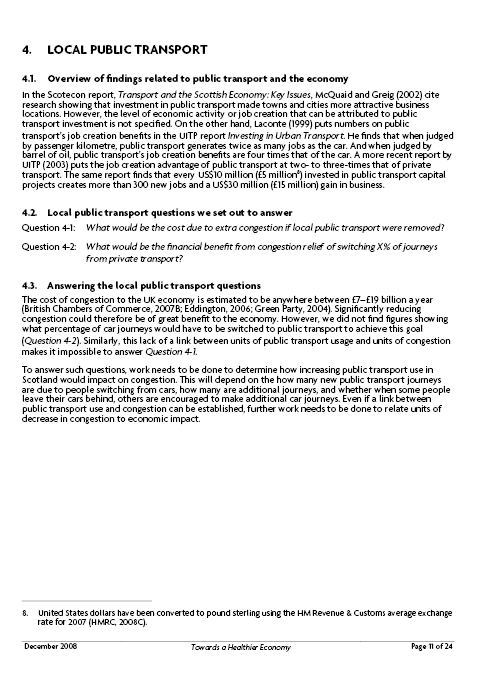

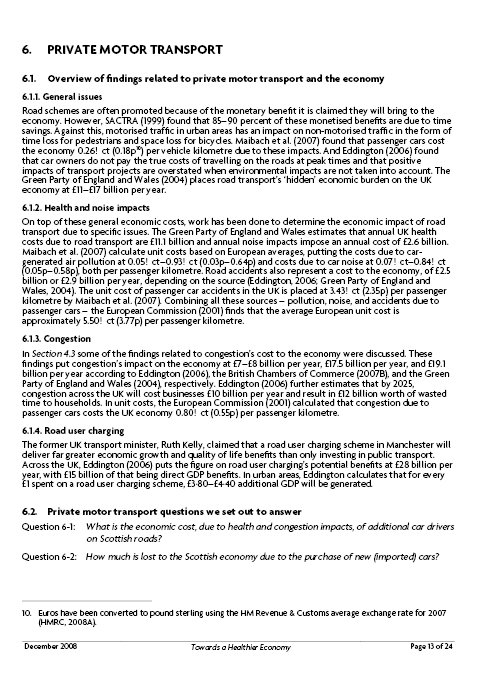

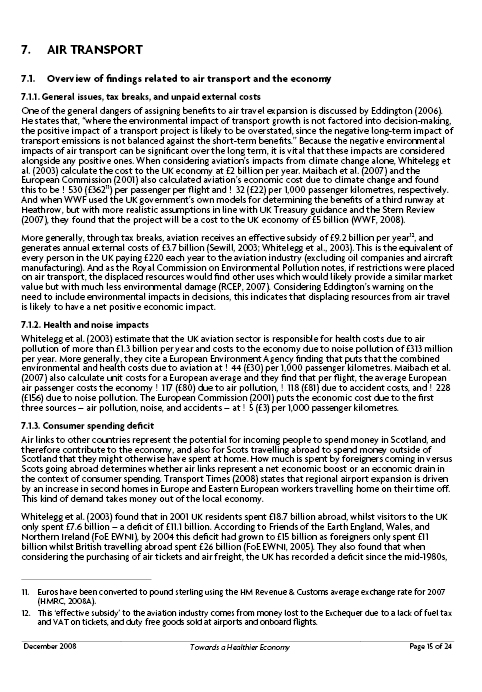
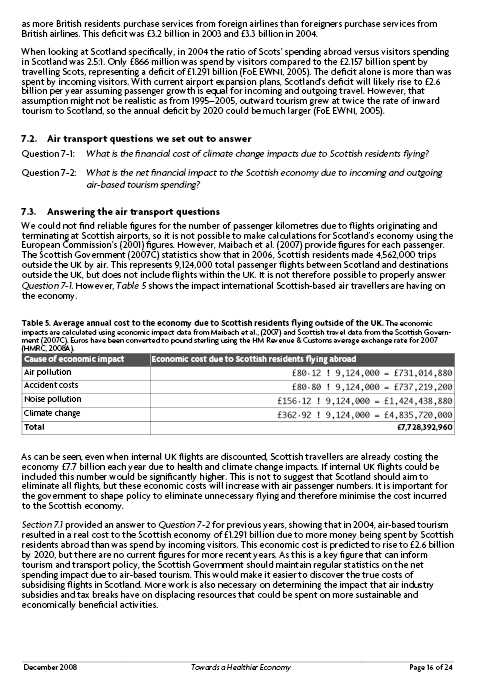
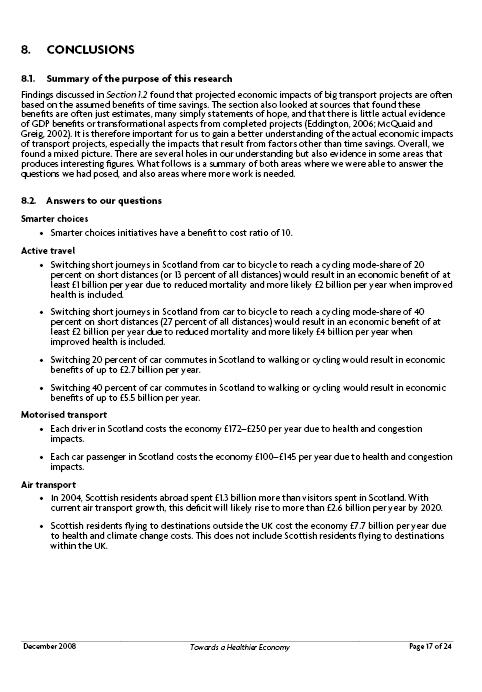

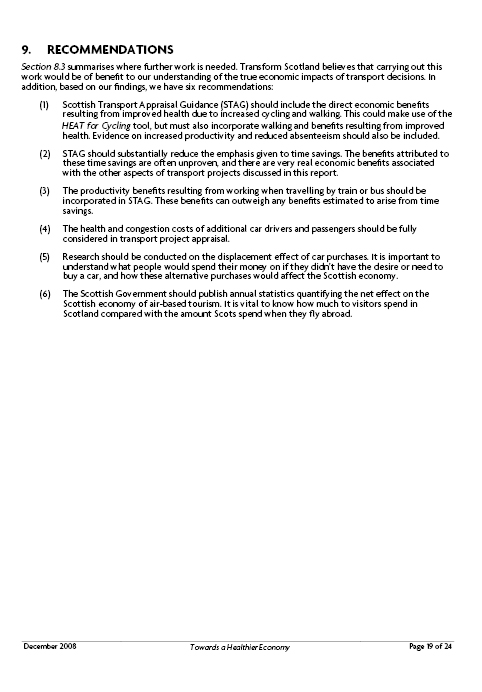



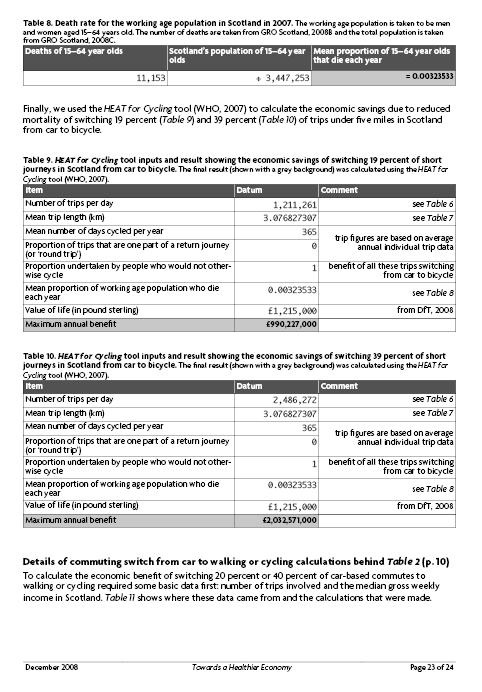
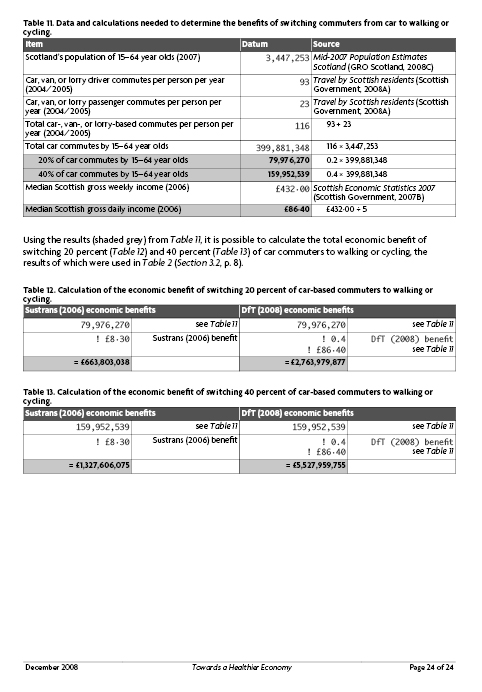
DARD, DFP, DCAL, DSD and Dept of Education Responses re What extent PSA Contribute to NI’s Emission Reduction Target

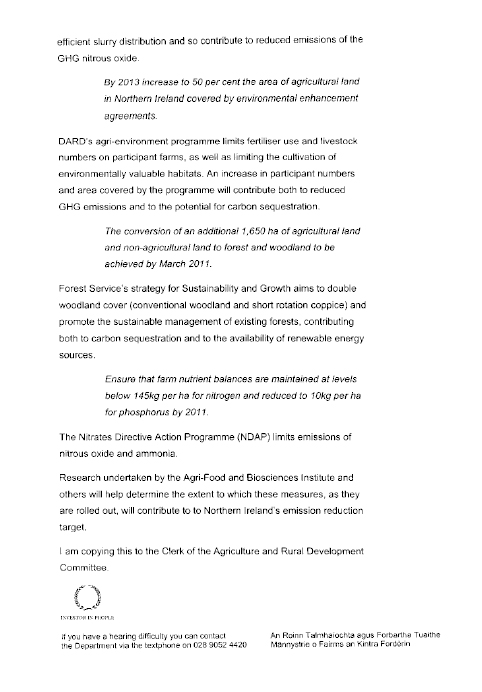

Assembly Section
Craigantlet Buildings
Stormont
BT4 3SX
Tel No: 02890 529147
Fax No: 02890 529148
email: Norman.Irwin@dfpni.gov.uk
Mr Shane McAteer
Clerk
Committee for Finance and Personnel
Room 419
Parliament Buildings
Stormont
29 May 2009
Departmental Contribution to Climate Change Targets
Dear Shane
Alex McGarel, Clerk to the Environment Committee wrote to you on 8 May 2009 seeking information on how and to what extent each of the Public Service Agreements (PSAs) for which the Department is responsible contributes to Northern Ireland’s emission reduction target outlined in PSA 22.
I should be grateful if the Finance & Personnel Committee would consider the draft response attached at Annex A for issue to the Environment Committee Chairperson.
Yours sincerely,

NORMAN IRWIN
Annex A
Department of Finance and Personnel response to the Environment Committee request as to how and to what extent each of the PSAs for which it has responsibility contributes to Northern Ireland’s emission reduction target.
1. The Department of Finance and Personnel (DFP) has responsibility for the delivery of objectives within three of the Public Service Agreements (PSAs) outlined in the Programme for Government agreed in January 2008. In achieving the objectives under these PSAs, DFP policies and actions will make a contribution to the reduction in greenhouse gas emissions target for which the DOE has responsibility under PSA 22.
2. The following paragraphs summarise the actions DFP is taking which may also help to reduce greenhouse gas emissions in Northern Ireland under each PSA. Whilst these are listed under the PSA to which they most closely relate, these actions may apply to more than one of the PSAs and in many cases will also apply to other Departments.
PSA 11 – Driving investment and sustainable development
3. Whilst OFMdFM has responsibility for the Sustainable Development Strategy for Northern Ireland and the subsequent Implementation Plan, DFP takes the lead on many of the targets and actions therein relating in particular, to the Government Estate, energy efficiency and shared services. The Department published its first Sustainable Development Action Plan (SDAP) in January 2007 to deliver these targets followed up by a 3 year plan covering 2008-11.
4. The Department has a key role in promoting energy efficiency across the entire public sector in Northern Ireland. This includes monitoring and reporting on progress towards targets for the public sector estate on energy efficiency and carbon reduction. These targets are to:
- Reduce absolute carbon from fuel and electricity used in buildings by 12.5% by 2010/11, relative to 1999/00;
- Increase the energy efficiency of the buildings measured in kilowatt hours (kWh) of fuel and electricity used per square metre of building floor area by 15% by 2010/11, relative to 1999/00; and
- Reduce electricity consumption by 1% annually from 2007 to 2012.
The figures currently available for 2006/07 show a reduction in absolute carbon emissions of 2.5% since 1999/00. Whilst this may fall short of the target at this stage, it is important to note that this reduction has been achieved despite an increase of 8% in the area of the estate on which data was reported over the same period.
Energy efficiency in the buildings on the estate has improved by 9% since 1999/00 and appears to be on schedule to achieve the target of a 12.5% improvement by 2010/11.
Regarding the third target, a baseline for 2006/07 has now been established and the Department is currently collating the data to report on the 2007/08 year.
5. The NI Departments have also committed to achieving a carbon neutral office estate by 2015. DFP is currently assessing the best way to achieve this target in buildings for which it is responsible.
6. The Department also provides financial assistance for energy efficiency and renewable energy projects in the public sector estate from the Central Energy Efficiency Fund. Currently, £2 million is available annually to provide grants which may cover up to 100% of project costs. Since 1990 approximately 2,500 projects have received funding and it is estimated these projects have saved approximately 700,000 tonnes of carbon dioxide.
7. In addition to targets on energy efficiency the SDAP also seeks to reduce emissions through the development of a “green" Information and Communication Technology (ICT) Strategy, by reducing the consumption of water on the estate, the cancellation of all bottled water contracts and through minimising expenditure on air and road travel.
8. The SDAP also includes a number of targets and actions which also relate to sustainable procurement activities which are covered in more detail under PSA 21.
PSA 20 – Improving public services
9. DFP is taking the lead on delivering a number of reform programmes aiming to deliver a modern, high quality and efficient public service by improving NICS capacity and providing NICS staff with the necessary tools and technology. Many of the programmes are now implemented or in the advanced stages of implementation but it will be some years yet before the benefits realisation process has been completed and their impact on greenhouse gas emissions assessed.
IT Assist
10. IT Assist are working on a programme to introduce the virtualisation of servers, which affects all departments across the NICS. The delivery of the resilient data centres has provided the environment needed to consolidate servers from across the NICS. Essentially this will reduce the number of servers and associated requirement for air conditioning. Indications at the moment are that this will have a significant effect on reducing energy requirements and hence carbon emissions. We are currently in the process of metering the electricity consumption of server rooms with a view to establishing baselines and sound metrics upon which to report progress towards the target.
Delivery and Innovation Division (DID) in DFP is also working with the Central Procurement Directorate to agree the next contract for the supply of ICT equipment for the NICS, which is due for renewal in October 2009. Environmental credentials will feature in the assessment of products being considered.
DID would welcome support from the Environment Committee to the approach to reducing carbon emissions and the need to establish baseline measurements of power consumption of ICT.
Printer technology
11. DFP has also focused attention on the reduction of paper consumption by the Department and is seeking to achieve a 30% reduction by 2011 on a 2006/07 baseline. A Printer Technology Strategy is currently being developed which will undoubtedly focus on the continued reduction in the number of individual desktop printers across the NICS which will contribute in turn, to a reduction in paper consumed.
Records NI
12. Improved exploitation of the Records NI capability will be a focus for work over the 12-24 months with an expectation that this will reduce the amount of paper used across the NICS. Reducing the volume of paper ordered by the NI Departments should lead to fewer deliveries and a saving in transport emissions.
Workplace 2010
13. The Workplace 2010 programme has now been terminated. DFP Properties Division is in the process of drafting a new strategy (Workplace NI) which will consider the overall objectives of Workplace 2010 i.e. to reduce the overall footprint of the NICS office estate; to provide accommodation that will enable the Civil Service to transform the way it delivers public services; to provide accommodation that is fit for purpose in which staff are proud to work; and to safeguard funding for priority front line services.
PSA 21 – Enabling Efficient Government
14. The Sustainable Procurement Action Plan for Northern Ireland (NI SPAP) presents a number of overarching actions which will assist in the delivery of the Programme for Government commitment to support the wider Public Sector in taking account of sustainable development principles when procuring works, supplies and services. The NI SPAP is being taken forward by each Centre of Procurement Expertise (CoPE) in relation to their respective portfolios. The NI SPAP has two relevant targets, to -
- “Make the Government Estate carbon neutral by 2015", and
- “Increase the use of the OGC/DEFRA schedule of environmentally friendly products (“Quick Wins") during 2008-2009 to 100% usage of the schedule by March 2009"
15. In addition the Central Procurement Directorate (CPD) of DFP and all of the CoPEs are tasked with implementing the EC Directive on Energy End Use Efficiency and Energy Services, which requires Member States to achieve energy savings of at least 9% by 2016. Under this Directive the approach adopted in GB and recommended by DETI is the use of Voluntary Agreements (VA’s) between CPD and CoPE’s. VA’s aim to meet the requirements of the Directive through a voluntary mechanism which must be assessed, supervised and followed up to ensure that they have in practice an effect equivalent to the legislation. For NI Departments this is set within the Framework of the SPAP - Quick Wins, that all Government Departments are mandated to use. Quick Wins set the standards for a range of products including energy-using equipment and vehicles.
16. CPD also liaises with the Centre of Expertise in Sustainable Procurement (part of the Office of Government Commerce in Whitehall) on sustainability issues in relation to EU on Greening Public Procurement.
17. Although the PSA 22 target is essentially an operational target it needs to be considered in conjunction with other similar targets for Sustainable Operations on the Government Estate. As there is a limit to what can be achieved operationally with existing infrastructure it is necessary to consider how the structure, fabric and services of buildings can be designed and procured to reduce the emissions baseline and increase the potential for achievement of further emissions reductions through operational management.
As carbon dioxide is one of the most significant greenhouse gases, CPD has adopted a Low Carbon Design policy for construction procurement. CPD’s construction procurement practitioners are proactive in advising clients in the early stages of a project on the scope for incorporating low carbon design features, including low and zero carbon technologies (LZCT) e.g. biomass, solar heating panels, photovoltaic cells, heat pumps and wind turbines. CPD subsequently includes requirements in project briefs and technical specifications when initial appraisals have indicated that Low carbon Design is both economically and technically feasible.
CPD complies with the requirements of the Government Construction Clients Group (GCCG) Sustainability Action Plan (SAP). Specifically the GCCG SAP sets targets for the achievement of the BRE Environmental Assessment Method (BREEAM) standard of “Excellent" for new build projects and “very good" for refurbishment projects. The building’s carbon footprint required to meet the BREEAM standards exceed the minimum standards of the current (2006) Building Regulations. The low carbon design policy encourages design and procurement to exceed the minimum requirements of the Building Regulations, constrained by the caveat of minimising whole life costs.
CPD’s low carbon design policy also requires that the use of air conditioning must be fully justified and, if unavoidable, must be of the low energy type. This has led to a reduction in carbon emissions and the use of refrigerants that have significant global warming potentials. The reduction of nitrous oxides from heating systems is also addressed through for example the specification and procurement of energy efficient low nitrous oxide burners.
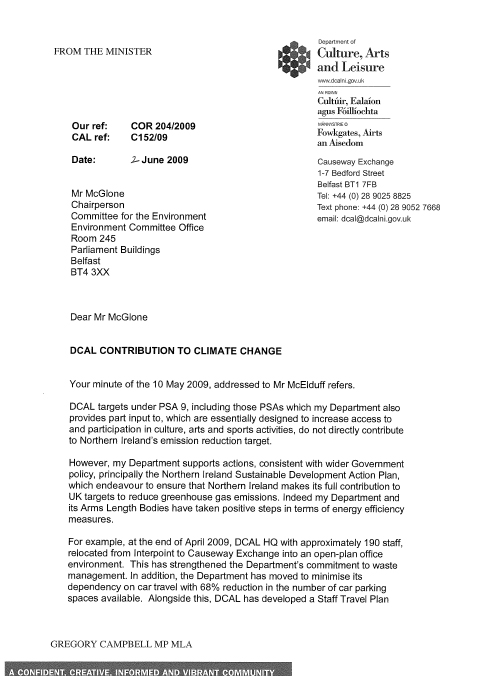

Clerk to the Committee
Environment Committee Office
Room 245
Parliament Buildings
Belfast
BT4 3XX
2 June 2009
Dear Alex,
Inquiry into Climate Change
The Chair of the Environment Committee wrote to the Social Development Committee on the 10 May to request details of how, and to what extent, the Public Service Agreements for which the Department for Social Development has responsibility contributes to Northern Ireland’s emission reduction target.
The attached table summarises how the work of this Department contributes to the Northern Ireland emissions reduction target.
I hope this response is helpful to you.
Yours sincerely

STEPHEN McMURRAY
cc Peter McCallion
John Ball
Billy Crawford
Annex 1
Summary of how the Department contributes to the NI emissions reduction target
| Public Service Agreement | How this contributes to the emissions reduction target |
|---|---|
| No. 7 “Drive a Programme across Government to reduce poverty and address inequality and disadvantage." | The Department’s primary tool in tackling fuel poverty is the Warm Homes Scheme. The purpose of the Scheme is to improve domestic energy efficiency and, therefore reduce energy consumption in eligible households in the owner-occupied and private rented sector. The key objective of the Scheme is “to achieve an energy efficiency gain of at least 15% in 10,000 fuel poor households this year" (subject to available funding). |
| No. 12 “Promote decent, energy efficient, affordable housing and regenerate disadvantaged areas and towns and city centres, and support community development to create environments which enhance quality of life and contribute to well-being" | The Department is required to provide access to ‘decent, affordable and energy efficient housing’. All new social housing must now conform to a minimum of level three in the code for sustainable housing. In effect this housing is 25% more energy efficient than ever before. All new build grant aided projects have to achieve an excellent rating on the Building Research Establishment Environmental Assessment Method (BREEAM) or equivalent accreditation system, and refurbishment projects have to achieve a good rating. In addition, part of the rationale for promoting town and city centres regeneration is that it is more easily accessible by forms of transport other than private car and that fully integrated high quality Public Realm projects are developed which are more environmentally sustainable. In addition: Along the frontages of arterial and secondary arterial routes in Belfast, almost 800 trees were planted in 2008/09. In the North West, 31 trees were planted in 2008/09 and elsewhere across Northern Ireland, tree planting takes place as part of environmental improvement or public realm schemes in town centres or Neighbourhood Renewal areas. The Department is part-funding the Connswater Community Greenway project in East Belfast. This will help deliver a high-quality linear park from the Castlereagh Hills to Inner East Belfast, re-establishing a wildlife corridor and making a significant contribution to enhancing the natural environment. The draft masterplan for the Crumlin Road Gaol and Girdwood Barracks site, includes a commitment to sustainable development on the site. This is expected to involve measures aimed at reducing carbon emissions and energy requirements, saving water and providing a well-planted landscape to ensure that the scheme is environmentally sound |
| No. 22 “ Improve the quality of our natural and built environment and heritage and reduce our carbon footprint" | The Department lists in its corporate plan that a ‘reduction in greenhouse gas emissions is a by-product of work to reduce fuel poverty’ (see Public Service Agreement 7 above). The Department also takes account of this Public Service Agreement with regard to its estate. In 2004 the Minister for Finance and Personnel endorsed three targets to apply to all public bodies: 1. To increase the energy efficiency of the buildings on their estates measured in terms of kilowatt-hours (kWh) of fuel and electricity used per square metre of building floor area by 15% by 2010/11, relative to a base year of 1999/2000. 2. To reduce absolute carbon, from fuel and electricity used in buildings on their estates by 12.5% by 2010/11, relative to a base year of 1999/2000. 3. To source at least 10% of their electricity from renewable sources by 31 March 2008. The Department has either achieved or is on track to achieve these targets. In addition the Department is currently finalising a new Sustainable Operations Action Plan which will further improve the energy efficiency of the Department’s Estate. |
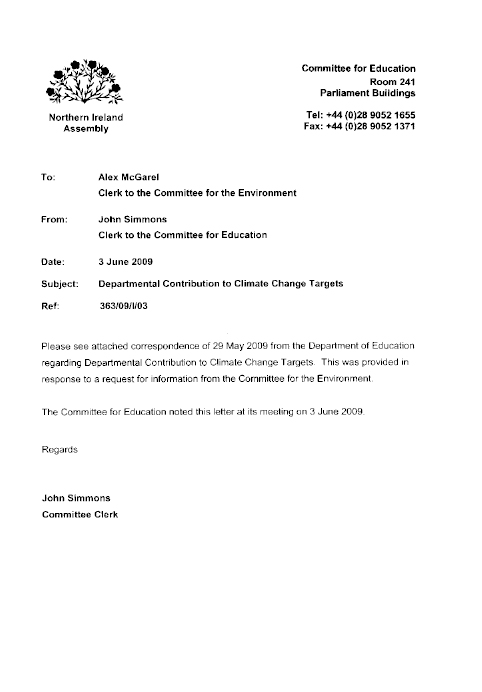
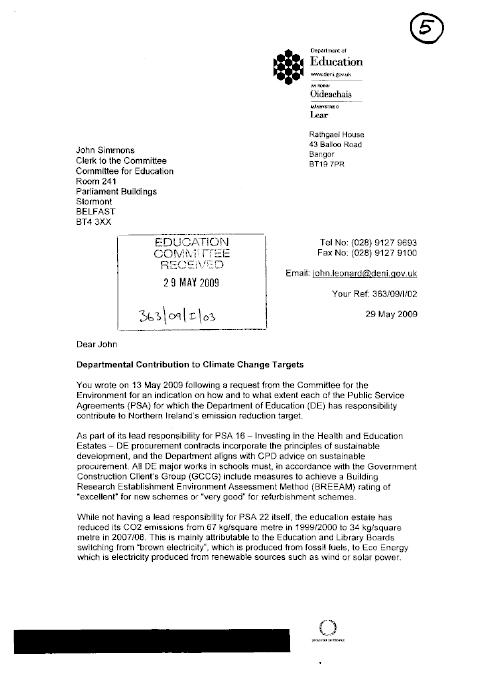
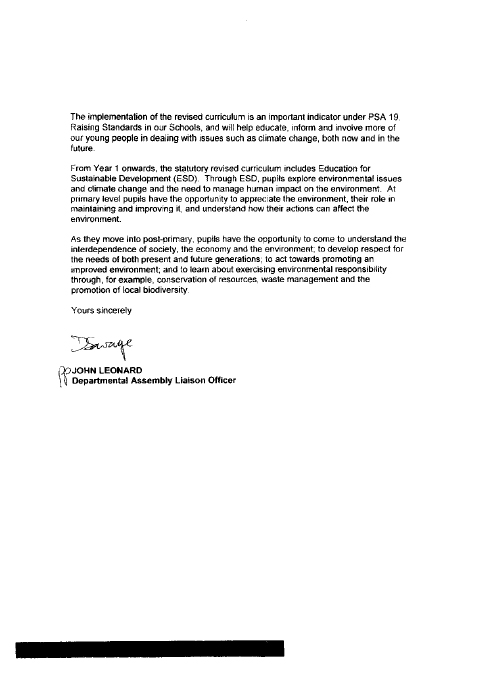

‘Third Sector Declaration on Climate Change’
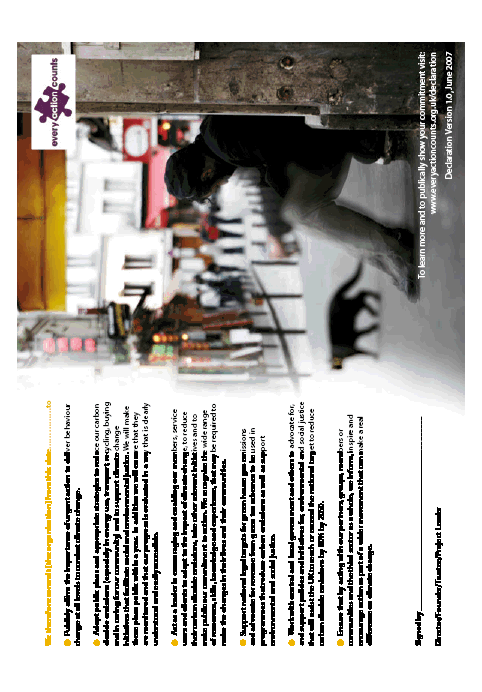
NILGA response re evidence
from Royal Commission on
Environmental Pollution (RCEP)
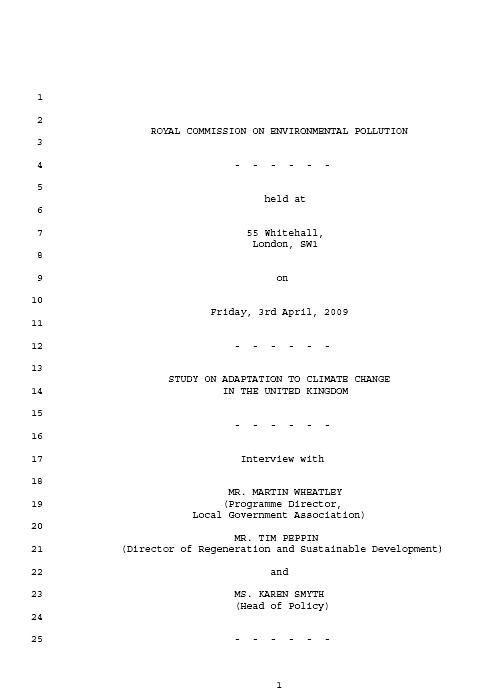



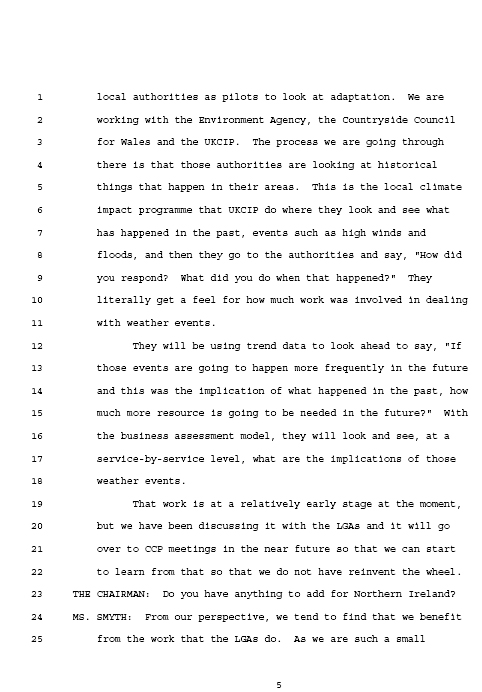

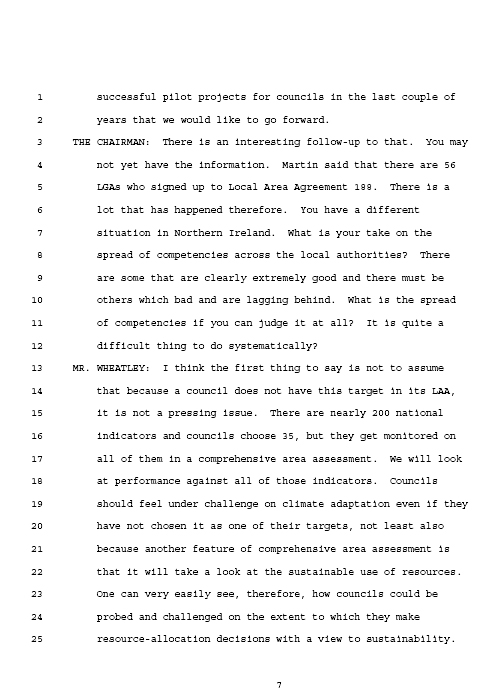

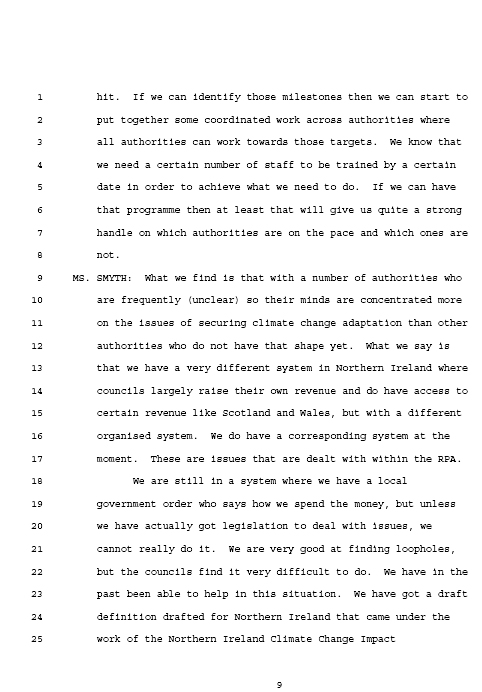
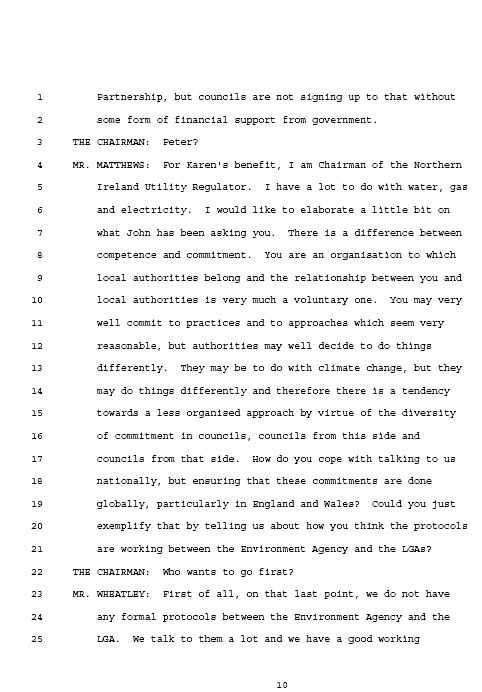


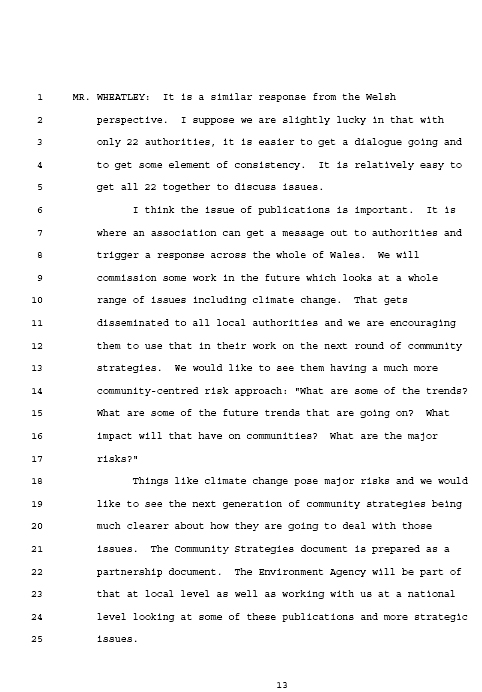
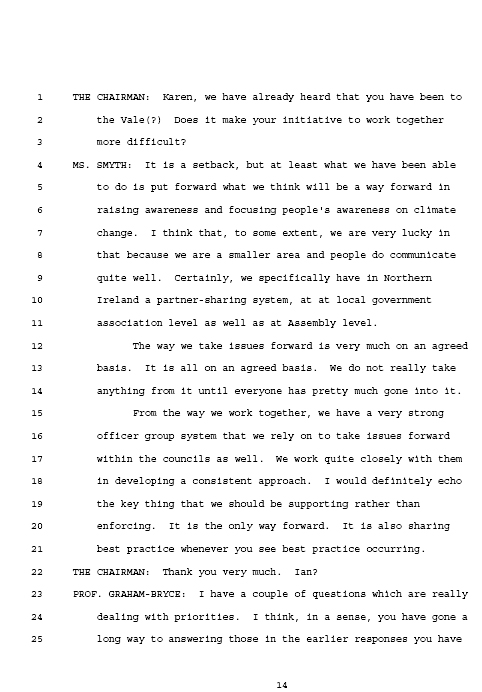
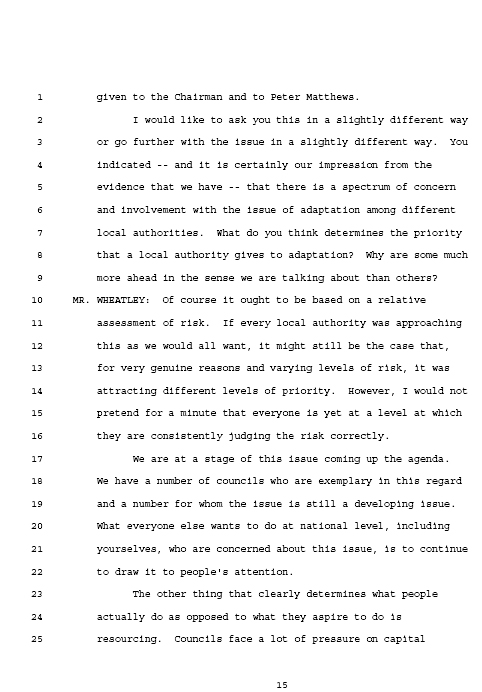





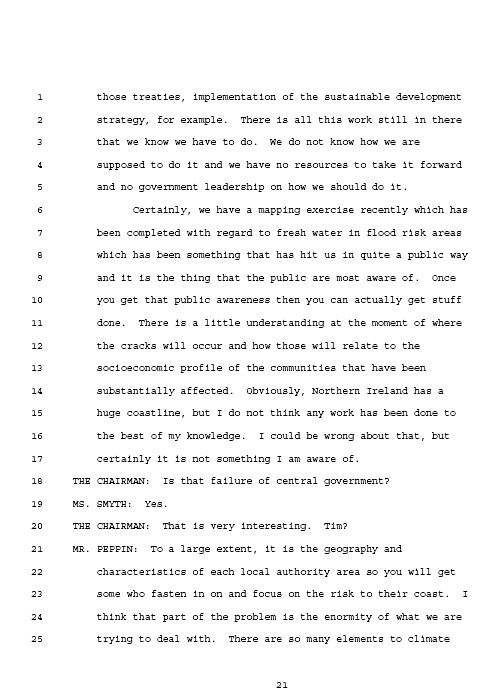
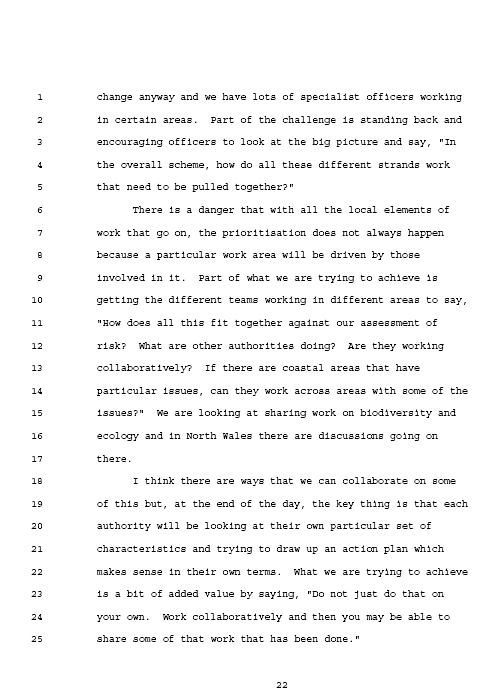

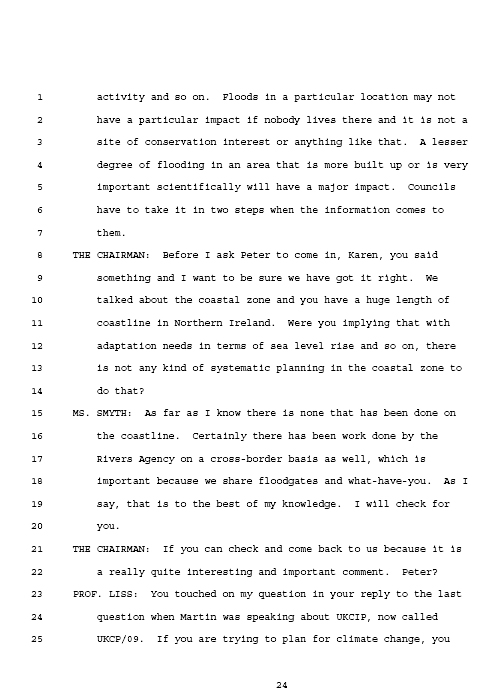

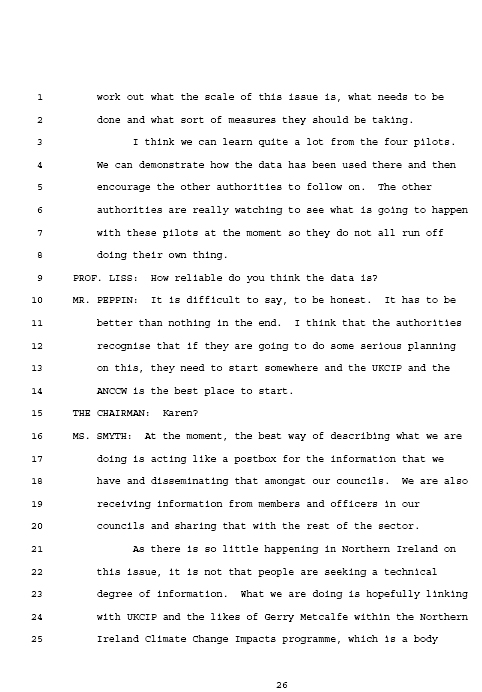

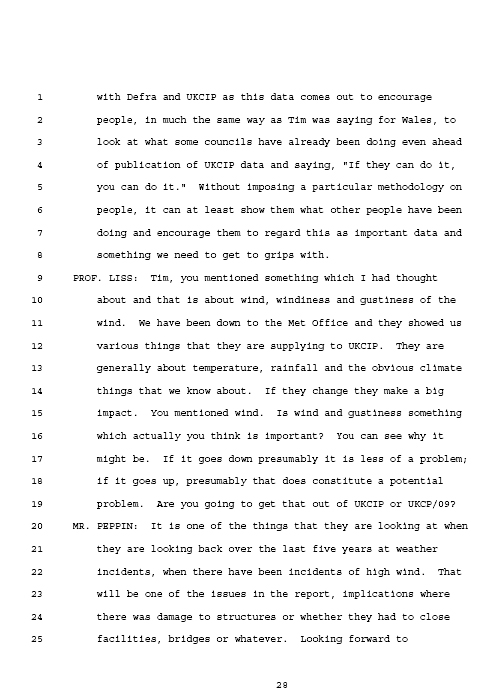

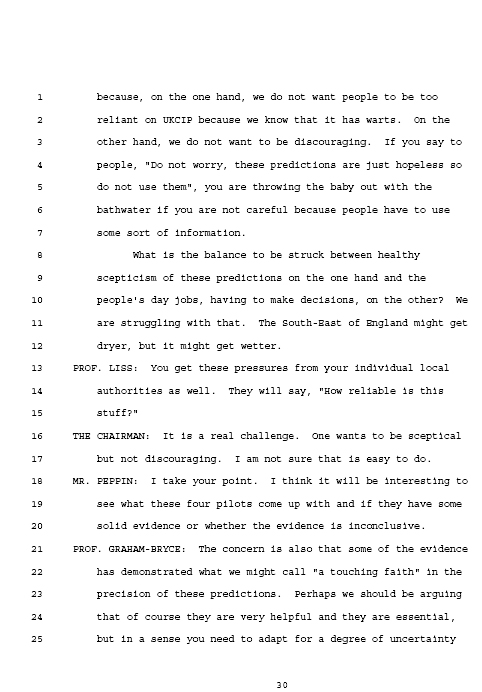

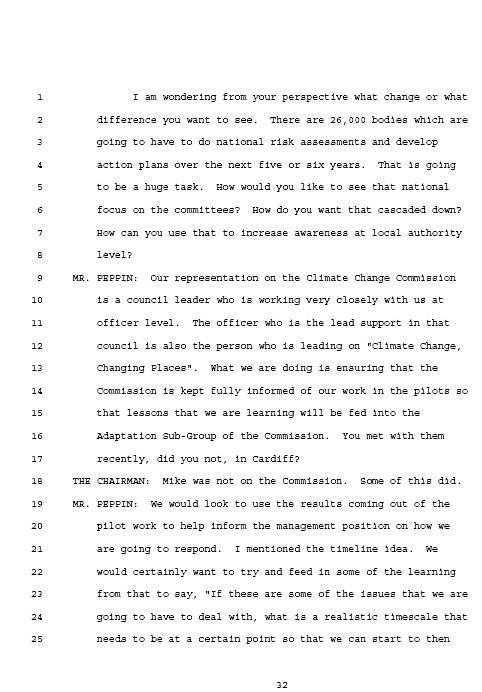
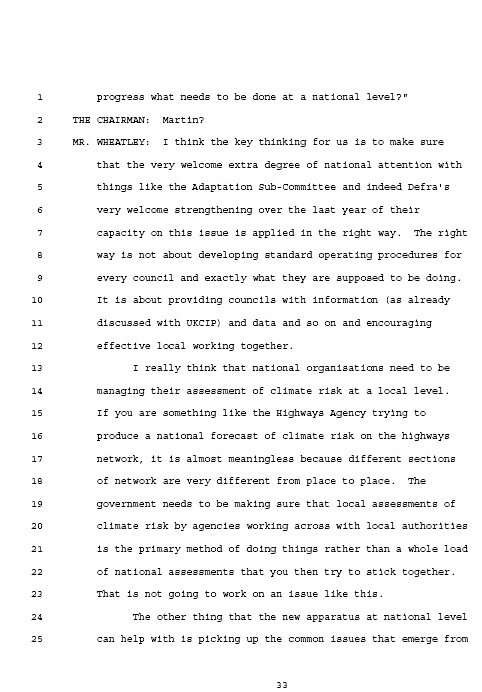

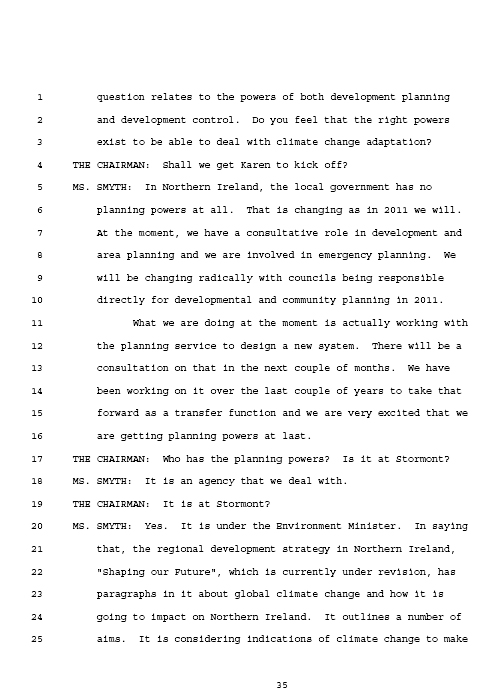
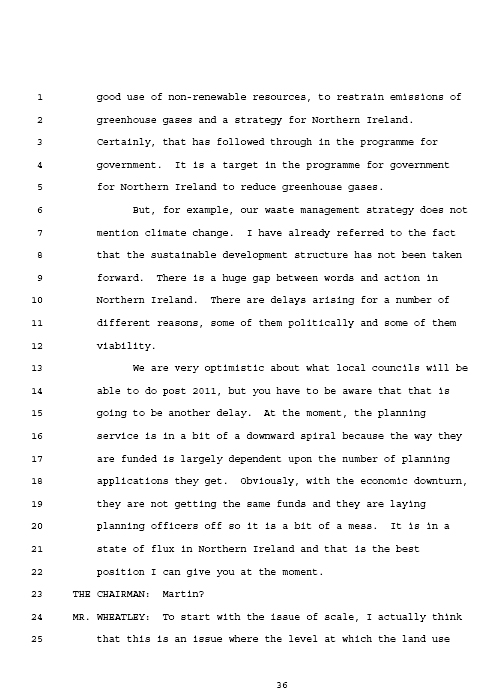
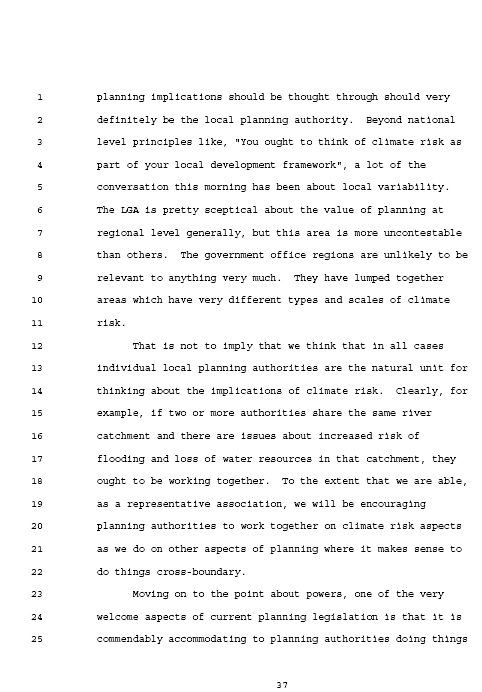


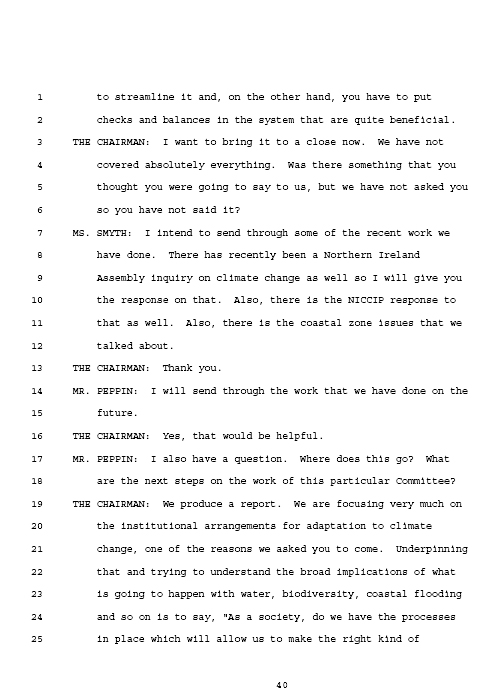
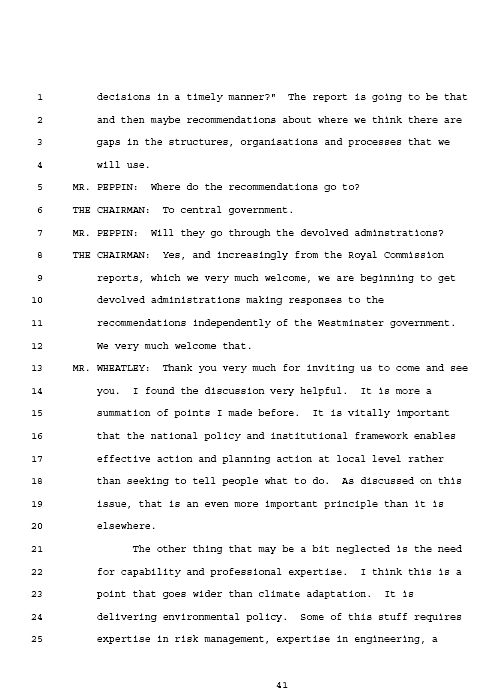

Questions for the Oral Evidence Session – LGA, COSLA, NILGA, WGLA
1. In the context of adaptation at local levels, what can you learn from one another? Are there issues that you can address in Wales, for example, that you may wish to address in Scotland?
It is vital that the four devolved administrations of the UK work together to share good practice and learning. NILGA works closely with the local government bodies in the other administrations on a number of key issues and is beginning to share experiences and learning with regard to climate change. On the recommendation of UKCIP, we have been in contact with the WLGA to learn about their CCCP project, which is viewed as a methodology with great potential for councils on adaptation.
NILGA has developed a declaration on climate change similar to the Nottingham declaration and has benefitted from advice posted online on that website, and by the WLGA, LGA and COSLA. Although NI targets are set in the NI Programme for Government, given the present level of activity in the region, it is hard to say if these will be met, and it is likely that we will face an incredibly steep and fast learning curve when action becomes a requirement. It will therefore be immensely valuable to us to monitor and learn from action taking place in other jurisdictions.
In addition, local government in Northern Ireland is in the midst of a period of reform, the first for 37 years. At present the planning function is performed by an agency of central government. This is due to be transferred in 2011 to local government, along with a power of wellbeing and responsibility for community planning. Work on climate change adaptation and sustainable development has taken somewhat of a back seat in the interim, as priority is being given to developing the future shape, structure and functions of local government in Northern Ireland.
There are isolated examples of good practice in local government that we are happy to share, but the current lack of support and leadership from the NI administration on climate change is having a negative impact on councils taking this work further forward.
NILGA also benefits from the relationship that the NI administration has with the Scottish Executive through the provision of the Scotland and Northern Ireland Forum for Environmental Research (SNIFFER), who produced a recent report: “Review of Climate Change Mitigation Tools for Local Authorities" highlighting a number of ways in which policy makers and local authorities could strengthen the development of tools to address climate change.
2. If you had the resources, what would you do regarding your approach to locally driven adaptation?
Within the last year, NILGA has attempted to lever in funding from Europe to enable local government to resource and staff work on carbon reduction and climate change adaptation, but this bid was unsuccessful, and it is therefore highly unlikely that any strategic cohesive work will be carried out in the short to medium term by NI local government. We now have, however, a blueprint for a strategic project at local government level that is fully costed and which we feel would provide a significant step-change in local government work on climate change.
Some pilot projects such as the Eco-challenge project and STEM project have been extremely successful and we are currently seeking resources to roll these out on a regional basis.
We are also interested in the potential of initiating a CCCP type project in a NI council, but given the Review of Public Administration timetable and associated priorities this is unlikely to happen in the short term. It is also the case that NI local government is suffering from ‘pilotitis’ to a certain extent, with many councils already concentrating their efforts on running pilot schemes in advance of the RPA, on a vast array of issues.
3. How are your requirements for adaptation prioritised in relation to other demands?
Climate change adaptation does not feature at all highly on the NI Assembly agenda and although a number of councils, groups of councils and local government officer groups are working well on these issues, without strategic leadership, commitment and resources form central government, there is only a limited amount that local government can do in Northern Ireland. NI councils govern 4% of the public sector budget at present, which will increase to 10% after the RPA.
It is also important for the RCEP to note that the Assembly government is struggling to implement the NI Sustainable Development Strategy and the Ni Waste Strategy, both of which will fundamentally impact on climate change adaptation in the region. There is no NI climate change strategy.
We are attempting to show leadership to our communities on the issue, but the public are being exposed to extremely mixed messages on climate change from a number of sources.
NILGA is working within the NI Climate Change Impacts Partnership, with representatives of government, the private sector and the voluntary/community sector to explore ways of prioritising adaptation. This group has extremely limited resources.
NILGA and the NICCIP have both recently responded to calls for evidence to a NI Assembly Inquiry on Climate Change and I will be furnishing the RCEP with the terms of reference of this inquiry and copies of our responses.
4. Do you anticipate uneven distribution of climate change impacts with respect to the three report exemplars (Biodiversity – nature conservation and protected areas; Sea-level rise and the coastal zone, including estuaries; Freshwater – flood and drought)?
Local authorities in NI are already subject to a statutory duty regarding sustainable development and will soon be subject to a statutory duty regarding biodiversity in their areas. There is currently no satisfactory guidance for either of these duties.
A mapping exercise has recently taken place with regard to freshwater flood risk areas, on a cross-border basis, and considerable resources have been directed at ensuring recent flooding events in Belfast do not recur.
At present there is little understanding of where impacts will occur and how these will relate to the socio-economic profile of the communities potentially affected.
It is likely that this work will develop more readily when councils are responsible for both area and community planning as well as having a greater involvement in emergency management
Public awareness is extremely low, and access to information is limited.
5. Local Democracy, Economic Development and Construction Bill – how will the introduction of this Bill affects adaptation efforts?
This bill will not apply in NI save for repealing some un-commenced aspects of the PPERA
6. How and where do you get your climate change information to inform the Local Authorities (IPCC< UKCIP, LGA Climate Change Commission, other)? How do local authorities interpret this information and ensure it is understood by decision makers?
This process is currently still in development. NILGA obtains information from the Department of Environment and Defra, mainly via the NICCIP, who are closely connected to UKCIP. We also conducted a substantial amount of researching the run up to the submission of our bid for EU We were involved in discussions with the LGA climate change commission in the early stages of their work, but it is fair to say that the LGA has moved much further and faster than NILGA on this issue. NILGA also works closely with LACORS, who are a point of information and advice for local government on regulatory services issues.
NILGA in turn, keeps relevant officers, groups of officers and members informed and up to date with key developments, through the work of our Health and Environment Working Group. A number of councils are also taking forward cross-border and other adaptation projects, and are keeping NILGA informed of their progress.
NILGA has recently reinvigorated a local government awards scheme which featured a number of awards for environmental schemes. Information on schemes related to climate change is also disseminated via our website, regular meetings, and monthly newsletter.
7. How are the local authorities and associations able to influence national decisions on adaptation?
NILGA, through its lobbying activity and relationship with the various NI government departments is continually trying to reinforce the need for adequate planning for and adaptation to climate change. We are trying to ensure that awareness of climate change is built in to all relevant government policy, but at present, it is only visible in high level government strategy that has not been implemented.
NILGA therefore views its role in NICCIP as vital, given the cross-sectoral nature of this group. It is likely that local government will have greater influence regarding adaptation post 2011, given the functions that are to be transferred to and new roles created for local government in Northern Ireland.
8. Do you think the local government associations could do more towards adaptation? What would you like to be able to do?
Given adequate resources NILGA could lead the sector in a strategic project to develop a cohesive and consistent approach to climate change adaptation and mitigation across all its member councils. NILGA has scoped such a project and it is our view that a strategic approach to this work is necessary.
There is a clear role for NILGA to build adaptation and SD principles into the work of the new councils, and NILGA would value the extra capacity necessary to begin to take this work forward within the statutory transition committees that are being formed towards the end of 2009. However, with the lack of government leadership currently being experienced on climate change, this is unlikely to take place.
9. How does the present economic growth model fit with the need to adapt to climate change?
It is the NILGA view that there are clear challenges and also economic opportunities presented by the need to develop more sustainably and to adapt to climate change. It is clear that current practices are unsustainable, and we are extremely supportive of the research and development work taking place in Northern Irish Universities on sustainable technologies and practice.
Northern Ireland has serious socio-economic problems, with many of our households already experiencing some degree of fuel poverty. It will be critical for local government to develop its civic leadership role quickly in the area of climate change mitigation and adaptation to ensure that current problems are not exacerbated.
It will be difficult to develop public confidence in this work without appropriate political leadership.
Planning:
10. How can the planning powers available to you be used to develop adaptation?
At present local government in NI has no planning powers, save a consultative role in development and area planning and a coordinating role in emergency planning. Post 2011, the planning role of local government will change radically, with councils being responsible for area plans, development control and community planning. The provision of the enabling power of well being will also be critical to councils in developing adaptation measures.
11. To what extent does the National Planning Framework help or hinder adaptation?
The Regional Development Strategy for NI ‘Shaping Our Future’ is currently under revision. Published in 2001, its current incarnation notes that “Global climate change has been identified as an issue which must be taken into account in planning the future development of the region.
An objective of the Strategy is to contribute to reducing the impact of global warming, both locally and globally, and to emphasise the importance of cutting environmental costs generally, by reducing the consumption of natural resources and energy from non-renewable sources, and increasing the amount of waste material which is recycled rather than dumped."
The document goes on to outline a number of aims under a heading of “Wise Use of the Environment", including
- To consider the implications of climate change
- To make prudent use of no-renewable resources
- To help restrain emission of greenhouse gases
- To promote the waste management strategy for NI
However, when these aims are followed up, targets and useful action does not always appear as a result. For example the Waste Strategy for NI “Towards Resource Management" doesn’t mention climate change and is still seriously behind on implementation targets. The sustainable development strategy, although giving targets for greenhouse gas reduction, has not been implemented. There is a huge gap between words and action in much of this work, largely stemming from the prioritisation of Northern Ireland’s unique political situation within the UK.
I will be also submitting some work that NILGA has already done for an NI Assembly inquiry into climate change.
KS
Further Evidence from Hans Schreuder
From: Hans IP [hans@ips-pix.biz]
Sent: 03 June 2009 19:35
To: McCann, Sean
Cc: Long, William
Subject: Re: Environment Committee Meeting 21 May
Mr McCann and Mr Long,
Following on from my oral evidence, there is so much brand new scientific information that has been published since then that it is imperative that I bring this to your attention.
Please allow me to send you the latest reports from around the world, showing beyond a shadow of a doubt that there is absolutely no scientific basis for the much hyped man-made global warming nor man-made climate change.
It is critical that you and your Climate Change Committee read these latest reports, as it will clearly indicate that all the evidence that I have already brought to your attention is now being confirmed independently by scientists world-wide.
As I mentioned during my oral evidence, the team of scientists that I work with are at the very cutting edge of proper climate science, not the pseudo-science as practised by all who so loudly proclaim that man is causing global warming and climate change.
Other teams of scientists are now independently coming out with the exact same conclusions that I have spoken about.
Kind regards,
Hans Schreuder
----- Original Message -----
From: McCann, Sean
To: hans@ips-pix.biz
Cc: Long, William
Sent: Tuesday, May 26, 2009 9:46 AM
Subject: Environment Committee Meeting 21 May
Mr Schreuder
Please find attached a thank you letter following your oral evidence session to the NI Assembly Environment Committee Climate Change Inquiry on 21 May.
Thanks
Sean McCann
Environment Committee Staff
From: Hans IP [hans@ips-pix.biz]
Sent: 23 May 2009 11:23
To: Long, William
Subject: Fw: Due Diligence and Facts on the IPCC
Dear Mr Long,
Thank you again for your intervention to get me to present oral evidence to the Northern Ireland Climate Change Committee and I hope it will make the Committee think more than twice about the entire issue of man-made climate change.
Below is a combination of several emails from one of my Australian cyber contacts, Malcolm Roberts, highlighting the true nature of the UN IPCC.
Please be so kind and make other members of your Committee aware of this.
Over the next few weeks, I will also gather information about the sources of official global temperature measurements, to clearly indicate that there has been no global warming for at least 7 years and, depending on the parameters used, no warming since the peak of 1998.
Please feel free to ask me for any further information on any aspect of climate change and mankind’s non-existent influence upon it.
Kind regards,
Hans
----- Original Message -----
From: Malcolm Roberts
To: Malcolm Roberts
Sent: Thursday, May 21, 2009 1:22 AM
Subject: Due Diligence and Facts on the IPCC
Due Diligence and Facts on the IPCC - No. 1 in a Series
What scientific foundation?
Presenting something as it is not, to secure unfair gain, is fraud.
Kevin Rudd has repeatedly stated the government’s position on global warming is reliant on reports from the UN’s Intergovernmental Panel on Climate Change, IPCC. Lets consider the IPCC’s actions.
According to Lord Monckton’s 2007 public speech at Cambridge University, the IPCC’s 1995 Scientific Report draft included the following three statements:
1. “None of the (scientific) studies cited above has shown clear evidence that we can attribute the observed (climate) changes to the specific cause of increases in greenhouse gases". Source, IPCC, 1995.
2. “No study to date has positively attributed all or part (of observed climate change) to anthropogenic causes". Source, IPCC, 1995.
3. “Any claims of positive detection of significant climate change are likely to remain controversial until uncertainties in the total natural variability of the climate system are reduced." Source, IPCC, 1995.
Yet, in the IPCC’s 1995 summary Report for Policymakers widely distributed through the media and governments, all three of the above statements by IPCC scientists were removed and replaced with: “The balance of evidence suggests a discernible human influence on global climate". Source, IPCC 1995 rewrite.
Due Diligence and Facts on the IPCC - No. 2 in a Series
The IPCC can’t even count its own members
The IPCC has repeatedly falsely implied 2,500 scientists support the IPCC’s claim that human activity caused global warming. Using data from the IPCC McLean (2007) shows only 62 reviewers reviewed Chapter 9 which claims human causation of global warming. Of these only 5 reviewers endorsed the claim (McLean, 2007, page 15). Five! And there is doubt they were even objective scientists.
McLean (2009) provides hard numerical data and in reference to the IPCC’s notion that a significant human influence on global climate is supported by 2,500/4,000 scientists, McLean states: “There’s no question whatsoever. It’s utterly wrong"
Some IPCC reviewers were not scientists at all. They were lobbyists and activists.
It seems the IPCC can’t even count its own members and does not even know what is a scientist.
Does the IPCC lack the numerical competency to even accurately count the number of scientists involved in preparing IPCC reports. Or is the IPCC deliberately misleading?
The IPCC stands naked, exposed.
IPCC scientists oppose the IPCC - No. 3 in a Series
The rapidly growing spontaneous world-wide people’s movement debunking climate alarm is informally led by scientists on the IPCC.
IPCC scientists are publicly stating their concern at the distortion of science in the IPCC’s clearly politically motivated reports. (References provided below.)
Scientists are concerned about the IPCC’s destruction of science, the scientific process and peer review.
Scientists are expressing strong opposition despite some being penalised financially and in their careers and despite unfounded smears on their reputation.
They are courageously speaking out to ensure valuable public resources and attention stop being diverted to a non-problem because there is no evidence human activity caused Earth’s latest period of global warming that ended in 1998. They see the urgent need to protect science’s credibility from the IPCC’s false inferences and unscientific processes.
There is strong evidence human activity did not cause that latest period of global warming.
The infamous hockey stick graph is crooked - No. 4 in a Series
Initially, the IPCC embraced the now infamous Hockey Stick graph fabricated by Mann, Bradley and Hughes (MBH) in 1998 and extended in 1999. The IPCC embraced the graph’s use even though the graph bypassed standard scientific peer review processes. That graph has since been scientifically proven to contain many falsities. It omitted known warmer periods 400 years ago and even in the 1930’s. MBH’s graph is scientifically discredited world-wide as completely unscientific and in gross error.
Once McIntyre and McKitrick had exposed the MBH falsity the IPCC quietly dropped use of the graph. Yet the damage had already been done because MBH’s graph had been extremely influential in discussions of 20th century global warming. The IPCC helped spread the damage - using a falsity.
From what I’ve seen, if the IPCC was a company it would be up for fraud.
Have you done your own due diligence for Australia?
Malcolm Roberts
BE (Hons), MBA (Chicago)
Fellow AICD, MAIM, MAusIMM, MAME (USA), MIMM (UK), Fellow ASQ (USA, Aust)
180 Haven Road
Pullenvale QLD 4069
Phone:
Home 07 3374 3374
Mobile 04 1964 2379
E-mail: catalyst@eis.net.au
Please note: Apart from the name of my suburb and state, my contact details are not for publication and are provided only for your own personal use to reply.
References:
Monckton, Lord C, 2007. “Apocalypse? No!" DVD of speech presented to Cambridge University Union. Available free from http://video.google.com/videoplay?docid=5206383248165214524 or from http://scienceandpublicpolicy.org/apocalypseno-dvd.html [both Accessed: March, 2009]
McLean, J, 2007. An Analysis of the Review of the IPCC 4AR WG I Report. Science & Public Policy Institute http://mclean.ch/climate/docs/IPCC_review_updated_analysis.pdf [Accessed: February, 2009]
McLean, J, 2009. The IPCC Can’t Count its “Expert Scientists" - Author and Reviewer Numbers are Wrong, International Climate and Environmental Change Assessment Project
http://mclean.ch/climate/docs/IPCC_numbers.pdf [Accessed: February, 2009]
Don’t accept my writing. Read McLean and discover for yourself the IPCC’s unfounded alarm and falsities. The 2007 report is equivalent to around just ten pages of text. The 2009 Update is less than five. Both these highly objective reports were made using IPCC data provided by the IPCC. It seems the IPCC can’t even count its own members and does not even know what is a scientist.
McLean advises that both papers required only some critical analysis and the ability to count. His computing background was useful to speed up the work.
What McLean says cannot be sensibly refuted because the data is available to everyone and where necessary McLean describes his data processing method.
The IPCC falls by its own actions, its own data.
Singer, NIPCC, 2008. Report entitled “Nature, Not Human Activity Rules the Climate". http://sepp.org/publications/NIPCC_final.pdf Produced by a group of internationally eminent scientists, including scientists on the IPCC panel. Prepared by the Nongovernmental International Panel on Climate Change (NIPCC) 2008 as a Science and Environmental Policy Project and published by The Heartland Institute, page 24. Edited by S F Singer, internationally renowned Professor emeritus of Ecology and Environment, respected climate scientist, physicist, first director of USA’s National Weather Satellite Service and former vice-chairman for five years of the US National Advisory Committee on Oceans and Atmospheres, member of IPCC panel of advisory scientists. References to 168 sources.
Michaels, P J, PhD, Editor, 2005. Shattered Consensus - The True State of Global Warming. (Rowman & Littlefield: Plymouth, UK). Containing chapters by internationally eminent climate scientists on specific topics in climate science. Includes 3 IPCC scientists (one Lead Author) and a consultant to the IPCC. References 729 sources.
Singer, S F and Avery, D T, 2007. Unstoppable Global Warming - Every 1,500 Years. (Rowman & Littlefield, Plymouth, UK). Comprehensive, reader friendly book on all aspects of climate alarm. References 534 sources.
Michaels, PJ and Balling, R C, 2009. Climate of Extremes - Global Warming Science They Don’t Want You to Know. (Cato institute, Washington, USA). Michaels is a member of the IPCC and Balling a consultant to the IPCC. Their four page preface alone is worth the book’s price. The whole book very valuable. References to 278 sources and reading.
Jump on the internet and look for yourself. Start with Michaels, Singer, Christie among many prominent climate scientists on the IPCC who strongly refute IPCC reports and/or the IPCC’s politicisation of science and its unscientific methods.
eg,
Everett, J, 2009. Global Climate Change Facts: The Truth, The Consensus, and the Skeptics. Available from: http://www.climatechangefacts.info/index.htm [Accessed May, 2009] Award winning scientist with comprehensive data including data from the USA’s National Oceanic and Atmospheric Administration
There is now a range of scientific papers available by various scientists detailing the fabrication of the Mann, Bradley, Hughes hockey stick graph. Two highly reputable sources include the two Canadian statisticians who exposed the fabrication:
McKitrick, R author of chapter 2, in Michaels, P J, PhD, Editor, 2005. Shattered Consensus - The True State of Global Warming. (Rowman & Littlefield: Plymouth, UK). Pages 20-49
McIntyre, S, 2009. http://www.climateaudit.org/pdf/mcintyre.mckitrick.2003.pdf and in general http://www.climateaudit.org/ [Both accessed: May, 2009]
----
end
IHT Response re Information
on ‘Translink New Fleet’
From: Geoffrey Perrin [Geoffrey.Perrin@scottwilson.com]
Sent: 28 May 2009 09:34
To: Long, William
Subject: DoE Assembly committee hearings on Climate Change.
Dear Mr. Long,
Further to your recent email please find below the information in relation to the Member’s question.
IHT did not have an answer to the question so we asked Translink for their assistance.
Attached is the detail of their reply.
I trust this is satisfactory,
With kind regards,
Geoffrey Perrin.
--------------------------------------------------------------------------------
From: Geoffrey Perrin [mailto:perrin.geoffrey@googlemail.com]
Sent: 26 May 2009 21:26
To: Geoffrey Perrin
Subject: Fwd: IHT
---------- Forwarded message ----------
From: Philip O’Neill <philip.o’neill@translink.co.uk>
Date: Tue, May 26, 2009 at 4:24 PM
Subject: RE: IHT
To: Bert Bailie <Bert.Bailie@rpsgroup.com>
Cc: bailiehjh@aol.com, perrin.geoffrey@googlemail.com
Bert,
Basically, the Member was correct. The experience of the industry generally and indeed our own in recent times clearly shows that engine upgrades from Euro II to Euro V (and soon to be Euro VI) have reduced harmful emissions and resulted in cleaner engines. In other words, there is less carbon dioxide, nitrous oxide and particulates However, there is a cost in terms of fuel consumption. Modern buses with air conditioning, double glazing, safety factors, higher seating capacity etc. are significantly heavier (gross weight); this has also increased fuel consumption.
Typically, a new vehicle, e.g. Volvo B10BLE (low-floor urban vehicle), will achieve 5.7 mpg, whereas older type vehicles, e.g. N-type/Q-type Tiger will reach 7.9 mpg (28% difference).
However, we continue to work with manufacturers and technical staff to develop ways to mitigate these unintended consequences.
We are also looking at new hybrid vehicles and have been trialling various levels of (fuel) additives, e.g. bio diesel, for some time.
Finally, it may be of interest to note that there are two elements in fuel cost calculations, consumption and price. The price of fuel, as everyone is aware, has been very volatile in recent years and clearly the long-term real trend for net price in the industry is decisively upwards. In addition, the freezing of fuel duty rebate in relation to fuel consumption and the weighted analysis of fleet type, i.e. towards increasing double-deckers, has inevitably resulted in higher fuel consumption figures, particularly in urban areas such as Londonderry and Belfast. It is reasonable to assume that on the basis of future bus purchases, fuel consumption will continue to deteriorate as older and more fuel-efficient vehicles will have been phased out.
I hope the foregoing is helpful.
Regards,
Philip
From: Bert Bailie [mailto:Bert.Bailie@rpsgroup.com]
Sent: 21 May 2009 16:13
To: Philip O’Neill
Cc: bailiehjh@aol.com; perrin.geoffrey@googlemail.com; Geoffrey Perrin
Subject: IHT
Hi Philip
Hope all is going well with you. I’m hoping you can help IHT with this query.
Last week the IHT attended the DoE Assembly committee hearing on Climate Change. During questioning we were asked about the fuel consumption of new low carbon emission buses purchased by Translink. We obviously did not have information from which to answer the query and we were asked to see if we could provide further advice – The Clerk of Committee has followed up with the following:-
The Committee for the Environment wishes to thank you for attending the meeting on 14 May 2009 and presenting your very useful oral evidence.
Members were particularly interested in the discussion on the ‘translink new fleet’ and have requested further details on the fleet.
(Members queried the fact that low carbon emission vehicles were being used that possibly would use more fuel)
Basically one member seemed to have the idea that recently purchased buses with more environmentally friendly engines producing lower carbon emissions actually used more fuel.
Can you provide IHT with any information that we can use to answer this query. As you will appreciate we would like to respond to this query as soon as possible and you assistance would be greatly appreciated.
Geoffrey Perrin (90705111) or myself can discuss – I will not be in the office again until Monday but you may get me on 07817210272 – if responding by email can you send to both my email addresses as I am only working part-time.
Many thanks
Bert
Bert Bailie
Transport Consultant
RPS Consulting Engineers
74 Boucher Road ? Belfast ? BT12 6RZ
e-mail: Bert.Bailie@rpsgroup.com
tel : (028) 9066 7914
web : www.rpsgroup.com/nireland
Met Office Presentation on Global Temperatures over past 20 years


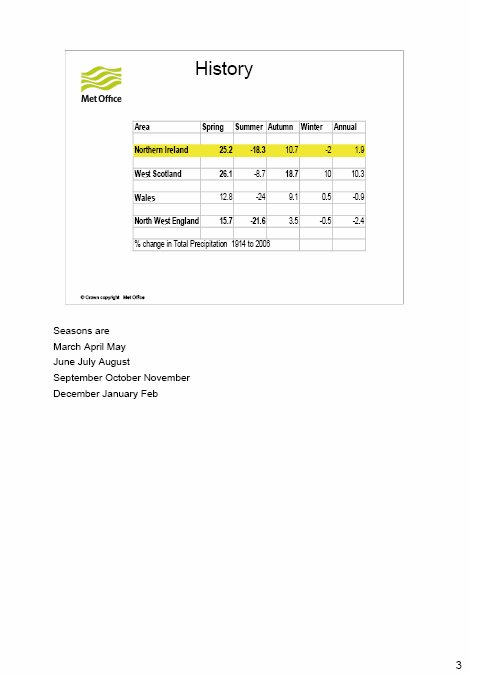
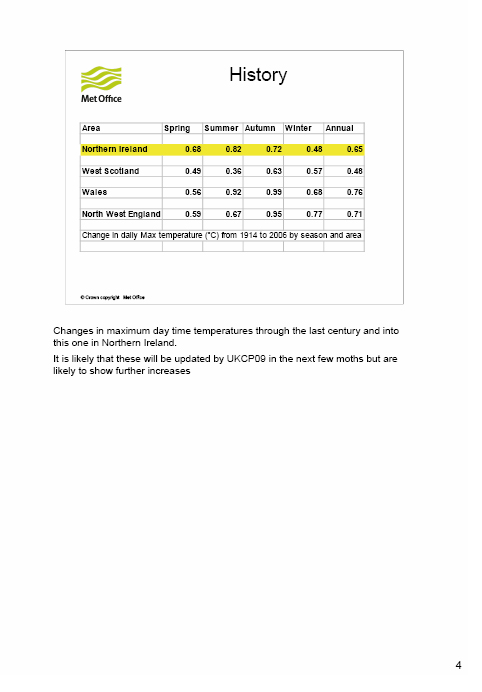
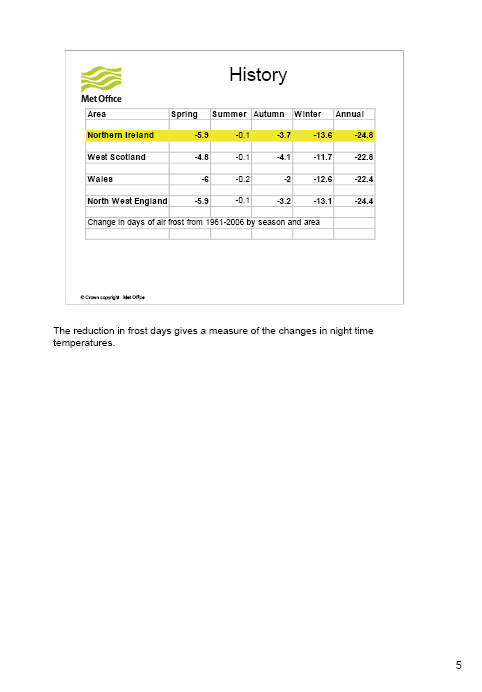

RSPB Response re Changes in
Temperatures in the Seas and Bird
Diseases as a Result of Climate Change
From: McCann, Sean
Sent: 27 May 2009 12:37
To: Long, William
Subject: FW: Further information from RSPB to the Climate Change Inquiry
--------------------------------------------------------------------------------
From: Delaney, Colum [mailto:Colum.Delaney@rspb.org.uk]
Sent: 27 May 2009 12:24
To: McCann, Sean
Subject: Further information from RSPB to the Climate Change Inquiry
Hi Sean,
As a follow up to the RSPB’s submission to the Climate Change Inquiry on the 21st May, please see below some additional information, as per your request. I hope that this proves useful to the Committee. Let me know if you require anything else, or further info.
1. Defra’s website has a useful review about insect distribution and agriculture. The document is at http://www.defra.gov.uk/farm/environment/climate-change/pdf/climate-ag.pdf (see pages 38-43).
2. For some further information about the impacts of Climate Change on ecosystem linkages in the marine environment (including some fisheries information), please see the recent Marine Climate Change Impacts Partnership (MCCIP) publication . You can download the report here: http://www.mccip.org.uk/elr/
Thanks,
Colum
Colum Delaney
RSPB NI Policy Advocacy Officer
0771101 9809
028 90 690853
Colum
At the meeting on 21 May the RSPB discussed the changes in temperatures in the seas around NI and bird diseases as a result of climate change.
I would be grateful if you could forward any further information you may have on this.
Thanks
Sean
MCCIP: Marine Climate Change Impacts
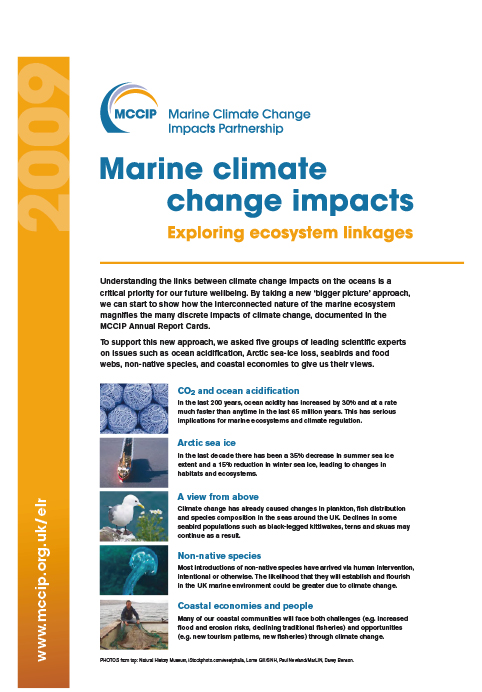
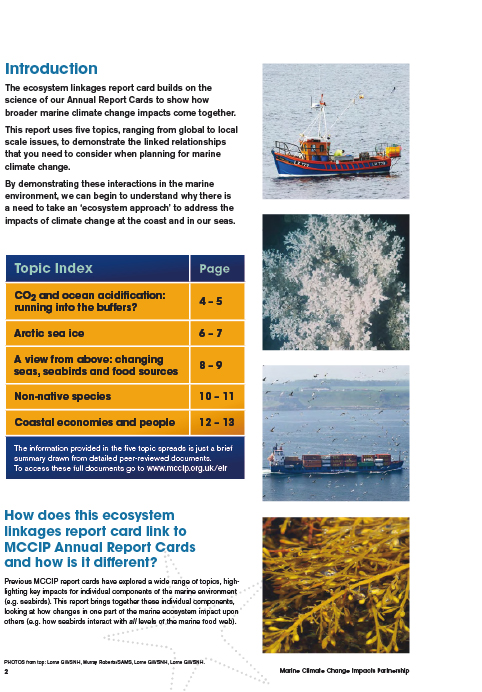
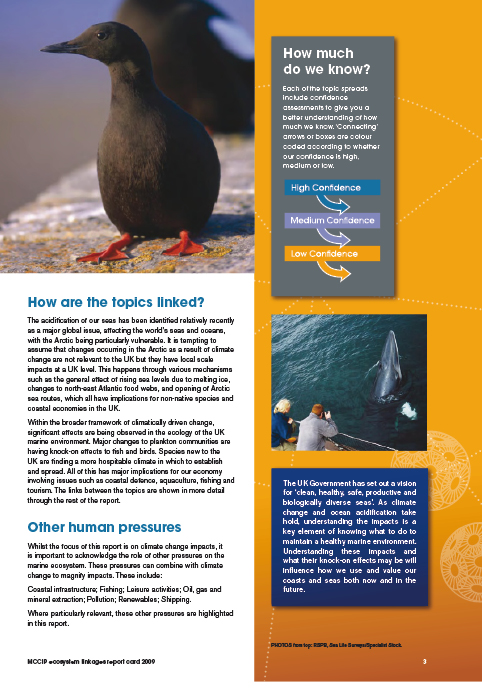
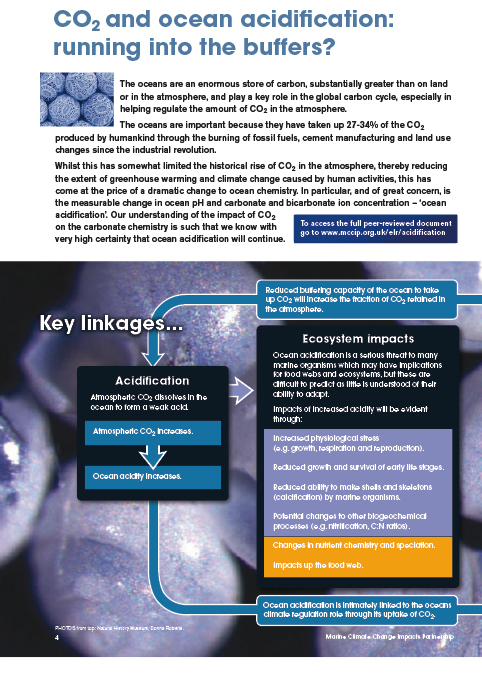
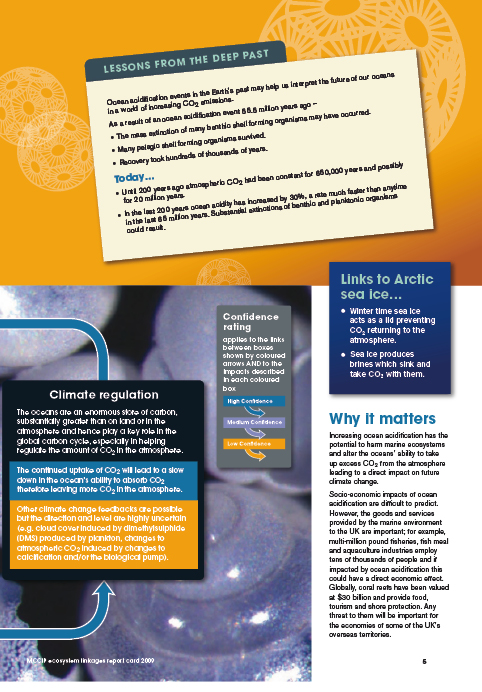

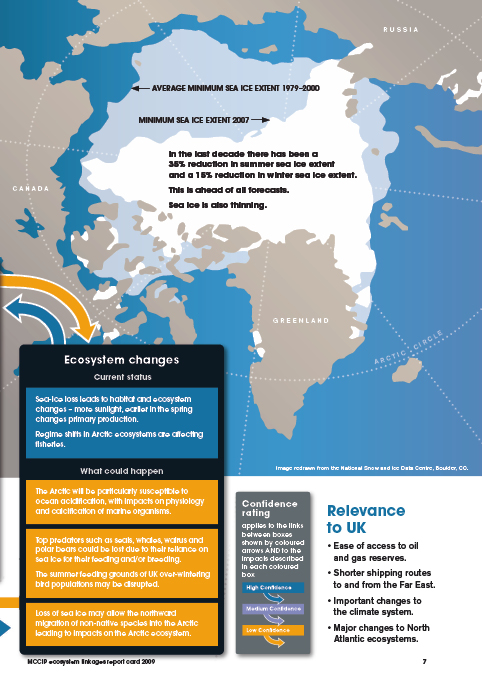

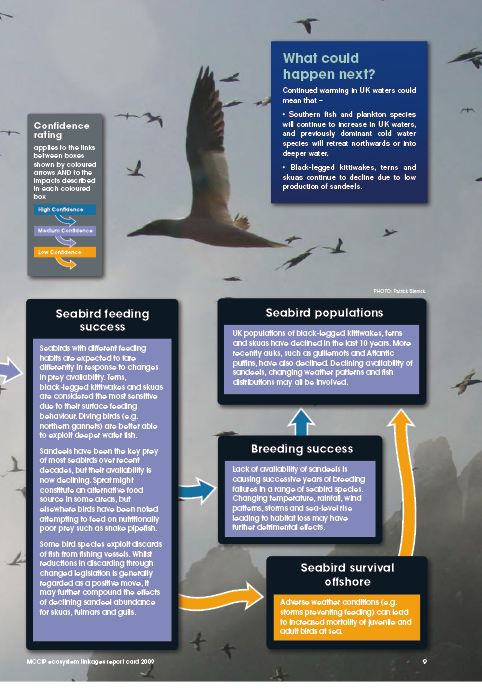



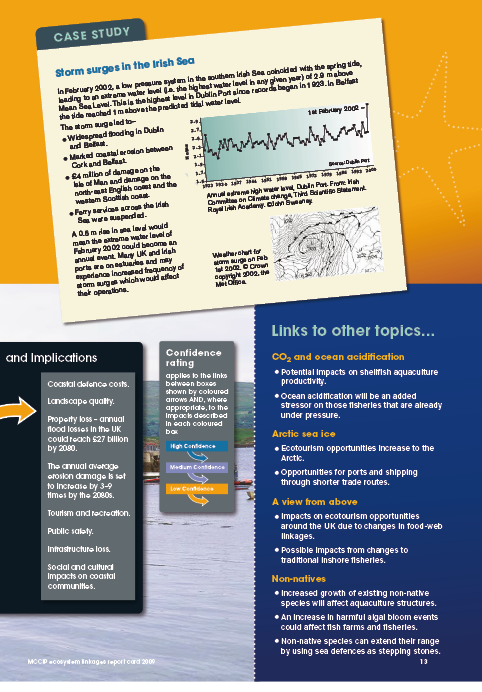
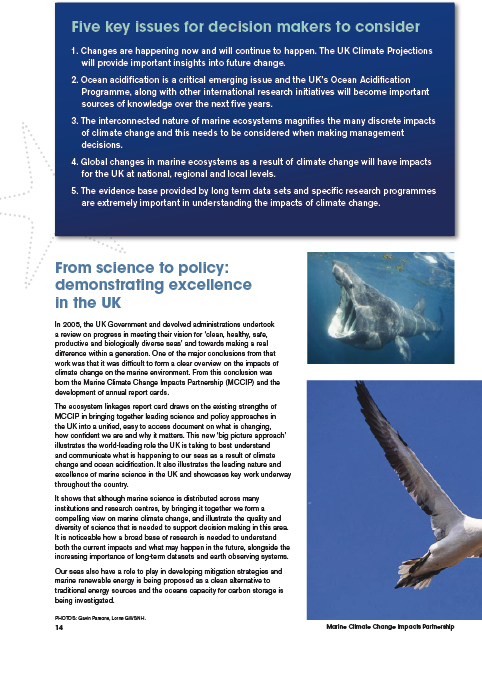
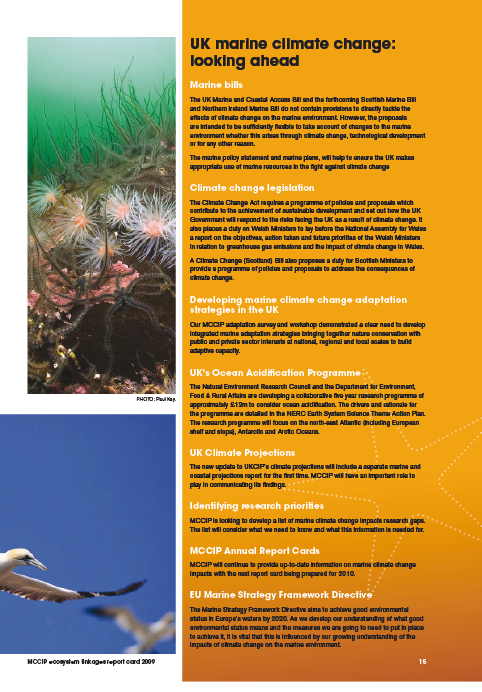

Extract from Bjorn Blomborg
in Wall Street Journal
From: Zsuzsa Horvath (PA for Bjorn Lomborg) [pa@lomborg.com]
Sent: 22 May 2009 22:42
To: Zsuzsa Horvath (PA for Bjorn Lomborg)
Subject: Lomborg in Wall Street Journal: The Climate-Industrial Complex
Please find below a copy of the newest op-ed by Bjorn Lomborg’s that has just been published in the Wall Street Journal. Thank you for your continued interest, but if you do not wish to receive Dr. Lomborg´s op-eds in the future, please let me know.
http://online.wsj.com/article/SB124286145192740987.html
The Climate-Industrial Complex
Some businesses see nothing but profits in the green movement.
By BJORN LOMBORG
Some business leaders are cozying up with politicians and scientists to demand swift, drastic action on global warming. This is a new twist on a very old practice: companies using public policy to line their own pockets.
The tight relationship between the groups echoes the relationship among weapons makers, researchers and the U.S. military during the Cold War. President Dwight Eisenhower famously warned about the might of the “military-industrial complex," cautioning that “the potential for the disastrous rise of misplaced power exists and will persist." He worried that “there is a recurring temptation to feel that some spectacular and costly action could become the miraculous solution to all current difficulties."
This is certainly true of climate change. We are told that very expensive carbon regulations are the only way to respond to global warming, despite ample evidence that this approach does not pass a basic cost-benefit test. We must ask whether a “climate-industrial complex" is emerging, pressing taxpayers to fork over money to please those who stand to gain.
This phenomenon will be on display at the World Business Summit on Climate Change in Copenhagen this weekend. The organizers -- the Copenhagen Climate Council -- hope to push political leaders into more drastic promises when they negotiate the Kyoto Protocol’s replacement in December.
The opening keynote address is to be delivered by Al Gore, who actually represents all three groups: He is a politician, a campaigner and the chair of a green private-equity firm invested in products that a climate-scared world would buy.
Naturally, many CEOs are genuinely concerned about global warming. But many of the most vocal stand to profit from carbon regulations. The term used by economists for their behavior is “rent-seeking."
The world’s largest wind-turbine manufacturer, Copenhagen Climate Council member Vestas, urges governments to invest heavily in the wind market. It sponsors CNN’s “Climate in Peril" segment, increasing support for policies that would increase Vestas’s earnings. A fellow council member, Mr. Gore’s green investment firm Generation Investment Management, warns of a significant risk to the U.S. economy unless a price is quickly placed on carbon.
Even companies that are not heavily engaged in green business stand to gain. European energy companies made tens of billions of euros in the first years of the European Trading System when they received free carbon emission allocations.
American electricity utility Duke Energy, a member of the Copenhagen Climate Council, has long promoted a U.S. cap-and-trade scheme. Yet the company bitterly opposed the Warner-Lieberman bill in the U.S. Senate that would have created such a scheme because it did not include European-style handouts to coal companies. The Waxman-Markey bill in the House of Representatives promises to bring back the free lunch.
U.S. companies and interest groups involved with climate change hired 2,430 lobbyists just last year, up 300% from five years ago. Fifty of the biggest U.S. electric utilities -- including Duke -- spent $51 million on lobbyists in just six months.
The massive transfer of wealth that many businesses seek is not necessarily good for the rest of the economy. Spain has been proclaimed a global example in providing financial aid to renewable energy companies to create green jobs. But research shows that each new job cost Spain 571,138 euros, with subsidies of more than one million euros required to create each new job in the uncompetitive wind industry. Moreover, the programs resulted in the destruction of nearly 110,000 jobs elsewhere in the economy, or 2.2 jobs for every job created.
The cozy corporate-climate relationship was pioneered by Enron, which bought up renewable energy companies and credit-trading outfits while boasting of its relationship with green interest groups. When the Kyoto Protocol was signed, an internal memo was sent within Enron that stated, “If implemented, [the Kyoto Protocol] will do more to promote Enron’s business than almost any other regulatory business."
The World Business Summit will hear from “science and public policy leaders" seemingly selected for their scary views of global warming. They include James Lovelock, who believes that much of Europe will be Saharan and London will be underwater within 30 years; Sir Crispin Tickell, who believes that the United Kingdom’s population needs to be cut by two-thirds so the country can cope with global warming; and Timothy Flannery, who warns of sea level rises as high as “an eight-story building."
Free speech is important. But these visions of catastrophe are a long way outside of mainstream scientific opinion, and they go much further than the careful findings of the United Nations panel of climate change scientists. When it comes to sea-level rise, for example, the United Nations expects a rise of between seven and 23 inches by 2100 -- considerably less than a one-story building.
There would be an outcry -- and rightfully so -- if big oil organized a climate change conference and invited only climate-change deniers.
The partnership among self-interested businesses, grandstanding politicians and alarmist campaigners truly is an unholy alliance. The climate-industrial complex does not promote discussion on how to overcome this challenge in a way that will be best for everybody. We should not be surprised or impressed that those who stand to make a profit are among the loudest calling for politicians to act. Spending a fortune on global carbon regulations will benefit a few, but dearly cost everybody else.
Mr. Lomborg is director of the Copenhagen Consensus, a think tank, and author of “Cool It: The Skeptical Environmentalist’s Guide to Global Warming" (Knopf, 2007).
Best wishes
Zsuzsa Horvath
Personal assistant
Phone: +36-1-321-6595
Sustainable Development Commission
Stock Take Report July 2006 – ‘Delivering improvements in existing housing
http://www.sd-commission.org.uk/publications.php?id=400
Submission from arc21
Our Ref: RB/9th March 09
Your Ref:
E-Mail: ricky.burnett@arc21.org.uk
9th March 2009
Northern Ireland Assembly
Environment Committee Office
Room 245
Parliament Buildings
Stormont
BT4 3XX
FAO Alex McGarel
Dear Mr McGarel,
Northern Ireland Assembly Environment Committee
Inquiry into Climate Change
I refer to your recent letter in respect of the above.
Climate change is viewed as a key issue not just within local government but also within the waste sector. The way forward for waste management in Northern Ireland is set out in the Northern Ireland Waste Management Strategy produced in 2006, entitled “Towards Resource Management “. The title is laudable but it was produced with little discernable reference to the issue of Climate Change. Using our resources more efficiently which correlates to reducing waste arisings will also reduce environmental impacts. Almost all environmental impacts are linked to the goods and services that the economy provides and these impacts can occur across the life cycle of a product.
The NI Waste Strategy could show more linkage with other strategic policy initiatives such as sustainable development. Consequently, there could be merit in producing a revamped National Waste Strategy which emphasises the need to combat climate change and demonstrates a more holistic and integrated approach to tackling the environmental and economic impacts of wastefulness in the use of material resources and energy. The English Waste Strategy was delayed until 2007 to take account of other strategic policy issues such as climate change. It quotes the Stern Review and suggests that methane emissions from landfill accounts for 3% of all UK greenhouse gas emissions with at that time, UK recycling estimated to save more than 18m tonnes of carbon dioxide per year.
It is worth noting that the other devolved administrations in Scotland and Wales are both in the process of considering their own National Waste Strategies with a view to producing a new Strategy that more appropriately reflects current thinking and we are given to understand that climate change is at the foremost in their thinking.
The waste sector is currently subject to a number of targets as a tool to drive forward the changes necessary. These targets have originated through legislation in Europe and are almost exclusively weight based. Examples of these include landfill diversion of municipal waste, recycling targets including packaging waste, waste electronics, end of life vehicles and batteries. It would be important that any targets emerging from this inquiry that impact on the waste sector are compatible with existing waste targets.
It is important to recognise that any strategy arising from this inquiry must be underpinned by a series of measures including the application of adequate resources to ensure suitable delivery. Experience in regards to the Sustainable Development and indeed the National Waste Strategy do not bode well in this regard. It is important that administrative and mechanical/procedural arrangements are put in place to facilitate a more holistic approach to implementation and delivery.
Finally it is important that decisions are based on evidence and therefore it is vital that adequate and appropriate research in undertaken to produce such evidence. This is as equally true in the waste sector as it is for other sectors such as energy and transport. We would encourage that a robust programme of research be developed to ensure that timely information is produced from which appropriate guidance may be formulated.
I trust this is of interest.
Yours sincerely,
R. Burnett
Policy Director
DETI, DHSS&PS and OFMDFM
Responses re What Extent PSAs Contribute
to NI’s Emission Reduction Target
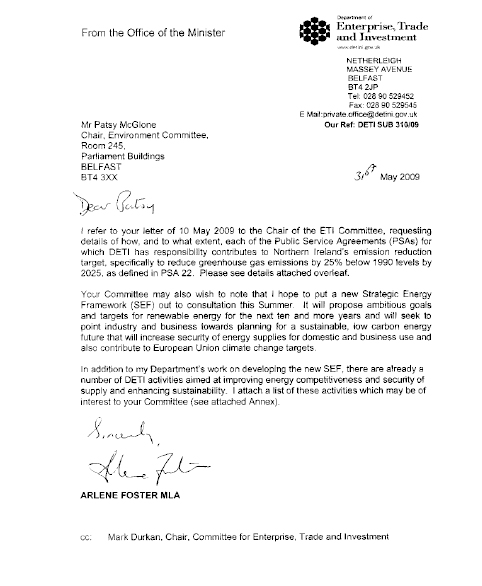
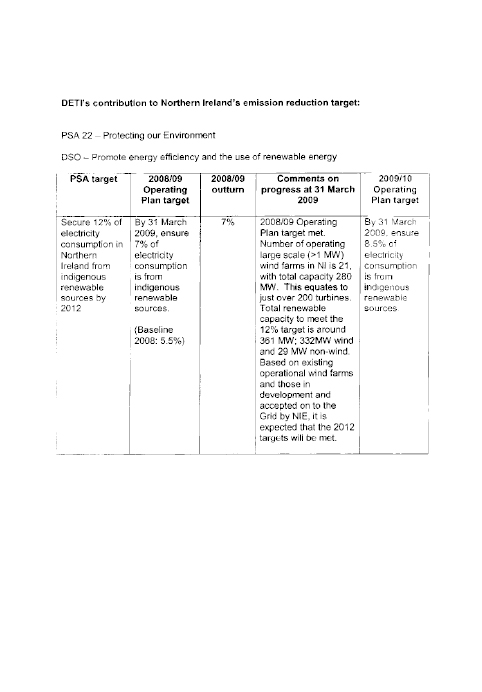

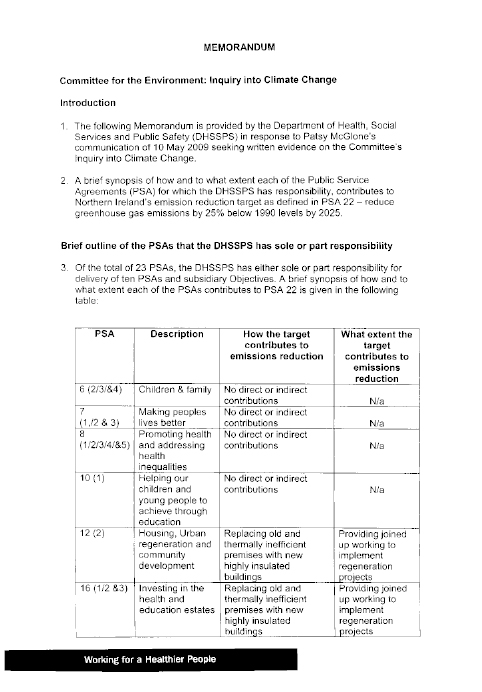
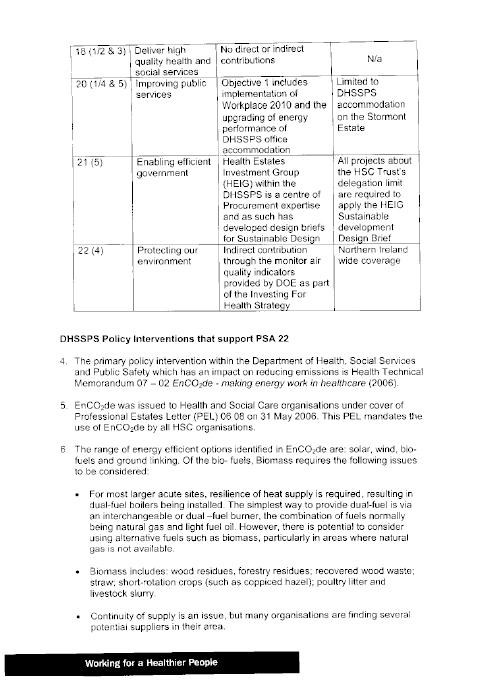
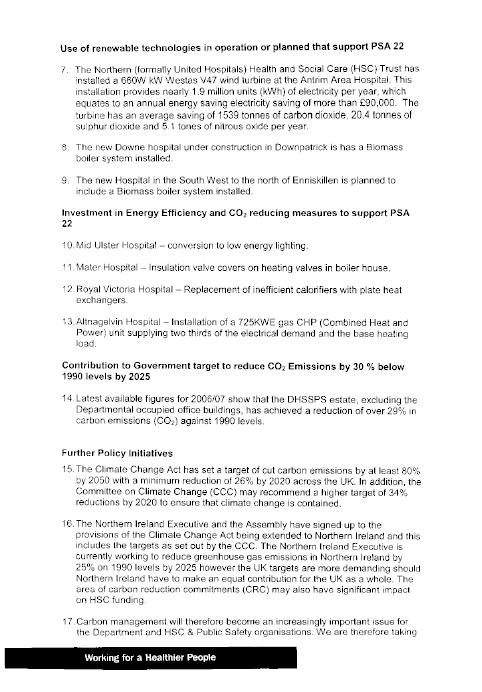

_fmt.jpeg) Committee for the Office of First Minister and deputy First Minister
Committee for the Office of First Minister and deputy First Minister
Room 404
Parliament Buildings
Tel: +44 (0)28 9052 1448
Fax: +44 (0)28 9052 1083
From: Cathie White
Clerk to the Committee for the Office of the First Minister and deputy First Minister
Date: 16 June 2009
To: Alex McGarel
Clerk to the Committee for the Environment
Subject: Response to PFG PSA Commitments to Climate Change
At its meeting on 10 June 2009, the Committee for the Office of the First Minister and deputy First Minister agreed to forward the response from the Office of the First Minister and deputy First Minister to your letter of 10 May 2009.

Cathie White
Committee Clerk
Cathie White
Clerk
Committee for OFMDFM
Room 416
Parliament Buildings
BELFAST
BT4 3XX 02 June 2009
Dear Cathie
Re: Letter from Committee of the Environment in relation to PFG PSA Commitments and climate change
Thank you for your letter of 15 May regarding the above. Several of the actions and targets contained within those PSA’s for which this Department has a lead responsibility contribute, or have the potential to contribute, towards Northern Ireland’s emissions reduction targets. Specifically;
PSA 11: Driving Investment and Sustainable Development
- The Investment Strategy (ISNI) contains a commitment to build sustainability into each infrastructure project as comprehensively as possible – with a view to avoiding the creation of an ‘energy intensive’ society.
- Target 35 of the first Sustainable Development Implementation Plan was concerned with reducing Northern Ireland’s greenhouse gas emissions and brought together commitments and targets from across government that would contribute to achieving this – it is our intention to build on this as we develop the new Sustainable Development Implementation Plan.
- Development of a Sustainable Consumption Action Plan for Northern Ireland - sustainable consumption is about ensuring efficient use of natural resources, including fossil fuels, and limiting our impact on the environment to that which can be sustained in the long-term, including reducing carbon emissions – we are continuing our work in this area.
- Within the new Sustainable Development Implementation Plan, we will progress delivery, where appropriate, of the key targets associated with strategic sustainable
- consumption and production objectives - these key targets are concerned with resource efficiency, sustainable procurement and consumption patterns. Taken together, the range of measures associated with these targets has the potential to effect a substantial reduction in Northern Ireland’s greenhouse gas emissions.
- The Statutory Duty in relation to sustainable development requires relevant public authorities to act, in the exercise of their functions, in the manner they consider best calculated to promote the achievement of sustainable development in Northern Ireland.
PSA 21: Enabling Efficient Government
- Strategic procurement, managed through a centre for procurement expertise and carried out in line with sustainable development principles has the potential to deliver reductions in the greenhouse gas emissions associated with the functions of the Department, while contributing to the most economically advantageous outcomes.
The actions and objectives outlined above, will continue to form an important part of the ongoing sustainable development policy process. As we develop our new Sustainable Development Implementation Plan, we look forward to consulting with a wide range of stakeholders, to help refine these further, as part of the Executive’s broader efforts to achieve our emissions reduction targets.
I hope that you find this information useful.
Yours sincerely
Signed Gail McKibbin
GAIL MCKIBBIN
Departmental Assembly Liaison Officer
DRD Response to Committee
for Information on PSAs
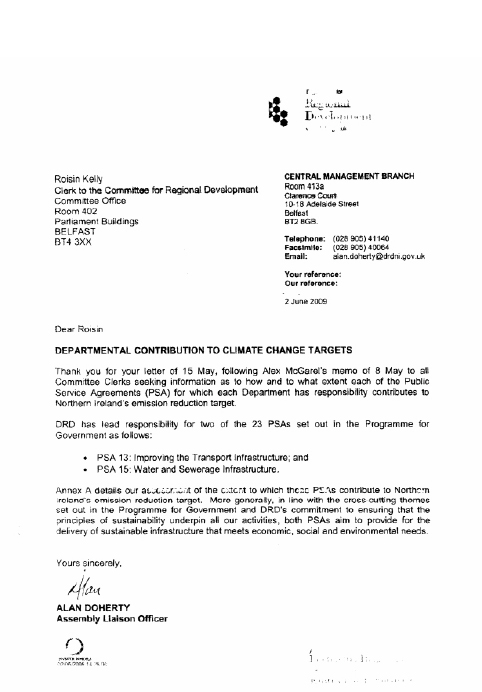

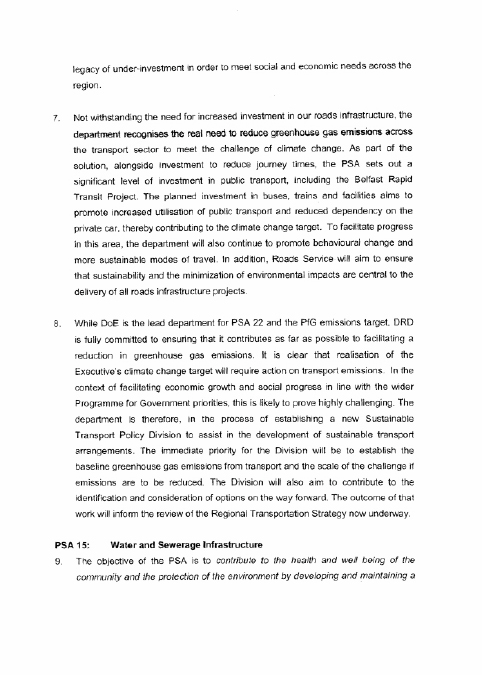
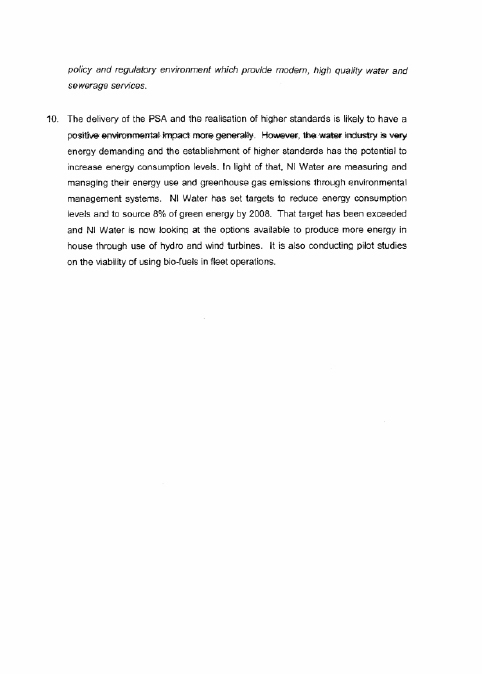


Response from Stop Climate Chaos NI

Further Information to the Environment Committee Inquiry into Climate Change
The Stop Climate Chaos Northern Ireland (SCC NI) coalition would like to supply the Committee with the following information as supplementary to the presentation made on 28 May.
1. Northern Ireland’s Emissions
During questions from members, the Coalition quoted two figures (22.46 and 16.3 million tonnes) as the most recent emissions totals for Northern Ireland. We were asked to clarify why two figures were quoted.
Both the figures quoted are official and accurate, however they do relate to different aspects of Northern Ireland’s emissions. The first figure (22.46 million tonnes) relates to total greenhouse gas emissions (this includes carbon dioxide, methane, nitrous oxide, etc expressed in tonnes of carbon dioxide equivalent), while the second figure (16.3 million tonnes) is for carbon dioxide emissions only (both figures were calculated by AEA Technology, for DEFRA and the Devolved Administrations – see pages 24 and 25 of DOENI’s Environmental Statistics Report). As is standard practice, the ‘carbon footprint’ figure quoted in our original submission (12.83 tonnes per capita) was calculated by dividing the total greenhouse gas emissions (22.46 million tonnes) by total population (estimated at 1.75 million).
While both figures are of interest (the Northern Ireland Sustainable Development Strategy set separate targets for reductions of greenhouse gases emissions and for reductions of carbon dioxide emissions), the Coalition believes that the total greenhouse gas figure is the most important. The Coalition is calling on the Northern Ireland Assembly to set a legally binding target to reduce total greenhouse gas emissions in Northern Ireland by 80% by 2050, with an interim target to reduce greenhouse gas emissions by at least 34% by 2020. These targets are adopted by the UK Climate Change Act but do not specifically apply to Northern Ireland.
2. Measures Identified by the Committee on Climate Change for Northern Ireland
The Committee on Climate Change’s first report, released in December 2008, includes an analysis of what opportunities exist for making emission reductions in Northern Ireland. It states Northern Ireland could contribute emissions reductions of over 2MtCO2e (Million tonnes of carbon dioxide equivalent) in 2020:
- Emissions from buildings and industry could be reduced by up to 1 MTCO2 in 2020 by using energy more efficiently;
- More efficient vehicles and new transport fuels could deliver reductions of up to 1 MTCO2 in 2020;
- Emissions from agriculture, land use and forestry and waste management sectors could be reduced by up to 0.5 MtCO2e in 2020.
Members of the Environment Committee correctly identified that 2MtCO2e reductions represents less than 10% of Northern Ireland’s emissions; a figure which is pitifully short of the 34% reduction target set for the UK as a whole for 2020 and also the Programme for Government target of 25% reductions by 2025. The Environment Committee then asked the Coalition to identify the measures that should be introduced to achieve additional reductions in emissions. The Coalition believes that first and foremost Northern Ireland should request the Committee on Climate Change to conduct further analysis of how Northern Ireland should best achieve a 34% reduction by 2020.
It should be noted that the Committee on Climate Change acknowledged in their report the limitations of the methodology used to estimate Northern Ireland’s contribution. For example, when considering the reductions that could be achieved by direct and indirect abatement in buildings it is noted that the methodology ‘does not account for national differences in key aspects related to fuel use and energy efficiency of existing buildings which will impact on emissions reduction potential’. It is also noted that ‘further work would be required before these [estimates] could form part of national emissions reduction strategies or national carbon budgets’.
The Committee on Climate Change’s statutory duties include:
To provide advice on the sectors of the economy in which there are particular opportunities for contributions to be made towards meeting the budgets through reductions in emissions.
The Committee must, at the request of a national authority other than the Secretary of State, provide advice, analysis, information or other assistance to the authority in connection with any target, budget or similar requirement relating to emissions of greenhouse gas that has been adopted by the authority or to which the authority is otherwise subject.
(Climate Change Act Sections 34 (1d) and 38 (3)).
In effect this means that if the Assembly set a target the Committee on Climate Change can offer advice on how best to achieve it. The Coalition strongly recommends this course of action.
3. The Role of the OFMDFM Committee in Climate Change Targets
The Coalition believes that specific responsibilities to deliver the targets set in a Northern Ireland Climate Act and in the associated carbon budgets should be identified in public service agreements for each department. It would follow that each Committee would then have a role in scrutinising their department’s performance.
The Coalition is also aware that climate change and energy related policies are controlled and scrutinized by many Departments and Committees. For example, OFMDFM is responsible for sustainable development, DFP for building regulations, DRD for transport policy and DARD for bioenergy policy. It may therefore be advantageous for Northern Ireland to adopt a governance model similar to the Department of Energy and Climate Change (DECC) in England and Wales, to ensure greater cohesion and facilitate better integration across the UK. The Committee associated with such a department would play a critical role in overseeing Northern Ireland’s performance against climate change legislation.
Response from CNCC
Response to questions from Environment Committee further to CNCC’s oral evidence 28th May
The Committee requested information on the amount of energy saved per wind turbine as opposed to the more conventional power stations, including the amount of carbon used in the production and installation of turbines and the payback time for turbines.
The amount of energy and/or emissions, especially Carbon Dioxide (CO2) saved per wind turbine depends on what it is the wind power displaces. For example, if you displaced 1 MW of electricity produced from burning coal with 1 MW of electricity produced from wind power that would, on average, result in savings in terms of CO2 emissions of approximately 99%. This figure is based on an average (971g) of the BERR figures of 955 to 987 grammes of CO2/kWh for UK coal as compared to an average of 10.5 gCO2/kWh (range 9 to12gCO2/kWh) for onshore wind power. If the electricity produced from wind power displaced that produced from gas, the savings would be less, because gas has lower CO2 emissions than coal, as demonstrated by the fact that most of the emissions reduction achieved in NI in recent years was primarily due to gas replacing coal and oil as an energy source in our power stations.
However, there are a range of figures even for one fuel source because there are so many variables, for example, different plants vary according to
- their level of efficiency for the same fuel source
- the intrinsic variation in the quality/purity of the fuel sources e.g. the carbon content of coal
- the efficiency of the plant itself e.g. those with additional features such as filters or scrubbers such as flue gas desulphurisation units will tend to have lower efficiencies, as will older plants.
Taking the first point above in relation to the variability of plants using the same fuel source, Combined Cycle Gas Turbine (CCGT) plants, for example, are much more efficient than, the older, Open Cycle Gas Turbine (OCGT) plants. For example, at Ballylumford, the thermal efficiency of the CCGT is approximately 54% efficiency whereas, the older, OCGT operated at approximately 33% efficiency, see http://www.premier-power.co.uk/power-generation/ccgt-plant/ for more. Similarly, according to Coolkeeragh’s own figures, the CCGT there operates at 55% efficiency as opposed to the 28% efficiency of the previous plant, see http://www.coolkeeraghesb.co.uk/press_news/press_releases/latest_article.htm
However, a gas powered Combined Heat and Power (CHP) plant, where the heat generated is also used, would have an even higher efficiency, of approximately 80% or more. CHP plants are much more efficient than ‘conventional’ plants, whatever the fuel. One CHP plant, Avedor, in Denmark operates at 95% efficiency. A CHP plant powered by renewable energy e.g. biomass would have yet lower emissions, because of the nature of the fuel (renewable rather than fossil).
If you look at other gases like sulphur oxides and/or nitrous oxides or a range of gases together, the picture becomes even more complicated. In short, the emissions vary from station to station, even with the same fuel source, so unless you have detailed information on the figures for one particular station, you will have to base your calculations on an average of emission savings or a range of savings. Further to that, I have given, in Table 1, a number of sources for the life cycle analysis (LCA) of emissions from various energy sources. The LCA figures include things like emissions arising from the construction of the power plant and so should give a better representation of the full impact of a particular power station.
According to the Irish Wind Energy Association, the energy payback time for a wind turbine is 3 to 5 months, see http://www.iwea.com/index.cfm/page/environmentalimpacts?#q62. This ties in with the figures from other bodies like the Danish Wind Energy Association who say 3 to 6 months. Furthermore, according to the British Wind Energy Association, “this compares favourably with coal or nuclear power stations, which deliver only a third of the total energy used in construction and fuel supply" see http://www.bwea.com/edu/calcs.html . According to “Can Nuclear Energy Reduce CO2 Emissions?", published in Australian Science July 2005, based upon the use of high grade uranium ores, nuclear power stations must operate for 7-10 years before generating their energy inputs, compared to 3-6 months for wind power. For low grade ores the energy inputs are so large that a nuclear power station emits more CO2 than an equivalent gas fired power station, see www.sustainabilitycentre.com.au/Nukes&CO2.pdf
According to most sources, lignite is far and away the dirtiest fuel evaluated, with emissions approaching 1400gCO2/kWh, (e.g. according to IPCC) which would make lignite between 2 and 3 times as polluting (in terms of CO2) as gas and roughly 140 times as polluting as wind power.
Table 1 Life Cycle Analysis (LCA) of different energy sources
| Lignite | Coal | Oil | Gas | Nuclear | PV | Wind | Hydro | Biomass | Source | |
| 1100-1700g | 950-1250 | 500-1200 | 470-780 | 2.8-24 | 43-73 | 8-30 onshore and 9-19 offshore | 1-34 | 35-99 | IAEA Weisser paper | |
| 1075-1350 | 190 - 1050 | 600-750 | 400-450 | Up to 75 | Up to 100 | Up to 25 | IPCC | |||
| 955-987 | 818 | 446 | 154-178 | 9-12 | 5-32 | BERR | ||||
| 955-987 | 818 | 430 | 98-167 | 7-9 | 3.6-11.6 | 17-27 | Internat. Energy Agency | |||
| Energy payback time, months | 94-120 | 36-48 | 3-5 onshore 6-8 offshore |
Sources
IAEA Weisser A guide to life-cycle greenhouse gas (GHG) emissions from electric supply technologies www.iaea.org/OurWork/ST/NE/Pess/assets/GHG_manuscript_pre-print_versionDanielWeisser.pdf
IPCC AR4 Working Group 3 report Mitigation of Climate change Chapter 4 Energy Supply
http://www.ipcc.ch/pdf/assessment-report/ar4/wg3/ar4-wg3-chapter4.pdf .
Approximate figures based upon graph, page 283.
BERR – DTI New and Renewable Energy Prospects for the 21st Century Supporting Analysis P213 http://energytech.at/(en)/allgemein/results/id550.html
IEA – Benign Energy? The Environmental Implications of Renewables www.iea.org/textbase/nppdf/free/1990/benign1998.pdf
Nuclear
As regards nuclear power, taking a life cycle analysis it is clearly not zero carbon, as the UK Government admitted, in the Energy White Paper consultation of 2007 (p188, para 42). As regards the life cycle emissions on nuclear, in a paper in Nature “Nuclear Energy assessing the emissions" see http://www.nature.com/climate/2008/0810/full/climate.2008.99.html, an evaluation of over LCA 100 analyses of nuclear which had a range of 1.4 to 288g CO2eq/kWhe led the author to conclude that a mean value of 66g CO2eq/kWhe was reasonable.
The OKO Institute of Applied Ecology report “Comparing Greenhouse Gas Emissions and Abatement Costs of Nuclear and Alternative Energy Options from a Life-Cycle perspective" attributes nuclear power plants in Germany with 34 g/CO2 per kWh. Other studies have come up with higher figures of between 30 to 60 g/CO2 per kWh. Some sources have much higher estimates e.g. of up to 73 to 230g CO2 per kWh. The OKO report also says on page 6
“The net CO2 emissions of electricity from small scale gas-fired power cogeneration plants are lower than CO2 emissions of electricity produced in nuclear power plants."
It is worth pointing out the government’s own advisors, the Sustainable Development Commission have argued against the use of nuclear. The SDC report “Is nuclear the answer?" (2006) said on page 22
“OUR ADVICE TO THE GOVERNMENT IS THAT THERE IS NO JUSTIFICATION FOR BRINGING FORWARD PLANS FOR A NEW NUCLEAR POWER PROGRAMME AT THIS TIME, AND THAT ANY SUCH PROPOSAL WOULD BE INCOMPATIBLE WITH ITS OWN SUSTAINABLE DEVELOPMENT STRATEGY"
M Campbell June 2008
Carbon in the Vegetation and
Soils of Northern Ireland
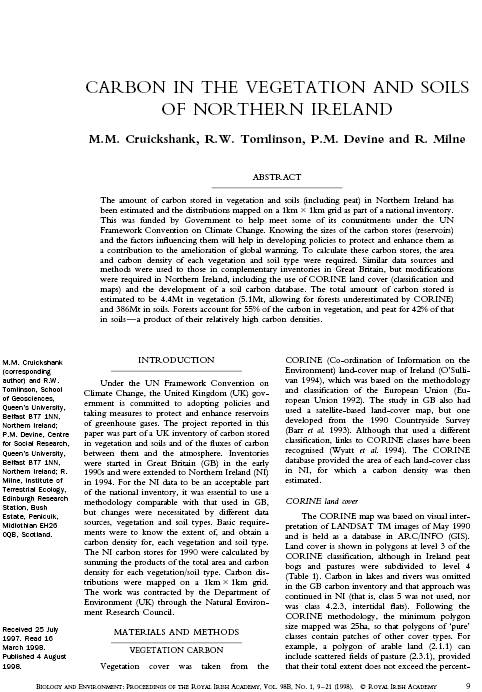

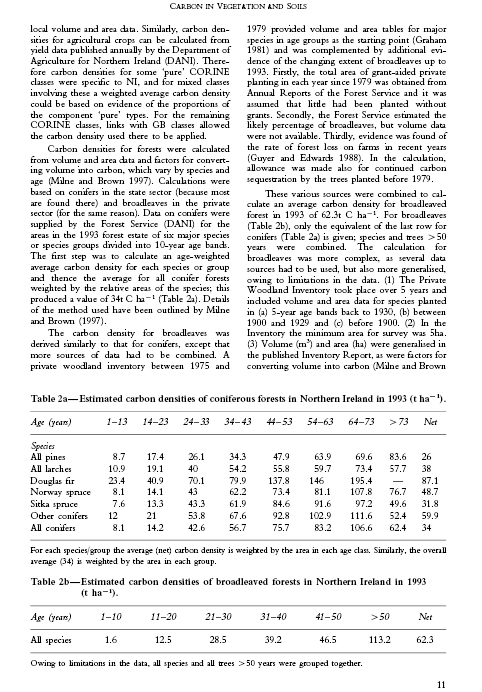
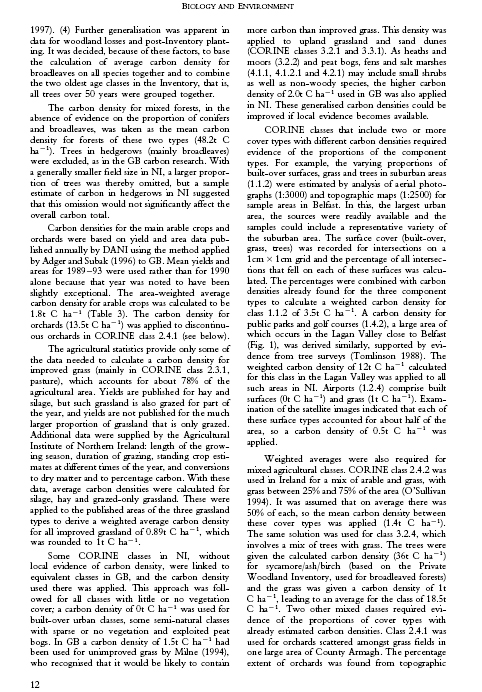
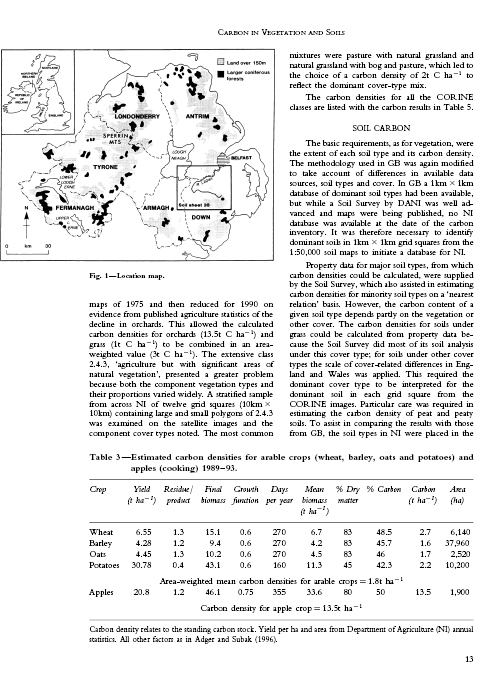


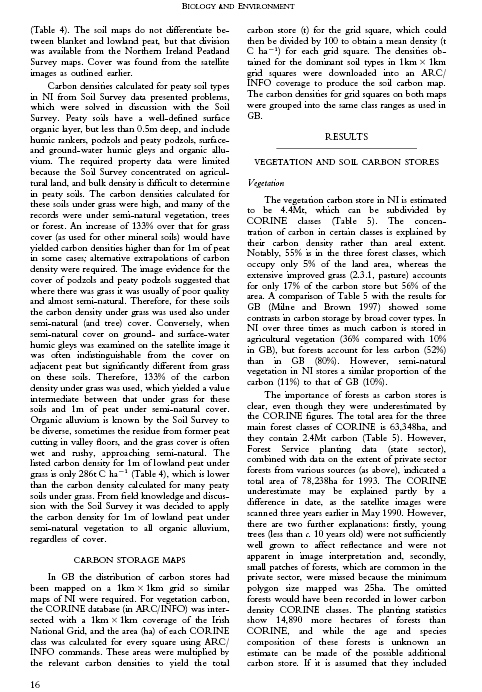


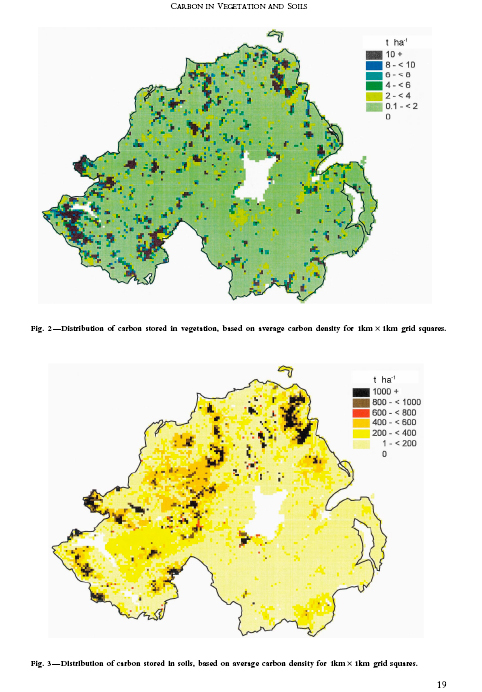
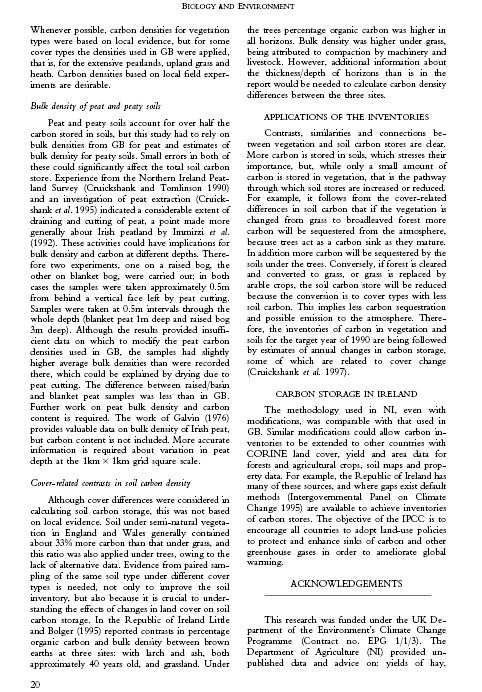
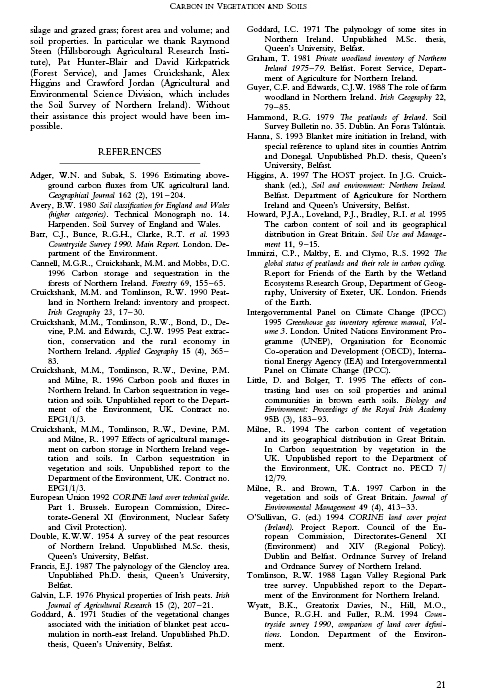
http://www.defra.gov.uk/farm/environment/climate-change/pdf/climate-ag.pdf
Research Paper – Cross cutting
scrutiny of climate change structures
in Wales and the Republic of Ireland
Jeff Mochan, Research Officer
12 June 2009
The purpose of this note, prepared for the Committee for the Environment, is to outline the cross-cutting nature of the scrutiny roles of:
- The Sustainability Committee of the Welsh Assembly.
- The Joint Committee on the Environment, Heritage and Local Government and the Joint Committee on Climate Change and Energy Security in the Republic of Ireland Houses of the Oireachtas.
Wales
The Welsh Assembly Sustainability Committee[1] considers and reports on the relevant duties placed on the Assembly, the First Minister, Welsh Ministers or the Commission which relate to climate change, among other issues. Its reach, therefore, is not limited to the Department for Environment, Sustainability and Housing[2], which has responsibility for cross-cutting measures of mitigation and adaptation of climate change. As its remit includes the relevant duties placed on the Assembly, the First Minister, Welsh Ministers or the Commission which relate to climate change, its scrutiny cuts across all Ministers and Departments relevant to climate change.
Republic of Ireland
The Joint Committee on the Environment, Heritage and Local Government[3] scrutinises the work of the Department for Environment, Heritage and Local Government, which has responsibility for addressing climate change. Its reach is limited, therefore, to the Department for Environment, Heritage and Local Government[4], and its scrutiny only applies to that Department. It does not, therefore, cut across all Ministers and Departments relevant to climate change.
The Joint Committee on Climate Change and Energy Security[5] considers medium and long-term climate change targets, and key measures to meet them, among other things. Its reach is not limited to any one Minister or Department, and its scrutiny cuts across all Ministers and Departments relevant to climate change.
[1] http://www.assemblywales.org/bus-home/bus-committees/bus-committees-third1/bus-committees-third-sc-home.htm
[2] http://wales.gov.uk/about/departments/desh/?lang=en
[3] http://www.oireachtas.ie/viewdoc.asp?fn=/documents/Committees30thDail/J-EnvHerLocGov/Homepage.htm
[4] http://www.environ.ie/en/AboutUs/
[5] http://www.oireachtas.ie/viewdoc.asp?fn=/documents/Committees30thDail/J-Climate_Change/Orders_of_Reference/document1.htm
Carbon Trust Support to the Public Sector
in other Devolved Administrations
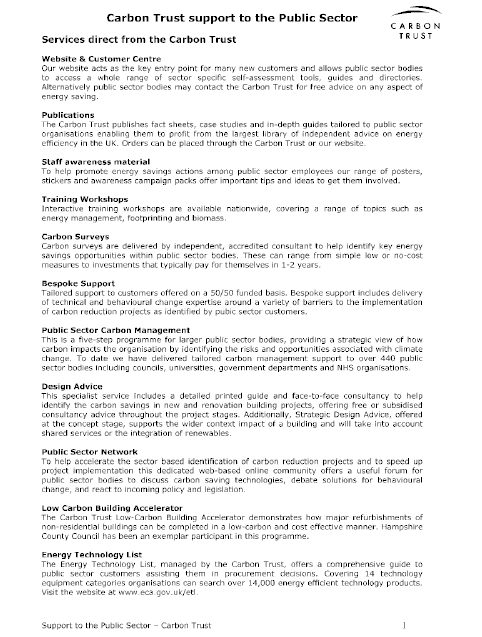
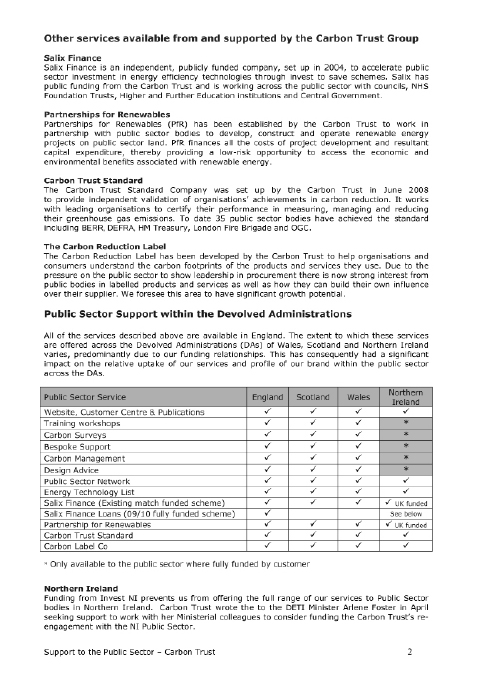

Reports published following
Sustainability Committee’s Inquiry
into Carbon Reduction in Wales
From: Hawkins, Virginia (Assembly - Committee Service) [mailto:Virginia.Hawkins@Wales.gsi.gov.uk]
Sent: 11 June 2009 09:14
To: McGarel, Alex
Cc: Singleton, Meriel (Assembly - Commitee Service)
Subject: Inquiry into climate change
Dear Alex
Attached are Word versions of the carbon reduction reports that we have published so far – we still have a report into carbon reduction by land use to publish (in July) and our final report giving strategic recommendations in October.
Also attached are the letters written to individual ministers and copied to the Minister for Environment, Sustainability and Housing following the committee’s scrutiny session no mainstreaming sustainability within their portfolios. The letters are not in the public domain yet as they will form the annex of our report. We would appreciate it if you did not publish them until we have published out report which should be by the end of June.
I have had a quick look at the Climate Change Act and the reporting requirements for Welsh Ministers are different to those for Northern Irish Ministers. The Northern Ireland Ministers do have to be consulted, however, by the Secretary of State on the setting of carbon budgets and the reporting of progress towards meeting them. There is, however, a requirement for the ‘appropriate department’ in Northern Ireland to publish an adaptation programme. Interestingly, I note that the reference in the Climate Change Committee’s carbon budget documentation is to the Scottish and Welsh Governments and the Northern Ireland Department of the Environment which might perhaps indicate that they are not dealing with Northern Ireland at Ministerial level.
Finally, here is a link to our Minister’s statement about setting up the Climate Change Commission for Wales and a link to their website.
http://new.wales.gov.uk/about/cabinet/cabinetstatements/2007/ccomm/?lang=en
I hope some of this is useful – please let me know if you would like any more information or if you would like a formal, more focussed response form the committee.
Best wishes
Dr Virginia Hawkins
Clerc Phwyllgor
Committee Clerk
Gwasanaethau’r Pwyllgorau
Committee Service
Cynulliad Cenedlaethol Cymru
National Assembly for Wales
T: 029 2089 8409
www.cynulliadcymru.org
www.assemblywales.org

Residential Carbon Reduction in Wales
1st report of the Sustainability Committee’s Inquiry into Carbon Reduction in Wales
March 2008
Contents
Page
Chair’s Introduction xx
Chapter 1: Introduction xx
Chapter 2: Key Issues and Recommendations xx
Chapter 3: The role of the planning system xx
Chapter 4: New buildings xx
Chapter 5: Existing buildings xx
Chapter 6: Behavioural change xx
Chapter 7: Targets xx
Annex A: Summary of recommendations xx
Annex B: List of respondents to the call for written evidence xx
Annex C: List of respondents providing oral evidence xx
Annex D: Carbon reduction calculations xx
Committee Membership
| Name | Constituency |
| Mick Bates (Chair) | Montgomeryshire |
| Lorraine Barrett | Cardiff South and Penarth |
| Alun Davies | Mid and West Wales |
| Lesley Griffiths | Wrexham |
| Alun Ffred Jones | Arfon |
| Leanne Wood | South Wales Central |
| Darren Millar | Clwyd West |
| Karen Sinclair | Clwyd South |
| Brynle Williams | North Wales |
Chair’s Introduction
“There is no place like home. But our homes are responsible for 27 per cent of the UK’s carbon emissions. If the UK is to play its part in avoiding catastrophic climate change then we must drastically reduce them……….. The investment and the political courage required are substantial. But the results promise to be spectacular: fuel poverty wiped out, energy security enhanced and true leadership in the transition to a dynamic low-carbon economy. There is not a moment to lose".
Tony Juniper Executive Director Friends of the Earth England, Wales &
Northern Ireland in: HOME TRUTHS: A low-carbon strategy to reduce UK housing emissions by 80% by 2050, Brenda Boardman University of Oxford’s Environmental Change Institute 2007.
Global warming is an issue that concerns all of us and, as we experience first hand its effects, impacts on all our lives. One of the biggest contributions to global warming is the emission of carbon dioxide (CO2) into the atmosphere. CO2 emissions come from a variety of sources but everything we do, from making a cup of tea to building an office block, has an impact on the amount of CO2 that is released into the atmosphere.
As soon as the Committee was first established, we were unanimous in our view that our first priority should be to examine how Wales is contributing to the urgently needed task of reducing carbon emissions and contributing to national and international targets.
In this, the first report into carbon reduction in Wales, we look at how CO2 emissions can be reduced in housing and residential developments. We received evidence from a wide range of people and organisations who outlined the main challenges in reducing CO2 emissions. We were also given many examples of good practice and it is around these concrete actions that we have built our recommendations.
It is important for every organisation and individual to play their part in reducing the amount of carbon dioxide we emit in Wales. Not only will it help to secure a pleasant, healthy standard of living for our own children but will help to ensure a future for generations across the world.
I would like to thank all those who have given us written and oral evidence for sharing their knowledge and expertise with us and for their openness and frankness in expressing their views to us.
This report will form part of our final report which will be published in the summer of 2008. We have also published an introductory document which is designed to be read as an introduction to any of the topic reports that we produce on carbon reduction in Wales and contains our terms of reference and the policy background to carbon reduction. The introduction document can be found on our website at:
We welcome your thoughts and comments on this report, which can be sent to us at: Sustainability.comm@Wales.gsi.gov.uk or write to us at:
National Assembly for Wales
Assembly Parliamentary Service
Assembly Offices
Cardiff Bay
CF99 1NA
We would like to publish some of your ideas and views on our website so that other people can read them.
You can also find out more about how to contribute to our written consultations on future topics on our website at:
Chapter 1 – Introduction
Carbon reduction from the residential sector
1.1 The residential sector is thought to account for about 10 per cent of the carbon dioxide emissions in Wales (plenary speech on climate change by the First Minister, 13 February 2007). Around two-thirds of the housing stock that will be standing in 2050 is likely to have been built before 2005 (Review of sustainability of existing buildings, Department for Communities and Local Government, November 2006); the average existing home requires four times the energy to heat as one built to the latest building regulations (Energy efficiency action plan, Department for the Environment, Food and Rural Affairs (DEFRA), 2007). In 2004, approximately 84 per cent of domestic energy was used on space and water heating (61 per cent for space heating and 23 per cent for hot water) (Domestic energy consumption by end use, 1970 to 2005 Department for Business, Enterprise and Regulatory Reform ).
1.2 All new buildings funded or built on land disposed of by the Welsh Assembly Government must now meet the BREEAM Ecohomes Excellent environmental standard (UK energy efficiency action plan, DEFRA, 2007).
1.3 In 2004, residential customers in Wales consumed 5,600GWh of electricity (Digest of United Kingdom energy statistics, Department for Trade and Industry (DTI), 2006). Of the total residential electricity consumption, the proportions used by different types of usage are as follows: miscellaneous appliances 21 per cent, cold appliances (e.g. fridges and freezers) 18 per cent, internal lighting 16 per cent, consumer electronics 16 per cent (of which two-fifths is from televisions), cooking 15 per cent (more than one-quarter of which is from kettles), and wet appliances (e.g. washing machines, washer/dryers and dishwashers) 14 per cent (Digest of United Kingdom energy statistics DTI, 2006). The standby facility is responsible for an estimated 6 per cent of domestic electricity consumption (Energy consumption in the United Kingdom, DTI and Office for National Statistics, July 2002). By 2020, home computers and consumer electronics are projected to account for 45 per cent of electricity used in the home (The ampere strikes back: How consumer electronics are taking over the world, Energy Saving Trust, June 2007)
1.4 Energy consumption for lighting has increased by 63 per cent between 1970 and 2000, and by 11 per cent between 1990 and 2000, mainly due to the shift from rooms being lit by single ceiling bulbs towards multi-source lighting (DTI and National Statistics, Energy consumption in the United Kingdom, July 2002). The UK Government is currently looking to implement a ban on the sale of incandescent bulbs by 2011.
1.5 The main means of reducing the carbon dioxide burden from dwellings currently being used are the following: Welsh Assembly Government
- Reducing demand for space heating in existing buildings, through grants or other financial incentives and awareness-raising about improving insulation.
- Increasing the use of renewable energy in new-build dwellings (minimum level determined by both Welsh national and local planning guidance).
- Changing the energy source for space and water heating to more carbon-efficient sources (encouraging the penetration of the gas network throughout Wales – determined by negotiation with private companies; improving the supply infrastructure and consumption of biomass heating – determined by the Welsh Assembly Government through grants, and through negotiation with the private sector).
UK Government
- Reducing demand for space heating in new buildings, by requiring better standards of insulation through Building Regulations (DCLG, Building Regulations).
- Changing the energy source for space and water heating to more carbon-efficient sources (encouraging the uptake of renewable space and water heating sources – assisted via the UK Government through grants or other financial incentives Low Carbon Buildings Programme, Department for Business, Enterprise and Regulatory Reform).
- Legislating to ban energy-inefficient appliances (such as filament light bulbs – currently determined by the Government, Italy is planning mandatory energy efficiency standards for appliances (Italian Ministry for the Environment, Land and Sea, Fourth National Communication under the UN Framework Convention on Climate Change, p.100, November 2007).
Europe
- Reducing the energy demand of appliances (reducing stand-by energy use (European Commission, Eco-design consultation forum discusses concrete action to reduce ‘standby’ electricity consumption), and legislating for improved minimum standards for energy-efficiency)
- Requiring energy labels on buildings (European Parliament and European Council, Directive 2002/91/EC of the European Parliament and of the Council of 16 December 2002 on the energy performance of buildings), cars (European Parliament and European Council, Directive 1999/94/EC of the European Parliament and of the Council of 13 December 1999 relating to the availability of consumer information on fuel economy and CO2 emissions in respect of the marketing of new passenger cars) and appliances (European Council, Council Directive 92/75/EEC of 22 September 1992 on the indication by labelling and standard product information of the consumption of energy and other resources by household appliances).
1.6 The former Environment, Planning & Countryside Minister announced an aspiration in Plenary on 13 February 2007 that all new buildings would be carbon neutral by 2011 and stated that the Welsh Assembly Government would be opening negotiations with the UK Government with a view to seeking devolution of building regulations (Welsh Assembly Government, Carwyn Jones AM, Minister for Environment, Planning & Countryside, Sustainable Buildings, Cabinet Oral Statement, 13 February 2007).
1.7 The Welsh Assembly Government launched a consultation on the draft Planning Policy Statement: Planning and Climate Change, in December 2006 (Welsh Assembly Government, Planning Policy Statement, Planning for Climate Change, Consultation draft, December 2006). One of the aims of the statement is to provide leadership to local authorities, which will start to influence how they consider stepping up the standards of development by the private sector beyond those in current building regulations.
Chapter 2 – Key issues and recommendations
“We will aim to achieve annual carbon reduction-equivalent emissions reductions of 3 per cent per year by 2011 in areas of devolved competence. We will set out specific sectoral targets in relation to residential, public and transport areas.“
One Wales - A progressive agenda for the government of Wales – Labour and Plaid Cymru Groups in the National Assembly – June 2007.
2.1 We are very pleased to see this commitment to carbon reduction in the One Wales document and fully support the coalition government in their efforts to achieve it.
2.2 We have received evidence from many of our witnesses, however, doubting whether the target can be achieved using the methods currently being used by the Welsh Assembly Government and expressing concern over the lack of clarity about how the target will be achieved.
2.3 In this chapter, we outline six ‘headline’ recommendations and illustrate the impact we think they could make on achieving the 3 per cent target in Wales.
2.4 The residential sector is an area in which the Welsh Assembly Government has many powers to influence carbon reduction and we therefore consider that this sector has the potential to make a large contribution to the 3 per cent target.
“It is our strong belief that the majority of actions needed to deliver significant carbon emissions reductions in the household sector can be undertaken within the existing powers of the National Assembly for Wales".
Energy Saving Trust written evidence SC(3) CR-R3
2.5 We have attempted, for each of the headline recommendations, to indicate the potential amount of household carbon saved in relation to the 2005 figures. We hope that this will give clear guidance to the Welsh Assembly Government on the areas where they can make the most impact in carbon reduction in Wales. The calculations and assumptions used in the carbon reduction figures are at Annex D.
2.6 All our evidence emphasised the importance of leadership in driving through changes and supporting those delivering them. There were calls from several witnesses for the Welsh Assembly Government to show a strong lead in and commitment to reducing CO2 emissions and support those, especially local authorities, tasked with achieving the reductions.
2.7 The evidence for these headline recommendations is discussed in more depth in later chapters. We wish, however, to highlight these six recommendations at the start of report.
Planning
2.8 We heard a great deal of evidence from all our witnesses about the effectiveness of radical planning policies in gaining reductions in CO2 emissions.
Based on the evidence of the effectiveness of the ‘Merton’ rule (see Chapter 3) in achieving CO2 reductions, we therefore recommend:
Headline Recommendation 1: The Committee recommends that, through a Ministerial Interim Planning Policy Statement (MIPPS), the Welsh Assembly Government require developments of over 5 dwellings and all commercial developments to produce at least 10 per cent of their energy requirements through on site renewable energy or local decentralised sources.
We consider that the implementation of recommendation HL1 would lead to a far greater reduction in CO2 emissions than the 10 per cent as builders and developers would attempt to reduce the amount of energy needed to be generated on site by making the buildings more energy efficient.
We estimate that the implementation of Headline Recommendation 1 could result in annual carbon savings of around 1,400 tonnes per year.
Headline Recommendation 2: The Committee recommends that, through a Ministerial Interim Planning Policy Statement (MIPPS), the Welsh Assembly Government require developments of less than 5 dwellings to reduce their predicted CO2 emissions by at least 25 per cent based on current building regulations through improvements to the energy performance of buildings, and/or the efficient supply of heat, cooling and power.
We estimate that the implementation of Headline Recommendation 2 could result in annual carbon savings of around 150 tonnes per year.
New buildings
2.9 Many of the witnesses expressed concern about the Welsh Assembly Government’s aspiration for all new build to be carbon zero by 2011.
Based on the concerns about the lack definition or guidance on carbon zero buildings in Wales (see chapter 4), the Committee recommends:
Headline Recommendation 3: The Committee recommends that Building Regulations are devolved to the Welsh Assembly Government as a matter of urgency.
We estimate that the implementation of Headline Recommendation 3 could result in annual carbon savings of around 15,800 tonnes per year from 2011 onwards.
Headline Recommendation 4: The Committee recommends that the Welsh Assembly Government adopts the Code for Sustainable Homes with immediate effect. We also recommend that, when Building Regulations are devolved, those which would enable the highest level of the Code for Sustainable Homes to be enforced should be revised first.
We estimate that the implementation of Headline Recommendation 4 could result in annual carbon savings of around 4,000 tonnes per year in 2009 and 2010 (after which, the zero carbon requirement applies).
Existing buildings
2.10 It was accepted by all our witnesses that Wales has a particular problem with hard to heat homes and that many of these are in the private sector.
2.11 There was also evidence that the uptake of the installation of microgeneration schemes within existing buildings in Wales was low and would not meet the Welsh Assembly Government’s targets (see Chapters 5 and 6)
Based on the concerns expressed about the energy efficiency of many homes and the costliness of the installation of microgeneration equipment, we recommend the following:
Headline Recommendation 5: The Committee recommends that the Welsh Assembly Government should fund a programme of retrofitting of all existing hard to heat homes so that they meet one of the agreed levels in the Code for Sustainable Homes.
We estimate that the implementation of Headline Recommendation 5 could result in annual carbon savings of around 98,000 tonnes per year from 2008 - 2017.
Headline Recommendation 6: The Committee recommends that the Welsh Assembly Government actively promotes the Low Carbon Building programme in Wales and provides additional grants for microgeneration schemes in existing housing.
We estimate that the implementation of Headline Recommendation 6 could result in annual carbon savings of around 2,400 tonnes per year from 2009 – 2012 and 10,070 tonnes per year from 2013 - 2020.
The total estimated CO2 reduction as a result of implementing all of the above recommendations would be between 98,000 and 125,000 tonnes per year between 2008 and 2020, a cumulative total of 1,245,790 tonnes.
The estimated percentage saving of all household emissions over 2005 figures is 16.8% by 2020, an average of 1.3% per year.
Chapter 3 – The role of the planning system in carbon reduction
Areas of devolved competence
“planning officers might become heroes"
Evidence from the Centre for Alternative Technology (Sustainability Committee meeting 11 October 2007)
3.1 The planning system is devolved to the Welsh Assembly Government within the framework of England and Wales planning legislation.
3.2 The overwhelming evidence we received emphasised the fact that, although the Welsh Assembly Government already has many of the powers needed to achieve substantial carbon reduction in residential buildings, these powers are not being fully utilised. There were areas where the Welsh Assembly Government was considered to have made progress, for example, the issue of the Draft Climate Change MIPPS. It was generally acknowledged, however, this does not go far enough. The majority of our recommendations, therefore, call for the Welsh Assembly Government to show a strong lead to planners, local authorities, the building industry and consumers to realise the potential for residential sector carbon savings in Wales.
3.3 We received evidence from many witnesses about the effectiveness of new, radical approaches to planning in addressing the issues surrounding residential carbon reduction. Two examples of good practice were the London Borough of Merton and Woking Borough Council (Sustainability Committee 18 October 2007 SC(3)-06-06 Papers 3 and 4). The Centre for Alternative Technology considered that planning officers could play a key role in championing new proposals for carbon reduction.
3.4 We also heard that radical planning policies are not achievable without clear and strong political leadership to support their implementation. Merton and Woking Councils strongly emphasised that their policies would not have been as effective without clear leadership and support from organisations such as the London Assembly. The vast majority of those who gave evidence (including several Welsh local authorities) called for a stronger direction and more support from the Welsh Assembly Government for more radical planning policies to achieve CO2 savings in the built environment.
3.5 The use of the ‘Merton rule’ which requires that all new developments use on site renewable energy to cut CO2 emissions by at least 10 per cent advocated by many of those who gave evidence. Wrexham County Council identified the new Local Development Plan framework as an ideal vehicle for such policies and the establishment of minimum standards across Wales (Wrexham County Borough Council, written evidence SC(3) CR-R19).
3.6 Much of the evidence we received pointed to an apparent lack of leadership from the Welsh Assembly Government. We consider that, in the realm of planning, where the Welsh Assembly Government has substantial devolved powers, these are not being used to their full potential to achieve meaningful reductions in residential CO2 emissions.
3.7 We consider that local authorities in Wales have the potential to be as innovative in their planning policies as local authorities such as Merton and Woking have been in England and we would strongly encourage them to be so. They need, however, the mechanisms, guidance and support from the Welsh Assembly Government to develop and implement those policies.
3.8 The evidence and discussion above led us to our first two headline recommendations (see Chapter 2) and to the recommendation 7 below which we consider will not only help to achieve CO2 reductions but will also give a lead to local authorities in Wales to seek other innovative planning policies to address the problem.
Recommendation 7: The Committee recommends that the Welsh Assembly Government revises Planning Policy Wales and the associated guidance to strengthen the requirements for local authorities to include policies aimed specifically at carbon reduction in their Local Development Plans.
3.9 Much of the evidence pointed towards a lack of commitment to carbon reduction outcomes in the planning process. It was suggested that planning permission for new build and renovation should be more focussed on carbon reduction outcomes which should be embedded in Local Development Plans. The Wales ECO Centre went as far as to suggest that permission should only be granted if the application meets certain low carbon targets (Wales ECO Centre written evidence SC(3) CR-R14).
3.10 Concern was expressed by some witnesses that the application process for low carbon technologies associated with new build was often complicated and difficult to understand. The Wales Home Energy Conservation Association (HECA) Forum recommended that stronger guidance be given by the Welsh Assembly Government to encourage local authorities to accept applications which include microgeneration (Wales HECA Forum written response SC(3) CR-R16).
3.11 We believe that for any schemes or policies to be truly successful, their aims, objectives and methods of implementation should be clear, easily understood and easily accessible.
Recommendation 8: The Committee recommends that the Welsh Assembly Government reviews the application process for the installation and use of low carbon technologies in residential buildings with a view to simplifying and accelerating the process.
3.12 Another obstacle to the granting of planning permission for carbon reduction outcomes which was identified by our witnesses was a lack of awareness by planners of the benefits of and potential for low carbon development and microgeneration. It was felt that the existing guidance and information provided to planners, both in their initial training and through their ongoing professional development, does not place sufficient emphasis on low carbon outcomes.
3.13 We consider that it is crucial that those practitioners at the ‘sharp end’ understand the best ways of developing and implementing planning policies for carbon reduction, and their benefits. They should have access to the most up to date information, techniques and expertise.
Recommendation 9: The Committee recommends that the Welsh Assembly Government works with the Royal Town Planning Institute to develop and promote training, advice and guidance for planners in the areas of low carbon design and the use of microgeneration energy sources.
3.14 We consider that the planning system in Wales should take the lead in enabling low carbon development and technologies. From the evidence we have received so far, it can have the opposite effect.
3.15 We will return to planning as the final topic of our inquiry. Even at this early stage of our inquiry, it has become very apparent that planning and the planning system plays a large part in moving towards a low carbon society in Wales and it is a theme which will be highlighted at each stage of our report.
Chapter 4 – New buildings and carbon reduction
4.1 The way in which new buildings are designed and constructed is regulated through UK Building Regulations. Currently, building regulations are not devolved to the Welsh Assembly Government and so apply across England and Wales. The Welsh Assembly Government has asked for Building Regulations to be devolved to it so that it can meet its target of all new buildings being zero carbon by 2011 (the target in England is for 2016).
4.2 Concerns were expressed by the Wales Environment Link and the Home Builders Federation amongst others about the lack of a definition of zero carbon building in Wales (Wales Environment Link written evidence SC(3) CR-R15, Home Builders Federation written evidence SC(3) CR-R8). In England, the Code for Sustainable Homes sets out both a definition and the required minimum standards for a building to be accepted as zero carbon. The code is used extensively throughout the building industry in England. Many of the witnesses called for it to be adopted in Wales as soon as possible.
4.3 We are concerned that the 2011 target does not have a clear definition of what is required to meet it. A standard definition across England and Wales would appear to help those businesses who operate in both countries. The adoption of the Code for Sustainable Homes in Wales, as it appears to be widely accepted as a good, well thought out standard, would avoid unnecessary ‘reinvention of the wheel’ in Wales.
4.4 The evidence and discussion above led us to our third and fourth headline recommendations (see Chapter 2). We consider that the adoption of the Code for Sustainable Homes in Wales will help the Welsh Assembly Government to show a strong lead in achieving their 2011 target of zero carbon new build (subject to the devolution of building regulations).
4.5 The National Federation of Builders highlighted the lack of knowledge across the building industry of building techniques, materials and technologies for achieving low or zero carbon buildings (evidence to the Sustainability Committee 25 October 2007). Both Merton Council and Sustainable Housing Europe (SHE) emphasised the need for training and up to date, accessible information to be available for all sectors of the building trade (evidence to the Sustainability Committee 18 October 2007). The issue is particularly concerning in the ‘grey economy’ as a number of smaller builders operate here and are not accessible to national organisations.
4.6 There was also discussion about the importance of the role of consumers in understanding and requesting the use of low carbon technologies and techniques in any building work they are commissioning. The need to change consumer behaviour was recognised by many of the witnesses and is discussed further in Chapter 5.
4.7 We are concerned about this lack of knowledge and information within the building trade whilst we acknowledge the difficulties facing the industry in reaching all its practitioners. We believe that builders and developers are well placed to promote the use of low carbon building techniques and new technologies to their customers, whatever the size of their operation. We believe that, with economies of scale, the costs associated with new, low carbon building materials and techniques will reduce to be comparable with those of existing materials and technologies.
Recommendation 10: The Committee recommends that the Welsh Assembly Government works with the Construction Industry Training Board (CITB) and the Sector Skills Council for Construction to develop and promote training, advice and support for the construction industry in the area of low carbon building.
4.8 The benefits of the installation and operation of microgeneration systems was illustrated by Merton and Woking Councils. It was widely acknowledged that, whilst microgeneration can play an important role in reducing CO2 emissions from residential buildings, there is a lack of information about and training in their installation and operation.
4.9 We also received evidence indicating that the costs associated with the installation of microgeneration technology could be offset and more people encouraged to install them if there were attractive and realistic feed-in tariffs to the National Grid. These would enable people who had installed microgeneration equipment to sell any surplus energy generated to the National Grid, so reducing reliance on fossil fuel powered energy generation.
4.10 We consider that the use of on site microgeneration can make a substantial contribution to carbon reduction and that every effort should be made to encourage individuals and organisations to consider it as a way of reducing their emissions.
Recommendation 11: The Committee recommends that the Welsh Assembly Government works with the Construction Industry Training Board (CITB) and the Sector Skills Council for Construction to develop and promote training, advice and support for the construction industry in the installation and the use of microgeneration energy sources.
Recommendation 12: The Committee recommends that the Welsh Assembly Government explore mechanisms for creating a market for surplus energy generated by individual microgeneration plants such as the creation of local energy supply companies with agreed feed-in tariffs
4.11 Concern was expressed by the Welsh Local Government Association (WLGA) that developers can often see building zero carbon homes as a competitive disadvantage. They estimated the additional building costs of low carbon homes was 7-10 per cent (Sustainability Committee 25 October 2007). Merton and Woking Councils however, gave examples of developers going beyond the minimum requirements for carbon reduction whilst providing affordable housing.
4.12 Housing standards imposed on the social housing sector are more stringent than those imposed upon the private sector (e.g. new public sector housing now has to adhere to the EcoHomes excellent standard). Concerns were expressed by the WLGA and the Wales and West Housing Association that this could deter developers from entering the social housing market.
Recommendation 13: The Welsh Assembly Government should engage with developers as soon as possible to identify the benefits to them of pioneering zero carbon house building techniques in Wales.
Recommendation 14: The Committee recommends that the Welsh Assembly Government should identify good practice in the social housing sector and set up a knowledge exchange with private sector developers and builders.
Recommendation 15: Where land in the ownership of the Welsh Assembly Government is to be released for residential development, it should be done so at a discounted rate for the construction of zero carbon housing.
Recommendation 16: Where land in the ownership of the Welsh local authorities is to be released for residential development, the Welsh Assembly Government should encourage and support local authorities to do so at a discounted rate for the construction of zero carbon housing.
Chapter 5 – Carbon reduction in existing buildings.
“To tackle the issue of residential emissions in Wales is to tackle the particular issues that old housing stock poses."
Countryside Council for Wales, written evidence SC(3) CR-R4
5.1 Wales has the largest percentage of housing stock built before 1919 in the UK, at around 36 per cent. This stock is often difficult to insulate and heat. In addition, a comparatively large proportion of Welsh homes are not connected to the mains gas network, meaning that they rely on electricity or bottled oil or gas to heat them. These two factors mean that Wales has a bigger challenge than other parts of the UK in making its housing stock energy efficient.
5.2 We received views from all our witnesses about the issue of hard to heat homes. There were a range of suggested solutions. The Centre for Alternative Technology suggested a rolling programme of demolition and replacing them with new, energy efficient buildings (Evidence to the Sustainability Committee 11 October 2007). The Countryside Council for Wales and several other witnesses highlighted the German programme for retrofitting all pre1978 housing stock to meet modern energy efficiency standards (funded by the German Government). The German Government also requires all existing housing stock to be remodelled to incorporate renewable energy based heating systems from 2010 with the aid of government funding.
5.3 Wales also has a high proportion of owner occupied housing stock. This was considered to be an advantage by the Countryside Council for Wales whilst several witnesses considered that this was a disadvantage as local authority funding was often directed to social housing. The Wales Audit Office report on the Home Energy Conservation Act (HECA) said that:
“For some councils the ‘quick wins’ of improvements in the energy efficiency of their own housing stock, have already been achieved and more effort needed to be focussed on efficiencies in private housing stock".
Delivering the Home Energy Conservation Act in Wales, Wales Audit Office, September 2007.
5.4 We are concerned at the apparent lack of ability of local authorities in Wales to tackle the problem of carbon emissions from hard to heat homes and call for leadership from the Welsh Assembly Government on how to address the problem.
5.5 The evidence and discussion above led us to our fifth headline recommendation (see Chapter 2). We believe that, if the Welsh Assembly Government is serious about addressing CO2 reduction and meeting its 3 per cent target in Wales, then it needs to address the issue of the high level of hard to heat existing housing stock.
5.6 The Low Cost Buildings Programme (LCBP) was identified by many witnesses as an example of how government funding could potentially encourage owners of existing homes to decrease their CO2 emissions. The scheme provides funding for microgeneration technologies to be fitted to existing dwellings.
5.7 The Wales HECA Forum, however, highlighted the small uptake of the programme in Wales, with only 585 applications being received in two and a half years. This was contrasted starkly with the Welsh Assembly Government’s targets for microgeneration of 30,000 units by 2012 Microgeneration Action Plan Welsh Assembly Government March 2007). The programme was considered to be poorly advertised and, as its name and terms and conditions for application had changed, difficult for potential consumers to access and understand.
“Indeed, confusion is a feature of many initiatives - notably the Low Carbon Buildings Programme. Many builders interviewed did not know about it, and various changes to the project mean that people are generally unaware of exactly what is available".
National Federation of Builders, Wales SC(3)-07-07(p1): 25 October 2007
5.8 Despite programmes such as LCBP, several witnesses identified the costs associated with the initial installation of microgeneration equipment as being perceived as off putting to many consumers. The HECA Forum advocated top up grants from the Welsh Assembly Government and local authorities to encourage uptake.
5.9 We too are concerned at the apparent lack of commitment to microgeneration in Wales despite the aspirations of the Action Plan. We look forward to discussing the results of the Action Plan implementation group’s report on the first 12 months of the plan when it is delivered in March of this year with the Minister.
5.10 The evidence and discussion above led us to our sixth headline recommendation (see Chapter 2). We believe that the Welsh Assembly Government’s microgeneration targets will not be met without increased funding and the provision of accurate, up to date and easily accessible information about the schemes available.
5.11 During the course of our inquiry, the Wales Audit Office published a report into the implementation of the HECA in Wales. The report pointed to a lack of commitment to implementing the terms of the HECA by many local authorities in Wales. The WLGA, HECA Forum and Wales Environment link all pointed to evidence in the report indicating that the vast majority of local authorities did not meet their targets for energy conservation and only 4 local authorities have full time HECA officers. Friends of the Earth considered that, as funding for the HECA work was not dependant on targets being achieved, there were no incentives for local authorities to meet them (evidence to the Sustainability Committee 11 October 2007).
5.12 Concerns were also expressed at the lack of baseline data against which to measure energy efficiency savings and the different ways in which each local authority measured its efficiency savings, making comparisons between authorities difficult to make.
5.13 During her evidence to the Committee, the Minister for Environment, Sustainability and Housing stated her wish to repeal the HECA for Wales, mirroring current thinking in England (SC(3)-02-08 (p2): 24 January 2008). The requirements placed on local authorities by the Act would be replaced by outcomes based performance indicators aimed at reducing CO2 emissions.
5.14 From the evidence we have received, we consider that the HECA has not realised its potential to achieve significant CO2 reductions in the residential sector. We welcome the Minister’s aspirations for outcomes based performance indicators.
5.15 We are concerned, however, that there does not appear to be an agreed baseline for local authorities against which to measure their performance.
Recommendation 17: The Committee therefore recommends that the Welsh Assembly Government consults with Welsh local authorities on the most effective way of measuring CO2 emissions from residential properties in their area to establish a true baseline against which each local authority can measure improvement.
5.16 We are also concerned that many of the issues raised by the Wales Audit Office in their report need to be addressed by local authorities in order to meet any performance indicators that are established.
Recommendation 18: The Committee therefore recommends that the performance indicators should contain targets with milestones for improvement, a clear indication of what is being measured (e.g. CO2 reduction, average energy efficiency of housing stock, number of homes given advice/grants, reduction in the percentage of hard to heat homes). The targets should also reflect the current state of the housing stock within the local authorities’ areas and should be tailored accordingly.
Recommendation 19: The Committee also recommends that the Welsh Assembly Government issues guidance to local authorities on methods of achieving their targets e.g. full time dedicated staff to implement household carbon reduction policies, how reductions can be made in private properties, sharing of good practice.
Chapter 6 – Behavioural Change
“According to DEFRA’s ‘Greenhouse Gas Inventories for England, Scotland, Wales and Northern Ireland: 1990-2004’, the residential sector in Wales was responsible for 11 percent of total CO2 emissions and that this sector saw the fastest growing increase in emissions between 1990 and 2004 (+16 per cent).
Although there is evidence that the growth in energy demand in the domestic sector in the UK has begun to level off in recent years, the significant improvement in energy efficiency in UK households since the 1970s has not been translated into comparable reductions in overall energy use and CO2 emissions."
Friends of the Earth Cymru, SC(3)-05-07 (p1): 11 October 2007.
“The reduction of carbon dioxide is a behavioural change as well as a technical change. In fact, it is probably half and half".
Environment Agency Wales, Sustainability Committee 4 October 2007.
6.1 Changing people’s behaviour to achieve reductions in CO2 emissions is becoming a recurring theme of this inquiry and one where we can all, as individuals, make a difference.
6.2 Although the Welsh Assembly Government has limited powers over the production and supply of energy, it does have much wider powers to influence the usage of and demand for energy in households in Wales. The Welsh Assembly Government is able to influence behavioural change through incentives, education, advice and awareness raising.
6.3 As can be seen in the figures quoted by Friends of the Earth Cymru above, in spite of measures aimed at reducing consumption, household consumer energy demand continues to grow because of increasing household temperatures and proliferation of consumer electronics.
6.4 Many of our witnesses indicated that the reason for this was that many consumers fail to understand the benefit of or need for individual energy reduction/energy efficiency actions and investment. The WLGA and Pembrokeshire Coast National Park Authority both highlighted the need for urgent action to educate consumers (Pembrokeshire Coast National Park, written evidence SC(3) CR-R11).
6.5 Several witnesses referred to various recent surveys which have indicated that, although householders agree with the need to combat global warming and reduce CO2 emissions, they are not making changes in their own behaviour which would contribute.
Recommendation 20: The Committee recommends that the Welsh Assembly Government produces a sustained and widespread marketing and education campaign aimed at encouraging and informing people about the benefits of reducing their energy consumption.
6.6 Many witnesses pointed to the fact that information and advice for consumers is patchy, fragmented and often hard to find. The Energy Saving Trust highlighted their Sustainable Energy Network funded by Welsh Assembly Government which aims to provide consistent, understandable advice which is easily accessible across Wales.
6.7 The Wales Consumer Council advocated a system of One Stop Shops for energy saving advice and help. They and many other witnesses also emphasised the role played by community organisations such as the Women’s Institute in leading behavioural change at a local level (Wales Consumer Council, written evidence SC(3) CR-R17).
6.8 We welcome the funding of the Sustainable Energy Network by the Welsh Assembly Government and consider that it has great potential to realise savings in domestic energy consumption. We consider, however, that there is still a need for a more integrated approach to delivering advice on carbon reduction.
Recommendation 21: The Committee therefore recommends that, the Welsh Assembly Government should continue to fund the Sustainable Energy Network. The Network should be expanded and enhanced however to encompass all those organisations providing advice (including the Carbon Trust) into a truly One Stop Shop for all carbon reduction help and advice with additional funding from the Welsh Assembly Government.
6.9 We fully support the work of community groups in Wales. We consider that they have a large and influential role to play in influencing behaviour change on an individual and community level.
Recommendation 22: The Committee recommends that the Welsh Assembly Government makes additional funds available for community based carbon reduction projects.
6.10 The Wales Consumer Council and the Energy Retail Association (Sustainability Committee 18 October 2007) were amongst those who highlighted the need for more information to be given to consumers about their energy consumption. Studies have shown that consumers are more likely to change their behaviour if they have information about their energy consumption on a real time basis that they can access within their own home. Both organisations advocated the use of Smart Meters which show energy consumption within the home in real time in providing consumers with more information.
6.11 We agree with the view that more information should be made available to consumers and welcome the Welsh Assembly Government’s current trials of Smart Meters and other display devices in a selection of households in Wales.
Recommendation 23: The Committee recommends that the Welsh Assembly Government, subject to the outcomes of current trials, supports the UK Government in their efforts to encourage the utility companies to fund the installation of Smart Meters or their equivalent in all households across Wales.
If the utility companies do not fund the installation of Smart Meters or their equivalent, the Committee recommends that the Welsh Assembly Government fund their installation for all households.
Chapter 7 – Targets
“So, targets are important as they are the other side of the indicators. The key question that needs to be asked is, ‘What will we do if we do not meet the targets?’ Will we adjust the policies? Do we actually have to invest some money into other ways of achieving those targets?"
Environment Agency Wales, Sustainability Committee 4 October 2007.
7.1 The Welsh Assembly Government has set a series of targets for improving energy efficiency and reducing carbon emissions.
- Aspiration to carbon neutral newbuild target by 2011;
- 3 per cent annual reduction target for carbon emissions by 2011 in areas of devolved competence;
- A commitment to ‘contribute fully to meeting UK-wide targets’ (20 per cent below 1990 levels by 2010);
- 30,000 microheating and electricity units installed by 2012, 300,000 such units installed by 2020;
- Individual targets for local authorities to improve domestic energy efficiency of between 3 and 16 per cent by 2006/07 through policy agreements
- 4 TWh of renewable energy in Wales by 2010
7.2 Various witnesses we heard doubted whether there are sufficiently robust mechanisms in place to enable the Welsh Assembly Government to meet these targets. The majority of them now have deadlines of between 2 and 3 years for their implementation but there was much concern expressed about the lack of guidance from the Welsh Assembly Government on how they are proposing to achieve them.
7.3 There was unanimous agreement that the newbuild aspiration could not be realised without the devolution of building regulations to the Welsh Assembly Government which has still not been achieved. As discussed in Chapter 4, there was also concern expressed about the lack of definition of zero carbon in Wales. The Home Builder’s Federation highlighted the extent of information and strategic planning already available in England leading up to their target of zero carbon newbuild by 2016 (Code for Sustainable Homes, Building a Greener Future policy document, Draft Strategy for Sustainable Construction).
7.4 When questioned about the ability of the Welsh Assembly Government to fulfil its aspiration for zero carbon newbuild and whether there would be additional funding available for resources to revise and maintain devolved regulations, the Deputy Minister for Housing said:
“It is an aspiration that we are pursuing. It is out in the public domain and everyone is aware of it. The important thing is that there is clarity that this is an aspiration that we are pursuing with the revenue that we have available."
Sustainability Committee, 15 November 2007.
7.5 Although welcomed by all the witnesses, the 3 per cent annual reduction target was criticised for being ‘aspirational’ and showing a lack of commitment and for being unclear as to the definition of areas of devolved responsibility.
7.6 It is unclear how the targets set by the Welsh Assembly Government fit with the UK Government’s current targets and how they will fit with the target of 60 per cent proposed in the current Climate Change Bill. Many of our witnesses sought to address this issue and a number of different answers were forthcoming.
7.7 The microgeneration and local authority target have already been discussed elsewhere in this report and the 4 TWh of renewable energy in Wales by 2010 will be discussed as part of the energy production part of this inquiry.
7.8 We too welcome the setting of targets by the Welsh Assembly Government and their commitment to contribute fully to the UK targets. We share the concerns of many of our witnesses, however, about the lack of strategic direction and leadership in making explicit how those targets are to be achieved. We look forward to the outcome of the Renewable Energy Route Map consultation and the first evaluation of the implementation of the Microgeneration Action Plan to show the way forward in achieving these targets.
Recommendation 24: The Committee recommends that the Welsh Assembly Government produce detailed action plans outlining how they intend each of the targets they have set to be met.
Recommendation 25: The Committee recommends that the Welsh Assembly Government reports progress on achieving the targets every six months to the Assembly in plenary and to the Sustainability Committee or its equivalent.
Recommendation 26: The Committee recommends that, in addition to recommendation 16, the Welsh Assembly Government reports to the Committee every six months on its progress in implementing the recommendations from this report that it has accepted.
Annex A: Summary of recommendations
Headline recommendations:
Headline Recommendation 1: The Committee recommends that, through a Ministerial Interim Planning Policy Statement (MIPPS), the Welsh Assembly Government require developments of over 5 dwellings and all commercial developments to produce at least 10 per cent of their energy requirements though on site renewable energy or local decentralised sources.
Headline Recommendation 2: The Committee recommends that, through a Ministerial Interim Planning Policy Statement (MIPPS), the Welsh Assembly Government require developments of less than 5 dwellings to reduce their predicted CO2 emissions by at least 25 per cent based on current building regulations through improvements to the energy performance of buildings, and/or the efficient supply of heat, cooling and power.
Headline Recommendation 3: The Committee recommends that Building Regulations are devolved to the Welsh Assembly Government as a matter of urgency.
Headline Recommendation 4: The Committee recommends that the Welsh Assembly Government adopts the Code for Sustainable Homes with immediate effect. We also recommend that, when Building Regulations are devolved, those which would enable the highest level of the Code for Sustainable Homes to be enforced should be revised first.
Headline Recommendation 5: The Committee recommends that the Welsh Assembly Government should fund a programme of retrofitting of all existing hard to heat homes so that they meet one of the agreed levels in the Code for Sustainable Homes.
Headline Recommendation 6: The Committee recommends that the Welsh Assembly Government actively promotes the Low Carbon Building programme in Wales and provides additional grants for microgeneration schemes in existing housing.
Other recommendations
Recommendation 7: The Committee recommends that the Welsh Assembly Government revises Planning Policy Wales and the associated guidance to strengthen the requirements for local authorities to include policies aimed specifically at carbon reduction in their Local Development Plans.
Recommendation 8: The Committee recommends that the Welsh Assembly Government reviews the application process for the installation and use of low carbon technologies in residential buildings with a view to simplifying and accelerating the process.
Recommendation 9: The Committee recommends that the Welsh Assembly Government works with the Royal Town Planning Institute to develop and promote training, advice and guidance for planners in the areas of low carbon design and the use of microgeneration energy sources.
Recommendation 10: The Committee recommends that the Welsh Assembly Government works with the Construction Industry Training Board (CITB) and the Sector Skills Council for Construction to develop and promote training, advice and support for the construction industry in the area of low carbon building.
Recommendation 11: The Committee recommends that the Welsh Assembly Government works with the Construction Industry Training Board (CITB) and the Sector Skills Council for Construction to develop and promote training, advice and support for the construction industry in the installation and the use of microgeneration energy sources.
Recommendation 12: The Committee recommends that the Welsh Assembly Government explore mechanisms for creating a market for surplus energy generated by individual microgeneration plants such as the creation of local energy supply companies with agreed feed-in tariffs.
Recommendation 13: The Welsh Assembly Government should engage with developers as soon as possible to identify the benefits to them of pioneering zero carbon house building techniques in Wales.
Recommendation 14: The Committee recommends that the Welsh Assembly Government should identify good practice in the social housing sector and set up a knowledge exchange with private sector developers and builders.
Recommendation 15: Where land in the ownership of the Welsh Assembly Government is to be released for residential development, it should be done so at a discounted rate for the construction of zero carbon housing.
Recommendation 16: Where land in the ownership of the Welsh Local Authorities is to be released for residential development, the Welsh Assembly Government should encourage and support local authorities to do so at a discounted rate for the construction of zero carbon housing.
Recommendation 17: The Committee therefore recommends that the Welsh Assembly Government consults with Welsh local authorities on the most effective way of measuring CO2 emissions from residential properties in their area to establish a true baseline against which each local authority can measure improvement.
Recommendation 18: The Committee therefore recommends that the performance indicators should contain targets with milestones for improvement, a clear indication of what is being measured (e.g. CO2 reduction, average energy efficiency of housing stock, number of homes given advice/grants, reduction in the percentage of hard to heat homes). The targets should also reflect the current state of the housing stock within the local authorities’ areas and should be tailored accordingly.
Recommendation 19: The Committee also recommends that the Welsh Assembly Government issues guidance to local authorities on methods of achieving their targets e.g. full time dedicated staff to implement household carbon reduction policies, how reductions can be made in private properties, sharing of good practice.
Recommendation 20: The Committee recommends that the Welsh Assembly Government produces a sustained and widespread marketing campaign aimed at encouraging and informing people about the benefits of reducing their energy consumption.
Recommendation 21: The Committee therefore recommends that, the Welsh Assembly Government should continue to fund the Sustainable Energy Network. The network should be expanded and enhanced however to encompass all those organisations providing advice (including the Carbon Trust) into a truly One Stop Shop for all carbon reduction help and advice with additional funding from the Welsh Assembly Government.
Recommendation 22: The Committee recommends that the Welsh Assembly Government makes additional funds available for community based carbon reduction projects.
Recommendation 23: The Committee recommends that the Welsh Assembly Government, subject to the outcomes of current trials, supports the UK Government in their efforts to encourage the utility companies to fund the installation of Smart Meters or their equivalent in all households across Wales.
Recommendation 24: The Committee recommends that the Welsh Assembly Government produce detailed action plans outlining how they intend each of the targets they have set to be met.
Recommendation 25: The Committee recommends that the Welsh Assembly Government reports progress on achieving the targets every six months to the Assembly in plenary and to the Sustainability Committee or its equivalent.
Recommendation 26: The Committee recommends that, in addition to recommendation 16, the Welsh Assembly Government reports to the Committee every six months on its progress in implementing the recommendations from this report that it has accepted.
Annex B: List of respondents to the call for written evidence
Brecon Beacons National Park
Cardiff Council
Centre for Alternative Technology
Countryside Council for Wales
Energy Saving Trust Local Support Team (South East Wales)
Energy Saving Trust Wales
Friends of the Earth Cymru
Home Builders Federation
Neath Port Talbot Council
Pembrokeshire Coast National Park Authority
Swansea Housing Association (1) and Swansea Housing Association (2)
Wales and West Housing Association Ltd
Wales Environment Link
Wales Home Energy Conservation Association
Welsh Association of National Park Authorities (WANPA)
Welsh Consumer Council
Welsh Local Government Association
West Wales ECO Centre
Wrexham County Borough Council
WWF Cymru
Annex C – List of witnesses providing oral evidence.
Thursday 4 October 2007 SC(3)-04-07 : Transcript
Environment Agency Wales
SC(3)-04-07 : Paper 1 : Environment Agency Wales
Carbon Trust
SC(3)-04-07 : Paper 2 : Carbon Trust
Energy Saving Trust
SC(3)-04-07 : Paper 3 : Energy Saving Trust
Sustainable Development Commission
SC(3)-04-07 : Paper 4 : Sustainable Development Commission (pdf 112KB)
Thursday 11 October 2007 SC(3)-05-07 : Transcript
Friends of the Earth Cymru
SC(3)-05-07 : Paper 1 : Friends of the Earth Cymru
Wales Environment Link
SC(3)-05-07 : Paper 2 : Wales Environment Link
Centre for Alternative Technology
SC(3)-05-07 : Paper 3 : Centre for Alternative Technology
Coal MTAN Petition
SC(3)-05-07 : Paper 4 : Petition PO61(GR): Coal MTAN
Coal MTAN Petition Annex
SC(3)-05-07 : Paper 4 : Petition PO61(GR): Coal MTAN (pdf 308KB)
Thursday 18 October 2007 SC(3)-06-07 : Transcript
Energy Retail Association
SC(3)-06-07 : Paper 1 : Energy Retail Association Evidence
SC(3)-06-07 : Paper 1 : Energy Retail Association Presentation (pdf 449KB)
Sustainable Housing in Europe (SHE)
SC(3)-12-07 : Paper 2 : Sustainable Housing in Europe (SHE) Project (pdf 1.71MB)
SC(3)-12-07 : Paper 2 : Sustainable Housing in Europe (SHE) Annex (pdf 1.58MB)
SC(3)-12-07 : Paper 2 : Sustainable Housing in Europe (SHE) Synopsis (pdf 2.77MB)
London Borough of Merton
SC(3)-06-07 : Paper 3 : Report by London Borough of Merton (pdf 1.33MB)
SC(3)-06-07 : Paper 3 : Presentation by London Borough of Merton (pdf 449MB)
Woking Borough Council
SC(3)-06-07 : Paper 4 : Woking Borough Council Paper
SC(3)-06-07 : Paper 4 : Presentation by Woking Borough Council (pdf 133MB)
Thursday 25 October 2007 SC(3)-07-08 : Transcript
National Federation of Builders Cymru
SC(3)-07-07 : Paper 1 : National Federation of Builders Cymru
Welsh Local Government Association
SC(3)-07-07 : Paper 2 : Welsh Local Government Association Evidence (pdf 255KB)
SC(3)-07-07 : Paper 2 : Welsh Local Government Association Appendix 2 (pdf 2.29MB)
Community Housing Cymru
SC(3)-07-07 : Paper 3 : Community Housing Cymru
energywatch Wales
SC(3)-07-07 : Paper 4 : energywatch Wales (pdf 173KB)
Thursday 15 November SC(3)-09-07 : Transcript (PDF, 178kb)
Deputy Minister for Housing
SC(3)-09-07 : Paper 4 : Paper from the Deputy Minister for Housing
Thursday 24 January SC(3)-02-08 : Transcript (PDF, 292kb)
Minister for the Environment, Sustainability and Planning
SC(3)-02-08 : Paper 2 : Home Energy Conservation Act, UK Planning Bill, UK Climate Change Bill
Annex D: Carbon reduction calculations
Headline Recommendation 1: The Committee recommends that, through a Ministerial Interim Planning Policy Statement (MIPPS), the Welsh Assembly Government require developments of over 5 dwellings and all commercial developments to produce at least 10% of their energy requirements though on site renewable energy or local decentralised sources.
Assumptions:
- Only carbon savings from residential new build are calculated
- All new build attains a 10 per cent reduction in energy use in order to reduce the cost of providing 10 per cent of on-site energy generation
- Approximately 8,315 new residential dwellings are built per annum in Wales (average annual new build 1999-2003), of which 8,000 are assumed to be in developments of 5 dwellings and greater with immediate effect. We also recommend that, when Building Regulations are devolved, those which would enable the highest level of the Code for Sustainable Homes to be enforced should be revised first.
Assumptions:
- Code Level 3 is attained by 2009/10, and Code Level 5 by 2011/12 (assuming that Building Regulations are not devolved and the 2011 zero carbon target is not achieved)
- Approximately 8,315 new residential dwellings are built per annum in Wales (average annual new build 1999-2003)
- New build to current Building Regulations averages 1.9 tonnes of CO2 per annum (based on average energy performance of new build)
Energy efficiency gains will be 0.48 tonnes per dwelling in 2009/10, and 1.9 tonnes per dwelling in 2010/11.
Annual savings from 2009/10 = 0.48*8,315 = 4,000; from 2011/12 = 1.9*8,315 = 11,800
Total savings = 4,000 tonnes in 2009/10, and a further 11,800 tonnes per annum from 2011/12 (these savings are not additional to those achieved from Headline Recommendation 3)
Headline Recommendation 5: The Committee recommends that the Welsh Assembly Government should fund a programme of retrofitting of all existing hard to heat homes so that they meet one of the agreed levels in the Code for Sustainable Homes.
Assumptions:
- ‘Hard to heat’ homes are those with solid walls that are not on the gas network[1]. Because information on hard to heat homes is unavailable, the proxy used here is those in fuel poverty: approximately 245,000 homes in 2006 were fuel poor[2]
- Average gas consumption in Wales was 20,442kWh in 2003[3]; average electricity consumption was 4,278kWh
- Fuel poor homes use the Wales average amount of fuel
- New build to current Building Regulations averages 1.9 tonnes of CO2 per annum (based on average energy performance of new build), of which approximately 50 per cent are from gas and 50 per cent from electricity (5,000kWh gas; 2,209kWh electricity)
- Retrofits meet Level 1 of the Code for Sustainable Homes (4,500kWh gas; 1988kWh electricity)
- 10 per cent of fuel poor homes are retrofitted each year from 2008/09 to 2017/18 to meet the Welsh Assembly Government’s target of eliminating fuel poverty by 2018[4]
- Carbon emissions from gas are 0.19kg CO2 per kWh; from electricity are 0.43kg CO2 per kWh
Carbon reductions for gas are 15,942*0.19 = 3 tonnes per dwelling
Carbon reductions for electricity are 2,290*0.43 = 1 tonne per dwelling
Annual carbon savings for each of the ten years 2008 to 2017 are 4*24,500 = 98,000 tonnes
Total savings = 98,000 tonnes per year from 2008 to 2017
Headline Recommendation 6: The Committee recommends that the Welsh Assembly Government actively promotes the Low Carbon Building programme in Wales and provides additional grants for microgeneration schemes in existing housing.
Assumptions:
- The microgeneration targets of 20,000 heating and 10,000 electricity units by 2012 and 100,000 heating and 200,000 electricity units by 2020[5] are achieved in equal steps from 2009/10
- Microgeneration heating units generate 1,500kWh per year, of which 1,000kWh replaces fossil fuel (gas) generation
- Microgeneration electricity units generate 800kWh per year, all of which replaces fossil fuel (electricity) generation
- Carbon emissions from gas are 0.19kg CO2 per kWh; from electricity are 0.43kg CO2 per kWh
Annual carbon savings from 2009/10 to 2011/12:
Microgeneration heat = 6,666 * 1,000 * 0.19 = 1,266 tonnes
Microgeneration electricity = 3,333 * 800 * 0.43 = 1,147 tonnes
Total savings = 2,400 tonnes per year from 2009 to 2012
Annual carbon savings from 2012/13 to 2019/20:
Microgeneration heat = 10,000 * 1,000 * 0.19 = 1,900 tonnes
Microgeneration electricity = 23,750 * 800 * 0.43 = 8,170 tonnes
Total savings = 10,070 tonnes per year from 2013 to 2020
The Table below indicates the total carbon savings achieved by each of the Headline Recommendations from 2008 to 2020. Carbon emissions reductions are those over household emissions in 2005 in all cases (7,451kt)[6]. The emissions reductions are regarded as being cumulative over the 2005 household emissions. It is assumed that the goal of zero carbon for new build is achieved by 2011.
Because the total excludes those measures that are mutually exclusive, the following sums are allowed:
- Recommendation 1: 1,400 tonnes (the reduction results from Recommendation 4, which assumes that new build houses achieve Level 3 of the Code for Sustainable Homes by 2009)
- Recommendation 2: 150 tonnes from 2009 to 2010 (after which the zero carbon requirement applies)
- Recommendation 3: 15,800 tonnes from 2011 onwards
- Recommendation 4: 4,000 tonnes from 2009 to 2010 (after which the zero carbon requirement applies)
- Recommendation 5: 98,000 tonnes from 2008 to 2017
- Recommendation 6: 2,400 tonnes from 2009 to 2012, and 10,070 tonnes from 2013 to 2020
| Recommendation | Year | |||||||||||||
| 2008 | 2009 | 2010 | 2011 | 2012 | 2013 | 2014 | 2015 | 2016 | 2017 | 2018 | 2019 | 2020 | Total | |
| 1 - 10% on-site (>5 dwellings) | 1,400 | 1,400 | 1,400 | 1,400 | 1,400 | 1,400 | 1,400 | 1,400 | 1,400 | 1,400 | 1,400 | 1,400 | 16,800 | |
| 2 - 25% reduction (<5 dwellings) | 150 | 150 | 150 | 150 | 150 | 150 | 150 | 150 | 150 | 150 | 150 | 150 | 1800 | |
| 3/4 - Building Regs (zero carbon)/ - Code for Sustainable Homes | 4,000 | 4,000 | 15,800 | 15,800 | 15,800 | 15,800 | 15,800 | 15,800 | 15,800 | 15,800 | 15,800 | 15,800 | 158,000 | |
| 5 - Retrofit hard to heat homes | 98,000 | 98,000 | 98,000 | 98,000 | 98,000 | 98,000 | 98,000 | 98,000 | 98,000 | 98,000 | 0 | 0 | 0 | 980,000 |
| 6 - Support microgeneration | 2,400 | 2,400 | 2,400 | 2,400 | 10,070 | 10,070 | 10,070 | 10,070 | 10,070 | 10,070 | 10,070 | 10,070 | 80,170 | |
| Total | 98,000 | 105,950 | 105,950 | 117750 | 117750 | 125420 | 125420 | 125420 | 125420 | 125420 | 27420 | 27420 | 27420 | |
| Cumulative Saving (over 2005 figures) | 98,000 | 203,950 | 309,900 | 427,650 | 545,400 | 670,820 | 796,240 | 921,660 | 1047,080 | 1,172,500 | 1,199,920 | 1227,340 | 1,254,790 | |
| % saving | 1.3 | 2.7 | 4.2 | 5.7 | 7.3 | 9.0 | 10.7 | 12.4 | 14.0 | 15.7 | 16.1 | 16.5 | 16.8 | |
[1] National Assembly for Wales,
http://www.assemblywales.org/5184cb73296aceee2208323a52de7b20.pdf
[2] Welsh Assembly Government, Fuel poverty in Wales, 2004: Modelled headline fuel poverty statistics for 2005 and 2006,
http://new.wales.gov.uk/dsjlg/research/fuelpoverty2004/modelled.pdf?lang=en
[3] DTI, Welsh homes burn more gas but use less leccy, 28 July 2005,
http://www.gnn.gov.uk/Content/Detail.asp?ReleaseID=165260&NewsAreaID=2
[4] Welsh Assembly Government, Fuel poverty in Wales, 2004: Fuel poverty analysis,
http://new.wales.gov.uk/dsjlg/research/fuelpoverty2004/analysise.pdf?lang=en
[5] Welsh Assembly Government, Microgeneration action plan launched, 20 March 2007,
http://wales.gov.uk/news/archivepress/enterprisepress/2007/1422044/?lang=en
[6] DEFRA, Local and regional CO2 emissions estimates for 2005,
http://www.defra.gov.uk/environment/statistics/globatmos/download/regionalrpt/local-regionalco2emissions2005.xls

Carbon Reduction by Transport in Wales
2nd Report of the Sustainability Committee’s Inquiry into Carbon Reduction in Wales
March 2008
Contents
Page
Chair’s Introduction xx
Chapter 1: introduction xx
Chapter 2: Key issues and recommendations xx
Chapter 3: Government policy xx
Chapter 4: Changing Behaviours xx
Chapter 5: Improving public transport xx
Chapter 6: Road pricing xx
Chapter 7: Adequacy of current powers xx
Annex A: Summary of recommendations xx
Annex B: List of those providing written evidence xx
Annex C: List of witnesses providing oral evidence xx
Annex D: CO2 calculations: transport xx
Committee Membership
Name Constituency
Mick Bates (Chair) Montgomeryshire
Lorraine Barrett Cardiff South and Penarth
Alun Davies Mid and West Wales
Lesley Griffiths Wrexham
Alun Ffred Jones Arfon
Leanne Wood South Wales Central
Darren Millar Clwyd West
Karen Sinclair Clwyd South
Brynle Williams North Wales
Chair’s introduction
People in Wales, throughout the UK, and beyond, are beginning to realise how important it is to tackle climate change and the role that they as individuals can play in helping to achieve this. Governments across the western world are also demonstrating their commitment to reducing carbon emissions from all sectors, by introducing “green" policies. Indeed, the UK Government is in many respects leading the way in introducing the first piece of legislation in the world to lay legally binding targets for reducing greenhouse gas emissions.
The Welsh Assembly Government has also given a commitment within the One Wales document to reduce carbon emissions in those areas over which it has powers.
Against this background, the Committee agreed as our first priority to examine how Wales is performing in reducing its carbon emissions within the context of our national and international targets. We agreed to split the inquiry into a series of sub-topics, such as transport, planning and land-use, to focus our evidence sessions.
In this, the second report into carbon reduction in Wales, we look at transport emissions. We received written evidence from a wide range of organisations and took oral evidence from organisations representing transport providers, passenger transport, sustainable and integrated transport, and local authority officers. We also received evidence on examples of good practice and from an academic perspective. (See pages 26 and 27 for organisations involved)
We are confident that the evidence we have gathered from this broad variety of perspectives has provided us with robust information on which to base our recommendations. Although our recommendations are primarily aimed at the Welsh Assembly Government, we hope that you, as individuals, can use them as food for thought in your own efforts to reduce carbon emissions, whether it be opting for more sustainable modes of transport or by eco-driving.
This report will form part of our final report, to be published towards the end of 2008. As always, we welcome your thoughts and comments on this report, which we would like to publish on our website for others to read. Comments can be sent to us at Sustainability.comm@Wales.gsi.gov.uk or:
Sustainability Committee
National Assembly for Wales
Assembly Parliamentary Service
Assembly Offices
Cardiff Bay
CF99 1NA
Further information about how to contribute to our written consultations on future topics can be found on our website at:
Chapter 1 – Introduction
1.1 The Department for Transport suggests that transport contributes to around 15 per cent of global CO2 emissions and 23 per cent (by source) of UK domestic emissions. Road transport accounts for around 93 per cent of all CO2 emissions from domestic transport. (Towards a Sustainable Transport System: Supporting Economic Growth in a Low Carbon World, October 2007)
1.2 According to DEFRA’s Key Facts About: Global Atmosphere (October 2004), transport is the most rapidly growing source of emissions and is the only sector in which emissions have been rising consistently since 1990. The House of Commons Environmental Audit Committee in its report, Reducing Carbon Emissions from Transport (July 2006), concluded that, unless action is taken, emissions in the sector are projected to continue rising.
1.3 The Stern Review argued that transport is one of the more expensive sectors from which to cut emissions, because the low carbon technologies tend to be expensive and the welfare costs of reducing demand for travel are high. Transport will be among the last sectors to bring its emissions down below current levels. (Stern Review Report on the Economics of Climate Change, October 2006)
1.4 According to the Eddington Review of transport’s role in sustaining the UK’s productivity and competitiveness (December 2006), transport pricing should better reflect the carbon impacts of travel. The House of Commons Environmental Audit Committee has suggested that higher carbon modes of transport, such as air and motoring, have become relatively cheaper than lower carbon modes, such as bus and rail. (Reducing Carbon Emissions from Transport, August 2006)
1.5 The Commission for Integrated Transport in Transport and Climate Change: Advice to Government (2007) provides options to cut transport emissions, which involve addressing one or more of the following:
- Reducing the demand for movement (including raising public awareness, using the planning system to reduce the need for travel, traffic demand management schemes such as road-pricing, and encouraging the use of ICT facilities such as video-conferencing);
- Changing the choice of transport mode (including substituting road transport with other modes such as rail freight, improving the railway system and bus transport, promoting behavioural change through smarter choices, encouraging the use of demand responsive transport, walking and cycling);
- The technical efficiency of vehicles (including increasing the tax on some fuels, varying Vehicle Excise Duty to reflect fuel efficiency, reducing emissions from new cars) – largely determined by the UK Government and the EU;
- The carbon content of the fuels used to power them (including increasing the proportion of fuel from renewable and non-fossil sources) – determined by the EU; and
- The efficiency of vehicle use (including reducing national speed limits and encouraging road safety measures and eco-driving) – mostly determined by the UK Government.
1.6 Of the five options listed above, the Welsh Assembly Government has most responsibility and scope for influence over the first two, i.e. the demand for movement and the choice of transport mode.
Road transport
1.7 Regional and local transport consumption statistics show that road transport accounts for approximately 16 per cent of the total carbon dioxide emissions in Wales. Passenger cars are estimated to account for more than 60 per cent of the carbon emitted by transport activities. (Department for Business, Enterprise and Regulatory Reform, 2002) The Department for Transport’s National Travel Survey 2005 shows that the average distance travelled by car increased by around three per cent between 1995-1997 and 2005. Total road traffic was forecast to grow by 17 per cent between 2000 and 2010. (Department for Environment, Transport and the Regions, Transport Ten Year Plan 2000: Background Analysis, July 2000)
Air travel
1.8 In the aforementioned report, the Environmental Audit Committee suggest that air transport is undergoing the most rapid increase of any transport sector and that, by 2050, aviation will account for at least one quarter of the UK economy’s “entire capacity to emit carbon". It is widely recognised that the climate impacts associated with air transport are more severe than those associated with emissions at ground level. (Growth scenarios for EU and UK aviation: contradictions with climate policy, Tyndall Centre for Climate Change Research, January 2006)
1.9 Department for Transport figures show that passenger growth at Cardiff International Airport in the ten years to 2002 was 9.8 per cent per annum, greater than the UK regional average. (The Future of Air Transport: Key Facts – Wales, December 2003)
1.10 It is widely accepted that demand management is currently the only realistic means of limiting the carbon dioxide emissions from air transport, principally through price signals – determined by the UK Government. Evidence from Brons M et al 2002, published in the Journal of Air Transport Management 8, indicates that price affects the demand for flying, in particular for non-business trips. (Price elasticities of demand for passenger air travel: a meta-analysis, 2002)
Wales Transport Strategy
1.11 The Welsh Assembly Government is required, under the Transport (Wales) Act 2006, to promote safe, integrated, sustainable, efficient and economic transport. The Act also places a requirement on the Welsh Assembly Government to publish a Wales Transport Strategy.
1.12 Connecting Wales, a draft Wales Transport Strategy, was published in July 2006, containing the theme “to minimise the need to travel" and suggests land-use planning, use of technology, managing demand and raising awareness, as possible methods to achieve this. Connecting Wales also includes a theme of achieving greater use of sustainable and healthy modes of travel, highlighting a reduction in single-occupancy car use and “smarter choices" as possible ways in which to do so.
1.13 The final Wales Transport Strategy is due to be published in Spring 2008, to be followed by a National Transport Plan. Each of the four regional transport consortia is also preparing a Regional Transport Plan and these are due to be completed in 2009.
Chapter 2 – Key issues and recommendations
“We will aim to achieve annual carbon reduction-equivalent emissions reductions of 3% per year by 2011 in areas of devolved competence. We will set out specific sectoral targets in relation to residential, public and transport areas. “
One Wales - A progressive agenda for the government of Wales – Labour and Plaid Cymru Groups in the National Assembly, June 2007
2.1 The Committee welcomes the coalition government’s commitment to carbon reduction contained within the One Wales document and fully supports it in its efforts to achieve this.
2.2 On the basis of evidence gathered from a wide range of organisations during this inquiry, the Committee is concerned that the Welsh Assembly Government’s commitment is not sufficiently reflected within its current transport policies to enable the 3 per cent target to be achieved.
2.3 Whilst the transport sector is an area in which the Welsh Assembly Government does not have wide ranging powers to influence carbon reduction, the Committee believes that a significant impact on the 3% target can be made through changing the focus of its transport policies, changing behaviours, and improving public transport.
2.4 In this chapter, the Committee outlines four ‘headline’ recommendations that it believes will be key to achieving significant reductions in carbon emissions by transport. For each of the headline recommendations, the Committee has attempted to provide the potential savings in carbon dioxide emissions from transport that could be achieved if they were to be adopted by the Welsh Assembly Government. The calculations and assumptions used to arrive at the potential savings are provided at Annex D.
2.5 Other recommendations follow in later chapters of this report.
Government policy
2.6 The majority of witnesses claimed that carbon reduction must be a high priority on the transport agenda. According to the Commission for Integrated Transport, carbon reduction is currently a secondary consideration (Sustainability Committee, 22 November 2007). The evidence gathered by the Committee also suggested that the Welsh Assembly Government must take a much stronger lead in tackling carbon emissions by transport in Wales. Cardiff City Council and the South East Wales Transport Alliance (SEWTA) claimed that the Wales Transport Strategy was full of well-meaning statements to reduce carbon emissions, but was very short on details to turn this into reality. (Cardiff City Council written evidence SC(3) CR-T3; SEWTA written evidence SC(3)-T11)
2.7 There was also concern among respondents that the delay in publication of the Wales Transport Strategy and the National Transport Plan was having a knock-on effect on the Regional Transport Plans.
2.8 The Committee received conflicting evidence from some witnesses and the Deputy First Minister and Minister for Economy and Transport as to the exact proportion of transport funding currently being allocated to sustainable transport. The Association of Transport Co-ordinating Officers (ATCO) and the Welsh Local Government Association (WLGA) suggested that less than one third of transport funding was being spent on sustainable transport, as compared to 70 per cent in Scotland (ATCO, Sustainability Committee 29 November 2007, WLGA, written evidence SC(3) CR-T16). The Deputy First Minister and Minister for Economy and Transport stated in his oral evidence to the Committee that “the current proportion is 50:50 between public transport and roads" and that this split is likely to continue for the next 3 years. (Sustainability Committee, 24 January 2008).
2.9 The Committee is concerned that insufficient emphasis is being placed on carbon reduction within the Welsh Assembly Government’s transport policies, and in particular that too much investment is targeted at road-building and too little at sustainable transport, walking and cycling. The Committee is also concerned about the apparent lack of urgency in completing the Wales Transport Strategy and the National Transport Plan.
Headline Recommendation 1: The Committee recommends that the Welsh Assembly Government takes a much stronger lead by placing carbon reduction at the heart of the Wales Transport Strategy and by increasing funding for sustainable transport from around 50 per cent to around 70 per cent of the transport budget, in line with Scotland.
The Committee estimates that implementation of Headline Recommendation 1 could, from 2009 onwards, achieve a potential annual saving of carbon dioxide emissions of between 36,000 and 72,000 tonnes.
2.10 The Committee heard evidence from Friends of the Earth (FoE) and the Association of Transport Co-ordinating Officers that Regional Transport Plans must include commitments to real action on cutting carbon emissions (FoE, written evidence SC(3) CR-T7). Other respondents to the inquiry suggested that, at present, draft Regional Transport Plans concentrate too heavily on economic development with insufficient reference to sustainability.
2.11 Concerns were also expressed that a reduction in funding for the four Regional Transport Consortia had contributed to the delay in production of the Regional Transport Plans and could compromise their ability to deliver the plans. The County Surveyors’ Society Wales (CSS Wales) specifically expressed concerns about the current arrangements for local authority funding of public transport initiatives and claimed that there were better ways of funding transport in the future through the Regional Transport Consortia (CSS Wales, Sustainability Committee, 29 November 2007).
2.12 The Committee is disappointed that there would appear to be too much emphasis on economic development within the draft Regional Transport Plans at the expense of carbon reduction priorities and is concerned that the funding allocated to the Regional Transport Consortia might not be sufficient to ensure their effective implementation.
Headline Recommendation 2: The Committee recommends that the Welsh Assembly Government ensures that the National Transport Plan and Regional Transport Plans include specific and measurable objectives to cut carbon emissions and that sufficient funding is provided to the Regional Transport Consortia to be able to deliver these objectives.
The Committee estimates that implementation of Headline Recommendation 2 could, from 2009 onwards, achieve a potential annual saving of carbon dioxide emissions of 231,000 tonnes.
2.13 The Committee heard evidence from the County Surveyors’ Society Wales that carbon reduction was too far down the list of priorities in the Welsh Tranport Appraisal Guidance (WelTAG), the Welsh Assembly Government’s transport investment appraisal technique. It was, however, reassured that the technique provided an initial safeguard that could be developed further.
2.14 SEWTA suggested that if investment in transport was to reduce carbon emissions, then carbon reduction must be moved up the list of priorities, as it is currently stalled on the starting grid (SEWTA, written evidence, SC(3) CR-T11). Sustrans argued that the WelTAG favoured large expensive schemes in excess of £5 million that very often increase carbon emissions (Sustainability Committee 22 November 2007 SC(3)-10-07 Paper 4).
2.15 Whilst the Committee recognises that the WelTAG provides an important mechanism by which the carbon impact of potential projects can be assessed, it is deeply concerned as to the priority to which carbon reduction is given within WelTAG.
Headline Recommendation 3: The Committee therefore recommends that the Welsh Assembly Government reviews the use of WelTAG as a matter of urgency to ensure that carbon reduction is the main objective when assessing projects.
The Committee believes that implementation of Headline Recommendation 3 will contribute towards achieving the savings that could be delivered through Headline Recommendation 2.
Changing Behaviours
2.16 The majority of witnesses suggested that the marketing of “smarter choices" is one of the keys to changing behaviour. Sustrans claimed that more information on existing alternatives to the private car can lead to reductions in car use of up to 12 per cent. The Association of Transport Co-ordinating Officers suggested that for 40 per cent of journeys, a good “smart" alternative already exists and that all that is required is smart marketing tailored to suit the needs of individuals.
2.17 The Committee is concerned at the Minister’s admission that there are currently only five travel co-ordinators in Wales charged with providing tailored information to individuals on existing alternatives to the private car. The Committee notes Sustrans’ proposal that for £15 million, which it claimed is less than the cost of building half a mile of motorway; its TravelSmart behavioural change programme could be rolled-out across large towns and cities in Wales and could achieve a 1 per cent reduction of 81,000 tonnes in carbon dioxide emissions per annum from all transport.
Headline Recommendation 4: The Committee recommends that the Welsh Assembly Government conducts a pilot scheme in Wales based on the Sustrans’ TravelSmart programme to assess its impact, before considering its roll-out across Wales.
The Committee estimates that implementation of Headline Recommendation 4 could achieve a potential annual saving of carbon dioxide emissions of 81,000 tonnes.
Chapter 3: Government policy
“Policies need to become more inspirational and solutions-based."
Friends of the Earth, written evidence, SC(3) CR-T7
“We cannot build our way out of traffic and transportation problems."
County Surveyors’ Society Wales, Sustainability Committee, 29 November 2007
3.1 Most respondents claimed that there was a conflict in the Welsh Assembly Government’s transport and carbon reduction policies, where sustainability competes with economic development. Wales Environment Link (WEL) highlighted, in particular, increased funding for the road network and subsidies for national and domestic air links as contradictory to policies on reducing carbon emissions (WEL, written evidence, SC(3) CR-T15). Friends of the Earth went one step further in suggesting that current transport policies were encouraging a significant increase in carbon emissions.
3.2 The Committee questions the consistency of Welsh Assembly Government policy in setting targets for the reduction of carbon emissions from transport, whilst continuing to subsidise domestic air travel.
3.3 Witnesses suggested that local authorities must lead by example in providing administration centres and public buildings at locations where sustainable modes of transport can provide mobility and accessibility for workers and visitors. The Commission for Integrated Transport argued that public sector organisations should be given targets in relation to the procurement of efficient cars and Sustrans suggested that they should be given sectoral targets.
3.4 The Association of Transport Co-ordinating Officers believed that local authorities and public bodies should adopt effective travel plans immediately and other respondents went a step further in suggesting that local authorities should be charged with requiring organisations in their area to develop green travel plans.
3.5 The Committee believes that local authorities and public bodies have a responsibility to be exemplars in the development and introduction of ground-breaking policies to support their staff in taking sustainable travel and working options.
Recommendation 5: The Committee recommends that local authorities and public bodies lead by example by providing administration centres and public buildings at locations where there are sustainable modes of transport for workers and visitors.
Recommendation 6: The Committee recommends that the Welsh Assembly Government gives public sector organisations targets in relation to the procurement of efficient motor vehicles and adoption of green travel plans.
3.6 The Wales Transport Research Centre argued that development planning projects, both public and private, must be considered in terms of multi-modal transport implications for passenger and freight. (Wales Transport Research Centre, Sustainability Committee, 22 November 2007). It further suggested that out-of-town commercial, retail and sporting land use must be discouraged, where there was a lack of existing public transport. Better integration of land-use and transport planning was required at a regional and local level.
3.7 The Committee supports the view that better integration of land-use and transport planning is required at a regional and local level to reduce the need to travel and to encourage use of public transport wherever possible.
Recommendation 7: The Committee recommends that the Welsh Assembly Government should urgently revise its statutory planning guidance for local authorities to ensure that proposals for development are not permitted where adequate public transport cannot be provided.
3.8 The South West Wales Integrated Transport Consortium (SWWITCH) suggested that the Welsh Assembly Government must look “beyond the transport box" in terms of carbon reduction to include those who plan for other public services, such as health, social services, housing and education. (SWWITCH, written evidence, SC(3) CR-T12). The decisions made on the location of services and facilities in these portfolios had an enormous potential impact on the demand for transport. Sustrans agreed that more joined-up thinking across government departments in general was needed, and highlighted in particular that walking and cycling directly saved the NHS, and other spending on preventable deaths and illnesses attributed to physical inactivity.
Recommendation 8: The Committee broadly supports this view and recommends that there is more joined-up thinking across departmental portfolios within the Welsh Assembly Government and local authorities to ensure that decisions on the location of services and facilities take into consideration transport implications.
Chapter 4: Changing behaviours
“Environmental concerns alone are not enough of an incentive to change behaviour."
Netherlands eco-driving project, background paper to Sustainability Committee, 6 December 2007
4.1 The majority of witnesses argued that the promotion of wider travel choices could encourage people to change their behaviour. Sustrans claimed that most car journeys in Wales were local: 60 per cent of car trips were less than five miles and around 25 per cent were less than 2 miles.
4.2 Cardiff City Council suggested that changing behaviours would require improvements to the content, provision, accessibility and promotion of travel information; provision of transport improvements to encourage car-sharing and use of public transport, cycling and walking, promotion of travel planning and sustainable freight travel, reduction in the cost of public transport, and the provision of new roads and improvements to existing roads, where these can provide public transport and congestion benefits.
4.3 The Commission for Integrated Transport, the Energy Saving Trust and Friends of the Earth each claimed that the introduction of an eco-driving scheme could lead to fuel savings of between 5 and 10 per cent (Energy Saving Trust, written evidence, SC(3) CR-T6).
4.4 In the Netherlands, an eco-driving project achieved reductions in fuel use of up to 20 per cent over the last eight years. Evidence from the Netherlands and other countries across Europe showed that, in order to maximise results, marketing and promotion must focus on individual benefits, such as cost reductions, safety and comfort, rather than on environmental aspects.
4.5 The Energy Saving Trust highlighted its role in co-ordinating an eco-driving campaign for the Scottish Government, which had led to a doubling of awareness of eco-driving from 15 per cent to 34 per cent, within its target audience of over 850,000 commuters into Edinburgh and Glasgow.
4.6 The Committee notes the successes of eco-driving schemes in the Netherlands and other countries across Europe and welcomes the UK Government’s commitment to include elements of eco-driving as part of the driving test from this year.
Recommendation 9: The Committee recommends that the Welsh Assembly Government introduces a wide marketing and promotion campaign on the benefits of eco-driving, paying particular attention to cost and safety benefits, rather than environmental aspects.
Recommendation 10: The Committee further recommends that the Welsh Assembly Government introduces a pilot scheme in one local authority area where all public sector employees, for whom driving is part of their job, must undertake an eco-driving course.
4.7 According to SWWITCH, the Sustainable Travel Towns initiative must be a fundamental element of the Wales Transport Strategy, rather than a token gesture. Many witnesses questioned the Welsh Assembly Government’s commitment to the project and stressed that, rather than introducing pilot schemes in Wales which had already proved successful in England, there was a need to roll-out the projects across Wales, including in some rural areas.
4.8 According to Sustrans and the Association of Transport Co-ordinating Officers (ATCO), the details and proposed level of funding for the Sustainable Travel Town projects were also required urgently, as there were concerns that the funding would be spread too thinly or would not be “new" money.
4.9 The Committee welcomes the Welsh Assembly Government’s announcement of the creation of four Sustainable Travel Towns in Wales, but believes that there is no need for any more pilot projects, as the success of the initiative has already been widely proved in England.
Recommendation 11: The Committee recommends that the Welsh Assembly Government demonstrates its commitment to the Sustainable Travel Towns project by announcing details and levels of funding as a matter of urgency and by rolling-out the project across Wales, including in some rural areas, without any further pilots.
4.10 The Committee heard evidence from the Wales Transport Research Centre and Wales Environment Link that new technology provided a process by which to reduce the need to travel and should thereby assist in changing behaviour. Examples provided included internet shopping, home deliveries, video-conferencing, and home-working, which in itself was particularly effective in reducing traffic congestion at peak times.
4.11 The Committee believes that opportunities provided through new technology, such as home-working and video-conferencing, should be encouraged more widely and suggests that the Welsh Assembly Government, local authorities and other public bodies have a role in promoting such opportunities.
Recommendation 12: The Committee therefore recommends that the Welsh Assembly Government, local authorities and other public bodies lead the way in encouraging and incentivising home-working amongst their employees and the use of video-conferencing wherever possible.
Chapter 5: Improving public transport
“The challenge can only be met by investment in developing and promoting real and attractive alternatives to car use."
Cardiff City Council, written evidence, SC(3) CR-T3
5.1 The Committee heard evidence that changing perceptions of public transport, particularly buses and local trains, was essential in achieving a modal shift from private car use. The Confederation of Passenger Transport Cymru (CPT Cymru) argued that poor perceptions of comfort, punctuality, convenience, safety, and service were currently deterring potential passengers (CPT Cymru, Sustainability Committee, 6 December 2007). According to Sustrans, people also perceived door-to-door journey times by car compared to public transport to be twice as quick as they actually were.
5.2 SEWTA suggested that promoting and publicising public transport in order to change perceptions required significantly increased funding and innovative thinking, for example, offering a free trial to travel on public transport. The Wales Transport Research Centre argued that advertising had a significant effect in lifestyle decisions and highlighted that current annual spend by the UK car industry is £500 million; public transport advertising was nearer £60 million.
5.3 The Committee agrees that perceptions of public transport must be challenged in innovative ways if a modal shift from private cars to sustainable public transport is to be achieved.
Recommendation 13: The Committee recommends that the Welsh Assembly Government provides support and guidance to local authorities on providing incentives to promote and publicise public transport, for example offering a free trial to travel on public transport.
5.4 The majority of witnesses argued that direct government funding to encourage major improvements in public transport product quality would have a greater impact on modal shift than most other means. The Chartered Institute for Logistics Transport (CILT) suggested that it would be more popular than some of the “sticks", such as road-pricing, which would follow more naturally later, if required (written evidence, SC(3) CR-T4).
5.5 The Committee firmly believes that a real modal shift from private car use to public transport can only be achieved with increased government investment in public transport infrastructure and vehicles, to ensure that individuals experience a comfortable, reliable, punctual, cost-effective and safe journey by public transport, wherever possible.
Recommendation 14: The Committee recommends that the Welsh Assembly Government reviews its planned expenditure on public transport provision and provides direct funding at an early stage to encourage major improvements in the quality of public transport, before other options such as road-pricing can be considered.
5.6 The Confederation of Passenger Transport Cymru argued that the use of statutory Quality Bus Partnerships could drive quality upwards to make bus travel an effective alternative. It further argued that the Welsh Assembly Government could, through local authorities, encourage the use of statutory Quality Bus Partnerships with those bus companies that used environmentally friendly vehicles and that had achieved environmental standards, such as Green Dragon.
5.7 The Committee notes that the Deputy First Minister and Minister for Economy and Transport, in his statement on Welsh provisions in the Local Transport Bill (4 December 2007), suggested that the Bill would make Quality Contract Schemes “a realistic option".
Recommendation 15: The Committee recommends that once the Local Transport Bill becomes law, the Welsh Assembly Government issues guidance to local authorities to ensure that they use Quality Bus Partnerships and Quality Contract Schemes, to encourage bus operators to give priority to reducing the carbon emissions of their vehicles.
5.8 A number of witnesses suggested that action should be focused on severe localised peak congestion at interchanges along key routes and within urban centres for optimum results in reducing carbon emissions. Both SEWTA and Friends of the Earth argued that it would be easier to cut carbon emissions in south-east Wales, where alternative provision for many journeys only need to be enhanced, than in mid-Wales where other options are more difficult.
5.9 The Association of Transport Co-ordinating Officers and the Wales Transport Research Centre suggested that demand-responsive intelligent transport solutions could enhance low usage public transport in rural areas, especially at off-peak times. Such provision could include higher frequency limited stop buses, community transport operations, car-sharing and taxi-bus schemes.
5.10 The Committee believes that action must be taken throughout Wales in order to efficiently tackle carbon emissions by transport. The Committee agrees that low usage public transport should be supplemented in rural areas, particularly during off-peak times, with demand-responsive intelligent transport solutions.
Recommendation 16: The Committee therefore recommends that the Welsh Assembly Government provides the necessary funding and guidance to local authorities to introduce pilot schemes across rural Wales, such as community buses, car-sharing and taxi-bus schemes.
5.11 Rail capacity must be increased to meet the anticipated growth and demand, according to Network Rail and the Association of Train Operating Companies (Network Rail, written evidence, SC(3) CR-T9). They believe that, whilst there is a continuing need for improvements to infrastructure, such as new and extended platforms, significant increases in rail rolling stock were also required.
5.12 Network Rail further argued that increased investment in railway infrastructure could contribute to the modal shift required from private cars to public transport. Passenger Focus suggested that investment was needed in areas such as additional services and newer rolling stock that more directly influence passengers’ choice of transport mode (Passenger Focus, written evidence, SC(3) CR-T10).
5.13 It was suggested by the Association of Train Operating Companies (ATOC) that there was no prospect of reducing carbon emissions if the low-carbon energy needed to power trains in 20 to 30 years is not there (ATOC, Sustainability Committee, 6 December 2007). This is an issue to which the Committee would like to return at a later stage in the inquiry.
5.14 The Committee agrees that increased investment in infrastructure and rolling stock is needed to meet the anticipated growth in passenger numbers and to encourage the transfer of freight from road to rail. However, the Committee suggests that this needs to be managed carefully to avoid the potential for conflict between the increased use of the railways for passengers and for freight.
Recommendation 17: The Committee therefore recommends that the Welsh Assembly Government provides significant investment in new and extended platforms, in rolling stock, and in ensuring that the infrastructure can also support the expected growth in passenger numbers and the increasing transfer of freight from road to rail.
5.15 Network Rail was keen to see closer collaborations between the rail industry and Welsh Transport authorities over the development of transport policies to reduce carbon emissions. In particular, Network Rail suggested that the Route Utilisation Strategy, which informs the development and delivery of timetables, infrastructure maintenance and renewals for the network, must be developed through a partnership of the rail industry and Welsh transport authorities.
5.16 The Committee believes that the uptake of rail transport can only be increased by improved timetabling of passenger journeys and reduced journey times, wherever possible.
Recommendation 18: The Committee recommends that the Welsh Assembly Government works closely with Network Rail and the train operating companies to enhance timetabling for rail passengers and to reduce journey times to allow more flexibility and encourage uptake.
5.17 A number of witnesses suggested that enhanced bus and rail co-ordination, including introducing and marketing integrated ticketing to improve connections, particularly in towns and villages, could make public transport a more viable option.
5.18 The Association of Transport Co-ordinating Officers (ATCO) suggested that there was a lack of awareness of existing products that needed to be addressed. The Confederation of Passenger Transport Cymru in particular argued that integrated ticketing initiatives, such as the PlusBus scheme, already existed, but that they had not been marketed. However, ATCO argued that the PlusBus scheme had been promoted extensively over the past eight years, but the numbers using the scheme were still quite small.
5.19 The Committee believes that integrated ticketing across bus and rail journeys, if timetabling and connection times are co-ordinated effectively, can play an important role in encouraging both commuters and tourists to switch to public transport.
Recommendation 19: The Committee recommends that the Welsh Assembly Government works closely with local authorities and transport providers to promote integrated ticketing for existing travel options across bus and rail journeys, whilst ensuring co-ordination of timetables and minimising connection waiting times.
5.20 The Confederation of Passenger Transport Cymru suggested that political will and leadership from local authorities was required to enable the implementation of necessary measures, such as bus lanes and park and ride facilities.
5.21 The Wales Transport Research Centre argued that there was a need for investment in more long-distance commuter bus lanes and safe and convenient park-and-ride schemes. The Confederation of Passenger Transport Cymru claimed that improving reliability and making bus transport an effective alternative required investment in bus lanes, bus priority at junctions, and park-and-ride facilities.
5.22 The Committee believes that the Welsh Assembly Government has a role in influencing local authorities to implement and promote bus lanes and park-and-ride facilities where they would make a significant impact on tackling carbon emissions in urban areas.
Recommendation 20: The Committee recommends that the Welsh Assembly Government encourages local authorities to show leadership in the implementation and promotion of bus lanes and safe and convenient park and ride facilities.
5.23 The Institute of Advanced Motorists and the Energy Saving Trust suggested that Green Fleet Reviews should be introduced in Wales (Institute of Advanced Motorists, written evidence, SC(3) CR-T8; Energy Saving Trust, written evidence, SC(3) CR-T6). Green Fleet Reviews are currently being funded by the Department for Transport in England and the Scottish Government in Scotland and provide organisations with tailored fleet management advice to help lower running costs, to reduce environmental impact and to enhance corporate social responsibility.
5.22 The Committee notes the work of the Green Fleet Reviews in England and Scotland in providing organisations with tailored advice in relation to reducing their environmental impact and running costs.
Recommendation 21: The Committee recommends that the Welsh Assembly Government considers introducing Green Fleet Reviews in Wales.
Chapter 6: Road-pricing
“Preparing people through promoting behavioural change will make them more receptive to initiatives for sustainable transport and road-pricing in the longer term".
Cardiff City Council, written evidence, SC(3) CR-T3
6.1 The Committee heard evidence to suggest that UK-wide road-pricing with local implementation was required. SEWTA argued that road-pricing could make a substantial difference, whether it was operated nationally or just within cities and on the motorways. Road-pricing would not necessarily be applicable to the whole of Wales.
Recommendation 22: The Committee recommends that any future non-local road-pricing scheme should be integrated across the United Kingdom, but with regional and local flexibility as to how it is applied.
6.2 According to the Association of Transport Co-ordinating Officers, road-pricing should only be supported if it funded passenger transport improvements. SEWTA suggested that road-pricing was a source of funds which should be returned to users of the transport system by way of capital investment in public transport and in the highway system, improved highway maintenance, increased support of public transport services, support for travel plans and soft measures. The Local Transport Bill would make it a requirement for all of these funds to be reinvested in support of local transport policies.
6.3 The Committee agrees that adequate public transport alternatives must be available before the introduction of any local road-pricing schemes can be considered.
Recommendation 23: The Committee therefore recommends that the Welsh Assembly Government does not approve any local road-pricing schemes unless it can be demonstrated that adequate alternative public transport provision is available.
6.4 Road-pricing must be connected to the environmental credentials of vehicles and be introduced within the context of a more effective public transport system, stressed the Commission for Integrated Transport. SEWTA also suggested that relating the level of charges to the carbon emissions profile of the vehicle and to the number of passengers, could give clear signals to consumers to switch to more efficient cars or other more sustainable modes of transport. Others suggested that road-pricing must be set at variable rates based on sections of the road, areas and times of day.
6.5 The Committee notes that the Deputy First Minister and Minister for Economy and Transport is currently considering road-pricing on future large infrastructure projects, where there are congestion issues (Statement on Welsh provisions in the Local Transport Bill, 4 December 2007). The Committee stresses that, if significant improvements to congestion and environmental impacts are to be achieved from any such future road-pricing schemes, they must relate to the environmental performance of vehicles and numbers of passengers.
Recommendation 24: The Committee recommends that any future road-pricing schemes relate to the environmental credentials of vehicles and number of passengers and that adequate support is provided to public transport in order to anticipate increased demand.
Chapter 7: Adequacy of current powers
“A lack of powers must not become an excuse for Wales not to reduce CO2 emissions".
Wales Environment Link, written evidence, SC(3) CR-T15
7.1 The Committee was interested to hear from respondents and witnesses as to whether they believed the Welsh Assembly Government needed any further powers in order to effectively address the problem of carbon dioxide emissions from vehicles.
7.2 An overwhelming majority of respondents and witnesses argued that the Welsh Assembly Government already had the powers it needed to have a considerable impact on tackling carbon emissions by transport, but that they needed to be used more effectively. The Confederation of Passenger Transport Cymru argued that the Welsh Assembly Government and local government lacked the resources and political will to introduce and enforce key measures, although the necessary powers were available to them.
7.3 Wales Environment Link argued that joint working with the UK Government in non-devolved areas in relation to carbon reduction by transport should urgently be sought and reported on by the Welsh Assembly Government.
7.4 The Association of Transport Co-ordinating Officers suggested that increased funding for and improvements in the marketing of sustainable transport alternatives were key ways in which the Welsh Assembly Government and local authorities could achieve results within their existing powers. It did, however, recognise the difficulty for local authorities to increase spending in this area against a background of spending pressures.
7.5 The Chartered Institute of Logistics and Transport (UK) Wales Region recognised that there was a constraint as to the amount of action that the Welsh Assembly Government could take, due to the fact that it did not have control over all transport policy decisions.
7.6 On the basis of the evidence gathered, the Committee firmly believes that the Welsh Assembly Government can, within its current powers, make a significant contribution to tackling carbon emissions by transport and that the recommendations contained within this report provide an effective action plan to achieve this.
7.7 The Committee further believes that the Welsh Assembly Government can have influence in those areas of transport policy that are not devolved, through close discussions with the UK Government and its departments to drive forward change.
Recommendation 25: The Committee recommends that the Welsh Assembly Government works closely with the UK Government to explore taking forward action in the non-devolved areas of transport, such as the technical efficiency of vehicles, carbon content of fuels and reduced speed limits.
7.8 According to the Association of Transport Co-ordinating Officers (ATCO), the Local Transport Bill would give Welsh Ministers and local authorities more control over the provision of bus services through the use of quality partnerships and quality contracts. However, ATCO suggested that the Welsh Assembly Government needed more powers to integrate and co-ordinate bus services. Wales Transport Research Centre argued that the full franchising of local bus services was necessary to deliver fully integrated transport, but the Local Transport Bill does not go this far.
7.9 According to Sustrans, a duty should be placed on the Welsh Assembly Government to develop and maintain a network of traffic free shared-use paths across Wales. It further claimed that a current lack of funding for maintenance was proving to be a disincentive for local authorities to build paths for walking and cycling. Sustrans proposed the introduction of a Walking and Cycling Paths Legislative Competence Order to address this anomaly.
7.10 The Committee believes that Sustrans’ proposal for the introduction of a Walking and Cycling Paths Legislative Competence Order has merits and suggests that the proposal should be considered in more detail by the Welsh Assembly Government.
Recommendation 26: The Committee recommends that the Welsh Assembly Government considers fully the proposal by Sustrans to introduce a Walking and Cycling Paths Legislative Competence Order, with a view to placing a duty on the Welsh Assembly Government to develop and maintain a network of traffic-free shared-use paths across Wales.
7.11 The Committee believes that the recommendations contained within this report provide an effective action plan for the Welsh Assembly Government to make a significant impact on reducing carbon emissions by transport. The Committee intends to monitor the impact of implementation of the recommendations and would therefore wish to receive regular updates from the Welsh Assembly Government on progress.
Recommendation 27: The Committee recommends that the Welsh Assembly Government reports to the Committee every six months on its progress in implementing the recommendations from this report that it accepts.
Annex A: Summary of recommendations
Headline recommendations:
Headline Recommendation 1: The Committee recommends that the Welsh Assembly Government takes a much stronger lead by placing carbon reduction at the heart of the Wales Transport Strategy and by increasing funding for sustainable transport from around 50 per cent to around 70 per cent of the transport budget, in line with Scotland.
Headline Recommendation 2: The Committee recommends that the Welsh Assembly Government ensures that the National Transport Plan and Regional Transport Plans include specific and measurable objectives to cut carbon emissions and that sufficient funding is provided to the Regional Transport Consortia to be able to deliver these objectives.
Headline Recommendation 3: The Committee recommends that the Welsh Assembly Government reviews the use of WelTAG as a matter of urgency to ensure that carbon reduction is the main objective when assessing projects.
Headline Recommendation 4: The Committee recommends that the Welsh Assembly Government conducts a pilot scheme in Wales based on the Sustrans’ TravelSmart programme to assess its impact, before considering its roll-out across Wales.
Other recommendations:
Recommendation 5: The Committee recommends that local authorities and public bodies lead by example by providing administration centres and public buildings at locations where there are sustainable modes of transport for workers and visitors.
Recommendation 6: The Committee recommends that the Welsh Assembly Government gives public sector organisations targets in relation to the procurement of efficient motor vehicles and adoption of green travel plans.
Recommendation 7: The Committee recommends that the Welsh Assembly Government should urgently revise its statutory planning guidance for local authorities to ensure that proposals for development are not permitted where adequate public transport cannot be provided.
Recommendation 8: The Committee broadly supports this view and recommends that there is more joined-up thinking across departmental portfolios within the Welsh Assembly Government and local authorities to ensure that decisions on the location of services and facilities take into consideration transport implications.
Recommendation 9: The Committee recommends that the Welsh Assembly Government introduces a wide marketing and promotion campaign on the benefits of eco-driving, paying particular attention to cost and safety benefits, rather than environmental aspects.
Recommendation 10: The Committee further recommends that the Welsh Assembly Government introduces a pilot scheme in one local authority area where all public sector employees, for whom driving is part of their job, must undertake an eco-driving course.
Recommendation 11: The Committee recommends that the Welsh Assembly Government demonstrates its commitment to the Sustainable Travel Towns project by announcing details and levels of funding as a matter of urgency and by rolling-out the project across Wales, including in some rural areas, without further pilots.
Recommendation 12: The Committee recommends that the Welsh Assembly Government, local authorities and other public bodies lead the way in encouraging and incentivising home-working amongst their employees and the use of video-conferencing wherever possible.
Recommendation 13: The Committee recommends that the Welsh Assembly Government provides support and guidance to local authorities on providing incentives to promote and publicise public transport, for example offering a free trial to travel on public transport.
Recommendation 14: The Committee recommends that the Welsh Assembly Government reviews its planned expenditure on public transport provision and provides direct funding at an early stage to encourage major improvements in the quality of public transport, before other options such as road pricing can be considered.
Recommendation 15: The Committee recommends that once the Local Transport Bill becomes law, the Welsh Assembly Government issues guidance to local authorities to ensure that they use Quality Bus Partnerships and Quality Contract Schemes, to encourage bus operators to give priority to reducing the carbon emissions of their vehicles.
Recommendation 16: The Committee recommends that the Welsh Assembly Government provides the necessary funding and guidance to local authorities to introduce pilot schemes across rural Wales, such as community buses, car-sharing and taxi-bus schemes.
Recommendation 17: The Committee recommends that the Welsh Assembly Government provides significant investment in new and extended platforms, in rolling stock and in ensuring that the infrastructure can also support the expected growth in passenger numbers and the increasing transfer of freight from road to rail.
Recommendation 18: The Committee recommends that the Welsh Assembly Government works closely with Network Rail and the train operating companies to enhance timetabling for rail passengers and reduce journey times to allow more flexibility and encourage uptake.
Recommendation 19: The Committee recommends that the Welsh Assembly Government works closely with local authorities and transport providers to promote integrated ticketing for existing travel options across bus and rail journeys, whilst ensuring co-ordination of timetables and minimising connection waiting times.
Recommendation 20: The Committee recommends that the Welsh Assembly Government encourages local authorities to show leadership in the implementation and promotion of bus lanes and safe and convenient park and ride facilities.
Recommendation 21: The Committee recommends that the Welsh Assembly Government considers introducing Green Fleet Reviews in Wales.
Recommendation 22: The Committee recommends that any future non-local road-pricing scheme should be integrated across the United Kingdom, but with regional and local flexibility as to how it is applied.
Recommendation 23: The Committee recommends that the Welsh Assembly Government does not approve any local road-pricing schemes unless it can be demonstrated that adequate alternative public transport provision is available.
Recommendation 24: The Committee recommends that any future road-pricing schemes relate to the environmental credentials of vehicles and number of passengers and that adequate support is provided to public transport in order to anticipate increased demand.
Recommendation 25: The Committee recommends that the Welsh Assembly Government works closely with the UK Government to explore taking forward action in the non-devolved areas of transport, such as the technical efficiency of vehicles, carbon content of fuels and reduced speed limits.
Recommendation 26: The Committee recommends that the Welsh Assembly Government considers fully the proposal by Sustrans to introduce a Walking and Cycling Paths Legislative Competence Order, with a view to placing a duty on the Welsh Assembly Government to develop and maintain a network of traffic-free shared-use paths across Wales.
Recommendation 27: The Committee recommends that the Welsh Assembly Government reports to the Committee every six months on its progress in implementing those recommendations from this report that it has accepted.
Annex B: List of respondents to written call for evidence
Arriva Trains Wales
Beehive Housing Co-operative
Cardiff City Council
Chartered Institute of Logistics and Transport (UK) Wales Region
Countryside Council for Wales
Energy Saving Trust
Friends of the Earth Cymru
Institute of Advanced Motorists Motoring Trust
Network Rail
Passenger Focus
South East Wales Transport Alliance (Sewta)
South West Wales Integrated Transport Consortium (SWWITCH)
Sundance Renewables (Sustainable Energy Co-operative) Ltd
Sustrans Cymru
Wales Environment Link
Welsh Local Government Association (WLGA)
Annex C: List of witnesses providing oral evidence
Thursday 22 November 2007 SC(3)-10-07 : Transcript
Commission for Integrated Transport
SC(3)-10-07 : Paper 1 : Commission for Integrated Transport Submission (pdf 82 KB)
Wales Transport Research Centre
SC(3)-10-07 : Paper 2 : Transport Impacts - Issues and Steps to Deliver:- Briefing Note by Professor Cole, Wales Transport Research Centre
Sustrans
SC(3)-10-07 : Paper 4 : Sustrans Submission (pdf 161 KB)
Thursday 29 November 2007 SC(3)-11-07 : Transcript
County Surveyors’ Society Wales
SC(3)-11-07 : Paper 1 : County Surveyors Society Wales - Links to Regional Transport Plans
Association of Transport Co-ordinating Officers Wales
SC(3)-11-07 : Paper 2 : Association of Transport Co-ordinating Officers’ Submission
Thursday 6 December 2007 SC(3)-12-07 : Transcript
Association of Train Operating Companies
SC(3)-12-07 : Paper 1 : Association of Train Operating Companies (ATOC) Submission
Confederation of Passenger Transport Wales
SC(3)-12-07 : Paper 2 : Confederation of Passenger Transport Wales Submission
Background paper to the Committee: Eco-driving in the Netherlands
Briefing paper for the Committee on Eco-driving in the Netherlands
Thursday 24 January 2008 SC(3)-02-08 : Transcript
Deputy First Minister and Minister for Economy and Transport, Ieuan Wyn Jones AM
SC(3)-02-08 : Paper 1 : Paper from the Deputy First Minister on Carbon Reduction by Transport (pdf 48KB)
Annex D: CO2 Calculations: transport
Headline recommendation 1: The Committee recommends that the Welsh Assembly Government takes a much stronger lead by placing carbon reduction at the heart of the Wales Transport Strategy and by increasing funding for sustainable transport from around 50 per cent to around 70 per cent of the transport budget, in line with Scotland.
Assumptions:
- The Welsh Assembly Government’s transport budget for 2009-2010 and 2010-2011 is adjusted so that an additional 20% of the total transport budget is allocated to promoting smarter choices, public transport, walking and cycling etc.
- Average emissions from car journeys are about 0.2 kgs per kilometre (2.9 tonnes per annum for 14,500 kilometres)
- This additional expenditure could reduce the volume of cars on the roads in Wales by between 180 and 370 million vehicle kilometres per annum (0.8 to 1.7 per cent of 2006 vehicle kilometres by cars in Wales). (Average annual increase over the last five years is 370 million vehicle kilometres, equal to about 1.7 per cent of 2006 vehicle kilometres by cars in Wales)
The Assembly Government’s draft budget for 2009-2010 for transport is £867 million (£563 million revenue and £304 million capital). Reallocation of 20% of this budget would therefore mean an additional expenditure of £173 million per annum on sustainable transport.
The number of car journeys per person in Wales has been rising over recent years as has the total of vehicle kilometres by cars. In the short-term this additional expenditure may slow down further increases in emissions from car journeys that would otherwise have occurred. The savings at the top end of the range would only be achieved if the additional expenditure resulted in no further growth in vehicle kilometres by cars.
Annual Savings from 2009 onwards = 36,000 to 72,000 tonnes
Headline recommendation 2: The Committee recommends that the Welsh Assembly Government ensures that the National Transport Plan and Regional Transport Plans include specific and measurable objectives to cut carbon emissions and that sufficient funding is provided to the Regional Transport Consortia to be able to deliver these objectives.
Assumptions:
- National and Regional Transport Plans all set out policies and programmes capable of achieving the target of reducing carbon emissions from transport in Wales by 3% per annum from 2009 onwards
- Current carbon dioxide emissions from road transport in Wales are estimated as 7.2 million tonnes per annum (Source: DEFRA, consumption figures for 2005)
- Carbon dioxide emissions from other transport modes in Wales (excluding international aviation and shipping) are estimated as 0.5 million tonnes (Source: Department for Transport, based on share of GB emissions from road and other transport).
Annual Savings from 2009 onwards = 231,000 tonnes. Savings from recommendation 1 would contribute to this.
Headline recommendation 3: The Committee therefore recommends that the Welsh Assembly Government reviews the use of WelTAG as a matter of urgency to ensure that carbon reduction is the main objective when assessing projects.
This recommendation will contribute towards achieving the savings that should be delivered through recommendation 2.
Headline recommendation 4: The Committee recommends that the Welsh Assembly Government conducts a pilot scheme in Wales based on the Sustrans’ TravelSmart programme to assess its impact, before considering its roll-out across Wales.
Assumptions:
- The programme in Wales achieves a similar impact to recent large-scale TravelSmart projects in England that have resulted in annual savings in car travel ranging from 740 to 1,400 km per household. Based on the lower figure in this range, and the average CO2 emissions per km of new cars sold in 2005, Sustrans’ Research and Monitoring Unit has estimated that a TravelSmart programme targeting all urban households in England could achieve annual carbon savings of up to 2.2 million tonnes of carbon dioxide.
- TravelSmart programme is delivered to 0.5 million households in Wales living in the largest towns and cities.
Annual Savings = 81,000 tonnes. This could be funded by the additional resources for sustainable transport in recommendation 1.
Carbon Reduction by Industry
and Public Bodies in Wales
3rd report of the Sustainability Committee’s Inquiry into Carbon Reduction in Wales
April 2009
Contents
Page
Chair’s Introduction xx
Chapter 1: Introduction xx
Chapter 2: Key Issues and Recommendations xx
Chapter 3: Carbon reduction by industry xx
Chapter 4: Carbon reduction by public bodies xx
Annex A: Summary of recommendations xx
Annex B: List of respondents to the call for written evidence xx
Annex C: List of respondents providing oral evidence xx
Annex D: Carbon reduction calculations xx
Chair’s Introduction
This is our third report into carbon reduction in Wales and much has changed since we published our first report earlier in the year.
The urgency of the need for action on climate change is now widely recognised and the recommendation of the UK Climate Change Committee that we need to be moving towards an 80% cut in our carbon emissions has made our inquiry and recommendations even more valid.
We also face a worrying time financially with the prospect of further months of recession ahead of us.
It is timely, therefore, that we should be focussing on the measures that industry and public bodies can take to reduce their carbon emissions in this report. At a time of financial hardship, sustainability issues are often sidelined as economic considerations take centre stage. I hope in this report that we are able to highlight the benefits to industry and public bodies of adopting a low carbon approach to the way in which they do business. We believe that, by becoming a leader in the move towards a low carbon economy, not only can Wales gain a competitive edge and boost business and employment, but that existing businesses and organisations can benefit financially both in the long and short term.
We cannot ignore the need to tackle climate change by reducing our carbon emissions at every level which is why our recommendations in this report cover all sectors of business and all public bodies in Wales.
I would like to thank all those who have given us written and oral evidence for sharing their knowledge and expertise with us and for their openness and frankness in expressing their views to us.
This report will form part of our final report which will be published in the spring of 2009. We have also published an introductory document which is designed to be read as an introduction to any of the topic reports that we produce on carbon reduction in Wales and contains our terms of reference and the policy background to carbon reduction. The introduction document can be found on our website at:
We welcome your thoughts and comments on this report, which can be sent to us at: Sustainability.comm@Wales.gsi.gov.uk or write to us at:
National Assembly for Wales
Assembly Parliamentary Service
Assembly Offices
Cardiff Bay
CF99 1NA
We would like to publish some of your ideas and views on our website so that other people can read them.
You can also find out more about how to contribute to our written consultations on future topics on our website at:
Chapter 1 - Introduction
The contribution of industry to carbon emissions has shown a consistently decreasing trend across the UK, with a reduction of 15 million tonnes of CO2 in the 15 years since 1990, while the commercial and public sector contribution has decreased by 5 million tonnes over the same period[1] (see Table 1). These figures are not available on a Wales-only basis.
Table 1 UK industrial and public sector carbon dioxide emissions (million tonnes of carbon dioxide)
| 1990 | 1995 | 2000 | 2005 | |
| Non-energy industry | 114 | 107 | 109 | 99 |
| Commercial and public sector | 51 | 52 | 48 | 46 |
| Total | 165 | 159 | 157 | 145 |
The public sector in the UK is responsible for 8 % of carbon dioxide emissions[2]. 25 % of the public sector’s total carbon footprint is accounted for by activities in buildings[3]; 56 % of the energy consumed by commercial and public buildings is used for heating, and 15 % for lighting[4].
All new buildings funded or built on land disposed of by the Welsh Assembly Government must now meet the Ecohomes Excellent environmental standard[5].
In July 2007, the European Commission unveiled its mid-term review of industrial policy in response to globalisation and climate change[6], which notes that the basic principles of a sustainable industrial policy will be followed up by an Action Plan in early 2008. A policy document due to have been released in autumn 2007 “will address policies to support energy intensive industries reducing their environmental impact whilst staying competitive"[7].
The biggest driver for reducing the carbon emissions from industry and public bodies is cost, because energy use (the biggest source of emissions) is expensive. However, public opinion and social corporate responsibility are of increasing influence, and many organisations, particularly businesses, are using environmental strategies to derive competitive advantage.
There are limited opportunities for devolved legislation in the industrial sector. Currently, the Welsh Assembly Government has responsibility for policy under the following areas:
- Economic regeneration and development, including social development of communities, reclamation of derelict land and improvement of the environment.
- Promotion of business and competitiveness.
The National Assembly for Wales may seek legislative powers under these matters. However, even following a successful referendum under the Government of Wales Act 2006, there is an extensive list of exceptions for which legislative competence could not be gained. These exceptions are listed in Annex A.
Devolved responsibilities are wider for public bodies. In particular, the Welsh Assembly Government has policy responsibility for the powers, duties and financing of local authorities, and for the organisation and funding of the National Health Service.
The Situation in Wales
One of the factors influencing Wales’ high per capita emissions is the presence of energy-intensive industry. Port Talbot Steelworks, for example, accounts for approximately 16 % of all carbon emissions in Wales[8]. Improving the carbon efficiency of the biggest emitters has a large impact on Wales’ emissions. The largest carbon dioxide emitters in Wales are captured under the EU Emissions Trading Scheme (EUETS), and have carbon reduction targets appertaining to that scheme. A total of 61 installations in Wales are members of the EUETS, representing about 56 % of total emissions from Wales, however, only 39 Scheme members emitted carbon dioxide in 2006. Emissions in 2006 were 3 million tonnes in excess of the allowance[9], although the scheme is estimated to have saved 1.3 million tonnes of carbon dioxide per year for each of the three years of the current scheme. The details of the 39 EUETS emitters are shown in Table 2.[10]
Table 2 Welsh emitters captured under the EUETS, with their emissions in 2005 and 2006
| Installation Name | Installation Type10 | CO2 Emissions (tonnes) | |
| 2005 | 2006 | ||
| Aberthaw Power Station | Electricity generation | 5,264,973 | 7,340,340 |
| Port Talbot Steelworks | Industry | 6,132,851 | 6,589,194 |
| Connahs Quay Power Station | Electricity generation | 3,434,321 | 3,158,476 |
| Chevron Limited - Pembroke | Industry | 2,320,641 | 2,251,765 |
| Total Milford Haven Refinery | Industry | 1,038,345 | 1,234,371 |
| Baglan Bay Power Station | Electricity generation | 1,104,318 | 1,142,501 |
| Uskmouth Power Plant | Electricity generation | 993,930 | 866,925 |
| Deeside Power Station | Electricity generation | 978,825 | 640,379 |
| Padeswood Works | Industry | 300,016 | 623,006 |
| Shotton Combined Heat and Power Station | Industry | 542,497 | 485,252 |
| Barry Power Station | Electricity generation | 321,303 | 237,008 |
| Kronospan Ltd | Industry | 82,971 | 104,287 |
| Celsa Manufacturing (UK) Limited | Industry | 56,197 | 63,051 |
| Point of Ayr Terminal | Industry | 57,581 | 54,992 |
| UPM-Kymmene (UK) Ltd | Industry | 51,947 | 46,010 |
| Airbus UK Ltd | Industry | 34,189 | 35,154 |
| Corus Packaging Plus UK | Industry | 39,745 | 35,111 |
| Pont-y-Felin Insulation | Industry | 33,189 | 31,539 |
| Solutia UK Limited - Newport | Industry | 26,765 | 28,377 |
| Warwick International Ltd - Mostyn | Industry | 26,440 | 23,241 |
| Corus UK Ltd | Industry | 22,049 | 21,625 |
| Alphasteel Limited | Industry | 20,978 | 20,889 |
| Novera Energy Mines Gas Generation Plant | Industry | 18,828 | 15,160 |
| Bridgend Boiler House (Ford) | Industry | 12,620 | 12,040 |
| University Hospital of Wales | Public | 9,664 | 9,548 |
| Visteon Swansea - Boiler House | Industry | 8,014 | 8,074 |
| RF Brookes - Rogerstone Park | Industry | 7,319 | 7,912 |
| District Energy Ltd | Industry | 5,697 | 6,183 |
| Solutia Generating Plant - District Energy Ltd | Industry | 5,666 | 5,597 |
| Corus Colors | Industry | 7,189 | 5,459 |
| Morriston Hospital | Public | 5,641 | 5,386 |
| RAF St Athan | Public | 7,542 | 5,367 |
| Dennis Ruabon Tiles Ltd | Industry | 3,320 | 3,002 |
| Bro Morgannwg NHS Trust - PoW Hospital | Public | 2,945 | 2,889 |
| South Cornelly Power Station | Electricity generation | 2,262 | 2,790 |
| Celsa Manufacturing (UK) Ltd - New Melt Shop11 | Industry | 2,775 | |
| Dynevor Arms LNG Storage Facility | Industry | 2,552 | 2,512 |
| Magnox Electric Ltd - Wylfa | Electricity generation | 909 | 640 |
| Cardiff IDC | Industry | 57 | 264 |
| Total | 22,984,297 | 25,129,091 | |
The total carbon dioxide emissions by sector for Welsh installations captured by the EUETS are:[11]
Electricity generation – 13,389,059 tonnes
Industry – 11,716,842 tonnes
Public – 23,190 tonnes
For the EUETS establishments, more than half of the industrial output of carbon dioxide is accounted for by Port Talbot Steelworks, and more than half of the output of carbon dioxide from electricity generation is accounted for by Aberthaw power station. Together, these two installations account for approximately 33 % of Welsh emissions.
It is worth noting that although most public bodies fall below the EUETS limits, local authorities and health trusts are large emitters relative to domestic consumers: the public sector in the UK is responsible for 8 % of carbon dioxide emissions[12].
The Carbon Reduction Commitment (CRC) is a scheme proposed in the 2007 Energy White Paper[13]. It is intended to deliver carbon savings of 1.2MtC[14] per year by 2020 from large commercial and public sector organisations (such as supermarkets, hotel chains, and government departments), focusing on organisations for which energy efficiency benefits would outweigh administrative costs. The UK Government launched a 15-week consultation on its proposals in June 2007. The response to the consultation, and the analysis of responses, is due in early 2008[15]. The main features of the CRC are:
- A reliance on self-certification of emissions, backed up by third-party verification
- Allowances issued via auction, following an introductory phase of fixed price allowances
- Auction revenue will be recycled to participants by means of an annual payment proportional to the average annual emissions since the scheme’s inception, with a bonus/penalty according to the organisation’s position in a CRC league table.
Improving Carbon Efficiency
One of the most important precepts in reducing carbon emissions is that reduction of energy demand is the first step in the carbon efficiency hierarchy. This is because the energy losses that happen as a result of the production, generation and transmission of energy mean that for every unit of energy not used by the consumer, as much as two to three units of energy are saved at the production stage[16]. Despite its crucial role in reducing carbon emissions, reducing energy demand tends to receive less attention than some of the alternatives:
“You can easily imagine people wanting to show off their micro-wind turbines to their friends and neighbours… but it’s a lot harder to conceive of anyone wanting to show off their cavity wall or loft insulation"[17].
Many of the demand reduction means for industry and public bodies are the same as those in other sectors, and are either related to physical modifications (draught-proofing, insulation, energy-efficient light bulbs etc), or behavioural change (switching appliances off when not in use, wearing slightly warmer clothing instead of using more fossil fuel heating etc).
The main currently used means of reducing the carbon emissions from industry and public bodies are the following:
- Improving the environmental efficiency of working – through the promotion of tele- and video-conferencing and more flexible working patterns, and by encouraging home-working.
- Encouraging the implementation of Environmental Management Systems – such systems are usually based on continuous environmental improvement, and can lead to substantial carbon and cost savings. Green Dragon is a Wales-based scheme that is supported by the Welsh Assembly Government, Environment Agency Wales, and Welsh local authorities. A total of 769 organisations in Wales are currently certified[18]. The Welsh Assembly Government has a role in encouraging the uptake of energy efficiency and carbon reduction schemes.
- Changing the energy source for space and water heating to more carbon-efficient sources. This can be achieved by:
- Changing to the use of combined heat and power, which local authorities such as Woking have taken great strides to develop. Under the Climate Change Act 2008, Welsh Ministers are required to produce a climate change measures report, which local authorities will have a duty to ‘have regard to’. Such a report may be a means of encouraging the development of combined heat and power by Welsh local authorities.
- Improving the penetration of the gas network throughout Wales. Gas is a more carbon-efficient way to heat space and water than solid fuel or electricity. Since the gas network is maintained by private companies, a business case may need to be established for further extension of the network.
- Improving the supply infrastructure and increasing consumption of biomass for heating. The Welsh Assembly Government has a role through marketing and grant aid for biomass, and one of the means it currently uses to achieve this is through Woodfuel Wales (www.woodfuelwales.org.uk).
- Increasing the use of renewable energy in new developments. The minimum level (currently nil throughout Wales) is determined by:
- The UK Government under Building Regulations for new build and refurbishment. Negotiations are under way to devolve Building Regulations to Wales.
- Welsh Ministers under planning policy.
- Local authorities through local development plans. Local authorities can stipulate a minimum level of renewable energy to be provided in all new developments (subject to certain conditions), as the London Borough of Merton has done.
The UK Government also operates the Low Carbon Buildings Programme that arranges grants for the installation of renewable energy. The streams for businesses and SMEs have now closed. The stream for the public sector is still available for funding of up to £1 million per organisation[19].
- The public sector (in particular the Welsh Assembly Government and local authorities) has a role in stimulating the market for environmentally beneficial products through its procurement activities.
Chapter 2 – Key issues and recommendations
“We will aim to achieve annual carbon reduction-equivalent emissions reductions of 3 % per year by 2011 in areas of devolved competence. We will set out specific sectoral targets in relation to residential, public and transport areas.“
One Wales - A progressive agenda for the government of Wales – Labour and Plaid Cymru Groups in the National Assembly – June 2007.
2.1 We are very pleased to see this commitment to carbon reduction in the One Wales document and fully support the coalition government in their efforts to achieve it.
2.2 We are concerned, however, about the ability of the private sector to deliver a meaningful contribution to the target and about the role that the public sector will be expected to play in helping the targets to be achieved.
2.3 In this chapter, we outline eight ‘headline’ recommendations and illustrate the impact we think they could make on achieving the 3 % target in Wales. Unlike previous reports, we have not assigned an actual carbon saving figure to each of the recommendations because we consider that, without these recommendations, there is serious doubt about whether the 3 % savings could realistically be achieved. Our headline recommendations are, therefore, of a fundamental and strategic nature.
The industry and the private sector
2.4 Carbon emissions from the private sector is an area that the Welsh Assembly Government does not have a great deal of direct influence over. The largest producers of CO2 emissions in Wales are covered by stringent air quality and EU regulated emissions targets, whilst some smaller businesses will fall under the proposed Carbon Reduction Commitment. There are, however, businesses of various sizes, which could lower their carbon emissions but do not fall under any regulation.
2.5 We were concerned to hear from the Deputy First Minister and Minister for the Economy and Transport that, although the Welsh Assembly Government was planning to set carbon emissions targets for the private sector as part of the One Wales targets, there will be no regulations put in place to achieve those targets.
2.6 We consider that the current approach of voluntary action and ‘encouragement’ by the Welsh Assembly Government has not worked. Carbon reductions achieved by industry in Wales have been largely driven by the wish of private companies, often with their head offices outside Wales, to reduce their carbon emissions and comply with EU or UK legislation. We consider that it will be virtually impossible for industry within Wales to reduce its carbon emissions to a sufficient level without some form of regulatory mechanism being in place. We therefore recommend:
Headline Recommendation 1: The Welsh Assembly Government sets targets for carbon reduction in the industrial and business sector in Wales as part of its implementation of the One Wales carbon reduction commitment. Following a five year period of voluntary action by the industrial and business sector in Wales to meet the targets imposed on them, the Welsh Assembly Government implements regulations that require the targets to be met.
We estimate that, if the current downward trend is followed until 2011 and a 3 % target is achieved by voluntary agreement and then regulation, a carbon saving, (over and above the current downward trend) of 2,650,000 tonnes is achievable; 80 % of the reduction accruing in the business sector and 20 % in the industrial sector[20].
2.7 We received evidence from many contributors that Wales has a great potential to be a leader in the development and manufacture of carbon reduction technology.
2.8 We welcome the Minister’s intention to launch a Strategy for Green Jobs in November 2008. We consider, however, that the strategy needs to be based on an evaluation of the potential for green jobs in Wales. We therefore recommend:
Headline Recommendation 2: The Welsh Assembly Government should carry out an assessment of the employment opportunities that could be created in Wales through reducing carbon emissions, which should include an evaluation of the skills needed within the workforce. The assessment and evaluation should inform the Welsh Assembly Government’s Green Jobs Strategy.
2.9 We are concerned that the Welsh Assembly Government’s strategic framework for economic development – Wales a Vibrant Economy (WAVE) – fails to take into account any climate change or sustainability issues and focuses almost entirely on a ‘business as usual’ model for the Welsh economy. We therefore recommend:
Headline Recommendation 3: The Welsh Assembly Government to revise/replace current economic strategies to give carbon reduction a high profile and be explicit about how it can act as one of the key principles to sustainable economic growth.
2.10 The up front costs of implementing carbon reduction measures can be high, especially for those companies who have no requirement to reduce their carbon emissions through compulsory trading schemes. We received calls from many of our witnesses for some form of incentivisation for small and medium sized enterprises (SMEs) in particular to introduce carbon reduction schemes. We therefore recommend:
Headline Recommendation 4: The Welsh Assembly Government to introduce a sliding scale rebate on Business Rates to businesses not covered by any carbon trading scheme who achieve agreed levels of carbon reduction or agreed levels of accreditation in schemes such as The Green Dragon Environmental Standard.
We estimate that, if 20% of businesses exceed the 3% target by 1%, 15% exceed it by 2% and 10% exceed it by 3%, the annual savings, over and above those achieved by HR1 could be approximately 52,000 tonnes.
The public sector
2.11 The public sector in Wales is an area in which the Welsh Assembly Government is able to exert a great deal of influence and therefore one in which it will be able to ensure that carbon reduction targets are met.
2.12 We were surprised that evidence from several public bodies considered that they would be able to achieve more than the proposed 3% year on year reduction in their carbon emissions.
2.13 We consider that a higher target for public bodies would offset those sectors where the achievement of the 3% target would prove more challenging and show strong leadership to both the private and public sector on carbon reduction. We therefore recommend:
Headline Recommendation 5: The Welsh Assembly Government sets targets for carbon reduction across the whole of the Public Sector in Wales as part of its implementation of the One Wales carbon reduction commitment. The Welsh Assembly Government should consider setting those targets in excess of 3% for the public sector in Wales.
We have found it difficult to estimate accurately the potential savings from the public sector due to the fluctuating pattern in emissions over the past 5 years (for more detail see the calculations at Annex D). Based on a saving of 4% and 5% on the 2007-2008 figures, we estimate that annual savings of 256,000 tonnes and 307,000 tonnes respectively could be achieved[21].
Headline Recommendation 6 : The Welsh Assembly Government should work closely with the WLGA and other public sector bodies to produce guidelines for local authorities and public bodies on the baselining, collection and reporting of carbon reduction information to ensure a consistent and understandable approach.
2.14 The issues associated with the start up costs of many carbon reduction schemes were again highlighted in much of the evidence. Public bodies are currently having to rely heavily on their existing capital budgets to fund any carbon reduction measures. There was general acceptance that the savings achieved by the schemes would offset much of the initial cost but that these savings could be realised over an extended period after the initial installation costs had been incurred.
2.15 We believe that, in order for public bodies to fulfil their leadership role on carbon reduction and achieve a higher level of reduction than other sectors, some form of financial assistance is required to offset initial set up costs for carbon reduction schemes. We therefore recommend:
Headline Recommendation 7: The Welsh Assembly Government should consider making money available to appropriate public bodies to ‘kick start’ capital programmes for achieving carbon reduction. The Welsh Assembly Government should agree a programme of offsetting the capital funding through subsequent savings in energy bills (having regard to substantial changes in fuel prices) at the time of providing the funding.
We estimate that, if the same level of take up of the scheme was achieved as that of a similar scheme in Scotland, the annual savings, over and above those achieved by HR5 could be around 2,600 tonnes..
2.16 An emerging theme throughout our inquiry into carbon reduction in Wales has been that of the need for a coherent and consistent approach to carbon reduction across all departments of central and local government.
2.17 We received evidence that this is not happening in many local authorities and that often the development of policies and programmes does not take carbon reduction issues into account. We therefore recommend:
Headline Recommendation 8: The Welsh Assembly Government reviews and amends where necessary all the targets set for public bodies in Wales to ensure that they are consistent with carbon reduction targets.
Chapter 3 - Carbon reduction by industry
3.1 Wales has the 12th highest carbon emissions per capita in the world. Much of the carbon produced by industry in Wales comes from the power generation industry which will be discussed in our next report.
3.2 There are, however, many large industrial emitters (see Table 1 for details). Whilst the largest industrial emitters are covered by the European Union Emissions Trading Scheme (EUETS) which regulates the amount of carbon they can emit, there are many other businesses in Wales who are not covered by the scheme and it is these that we will concentrate on in this section of the report.
3.3 We were concerned that at our meeting on 18 June this year, the Deputy First Minister and Minister for Economy and Transport seemed unsure about whether or not industry (except heavy industry) and business would be included under the areas considered to have devolved competence in Wales. We welcome the confirmation from the Minister for Environment, Sustainability and Housing on 1 July that business (excluding industries covered by the EU Emissions Trading Scheme) will be included in as a sector in the One Wales carbon reduction commitment.
3.4 We are very concerned, however, that the Green Jobs Strategy consultation which was published in November 2008 contained no reference to the 3% target reduction in the main body of the text and that the only reference to it in one of the annexes stated that:
“The targets set by Government, particularly the Welsh Assembly Government’s 3% year on year target for carbon reduction, will have an indirect impact on business through our procurement processes – acting as a stimulus to business to improve their own energy efficiency, to realise the competitiveness benefits that will result, and to seize the new “Green Jobs" opportunities. Assisting companies to deliver Green Jobs, as well as incorporating the concept of Green Jobs into our own organisation will contribute to the wider vision we have for Wales." [22]
3.5 We strongly urge the Welsh Assembly Government to reconsider this reference to an indirect impact on businesses and to implement our first headline recommendation.
Business competitiveness in Wales
3.6 The CBI emphasised that economic competitiveness must underpin climate change policy and expressed concern that, if companies in Wales were to be asked to go further in cutting their carbon emissions than companies based in other domestic or international areas, their ability to compete with them would be compromised.
3.7 This was not identified as an issue, however, by some of our other contributors. UPM Kymene considered the work they had undertaken to reduce their carbon emissions had considerable benefits to their business in terms of cost reduction and readiness for compliance with targets and regulations which would also apply to their competitors in the future.
3.8 The Carbon Trust and the Royal Society of Chartered Surveyors (RICS) also supported this view, seeing the challenge of carbon reduction as an opportunity rather than a threat to business competitiveness.
3.9 We agree that the importance of the ability of businesses in Wales to compete in both domestic and international markets cannot be overstated. In the current economic climate, the competitiveness of Welsh business is even more important.
3.10 We disagree, however, that businesses in Wales would be disadvantaged by the setting of targets which do not currently apply in other countries.
3.11 Our headline recommendation 1 calls for the setting of targets and for regulations to ensure those targets are met. We consider that businesses in Wales, with the appropriate support (see headline recommendation 4) will be able to make a valuable contribution to carbon reduction. Equally importantly, we believe that they could have a considerable competitive advantage by being ‘ahead of the game’ when, inevitably, more stringent targets and regulations are introduced at UK, European and International levels.
3.12 Many organisations giving evidence to this inquiry and to other sections of our carbon reduction inquiry have emphasised the potential for Wales to be a leader in the field of carbon reduction technology. The demand for the research and development of new and existing technologies, some of which already exist in Wales, will increase in the near future. Witnesses considered that Wales must be in a position to capitalise on the potential employment opportunities offered by this increase. In addition to our headline recommendation 3, we also recommend:
Recommendation 1: The Welsh Assembly Government should ensure that there is sufficient support, including financial incentives and advice available to enable the low carbon technologies developed by bodies such as the Low Carbon Research Institute in Wales to be manufactured in and marketed from Wales.
Recommendation 2: The Welsh Assembly Government should set targets for the percentage of low carbon technologies developed by bodies such as the Low Carbon Research Institute in Wales that go on to be manufactured in Wales and should use incentive schemes to enable those targets to be reached.
Recommendation 3: The Welsh Assembly Government should work in partnership with the Higher and Further education sectors, the sector skills councils, professional development bodies and schools and colleges to ensure that appropriate training and skills are available to meet the needs of companies developing in the low carbon technology market as part of its Green Jobs Strategy.
3.13 Our only concern about the potential effect of increased targets for carbon reduction on the competitiveness of Welsh business is that of the penalisation of early adopters.
3.14 Both the CBI and UPM Shotton expressed concern that those companies who had already made large savings in their carbon emissions would be required to make even more (and more costly) savings whilst getting no recognition for the work they have already undertaken. We therefore recommend:
Recommendation 4: That any Welsh Assembly Government targets for carbon reduction in industry should not penalise early adopters either by setting unrealistic targets that they cannot achieve because of the savings they have already made or by offering incentives for carbon reduction which they will not be able to access.
Consumer demand
3.15 There were conflicting views expressed in the evidence on the role of consumers in driving carbon reduction in the commercial sector.
Trading schemes
3.16 There appeared to be a general acceptance of the statutory trading schemes such at the European Union Emissions Trading Scheme (EUETS) and the proposed Carbon Reduction Commitment.
3.17 The Environment Agency, however, criticised the EUETS as it only applies at a member state level and therefore only means a requirement for a 1% reduction by large industries in Wales. They recommended that the third phase of the EUETS needs to include benchmarking by type of industry and measurement against that benchmark to encourage all industry to reduce its emissions.
3.18 They suggested that the most effective way to achieve the reductions in carbon necessary through the EUETS was to tie targets for individual countries and sectors into the targets set by the EU, namely a 28% – 32% reduction in carbon emissions by 2020.
3.19 We agree that greater emissions reduction targets should be imposed on those companies covered by the EUETS in Wales. We therefore recommend:
Recommendation 5: The Welsh Assembly Government should urge the UK Government to support the proposed amendments to Phase 3 of the EUETS to link state and sectoral targets to overall EU emissions targets.
3.20 The Climate Change Act 2008, introduces a Carbon Reduction Commitment (CRC). This is due to come into force in 2010 and will require many large companies in Wales to cap their carbon emissions to an agreed annual limit. Those exceeding the limit will have financial penalties imposed on them.
3.21 We have, as yet, been unable to get evidence of how many companies will potentially be affected by the CRC in Wales.
3.22 The Climate Change Act 2008 also introduces the powers for Welsh Ministers to introduce a carbon trading scheme in Wales. We consider that this would be very beneficial in helping to meet the Welsh Assembly Government’s carbon reduction targets. We therefore recommend:
Recommendation 6: The Welsh Assembly Government should commission research in order to produce an evidence base for the establishment of an emission trading scheme in Wales by the end of 2009 through the powers given to it in Section 47 of the Climate Change Act 2008 with a view to using the scheme to contribute towards achieving national, UK and EU targets.
Recommendation 7: The Welsh Assembly Government should use the powers given to it in Schedule 4 of the Climate Change Act 2008 to require all businesses that are not covered by any national trading scheme to produce a carbon appraisal to establish a baseline for their trading agreement. The carbon appraisals should be carried out by the Carbon Trust.
Knowledge and information
3.23 A theme that has recurred throughout our inquiry into Carbon Reduction in Wales is that of the need for clear, concise, consistent and accessible information available from a single source. This section of the inquiry has been no different in the evidence we have received.
3.24 Marks and Spencer and PennPharm emphasised the need for businesses to know and understand their carbon footprint before they could start to reduce their emissions.
3.25 PennPharm pointed to the work that they had done with small and medium enterprises (SMEs), highlighting that the fact that many of them are not aware of carbon reduction issues and therefore do not know that they need information and help.
“However, I sometimes feel that I am filling in gaps that do not exist, or gaps that people are not aware exist, in terms of education and on guidance on where to start. My experience is that some businesses do not know what they do not know and there is no route-map to take them from A to B and C to D"
3.26 There was also criticism of the role of the Energy Saving and Carbon Trusts in providing advice to larger companies. UPM Shotton considered that they work “on the margins of carbon reduction" and only offer small scale solutions. They said that they got most of their help and advice on carbon reduction directly from the UK government or the EU.
3.27 The Centre for Business Relationships, Accountability, Sustainability and Society (BRASS) at Cardiff University identified environmental legislation as being a barrier to carbon reduction. They regarded it as very complicated and sometimes over burdensome and considered that companies often have trouble in keeping up to date with it.
3.28 We are very concerned that, yet again we have received strong evidence that the existing structures for providing help and advice on carbon reduction are inadequate. Whilst we acknowledge the work of the Energy Saving and Carbon Trusts in this area, we feel that they are limited by their remit and funding and are not taking a pro-active role in encouraging carbon emission reduction. We therefore, once again recommend:
Recommendation 8: The Welsh Assembly Government should establish a One Stop Shop for information and advice on carbon reduction. The one stop shop should take a pro active role in raising awareness of carbon reduction issues and giving help and advice to all business sectors.
3.29 We also received evidence from several organisations about the lack of clarity of the roles of the EU, UK Government and Welsh Assembly Government in setting targets and administering schemes. This was particularly emphasised by UPM Shotton whose parent company was not based in the UK.
3.30 We consider that, if Wales is to achieve national and international carbon reduction targets, the roles of each layer of government in setting and ensuring the achievement of those targets should be made explicit. We therefore recommend:
Recommendation 9: There should be clear and accurate information made available to business through the Carbon Trust (until the establishment of the body recommended in recommendation 8) on the differing roles undertaken and funding opportunities provided by the Welsh Assembly Government, UK Government and the EU
3.31 There was an agreement amongst all witnesses that there needs to be a sharing of good practice amongst organisations and companies in Wales. Several of them pointed to the Welsh Assembly Government as having a key role in facilitating this.
3.32 There was also concern expressed about the lack of clear, standardised benchmarking and information and reporting required by various statutory and voluntary schemes. The CBI Confederation of British Industry (CBI) highlighted the problems encountered by many organisations in knowing how to compare the data and which standards are the correct ones to be measuring and comparing. They also highlighted the problems of data capture. Many of the schemes require the same data to be captured and reported in different ways, increasing costs and often resulting in incorrect data being submitted.
3.33 We are concerned about the lack of standardisation in the requirements for the benchmarking and reporting of data. This is an issue that will also be raised later in this report when we comment on public bodies in Wales. We therefore recommend:
Recommendation 10: The Welsh Assembly Government should work with the UK Government and other agencies to ensure that any Wales and UK wide requirements for measuring, benchmarking and reporting systems for carbon reduction should require data recording and reporting to be undertaken in the same way.
Leadership and support
3.34 Another recurring theme of our inquiries has been the call for the Welsh Assembly Government to show strong leadership in carbon reduction.
3.35 Many witnesses called for the Welsh Assembly Government to provide a lead by indicating where it wants business to go in terms of carbon reduction. There was particular concern expressed about the One Wales commitment. Several witnesses stressed that they were unsure of what it meant for the business sector in Wales and called for clarification as soon as possible.
3.36 The CBI emphasised the need for business to have a clear vision of what the Welsh Assembly Government wanted it to do so that it could plan for the future. Most companies have business plans for many years into the future and any changes to those plans need to be identified as soon as possible. Uncertainty in the business sector affected investment and growth and could, ultimately, affect competitiveness.
3.37 In common with witnesses in other parts of our carbon reduction inquiry, several contributors identified the planning system as a barrier to companies achieving carbon reduction. They cited the length of time taken to reach planning decisions and the bureaucracy and red tape involved in making a planning application as major challenges.
3.38 BRASS considered that the Welsh Assembly Government should review the planning system to seek to make best use of it to achieve its carbon reduction policies.
3.39 We will be revisiting the planning system and its impact on carbon reduction policies in the light of evidence we have received throughout the carbon reduction inquiry in a later part of the inquiry.
3.40 We agree that businesses need firm guidance from the Welsh Assembly Government to help them plan their future investment and business strategies. In addition to Headline Recommendation 3 we therefore recommend:
Recommendation 11: The Welsh Assembly Government to review other policies which impact on economic development and carbon reduction (e.g. planning policies) with a view to aligning them to the revised economic polices.
Behavioural change
3.41 All the evidence we received acknowledged the need for behavioural change from staff, customers and suppliers.
3.42 We received evidence of good practice from British Telecom. They have introduced innovative policies towards the ways in which their staff work, ‘agile working’ e.g. encouraging home and remote working, flexible hours and hot desking. These policies have resulted not only in increased retention of staff but also an estimated £500 million saving in estate costs (including heat and power). An independent assessment estimated that home working staff alone cut carbon emissions by 3,600 tonnes a year.
3.43 BT has also influenced the carbon emissions of their suppliers by requiring them to reduce their emissions to retain their business and have actively engaged with their customers to identify reduced carbon solutions to their needs.
3.44 BRASS believed that, in order for companies to create behavioural change amongst their customers and employees, they must be convinced of the urgency, relevance and importance of the issue. They must also be able to see benefits to their business from tackling their carbon emissions.
3.45 Marks and Spencer and UPM Shotton both highlighted good practice in engaging employees. Marks and Spencer have climate change champions within each store and UPM Shotton use an employee suggestion scheme (with rewards) for employees to suggest ways in which the company could further reduce its carbon emissions.
3.46 The examples of good practice we have received show how far companies are able to go in influencing behavioural change. We believe, however, that for the majority of companies in Wales, they will not be able to achieve such changes without clear, consistent, accessible and relevant help and advice. We therefore think that recommendation 8 is essential to help companies to achieve behaviour change.
3.47 We also believe that companies can greatly influence the behaviour of their suppliers through the procurement process. We therefore recommend:
Recommendation 12: The Welsh Assembly Government should ensure that good practice in procurement is shared through the Value Wales initiative and should encourage small, medium and large scale businesses to interact and share ideas.
Chapter 4 – Carbon reduction by public bodies
4.1 The public sector forms the largest employer and owner of property in Wales. As such, and with its day to day contacts with individuals and organisations across the country, it has the potential to take a leading role in achieving carbon reduction targets in Wales.
4.2 We were disappointed at the lack of response to the consultation exercise from local authorities and other public bodies. Four local authorities and four other public bodies (two NHS Trusts, one police force and the National Public Health Service for Wales) submitted evidence to the written consultation. We found it very hard, on this evidence, to identify not only the issues encountered by public bodies, but also examples of good practice.
Leadership
4.3 As with the private companies we took evidence from in this inquiry, there were calls from the public sector for more leadership from the Welsh Assembly Government on carbon reduction issues and more ‘joining up’ of policies being made in Wales.
4.4 Whilst there was a general recognition of the potential for public bodies to be seen as leaders in carbon reduction, several public bodies called for more guidance and help from the Welsh Assembly Government on how to achieve the carbon reduction targets they have been and will be set.
4.5 The Local Government Information Unit (LGIU) also emphasised the leadership role of local authorities. They can not only act as exemplars but also bring together different organisations to develop and share good practice. They stated, however, that, with the exception of Cardiff Council and a few isolated local examples, local authorities in Wales are not demonstrating the necessary leadership to tackle carbon emissions effectively.
4.6 There was also concern expressed about the way in which Welsh Assembly Government policies could be seen to be contradictory.
4.7 The Welsh Health Estates considered that there is a tension between Welsh Assembly Government health policy demand and carbon reduction. They see a constant battle to reduce carbon whilst coping with increased demand due to reductions in waiting times, out of hours and weekend working, increased diagnostic tests and more high tech equipment. They consider that the new model of decentralising health services will undoubtedly result in increased carbon emissions.
4.8 The LGIU and Cardiff Council identified the lack of co-ordination within local authorities on carbon reduction issues.
4.9 The LGIU considered that the local authority economic development function is not reflecting the need to address carbon reduction. They called for leadership from the Welsh Assembly Government in identifying how carbon reduction can be mainstreamed into economic development policy at a local level.
4.10 The importance of engagement with the carbon reduction agenda at a high level within public bodies was also emphasised.
4.11 Cardiff Council considered that their success in carbon reduction can be attributed to the fact that the Chief Executive and Members have signed up to the carbon reduction strategy and form a sustainable development panel. Various scrutiny committees are also scrutinising the council’s performance on carbon reduction.
4.12 The LGIU identified that there are enthusiastic individuals in local authorities across Wales who are promoting the carbon reduction agenda but leaders and chief executives of many Welsh local authorities aren’t recognising it as an agenda they need to address. They also called for stronger leadership from the WLGA on the carbon reduction agenda. They consider that the WLGA isn’t engaging with the carbon reduction agenda at a high enough level.
4.13 The Tyndall Centre for Climate Change Research suggested that the public sector could take the lead by reducing their carbon emissions by 100%. Whilst we think that this would be too large a burden to impose on public bodies currently, it is something we would like to see them aspire to in the not too distant future.
4.14 We recognise the potential for public bodies in Wales to play a leading role in carbon reduction and this has been emphasised by our headline recommendation 5. We are concerned, however, at the apparent lack of leadership currently being displayed by many of them, by the WLGA and by the Welsh Assembly Government. We therefore recommend:
Recommendation 13: The Welsh Assembly Government work together with the WLGA to ensure that local authorities in Wales fulfil their role as key leaders in carbon reduction.
Recommendation 14: The Welsh Assembly Government should issue guidance to local authorities on the ways in which the targets in the Energy Efficiency Performance Indicator could be achieved.
Recommendation 15: The Welsh Assembly Government should consider rolling out the support currently given to all local authorities to develop energy strategies.
Knowledge and information
4.15 Several witnesses identified a lack of knowledge about carbon reduction issues and techniques and a lack of information about the level and source of carbon emissions within their own organisations as major barriers.
4.16 The City and County of Swansea considered that they do not have sufficient local and internal expertise, experience and knowledge and lacked the resources to find quality solutions to their carbon emissions.
4.17 Cardiff City Council expressed concern about the lack of benchmarking of carbon emission being carried out by local authorities in Wales. An exercise conducted by them had identified their main source of carbon emissions as being from schools whereas they had assumed it was from their vehicle fleet. They emphasised the need for benchmarking so that public bodies could target their carbon reduction strategy more accurately.
4.18 Several witnesses highlighted the difficulty in obtaining information about their carbon emissions as the information had not been kept historically. Rhondda Cynon Taff (RCT) emphasised the importance of having reliable, accurate and auditable data, common reporting mechanisms and a greater role for the Wales Audit Office in benchmarking and assessing carbon emissions.
4.19 We consider that information about and benchmarking of carbon emissions is essential for public bodies to be able to tackle their carbon emissions in a strategic and targeted manner and consider that our headline recommendation 6 is vitally important in helping to achieve this.
Resources
4.20 One of the issues that has been common to all the sections of our inquiry into carbon reduction in Wales has been that of the availability of resources to tackle carbon reduction.
4.21 All those who submitted evidence for this part of the inquiry highlighted the costs involved with implementing carbon reduction measures.
4.22 The Consortium of Local Authorities (CLAW) and Cardiff Council emphasised the cost savings that could be achieved by carbon reduction measures in the long term. CLAW estimated that it will cost an estimated £0.5 million to achieve savings of around £2.5 million through carbon reduction over 5 years.
4.23 They highlighted the problems associated with the initial outlay of capital funding for energy efficiency measures. Any work done on using renewables or other energy efficiency measures must be funded from the capital already available to local authorities and may be difficult to find. The payback time of renewable technologies could mean that public bodies are not seeing a return on their investment for several years in the future and may mean that they are not able to justify the initial outlay.
4.24 Several witnesses highlighted the need to emphasise cost savings as well as carbon reduction as a driver for emissions reduction projects. Cardiff Council considered that carbon reduction measures make sound financial sense for public bodies.
4.25 Much of the evidence called for funding for public bodies to offset the initial capital outlay for carbon reduction measures. Rhondda Cynon Taff County Borough Council went as far as to recommend that carbon emission reduction should be a key part of the criteria for allocating or awarding funding to public bodies.
4.26 We recognise all the competing demands made on capital funding for public bodies and acknowledge the difficulties in allocating funding to areas that may not be perceived as being ‘front line’.
4.27 We consider, however, that realistic attempts to meet carbon reduction targets in Wales can only be made by ‘pump priming’ some of the initial capital costs for public bodies in Wales. The long term savings, both in terms of carbon emissions and in financial terms, make the short term injection of funding essential. We believe that headline recommendation 7 should be implemented to achieve the dual aims of carbon reduction and savings in energy costs.
Targets
4.28 Much of the activity of the public sector in Wales is subject to the requirement to achieve targets set both internally and externally by the Welsh Assembly Government. To date, carbon reduction targets have mainly taken the form of performance indicators for all or parts of the organisation. The CRC referred to in the previous chapter will affect some, if not all, of the local authorities in Wales and will require them to meet carbon targets across the whole of their estate.
4.29 All of our evidence acknowledged the continuing need for targets in the public sector and called for them to be clear and consistent with each other.
4.30 Several public bodies called for Welsh Assembly Government to set a greater carbon reduction target for public bodies than for other sectors in Wales. The National Public Health Service for Wales estimated that, to achieve an 80-90% reduction in carbon emissions by 2030, the NHS in England and Wales will need to reduce energy consumption by between 6% and 8% per year. RCT recommended that a more stringent annual carbon reduction target of 10% by 2011 should be set. They do not believe that the 3% target will be enough. When questioned, many of the witnesses said that they would consistently be able to achieve carbon reductions of above the 3% proposed by the Welsh Assembly Government.
4.31 We welcome this initiative from the public sector and urge the Welsh Assembly Government to seize the opportunity to implement our headline recommendation 5 and consider requiring a higher percentage reduction in emissions from public bodies in Wales than from other sectors.
4.32 The Welsh Health Estates were concerned about the carbon reduction targets that they had been set as they didn’t reflect an increase in demand. Targets for things other than carbon reduction such as reduced waiting times are leading to carbon emissions remaining stable even though energy efficiency measures have been taken to reduce them. They advocated energy labelling for each building so that their energy efficiency can be measured and monitored.
4.33 CLAW also identified a missed opportunity for targets for local authorities to encourage mainstreaming of carbon reduction in the fact that the new energy performance indicator for energy usage is not included in the Core Asset Suite of indicators.
4.34 We are concerned about the lack of ‘joined up’ target setting both by and for public bodies. We believe that it is vital to encourage as much ownership of the carbon reduction agenda by all areas of public bodies as possible. To this end, we urge the Welsh Assembly Government to implement our headline recommendation 8 to ensure consistency in target setting for public bodies. We also recommend:
Recommendation 16 : That the new performance indicator for energy usage be included in the Core Asset Management Suite of indicators to ensure the connections are made between managing the local government estate and reducing carbon emissions.
4.35 Concern was also expressed about the readiness of public bodies in Wales for the introduction of the CRC. The LGIU gave evidence that, of the 22 local authorities in Wales, only one, Cardiff Council, has joined the carbon trading scheme set up for local authorities to shadow the CRC. This was also reflected in the written evidence, as few of the local authorities who responded were aware of if they would be covered by the CRC or, if they were, how it would affect them.
4.36 We are concerned about the lack of apparent preparedness for the scheme which is due to come into force in 2009. As yet, we have not been able to access figures for the number of public bodies in Wales who will be covered by the scheme but wish to emphasise the need for all public bodies to be ready for it. We therefore recommend:
Recommendation 17: That the Welsh Assembly Government identifies at an early stage those local authorities and public bodies who will come under the Carbon Reduction Commitment and works with those organisations to ensure that they have sufficient expertise and resources to meet the requirements of the scheme.
Annex A: Summary of recommendations
Headline Recommendation 1: The Welsh Assembly Government sets targets for carbon reduction in the industrial and business sector in Wales as part of its implementation of the One Wales carbon reduction commitment. Following a five year period of voluntary action by the industrial and business sector in Wales to meet the targets imposed on them, the Welsh Assembly Government implements regulations that require the targets to be met.
Headline Recommendation 2: The Welsh Assembly Government should carry out an assessment of the employment opportunities that could be created in Wales through reducing carbon emissions, which should include an evaluation of the skills needed within the workforce. The assessment and evaluation should inform the Welsh Assembly Government’s Green Jobs Strategy.
Headline Recommendation 3: The Welsh Assembly Government to revise/replace current economic strategies to give carbon reduction a high profile and be explicit about how it can act as one of the key principles to sustainable economic growth.
Headline Recommendation 4: The Welsh Assembly Government to introduce a sliding scale rebate on Business Rates to businesses not covered by any carbon trading scheme who achieve agreed levels of carbon reduction or agreed levels of accreditation in schemes such as The Green Dragon Environmental Standard.
Headline Recommendation 5: The Welsh Assembly Government sets targets for carbon reduction across the whole of the Public Sector in Wales as part of its implementation of the One Wales carbon reduction commitment. The Welsh Assembly Government should consider setting those targets in excess of 3% for the public sector in Wales.
Headline Recommendation 6 : The Welsh Assembly Government should work closely with the WLGA and other public sector bodies to produce guidelines for local authorities and public bodies on the baselining, collection and reporting of carbon reduction information to ensure a consistent and understandable approach.
Headline Recommendation 7: The Welsh Assembly Government should consider making money available to appropriate public bodies to ‘kick start’ capital programmes for achieving carbon reduction. The Welsh Assembly Government should agree a programme of offsetting the capital funding through subsequent savings in energy bills (having regard to substantial changes in fuel prices) at the time of providing the funding.
Headline Recommendation 8: The Welsh Assembly Government reviews and amends where necessary all the targets set for public bodies in Wales to ensure that they are consistent with carbon reduction targets.
Recommendation 1: The Welsh Assembly Government should ensure that there is sufficient support, including financial incentives and advice available to enable the low carbon technologies developed by bodies such as the Low Carbon Research Institute in Wales to be manufactured in and marketed from Wales.
Recommendation 2: The Welsh Assembly Government should set targets for the percentage of low carbon technologies developed by bodies such as the Low Carbon Research Institute in Wales that go on to be manufactured in Wales and should use incentive schemes to enable those targets to be reached.
Recommendation 3: The Welsh Assembly Government should work in partnership with the Higher and Further education sectors, the sector skills councils, professional development bodies and schools and colleges to ensure that appropriate training and skills are available to meet the needs of companies developing in the low carbon technology market as part of its Green Jobs Strategy.
Recommendation 4: That any Welsh Assembly Government targets for carbon reduction in industry should not penalise early adopters either by setting unrealistic targets that they cannot achieve because of the savings they have already made or by offering incentives for carbon reduction which they will not be able to access.
Recommendation 5: The Welsh Assembly Government should urge the UK Government to support the proposed amendments to Phase 3 of the EUETS to link state and sectoral targets to overall EU emissions targets.
Recommendation 6: The Welsh Assembly Government should commission research in order to produce an evidence base for the establishment of an emission trading scheme in Wales by the end of 2009 through the powers given to it in Section 47 of the Climate Change Act 2008 with a view to using the scheme to contribute towards achieving national, UK and EU targets.
Recommendation 7: The Welsh Assembly Government should use the powers given to it in Schedule 4 of the Climate Change Act 2008 to require all businesses that are not covered by any national trading scheme to produce a carbon appraisal to establish a baseline for their trading agreement. The carbon appraisals should be carried out by the Carbon Trust.
Recommendation 8: The Welsh Assembly Government should establish a One Stop Shop for information and advice on carbon reduction. The one stop shop should take a pro active role in raising awareness of carbon reduction issues and giving help and advice to all business sectors.
Recommendation 9: There should be clear and accurate information made available to business through the Carbon Trust (until the establishment of the body recommended in recommendation 8) on the differing roles undertaken and funding opportunities provided by the Welsh Assembly Government, UK Government and the EU
Recommendation 10: The Welsh Assembly Government should work with the UK Government and other agencies to ensure that any Wales and UK wide requirements for measuring, benchmarking and reporting systems for carbon reduction should require data recording and reporting to be undertaken in the same way.
Recommendation 11: The Welsh Assembly Government to review other policies which impact on economic development and carbon reduction (e.g. planning policies) with a view to aligning them to the revised economic polices.
Recommendation 12: The Welsh Assembly Government should ensure that good practice in procurement is shared through the Value Wales initiative and should encourage small, medium and large scale businesses to interact and share ideas.
Recommendation 13: The Welsh Assembly Government work together with the WLGA to ensure that local authorities in Wales fulfil their role as key leaders in carbon reduction.
Recommendation 14: The Welsh Assembly Government should issue guidance to local authorities on the ways in which the targets in the Energy Efficiency Performance Indicator could be achieved.
Recommendation 15: The Welsh Assembly Government should consider rolling out the support currently given to all local authorities to develop energy strategies.
Recommendation 16 : That the new performance indicator for energy usage be included in the Core Asset Management Suite of indicators to ensure the connections are made between managing the local government estate and reducing carbon emissions.
Recommendation 17: That the Welsh Assembly Government identifies at an early stage those local authorities and public bodies who will come under the Carbon Reduction Commitment and works with those organisations to ensure that they have sufficient expertise and resources to meet the requirements of the scheme.
Annex B: List of respondents to the call for written evidence
Barry and Vale Friends of the Earth
Bro Morgannwg NHS Trust
Carbon Trust in Wales
Cardiff Council
Camarthenshire NHS Trust
City and Council of Swansea
Energy Saving Trust Wales
Flintshire County
Local Government Information Unit (LGiU)
National Public Health Service for Wales
North Wales Police (PDF49KB)
Rhondda Cynon Taf County Borough Council
Royal Institution of Chartered Surveyors Wales (RICS Wales)
UPM Kymmene (UK) Ltd
Wales Environment Link
Waste Network of SE Wales Friends of the Earth Groups
Welsh Local Government Association
Annex C – List of witnesses providing oral evidence
Thursday 7 February 2007 – SC(3)-03-08 : Transcript
Tyndall Centre
SC(3)-03-08 : Paper 1 : Tyndall Centre
Centre for Business Relationships, Accountability, Sustainability and Society, Cardiff University
SC(3)-03-08 : Paper 2 : Centre for Business Relationships, Accountability, Sustainability and Society, Cardiff University
Environment Agency Wales
SC(3)-03-08 : Paper 3 : Environment Agency Wales
The Carbon Trust in Wales
SC(3)-03-08 : Paper 4 : The Carbon Trust in Wales
Thursday 21 February 2007 – SC(3)-04-08 : Transcript
Confederation of British Industry Wales
SC(3)-04-08 Paper 1 : Confederation of British Industry Wales
British Telecom
SC(3)-04-08 Paper 2 : British Telecom
Marks and Spencer
SC(3)-04-08 Paper 3 : Marks and Spencer
UPM Shotton
SC(3)-04-08 Paper 4 : UPM Shotton
SC(3)-04-08 Paper 4 : Additional Paper from UPM Kymmene (UK) Ltd - A Report of Carbon Reduction at UPM Shotton Paper Mill, Flintshire
PennPharm
SC(3)-04-08 : Paper 5 : Paper on Carbon Reduction by Industry from Penn Pharmaceutical Services Ltd
SC(3)-04-08 : Paper 5 : Penn Pharmaceuticals 3-Year Health, Safety and Environment Plan Proposed Timescale (pdf 11.5 KB)
SC(3)-04-08 : Paper 5 : Penn Pharmaceuticals Key Data on Human Resources, Health, Safety and Environment (pdf 41.6 KB)
Thursday 28 February 2008 – SC(3)-05-08 : Transcript
Consortium of Local Authorities Wales
SC(3)-05-08 : Paper 1 : Submission by Consortium of Local Authorities in Wales on Carbon Reduction by Industry and Public Bodies
Welsh Assembly Government
SC(3)-05-08 : Paper 2 : Submission from the Welsh Assembly Government on NHS Estates on Carbon Reduction in Wales
Countryside Council for Wales
SC(3)-05-08 : Paper 3 : Countryside Council for Wales Submission on Carbon Reduction by Industry and Public Bodies
Thursday 8 May 2008 – SC(3)-09-08 : Transcript
Local Government Information Unit
SC(3)-09-08 : Paper 1 : Consultation Response from Local Government Information Unit (LGiU) on Carbon Reduction in Wales
Cardiff Council
SC(3)-09-08 : Paper 2 : Consultation Response from Cardiff Council on Carbon Reduction in Wales
Wednesday 18 June 2008– SC(3)-13-08 : Transcript
Deputy First Minister and Minister for Economy and Transport
SC(3)-13-08 : Paper 2 : Paper from the Welsh Assembly Government on Carbon Reduction by Industry
Wednesday 16 July 2008 - SC(3)-17-08 : Transcript
Minister for Social Justice and Local Government
Annex D: Carbon reduction calculations
This paper describes the potential carbon emissions reductions achievable through some of the headline recommendations of the Public Sector and Industry section of the Inquiry into Carbon Emissions in Wales.
Headline Recommendation 1: The Welsh Assembly Government sets targets for carbon reduction in the industrial and business sector in Wales as part of its implementation of the One Wales carbon reduction commitment. Following a five year period of voluntary action by the industrial and business sector in Wales to meet the targets imposed on them, the Welsh Assembly Government implements regulations that require the targets to be met.
Assumptions:
- Voluntary action continues the overall trend in Wales between 1990 and 2006 (a 1.3% annual reduction for the sector defined as ‘business’, and 0.2% reduction for ‘industrial processes’).
- Following the five years of voluntary reductions (starting in 2006-07 and ending in 2011-12), subsequent reductions are fixed at 3 % annually.
Emissions reductions will be in the order of 680,000 tonnes over the five years to 2011, with 97 % of the reduction arising from the ‘business’ sector, and 3 % from ‘industrial processes’. Emissions reductions over the subsequent eight years would be 2.65 million tonnes, with 80 % of the reductions accrued by ‘business’, and 20 % by ‘industrial processes’.
Total savings = 3,330,000 tonnes between 2006 and 2019
Headline Recommendation 4: The Welsh Assembly Government to introduce a sliding scale rebate on Business Rates to businesses not covered by any carbon trading scheme who achieve agreed levels of carbon reduction or agreed levels of accreditation in schemes such as The Green Dragon Environmental Standard.
Assumptions:
- ‘Agreed levels of carbon reduction’ are in addition to those outlined in Headline Recommendation 1.
- The scheme applies to the sector classified as ‘business’, and starts in 2012-13 to coincide with the proposed regulations outlined in Headline Recommendation 1.
- 20 % of the total businesses (as measured by emissions) exceed the 3 % goal by 1 %, 15 % exceed it by 2 %, and 10 % exceed it by 3 %.
Emissions reductions will be 475,000 tonnes over the period for those exceeding the target by 1 %, 432,000 tonnes for those exceeding the target by 2 %, and 336,000 tonnes for those exceeding the target by 3 %.
Total savings (over and above those from Headline Recommendation 1)
= 417,000 tonnes between 2012 and 2019
Headline Recommendation 5: The Welsh Assembly Government sets targets for carbon reduction across the whole of the Public Sector in Wales as part of its implementation of the One Wales carbon reduction commitment. The Welsh Assembly Government should consider setting those targets in excess of 3% for the public sector in Wales.
Summary
Public sector emissions (as defined below) are shown in Table 1 for the financial years 2003-04 to 2007-08. Transport, electricity and gas emissions are counted from the majority of major public sector emitters in Wales.
Table 1 Total emissions of carbon dioxide from the public sector
| 2003-04 | 2004-05 | 2005-06 | 2006-07 | 2007-08 | |
| Total emissions of carbon dioxide (tonnes) | 752,318 | 855,687 | 872,536 | 734,555 | 764,133 |
Public sector carbon emissions have followed an inconsistent pattern over the past five years.
Detail
For the purpose of this paper, public sector carbon emissions are defined as those arising from transport and energy in the Welsh NHS Trusts, police forces, local authorities, and Welsh Assembly Government.
Only those public sector bodies that have information for the last five years have been included. This comprises:
- 8 of the 9 Welsh NHS Trusts
- All 4 Welsh police forces
- 17 of the 22 Welsh local authorities (transport costs), and 16 (electricity and gas)
- The Welsh Assembly Government
Table 2 shows the total amount paid by these public sector organisations for transport fuel during each of the past five financial years, the resulting amount of fuel purchased, and the carbon dioxide emissions associated with that.[23][24]
Table 2 Carbon dioxide emissions from public sector transport fuel
| Cost of fuel (£’000) | |||||
| 2003-04 | 2004-05 | 2005-06 | 2006-07 | 2007-08 | |
| Welsh NHS | 3,488 | 3,675 | 4,320 | 4,559 | 4,979 |
| Police | 3,305 | 3,730 | 4,185 | 4,430 | 4,610 |
| Local authorities | 12,790 | 14,191 | 16,565 | 16,952 | 18,680 |
| Welsh Assembly Government | 184 | 259 | 278 | 358 | 292 |
| Total | 19,767 | 21,855 | 25,348 | 26,299 | 28,561 |
| Average price of diesel23 (p/l) | 77.9 | 81.9 | 90.9 | 95.2 | 96.9 |
| Average price of diesel (less VAT)24 | 66.3 | 69.7 | 77.4 | 81.0 | 82.5 |
| Millions of litres of fuel used | 29.814 | 31.356 | 32.749 | 32.468 | 34.619 |
| Conversion factor (kgCO2/l) | 2.68 | ||||
| Tonnes of carbon dioxide emitted | 79,903 | 84,034 | 87,768 | 87,014 | 92,780 |
Table 3 shows the total amount paid by these public sector organisations for electricity and gas during each of the past five financial years, the resulting amount of fuel purchased, and the carbon dioxide emissions associated with that. Because only the total cost is known, the assumed split between electricity and gas is 65:35[25].
Table 3 Carbon dioxide emissions from public sector electricity and gas use
| Cost of fuel (£’000) | |||||
| 2003-04 | 2004-05 | 2005-06 | 2006-07 | 2007-08 | |
| Welsh NHS | 15,741 | 20,908 | 31,217 | 30,499 | 28,537 |
| Police | 1,814 | 1,983 | 2,913 | 4,012 | 3,753 |
| Local authorities | 29,535 | 31,106 | 39,235 | 46,511 | 44,314 |
| Welsh Assembly Government | 754 | 908 | 1,056 | 1,492 | 1,835 |
| Total | 47,844 | 54,905 | 74,421 | 82,514 | 78,439 |
| Average price of electricity26 (p/kWh) | 3.6227 | 3.62 | 4.53 | 6.18 | 6.24 |
| Average price of gas (p/kWh) | 1.0528 | 1.05 | 1.52 | 2.00 | 1.63 |
| Millions of kWh (electricity) | 859.1 | 985.9 | 1,067.9 | 867.9 | 817.1 |
| Millions of kWh (gas) | 1,594.8 | 1,830.2 | 1,713.6 | 1,444.0 | 1,684.3 |
| Conversion factor (kgCO2/kWh) (electricity) | 0.43 | ||||
| Conversion factor (kgCO2/kWh) (gas) | 0.19 | ||||
| Tonnes of carbon dioxide emitted (electricity) | 369,403 | 423,921 | 459,176 | 373,182 | 351,341 |
| Tonnes of carbon dioxide emitted (gas) | 303,012 | 347,732 | 325,592 | 274,359 | 320,012 |
| Total tonnes of carbon dioxide emitted | 672,415 | 771,653 | 784,768 | 647,541 | 671,353 |
Assumptions:
- A target of either 4 % or 5 % annual reductions is applied and achieved overall (allowing scope for some authorities to perform better or worse than the target).[26][27][28]
- The target applies to the sector classified as ‘public’.
- The target applies for the period 2010-11 to 2019-20.
Total savings = 2.6 million tonnes between 2010 and 2019 for the 4 % target
3.1 million tonnes between 2010 and 2019 for the 5 % target
Headline Recommendation 7: The Welsh Assembly Government should consider making money available to appropriate public bodies to ‘kick start’ capital programmes for achieving carbon reduction. The Welsh Assembly Government should agree a programme of offsetting the capital funding through subsequent savings in energy bills (having regard to substantial changes in fuel prices) at the time of providing the funding.
The carbon savings calculated below relate to a revolving loan scheme for Small and Medium Enterprises.
Assumptions:
- Carbon savings are equal to those achieved by Loan Action Scotland (see http://www.scotland.gov.uk/Resource/Doc/173994/0048525.pdf for further details). This is based on an assumption that the same number of applicants succeed in securing loans for energy efficiency measures in Wales as have been successful in Scotland (a function of marketing and loan availability, rather than number of businesses and turnover).
Total savings = 2,650 tonnes per year, or 26,500 tonnes over 10 years
(Footnotes)
1 Type assessed by MRS
2 Joined Scheme in 2006 as a ‘New Entrant’
3 DBERR, Table 4.1.2: Average annual retail prices of petroleum products and a crude oil price index [accessed 19 February 2009], values for calendar years only.
4 HMRC has advised me that public bodies are able to claim VAT back for journeys undertaken for ‘business needs’
5 DBERR, Table 3.4.1: Prices of fuels purchased by non-domestic consumers in the United Kingdom (including the Climate Change Levy) [accessed 19 February 2009]. The prices quoted are those for ‘large consumers’ (defined as an annual consumption of 20,000-70,000kWh of electricity and 27,778-277,777kWh of gas).
6 No information is available for 2003, so the 2004 value has been used.
7 No information is available for 2003, so the 2004 value has been used.
[1] DEFRA, UK emissions of greenhouse gases,
http://www.defra.gov.uk/environment/statistics/globatmos/gagccukem.htm#gatb3
[2] DEFRA, UK energy efficiency action plan 2007,
http://ec.europa.eu/energy/demand/legislation/doc/neeap/uk_en.pdf
[3] ibid
[4] Pout C et al, 2002. Carbon dioxide emissions from non-domestic buildings: 2000 and beyond. BRE: Watford, England.
[5] DEFRA, UK energy efficiency action plan 2007,
http://ec.europa.eu/energy/demand/legislation/doc/neeap/uk_en.pdf
[6] European Commission, Communication from the Commission to the Council, the European Parliament, the European Economic and Social Committee and the Committee of the Regions: Mid-term review of industrial policy – a contribution to the EU’s growth and jobs strategy,
http://ec.europa.eu/enterprise/enterprise_policy/industry/doc/mtr_in_pol_en.pdf
[7] European Commission, EU renews industrial policy for strong manufacturing base in response to globalisation and climate change,
http://europa.eu/rapid/pressReleasesAction.do?reference=IP/07/1007&format=HTML&aged=0&language=EN&guiLanguage=en
[8] Calculated from EUETS submissions
[9] Environment Agency Wales, Response to an information request.
[10] Type assessed by MRS
[11] Joined Scheme in 2006 as a ‘New Entrant’
[12] DEFRA, UK energy efficiency action plan 2007,
http://ec.europa.eu/energy/demand/legislation/doc/neeap/uk_en.pdf
[13] DTI, Meeting the energy challenge: A White Paper on energy, May 2007,
http://www.dti.gov.uk/files/file39387.pdf
[14] MtC = Megatonnes of carbon equivalent = 1,000,000 tonnes of carbon equivalent. 1 tonne of carbon equivalent equates to 3.66 tonnes of carbon dioxide
[15] DEFRA, Action in the UK: Carbon Reduction Commitment,
http://www.defra.gov.uk/Environment/climatechange/uk/business/crc/index.htm
[16] Kevin Anderson, Research Director: Tyndall Centre for Climate Change Research, Drinking in the last chance saloon: The challenge of climate change and ‘sustainable’ energy,
http://www.naseg.co.uk/presentations/Nov2007/TCCCRKA_Nov_2007.ppt
[17] Professor Paul Ekins, Head of Environment Group, Policy Studies Institute, A hundred thousand points of light: The local energy revolution. In: Green Futures Special Supplement in association with the Ashden Awards for Sustainable Energy and Defra.
http://www.ashdentrust.org.uk/PDFs/green_futures.pdf
[18] As of 27 November 2008
[19] DBERR, Low carbon buildings programme Phase 2,
http://www.lowcarbonbuildingsphase2.org.uk/
[20] Many of the large carbon emitting industrial processes will be covered by the EUETS and CCR so are not included in the Welsh Government’s sphere of devolved competence.
[21] Public Bodies emit very little direct carbon. These calculations are based on their energy consumption and refer to savings that would accrue from the reduced energy generation needed. The figures also include transport emissions from public bodies’ fleets. These figures are also included in the carbon reduction figures in the transport report.
[22] Green Jobs for Wales - A Consultation – Welsh Assembly Government, November 2008
[23] DBERR, Table 4.1.2: Average annual retail prices of petroleum products and a crude oil price index [accessed 19 February 2009], values for calendar years only.
[24] HMRC has advised me that public bodies are able to claim VAT back for journeys undertaken for ‘business needs’
[25] Based on the split for several public bodies for which details are available
[26] DBERR, Table 3.4.1: Prices of fuels purchased by non-domestic consumers in the United Kingdom (including the Climate Change Levy) [accessed 19 February 2009]. The prices quoted are those for ‘large consumers’ (defined as an annual consumption of 20,000-70,000kWh of electricity and 27,778-277,777kWh of gas).
[27] No information is available for 2003, so the 2004 value has been used.
[28] No information is available for 2003, so the 2004 value has been used.
Mainstreaming Sustainability in Governmental Portfolios
Dear Andrew
Please pass on my thanks to your officials who attended the Sustainability Committee last week.
I am writing, on behalf of the Committee to each of the Ministers who attended or sent officials to the meeting last week to pass on the committee’s thoughts on the sessions and request some further information.
We welcome the evidence given about the work of Value Wales in developing its sustainable procurement policies and were especially impressed with the examples given of the reduction in paper usage and carbon savings.
The committee also welcome the engagement of the Wales Spatial Plan with the sustainability agenda and look forward to receiving further information about how the Wales Spatial Plan is contributing to the carbon reduction agenda.
The Committee were concerned, however, about the role of sustainability in the finance and public services parts of your portfolio.
Whilst we accept that the finance part of your portfolio may not appear to have many direct links with environmental sustainability, the Minister for Environment, Sustainability and Housing stressed to us that the cabinet had warmly welcomed the principle that sustainable development should be the single key organising principle of the Welsh Assembly Government and the importance ensuring that every single action that the Government takes contributes to the sustainability agenda and responds to the climate change agenda. We believe that this means that explicit links should be made between sustainability and climate change and the way in which your portfolio operates.
In terms of the finance, whilst we welcome the funding of sustainability initiatives through the Strategic Capital Investment Fund, there does not appear to be a direct link between the need to achieve the Assembly’s sustainability objectives and the decision making process during the budget rounds. We think that you have a key role to play in ensuring that the Welsh Assembly Government’s sustainability agenda is adequately funded across all portfolios. With the assistance of the Minister for Environment, Sustainability and Housing, we consider that some form of sustainability assessment tool could be developed which questions the sustainability outcomes of the funding bid for by each department.
During our evidence gathering for the Industry and Public Bodies section of our carbon reduction report, several public bodies in Wales called for more leadership from the Welsh Assembly Government in terms of carbon reduction and sustainability issues. We believe that you, as the Minister with overall responsibility for the relationship between public bodies in Wales are in an ideal position to provide that leadership through your management of the Local Service Boards process. Whilst we applaud the work being done by Carmarthenshire and Gwynedd, we would like to see your portfolio taking a more active role in ensuring that sustainability is high on the agenda of the Local Service Boards.
The Minister for Environment, Sustainability and Housing has identified public services as one of the sectors which will have specific carbon reduction targets under the One Wales agreement. It would appear that your portfolio gives the ideal opportunity to co-ordinate and monitor emissions and energy usage from public services in Wales as part of their contribution to the public sector targets.
I would be grateful if you could send the committee information on how you will be benchmarking greenhouse gas emissions in the run up to 2011 and monitoring the reduction in those emissions post 2001 within your portfolio. I would also like information on how you will be linking policies within your portfolio to the new Sustainable Development Scheme.
Mainstreaming Sustainability in Governmental Portfolios
Dear Brian
Thank you for attending the Sustainability Committee last week.
I am writing, on behalf of the Committee to each of the Ministers who attended or sent officials to the meeting last week to pass on the committee’s thoughts on the sessions and request some further information.
The Committee was struck by the lack of engagement with the sustainability agenda within your portfolio and concerned about how the local government and social justice portfolio will be able to contribute to the One Wales target of a 3% reduction in greenhouse gas emissions.
Whilst we accept that the responsibility for specific areas of local government such as education and local authority controlled housing rest with other Ministers, we believe that your portfolio should play a leadership and co-ordination role in terms of setting the over arching framework within which local authorities in Wales should be carrying out their duties. This, we believe, includes giving clear leadership and direction on the Welsh Assembly Government’s expectations and requirements in terms of sustainability.
The Minister for Environment, Sustainability and Housing has identified public services as one of the sectors which will have specific carbon reduction targets under the One Wales agreement. It would appear that your portfolio gives the ideal opportunity for emissions and energy usage from local government in Wales to be benchmarked and monitored as part of their contribution to the public sector targets.
During our evidence gathering for the Industry and Public Bodies section of our carbon reduction report, several local authorities in Wales called for more leadership from the Welsh Assembly Government in terms of carbon reduction and sustainability issues. We believe that you, as the Minister with overall responsibility for the relationship between the Welsh Assembly Government and local government in Wales, are in an ideal position to provide that leadership.
Whilst we accept that the social justice part of your portfolio may not appear to have many direct links with environmental sustainability, the Minister for Environment, Sustainability and Hosing stressed to us that the cabinet had warmly welcomed the principle that sustainable development should be the single key organising principle of the Welsh Assembly Government and the importance ensuring that every single action that the Government takes contributes to the sustainability agenda and responds to the climate change agenda. We believe that this means that explicit links should be made between sustainability and climate change and the policies within your portfolio.
I would be grateful if you could send the committee information on how you will be benchmarking greenhouse gas emissions in the run up to 2011 and monitoring the reduction in those emissions post 2001 within your portfolio. I would also like information on how you will be linking policies within your portfolio to the new Sustainable Development Scheme.
Mainstreaming Sustainability in Governmental Portfolios
Dear Elin,
Thank you for attending the Sustainability Committee on 2 April. Please pass on my thanks to your officials who also attended.
I am writing, on behalf of the Committee to each of the Ministers who attended or sent officials to the meeting last week to pass on the committee’s thoughts on the sessions and request some further information.
The Committee welcomed the recognition within your department of the range of emissions from agriculture and farming, which includes methane and nitrous oxide and reduction by 10 per cent emissions since 1990. The Committee were also encouraged to hear that a further 10 percent reduction will be achievable with the continuation of current methods and would encourage the investigation of more innovative methods to move beyond this estimated reduction.
The Committee understands the difficulties associated with gathering data on Carbon emissions and that some time-lag is unavoidable, however the committee were concerned that the data is retrospective to three years as the need for up to date information is crucial to the tackling of Carbon emissions and the Committee would encourage you to consider ways of improving the process to ensure the data is more recent. The Committee would also like to see greater clarity brought to the method for estimating and defining the 3 per cent target within your department.
We would also suggest that you consider the relevance of the Green Job Strategy as part of the review of axis 3 and how you may incorporate this into any new scheme. The Committee sees this as an opportunity to make a significant impact on the rural economy and the Government’s commitment to promoting green jobs.
I would be grateful if you could send the committee information on how you will be benchmarking greenhouse gas emissions in the run up to 2011 and monitoring the reduction in those emissions post 2001 within your portfolio. I would also like information on how you will be linking policies within your portfolio to the new Sustainable Development Scheme. Finally, it would be useful if you could provide further information on the percentage of policies from your department that had received a fair or good rating with regards to “a sustainable environment" when assessed through the Policy Gateway Integration Tool.
Mainstreaming Sustainability in Governmental Portfolios
Dear Ieuan
Please pass on my thanks to your officials who attended the Sustainability Committee on 2 April.
I am writing, on behalf of the Committee to each of the Ministers who attended or sent officials to the meeting last week to pass on the committee’s thoughts on the sessions and request some further information.
It was unfortunate that you were unable to attend the scrutiny session on 2 April 2009. Due to the importance of your portfolio in achieving Carbon Reduction, the Committee would like to invite you to attend a meeting early in the summer term to further explore the issues.
The Committee were encouraged by the evidence received which suggested that Sustainability was being mainstreamed into all aspects of your portfolio. In particular the Committee welcomed the work being undertaken to make Cardiff and the surrounding region into a sustainable travel town and we look forward to seeing this rolled out to other parts of Wales.
The Committee were also interested to hear about the Sustainable Development Implementation tool, which is used at the early stages of projects and look forward to receiving a copy of this tool.
The Committee, however, expressed concern that a lot of the evidence we heard was about aspirations and there was little evidence of achievements to date. Whilst we welcome the shift in funding for transport away from roads, towards other modes of transport, and understand that this is a slow process, the Committee are keen to see that the correct decisions are being made and that adequate resources are in place to guarantee delivery. For example, consideration is being given to a relief road to Cardiff airport but improving the rail link is 25 out of 25 in the list of priorities for rail improvements across Wales. The Committee believes that there needs to be strategic joined up thinking between the projects in order to achieve real Carbon reduction.
The Committee welcomes the work being undertaken within your department and with the Department for Environment, Sustainability and Housing to look at developing a Sustainability assessment tool, however the Committee were concerned about the lack of methods in place to measure the impacts of your policies on Carbon reduction, as this should be a vital part in ensuring your policies are effective.
I would be grateful if you could send the committee information on how you will be benchmarking greenhouse gas emissions in the run up to 2011 and monitoring the reduction in those emissions post 2001 within your portfolio. I would also like information on how you will be linking policies within your portfolio to the new Sustainable Development Scheme. Finally, it would be useful if you could provide further information on the percentage of policies from your department that had received a fair or good rating with regards to “a sustainable environment" when assessed through the Policy Gateway Integration Tool.
Mainstreaming Sustainability in Governmental Portfolios
Dear Jane,
Thank you for attending the Sustainability Committee on 2 April. Please pass on my thanks to John Griffiths and your officials who also attended.
I am writing, on behalf of the Committee to each of the Ministers who attended or sent officials to the Sustainability Committee to pass on the committee’s thoughts on the sessions and request some further information.
The Committee were encouraged by the evidence received on the inclusion of Sustainable Development as a key guiding principle for the curriculum. This inclusion is particularly important as it ensure that sustainability is mainstreamed for the future generations. The Committee also welcomes the work being undertaken with the Deputy First Minister to ensure the necessary skills are in place for the delivery of the Green Jobs Strategy.
The Committee were however concerned that there was little evidence presented to suggest that there are adequate measures in place to evaluate the outcomes of your policies and projects to deliver the Sustainability targets. Whilst the Committee understands that there is a need to gather baseline data with regards to the Carbon emissions from your portfolio, the Committee would like to see clear measures in place to evaluate what you are doing.
The Committee were also concerned about the lack of clarity within the cabinet regarding where ministerial responsibility lies for the different sources of carbon emissions. For example, it is unclear whether the emissions from schools in Wales will be within your responsibility as Minister for Education, Children, Lifelong Learning and Skills, or Brian Gibbons as Minister for Social Justice and Local Government. The Committee think that it is important for all cabinet members to be clear where their responsibilities lie for carbon emissions as the first step to reducing them. I have written to Jane Davidson separately on this matter.
I would be grateful if you could send the committee information on how you will be benchmarking greenhouse gas emissions in the run up to 2011 and monitoring the reduction in those emissions post 2001 within your portfolio. I would also like information on how you will be linking policies within your portfolio to the new Sustainable Development Scheme. Finally, it would be useful if you could provide further information on the percentage of policies from your department that had received a fair or good rating with regards to “a sustainable environment" when assessed through the Policy Gateway Integration Tool.
Mainstreaming Sustainability in Governmental Portfolios
Dear Alun Ffred,
Thank you for attending the Sustainability Committee on 2 April. Please pass on my thanks to your officials who also attended.
I am writing, on behalf of the Committee to each of the Ministers who attended or sent officials to the meeting to pass on the committee’s thoughts on the sessions and request some further information.
The Committee were pleased to hear evidence outlining the mainstreaming of Sustainability through your portfolio in particular the steps made towards monitoring of the environmental impacts of tourisms CO2 emissions. We would encourage this work to continue by breaking the data down further to establish where the emissions are originating from.
A theme which was present throughout the sessions was a need to clarify responsibilities between ministerial portfolios, and the Committee would suggest that you clarify where the responsibility for reducing travel emissions to and from the sites within your responsibility lies. We would also encourage your department to continue to work closely with other departments to ensure that the necessary improvements for public transport are made to improve access to Wales’ tourist and heritage sites and developing the links to points of entry into Wales and major towns and cities.
The Committee were interested in the evidence you provided over the use of the Policy Gateway Integration Tool within your department to successfully inform policies and we look forward to receiving further information on the policies which have gone through this process. The Committee were also pleased to hear about the inputs from your department into policies which were concerned with Sustainable Development such as the Climate Change Action Plan.
The Committee noted the work being undertaking at various CADW properties to improve their sustainability credentials such as the ground source heat pump in Raglan castle and are looking forward to seeing the results of your review into the CADW estate. The Committee sees these as important in making Wales truly sustainable, and we hope that this will be a major feature in the tourism strategy
I would be grateful if you could send the committee information on how you will be benchmarking greenhouse gas emissions in the run up to 2011 and monitoring the reduction in those emissions post 2011 within your portfolio. I would also like information on how you will be linking policies within your portfolio to the new Sustainable Development Scheme. Finally, it would be useful if you could provide further information on the percentage of policies from your department that had received a fair or good rating with regards to “a sustainable environment" when assessed through the Policy Gateway Integration Tool.
Mainstreaming Sustainability within Health and Social Services Portfolio
Dear Edwina,
Please pass on my thanks to your officials who attended the Sustainability Committee last week.
I am writing, on behalf of the Committee to each of the Ministers who attended or sent officials to the meeting last week to pass on the committee’s thoughts on the sessions and request some further information.
The Committee welcomed the clear and well explained evidence presented by your officials about the actions being taken within your portfolio to integrate sustainability such as the development of the toolkit and the progress towards achieving the energy efficiency baseline. In particular, we were encouraged to hear about the innovative ways of using technology to address the problem through developments like telemedicine. The Committee would suggest that the Welsh Assembly Government consider using the Health and Social Services department as an example of good practice for the mainstreaming of sustainability.
The Committee would like some further information on the all Wales guidance for the commissioning of contracts within Local Authorities and the development of travel plans within the NHS. The Committee would also like further information the incorporation of sustainability within the design of major new developments within the Health estates.
I would be grateful if you could send the committee information on how you will be benchmarking greenhouse gas emissions in the run up to 2011 and monitoring the reduction in those emissions post 2001 within your portfolio. I would also like information on how you will be linking policies within your portfolio to the new Sustainable Development Scheme.
Changing Climate: Changing Places
- providing practical support to local authorities in how to address the challenges and opportunities of climate change
1. Aim of the Project
Climate Change is a global problem and has been identified as a key priority for governments at all levels. The evidence base for impacts relating to climate change is rapidly evolving and the Stern Review (DEFRA 2006) and Intergovernmental Panel on Climate Change reports (2007) clearly demonstrate the need to act now to reduce greenhouse gas emissions and adapt to climate change. In Wales, Welsh Assembly Government have highlighted this challenge in the Environment Strategy, the draft Climate Change Adaptation Plan “Responding to a Changing Climate" and the ‘One Wales’ partnership document.
In response to the climate change agenda, all 22 unitary authorities in Wales plus fire and rescue and National Park Authorities signed the Welsh Commitment to Address Climate Change which was launched in April 2006. This document commits their authority to take action to address the impacts of climate change through adaptation and mitigation activity. Changing Climate, Changing Places will help support that commitment with practical advice.
This project is being developed to improve the resilience of local communities in Wales to the impacts of climate change. It will improve the capacity of local authorities in Wales to address this issue.
Strategic planning and service delivery will be enhanced by developing detailed local climate impact profiles and identifying appropriate policy and adaptation responses. The project will answer the basic questions:
- What does climate change mean for our community?
- What risks and opportunities does climate change represent to services and particular localities?
- How can we adapt now and in the future?
The project will take a holistic approach to climate change. Whilst the primary focus will be on adaptation the project will also include consideration of mitigation issues.
It is a collaborative initiative involving, Environment Agency Wales, Countryside Council for Wales, UK Climate Impacts Programme and Welsh Local Government Association and joint working between local authorities.
2. Climate Change Impacts
Over the past 10 years the Hadley and Tyndall Research Centres, through the UK Climate Impacts Programme (UKCIP), have developed models to predict how global warming will affect the climate in the UK. Although there are differences in the detail, these models tend to produce broadly similar conclusions about what is going to happen in the first half of this century regardless of whether our emissions are ‘ business as usual’ or if we act cut them. The extent to which these changes occur will depend on how we are able to control emissions. Either way, we are committed to changes.
For Wales, the main impacts by 2080 will be:
|
|
These predictions suggest major environmental risks for Wales, which include:
|
|
Economic and social impacts will also be significant, for example:
|
|
These predictions are based on 2002 data, and provide broad parameters for us to start planning for the future. UK Climate Impacts Programme will be updating their scenarios in December 2008, providing a much more accurate prediction of the consequences of climate change at a local level. This data will allow us to assess the probability of these changes happening and the scale of impacts on 25km grid squares. The UKCIP 08 data and weather generator model will provide detailed information on the probability and risk of environmental thresholds being exceed in the future related to temperature, rainfall, high tide levels and other parameters.
3. Project Proposal
Changing Climate: Changing Places will bring together expertise from Environment Agency Wales, Countryside Council for Wales, WLGA, UK Climate Impacts Programme, and others to support a number of pilot authorities in Wales, to pilot strategic and practical approaches to climate change adaptation and, to a lesser extent, mitigation. These organisations, together with the local authorities, hold a wealth of scientific, technical and policy expertise which can be used to provide an evidence base to address this agenda.
The pilots will be used as ‘demonstration schemes and test beds’ to encourage action across all authorities. Models, tools and techniques will then be developed which can be disseminated amongst all Welsh unitary authorities, in order for them to effectively plan for climate change adaptation. Policy staff from the local authorities, ASPBs, UKCIP will work together to:
- develop more integrated strategic planning for adaptation and mitigation at a local level including for individual service areas
- achieve a greater understanding of likely impacts, level of risk and appropriate responses from the UKCIP 08 scenarios
- share data and information to inform decision-making
- use specialist local and scientific knowledge to inform policy and practice
- ‘climate proof’ strategy and practice for key issues like flood risk and water resource management, spatial planning and consider how service areas like education and social services will need to respond to the changing climate and the new challenges this will bring
- ensure communities become aware of the adaptation agenda and their role in mitigation
- identify knowledge gaps and research needs to inform future climate change adaptation
- extend strategic planning horizons to 2100 to consider adaptation challenges and backcast for effective objective and target setting
- develop understanding among decision makers, policy officers and members of climate change adaptation and its impacts on strategy and service delivery.
It is proposed that the project runs for 3 years from January 2008 – January 2011 and will involve recruiting a small number of authorities as partners. Balanced geographic coverage is essential covering north and south Wales, valleys and coastal authorities. Each authority will provide a focus on a major area for adaptation.
It is recognized that some Welsh local authorities are already developing Climate Change Action Plans, many of these focus primarily on mitigation rather than adaptation. Existing action plans are not a prerequisite for choosing the pilot authorities. It is essential that a commitment to work on adaptation already exists among lead members and officers in the authority – to gain maximum access and benefit through officer time, and maximize the effectiveness of project delivery. Some bids for Local Service Boards have also identified climate change as a priority.
4. Outcomes and Outputs
There will be a number of tangible outputs from this collaborative work, which will be disseminated as the project progresses:
| Outcome | Output |
| Building organisational capacity to use UKCIP08 data | training |
| Improve understanding of the likelihood of risks posed by climate change | risk register |
| Application of UKCIP08 data to local scenarios informing modeling and policy development (e.g flood risk management, water resource management) | models |
| Mapping of risk to infrastructure and communities | maps |
| Increasing understanding of the relationship between land use and soil carbon retention and adaptation (e.g. tree planting and flooding) | maps |
| Increased understanding of ecological connectivity | maps |
| Development of a local climate impacts profile using historical evidence for awareness raising | information pack |
| information for sustainability appraisal and strategic environmental assessment | data |
| Analysis of likely impacts of climate change at local level and recommended adaptation responses for key service areas. The service areas will be identified in partnership with the pilot authorities but will include: transport, social services, emergency planning and planning. | detailed report and incorporation of adaptation measures in service delivery |
| Production of generic and service specific guidance to Welsh local authorities on how to build climate change adaptation into heir work planning and action | guidance |
| Action to reduce greenhouse gas emissions from local authority activities and assessment of feasibility to commit to specific reduction targets including ‘carbon neutral authorities’ | guidance |
5. Resource Requirements
This project presents an opportunity to share resources, primarily staff time, in order to work better together. UKCIP, WLGA, EAW and CCW have all indicated that they would be willing to commit this time, and expertise to the project.
As far as possible it is intended that existing resources are used to deliver this project, as this work compliments the business objectives of the core partner organisations.
The Strategic Framework for Climate Change recently developed by WAG could potentially fund aspects of this project around the Climate Change Adaptation theme.
In addition to staff time, the following resources will be offered to the project by the core partners.
Environment Agency Wales
- support for plenary events, workshops and training
- interpretation of results of climate change science programme on water resources, flood risk; water framework directive, monitoring, freshwater, maritime and land management.
- coastal LIDAR modelling on flood risk and extreme flood events
- local fluvial, water, sewer modelling
- rainfall data, river flow from RADAR model with Met Office
- air quality - ozone NOx and particulates data
- local water consumption and leakage data
- fisheries management approaches
- BAP species data for wetland habitats
- water quality and bathing water monitoring data
- catchment sensitive farming - soils and contamination
- waste infrastructure resilience to increased flood risk
- catchment and river basin management approaches
UKCIP
- upto three plenary events per year to which all authorities will be invited in order to learn from the progress of the project partners and introduce some of the UKCIP tools
- 2/3 topic presentations each year. eg on impacts and adaptation for particular service areas or might include an introduction to some of its tools and related short training events.
- electronic enquiry desk on adaptation issues and parallel phone calls from the 4 or 5 participating authorities
- UKCIP tools directly accessible from the UKCIP website. UKCIP will train the authorities using existing project management frameworks
- at least one event in Wales that addresses issues relating to the next set of climate scenarios information (UKCIP08)
CCW
- staff time input in terms of advice, policy development, modelling etc.
- access to natural environment datasets held by CCW such as the Phase 1 database and interpretation
- input to risk assessment from a natural environment perspective
- financial input to necessary risk analysis within pilot authorities
- WLGA
- project management and co-ordination
- financial support for research work/consultancy support
6. Requirements of Unitary Authority Partners
The following will be required of local authority partners:
- political and senior management team commitment to pursue and complete the project
- senior lead officer to lead a project group within the authority - to enable reporting to Cabinet/Executive Committee and Corporate Management team level
- a lead officer to co-ordinate staff within the authority to input into the project, co-ordinate data and co-author reports and guidance with core partners
- staff time from relevant departments and directorates
- access and staff support on data sets to inform the local climate impacts profile
- facilities and catering for event management within the authority
- budget for production of project report for the authority for internal (and external) audiences
7. Management and Reporting
It is proposed that a Management Board is set up to progress the Project with representatives from WLGA, EAW, UKCIP and CCW and participating authorities to meet three times a year to monitor progress. In addition, a steering group of climate change lead officers from the partner organisations will meet on a quarterly basis (or as appropriate) to progress the work.
Progress on the project will also be reported via the Wales Climate Change Adaptation Group and Steering Group and the Environment Strategy Reference Group.
Dr. Alan Netherwood
Environment Agency Wales
Dr. Clive Walmsley
Countryside Council for Wales
Gerry Metcalf
UK Climate Impacts Programme
Dr. Kevin Bishop
Welsh Local Government Association
Sustainability Committee’s Energy Report

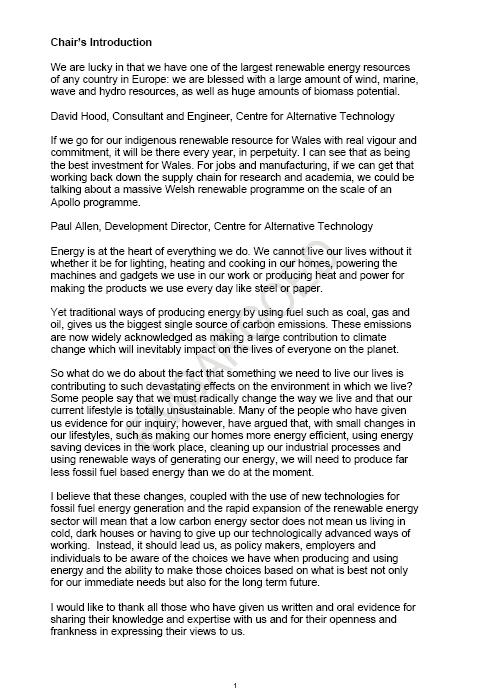
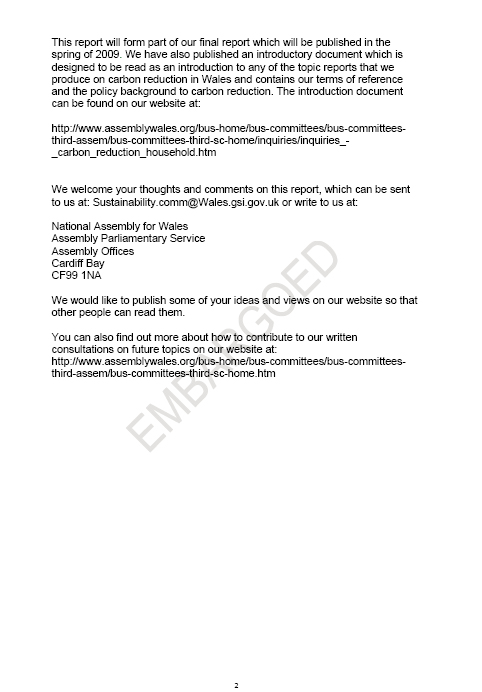


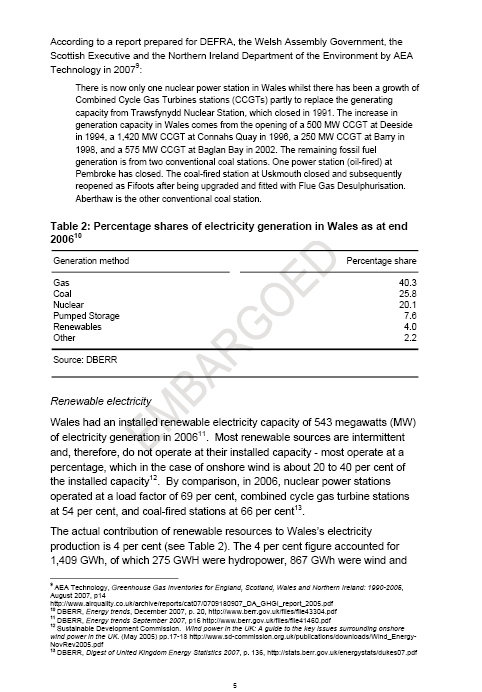

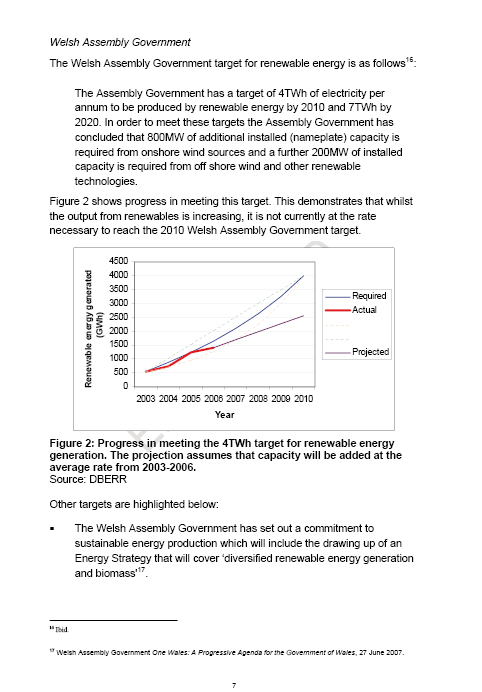
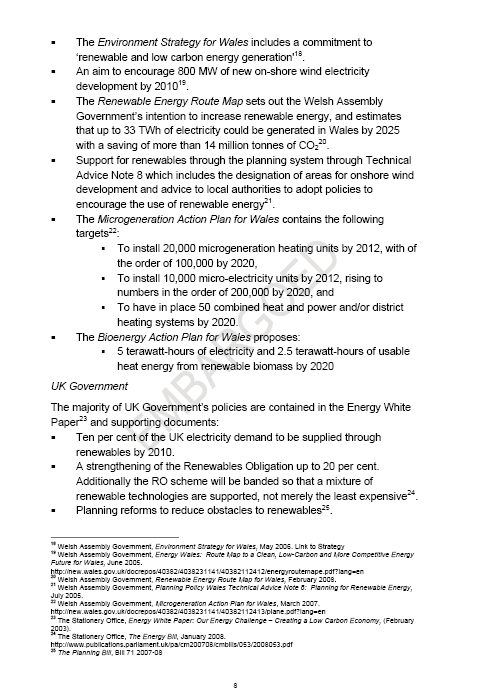
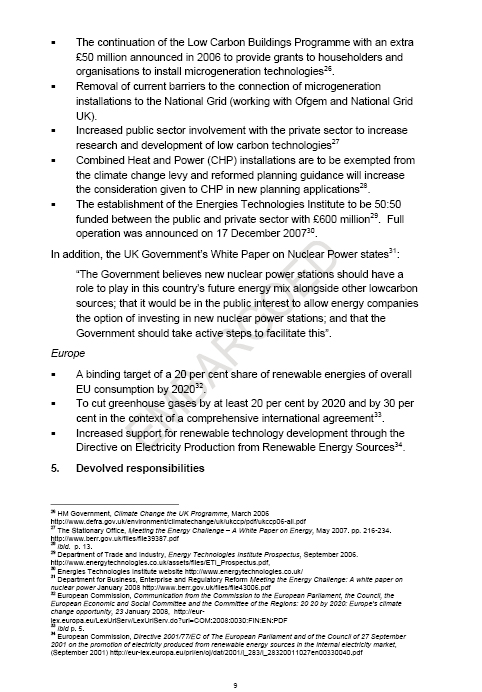
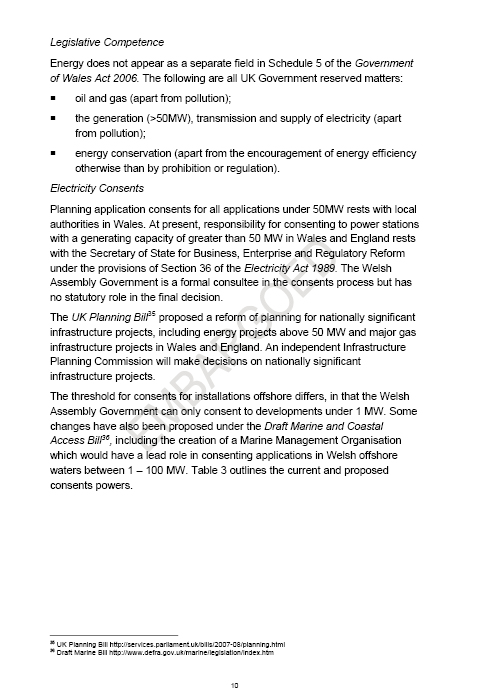
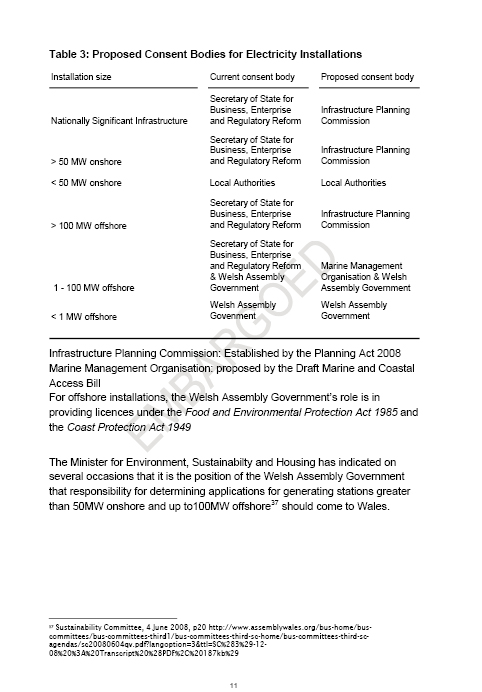
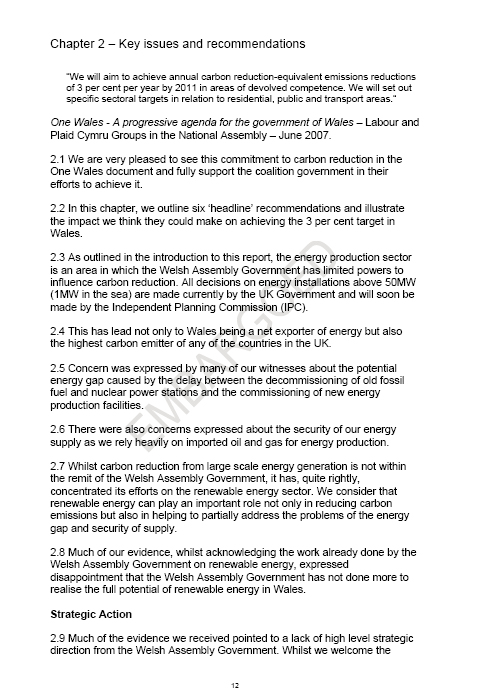

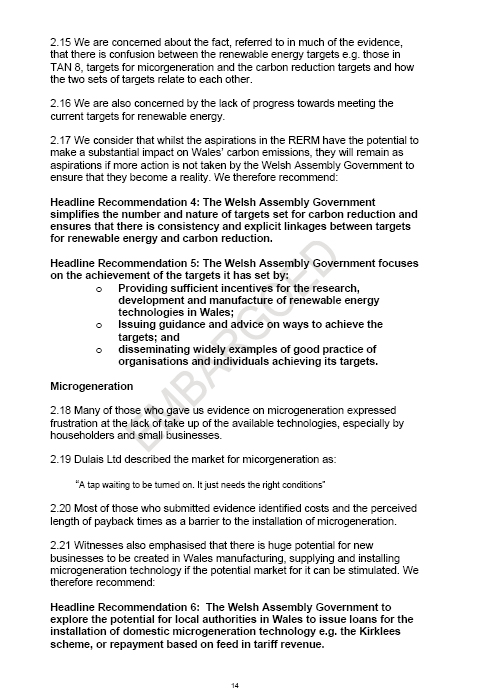

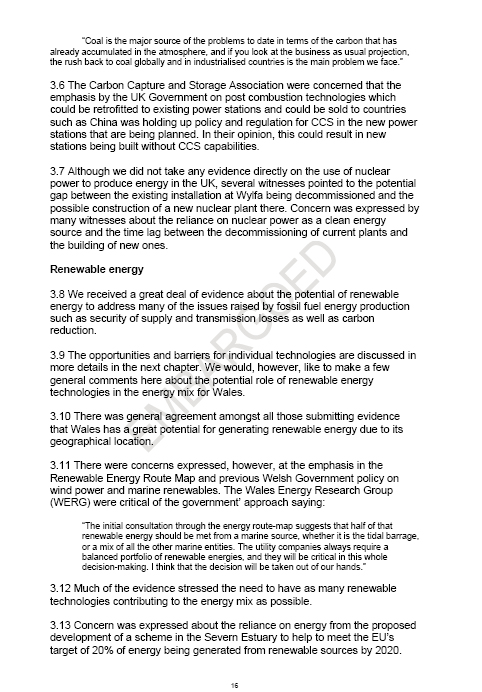


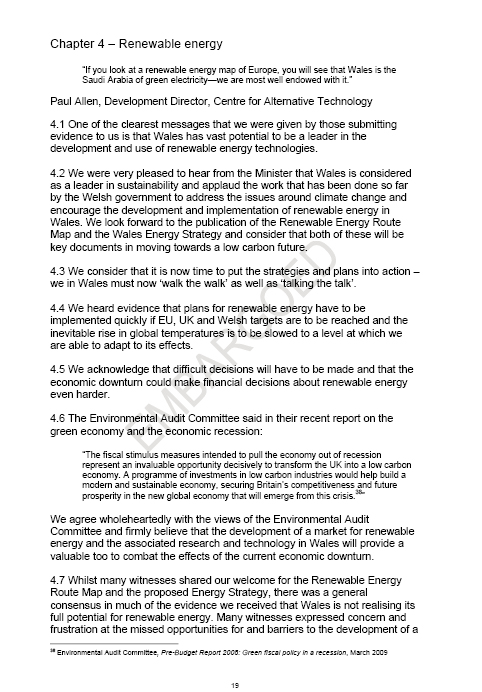




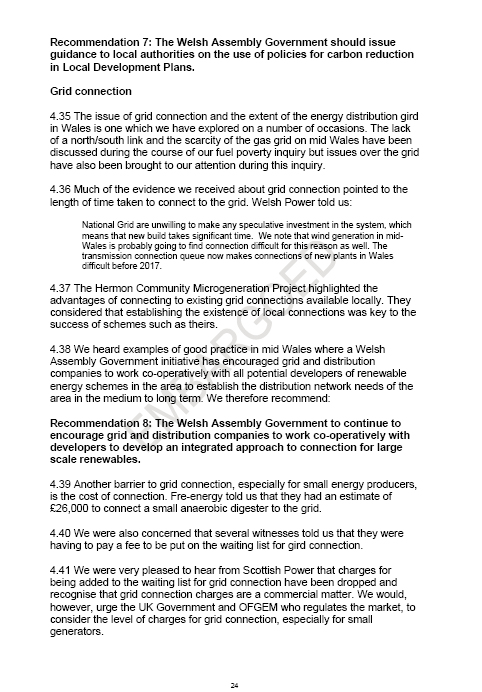

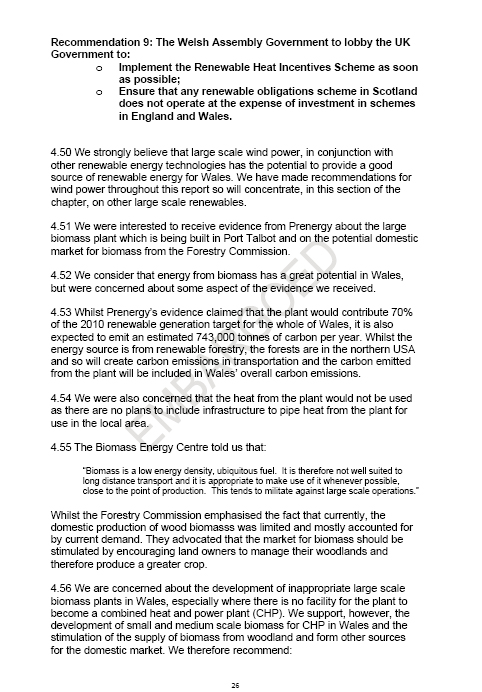
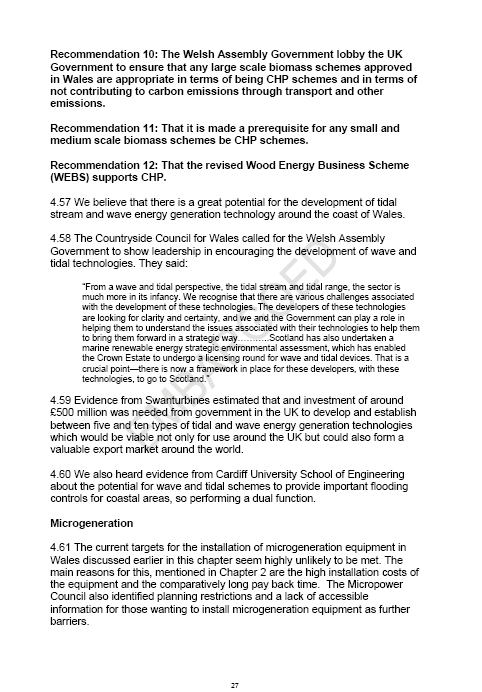

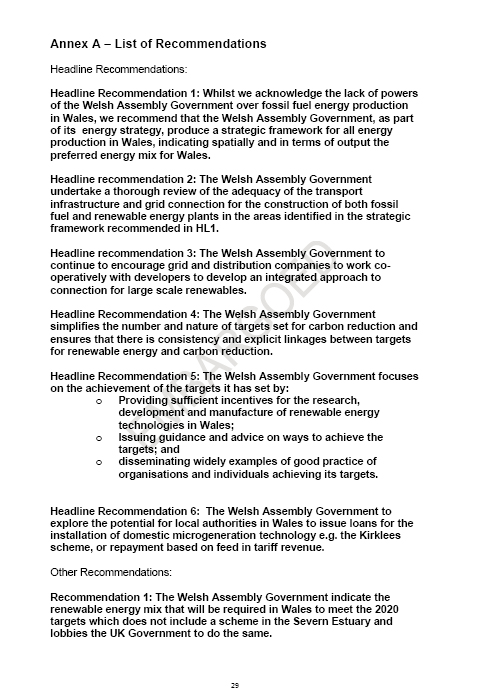


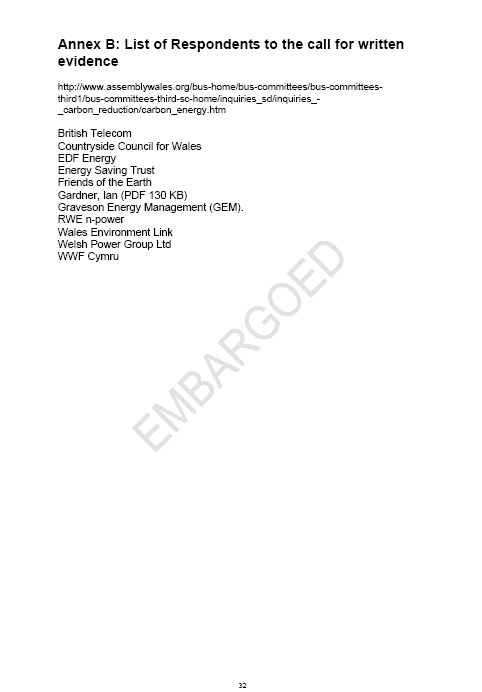
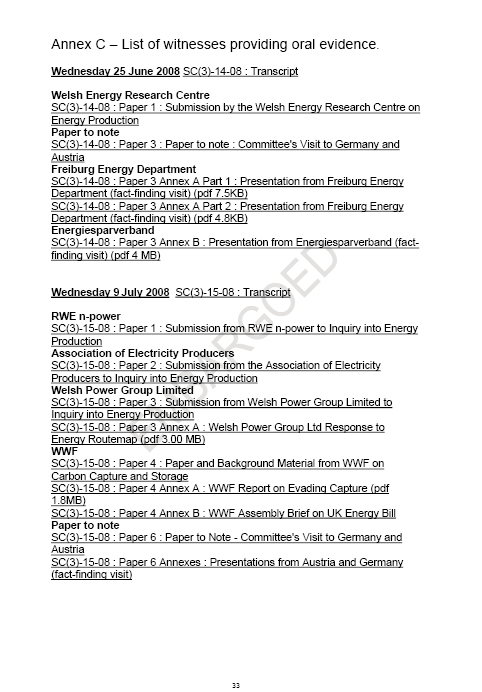

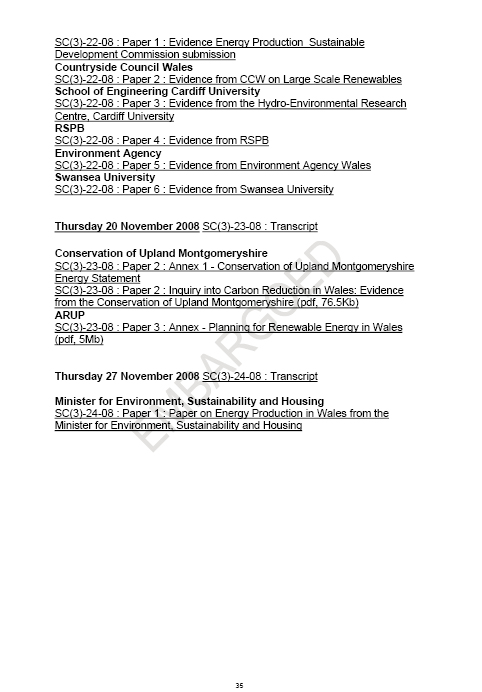
Response re the Activities of
the Transport, Infrastructure and
Climate Change Committee
in the Scottish Parliament
|
Patsy McGlone |
Room T3.40 Direct Tel: 0131-348-5211 15 June 2009 |
Dear Patsy
Thank you for your letter of 4 June 2009 regarding your inquiry into climate change and your request for information on the activities of the Transport, Infrastructure and Climate Change Committee here in the Scottish Parliament on this matter.
As you are aware, this Committee is the lead committee for consideration of the Scottish Government’s Climate Change (Scotland) Bill which will debated at Stage 3 in the Scottish Parliament before the end of June. The Committee reported to the Scottish Parliament at Stage 1 on the Bill and its report covered a number of issues you raise in your letter. The Committee also received amendments to the Bill at Stage 2 on target setting, monitoring and reporting. I attach a link to the Bill page which contains links to all the relevant material during the Committee’s consideration of the Bill, including the Committee’s Stage 1 report on the general principles of the Bill.
http://www.scottish.parliament.uk/s3/bills/17-ClimateChange/index.htm
The Parliament’s information service, SPICe, have produced a briefing paper which summarises the key changes to the Bill following the Stage 2 amendment process. I attach a link for information.
http://www.scottish.parliament.uk/business/research/briefings-09/SB09-43.pdf
You letter asks questions regarding the structures which are in place for the development and delivery of climate change policy. You will note that in its Stage 1 report, Committee stated in paragraphs 228, 229—
“The Committee calls on the Scottish Government to ensure that its statutory ‘report on proposals and policies’ provides a comprehensive overview of the potential contribution of all sectors in society to achieving emissions reductions. It should provide clear statements of policy intent and the direction for policy development which will lead to the reductions required to meet the challenging targets set by this Bill. It should also outline those initiatives currently underway to tackle climate change, including the Government’s public engagement implementation plan.
The Committee also considers it to be essential that the strategy overview document that will inform this process is produced as quickly as possible to allow sufficient time for the content of this significant and potentially detailed report to be developed, prior to its publication in 2010. The Committee requests that the Scottish Government provides a clear timescale for the production of the strategy overview discussion document, and an indication as to its contents, before Stage 2." It is expected that the Scottish Government’s climate change strategy document will be published shortly.
Throughout its work on climate change, the Committee has had regular meetings and informal briefing sessions with Officials from the Scottish Government to aid members’ understanding of the issues involved in this area.
In addition to consideration of the Climate Change (Scotland) Bill, the Committee’s scrutiny of the Scottish Government’s Draft Budget 09-10 focussed on the climate change element of its remit. The report encompassed the general impact of the Draft Budget on climate change and the development of the Scottish Government’s carbon assessment tool.
In its report, the Committee expressed concern that the Draft Budget did not contain sufficient proposals to contribute to the climate change agenda. It also felt that the Scottish Government’s climate change reduction targets were set too far into the future and its current proposed strategy for reducing annual emissions lacked urgency. The Committee therefore recommended that a system of carbon accountability be established in time for the draft budget 2010-11 and the Spending Review 2010, and that revisions be made to the 2009-10 budget to facilitate this.
The Committee considered that future budgets, and the next Spending Review, should reflect updated legislation on emissions targets. The Committee suggested that the next budget refocus its priorities on policies specifically designed to reduce greenhouse gas emissions and to contribute to addressing climate change, advising that subsequent budgets be presented with the fullest possible details of how expenditure across all portfolios will contribute to the reduction of emissions.
It is expected that the Committee will return to this issue following summer recess when it scrutinises the Scottish government’s Draft Budget 2010-11 and looks at developments in this area.
I hope that this information is helpful and if you have any further questions once you have reviewed this material, please do not hesitate to get in touch.
Yours sincerely,
Patrick Harvie MSP
Convener
Transport, Infrastructure and Climate Change Committee
Climate Change Inquiry
Key Issues Paper
Key Issues:
1. Legislation and Policy
- Policy Development
Most respondents suggested Northern Ireland’s current policies on climate change are inadequate for the obligations it has signed up to under the Sustainable Development Strategy, UK Climate Change Act and European legislation
The business sector called for policies to balance certainty with flexibility to ensure business can meet the challenges.
The small business sector would welcome incentivised action but is opposed to taxes and excessive legislation.
Most respondents urged government to look for and take advantage of win-win opportunities for reducing carbon emissions. This is particularly applicable for energy efficiency measures.
Many respondents called on government to recognise the opportunities of a green economy and strive to become a world leader in this area.
- Legislation
Nearly all respondents called for more legislation to underpin the UK Climate Change Act and enable Northern Ireland to contribute its fair share to obligations made to the UK Climate Change Act.
There was concern about the limited scope of the powers of the UK Climate Change Act in Northern Ireland and most respondents would like to see new primary legislation introduced. There was some concern however that this would delay action.
Farmers and small businesses stressed the need for legislation and regulation to be applied proportionately so that it does not disadvantage some sectors more than others.
- Climate / carbon impact assessments
Most respondents want a mechanism introduced that will assess the impact of all new legislation, strategies and programmes on carbon emissions / climate change. Processes being developed in GB and RoI could help to inform this process.
The business sector suggested Northern Ireland should consider a ‘shadow cost of carbon’ approach to accounting.
- Coordination of legislation
Several respondents noted the need for coordination of legislation across the UK and with the Republic of Ireland.
2. Targets and Budgets
- Northern Ireland Targets
Almost all respondents felt Northern Ireland has a duty to contribute its fair share to UK carbon emission reduction targets.
Many respondents expressed concern that the Northern Ireland Sustainable Development Strategy carbon emission reduction target is insufficient to ensure Northern Ireland contributes its fair share.
The majority of respondents called for Northern Ireland to introduce legally binding carbon emission reduction targets. Many called for the same target that has been agreed to in the UK Act, i.e. 80% reduction on 1990 CO2 levels by 2050, and also for parity on a legally binding 2020 target.
Most also wanted legally short term targets but were divided as to whether these should be rolling five year carbon budgets or annual carbon reductions.
- Sector Specific Targets
Most respondents from sectoral perspectives accepted they would have to take action to contribute to carbon reduction emission targets but they want leadership and long-term commitment from government and accurate data underpinning any obligations placed on their sector.
Several respondents were concerned about the setting of sectoral targets at UK level and were keen to ensure that a Northern Ireland perspective was taken into account.
Concern was also expressed about the need for sufficient information to establish accurate base line data.
- Role of the Committee on Climate Change
Several respondents suggested the Committee on Climate Change should be formally asked, as provided for in its mandate, to assist in the setting of national and sectoral indicators and targets for Northern Ireland.
One respondent suggested that the role of the Committee on Climate Change should be established via secondary legislation.
- Role of the Met Office
The Met Office noted that it is the authority on climate data and could be used to provide guidance to the Assembly on details of practice and policy.
- Reporting Mechanisms
Some respondents offered suggestions on who should report and how. Most of these involved the Climate Change Committee reporting to the Northern Ireland Assembly as well as the Executive.
3. Structures and Accountability
- Government structures
Many respondents suggested a government structure modelled on England’s Department of Energy and Climate Change would be a more effective way to address climate change in Northern Ireland.
One respondent suggested a skilled dedicated body should undertake detailed assessment of progress against targets in a role similar to the Environmental Audit Committee in England. The Northern Ireland Audit Office was suggested for the role.
- Role of Government
Many respondents, particularly from the business sector, called for government to show leadership on addressing climate change.
Respondents from the business sector urged government to maintain economic stability while moving to a low carbon economy.
Business and industry were concerned that government would inform them of their roles and responsibilities rather than engaging with them early in the process in a constructive way.
Some respondents suggested public service agreements should define how departments will contribute to milestones based on EU, UK and NI targets and how they might link to their sustainable development obligations.
Some respondents stressed the moral imperative for Northern Ireland to address climate change.
- Role of DOE Climate Change Unit
Several respondents saw a coordination role for DOE’s Climate Change Unit.
One respondent suggested all existing and anticipated legislation over the next 10 years should be analysed for conflicts with climate change tarets and implementation
- Delivery mechanisms including delivery of carbon commitments
Most business respondents recognised the need for sectoral targets but called for these to be SMART with ‘road maps’ established for their delivery. They urged for recognition that some sectors have greater opportunities for delivery than others and that timescales may differ.
The business sector recognised the importance of the Carbon Reduction Commitment scheme noting it would affect all government departments and most councils as well as major businesses.
- Public procurement
Many respondents suggested that the public sector procurement budget offers significant opportunities for delivering on reduction targets through setting requirements and leading investment.
- Role of the Planning System
Some respondents suggested planning played a major role in mitigating and adapting to climate change. PPS 18 (renewables) in particular was mentioned on several occasions but so were other PPSs.
Several respondents raised concerns about the progress and detail of PPS 18.
- Role and responsibilities of local government
Several respondents recognised that local government would have a significant role to play in the future as more delivery responsibilities are devolved to the new district councils.
Some respondents suggested that central government should impose a statutory obligation on local authorities to contribute to emissions reduction targets.
- Investment and innovation
Several respondents stressed the need for investment and innovation when addressing climate change.
4. Costs
- Cost of delivering climate change obligations
Many respondents referred to the Stern report in their response but there was very little on the specific costs anticipated by industry and businesses in Northern Ireland for addressing climate change. [Need for research?]
Several business respondents urged government to act sooner rather than later so they can factor climate change requirements into their long term strategies now rather than trying to catch up over a short period.
Some respondents suggested the Committee on Climate Change should be requested to provide a breakdown on costs of actions and inaction for Northern Ireland akin to their work in the UK as a whole.
Several respondents noted the need to consider the long term impacts of both mitigation and adaptation measures when building any infrastructure now to avoid costly errors.
5. Sectoral Targets and Action
- Energy
- Consumption
Several respondents noted the importance of the price of energy in influencing consumption and some suggested this could be used as a driver for change.
- Efficiency – domestic and business
Several respondents called for more promotion of mechanisms to retrofit homes for greater energy efficiency.
One respondent suggested Energy Performance Certificates should become mandatory for house sales and rentals from 2015 and should also be introduced for commercial buildings. The respondent also urged the expansion of the rate rebate programme to energy efficiency households.
[Note - the Committee is seeking clarification on the discrepancy between building regulations for social and private housing.]
- Renewable
One respondent suggested that UK legislation on feed-in tariffs for electricity and heat tariffs should be transposed to Northern Ireland to promote renewable technology.
Most respondents recognised the importance of renewable energy sources as a means of reducing carbon emissions and a range of recommendations were made.
- Transport
Most respondents recognised the contribution of transport to carbon emissions in Northern Ireland and a range of recommendations were made.
- Waste
Several respondents suggested all waste should be viewed as a potential resource and urged government to maximise its energy and resource yield.
- Food
One respondent noted links between high carbon lifestyles and increasing incidence of obesity and that tackling one would help address the other adding to the imperative for action.
- Land use
- Forestry / Agriculture
Several respondents noted the need to consider competing uses for land uses – between food and energy.
The agriculture sector was particularly concerned that emission reduction targets would be established for Northern Ireland based on data derived from UK figures. The need for dedicated research was stressed.
The agriculture sector stressed the need to ensure that attempts to adapt to climate change did not undermine long term objectives.
The agriculture sector raised concerns about the impact of the current carbon labelling scheme on food (BS2050) as it fails to recognise primary land destruction or lifetime carbon emissions and makes no concession for agricultural practices and technologies banned in Europe, e.g. GMOs / hormone usage.
6. Other
- Leaning from other jurisdictions
Some respondents suggested research should be undertaken as to how other jurisdictions across the world are dealing with incorporating climate change adaptation and mitigation into their structures and policies to learn from best practice and devise an appropriate system for Northern Ireland.
- Cross-cutting approaches
Several respondents suggested Northern Ireland should work with the Republic of Ireland to coordinate emissions goals, assessment tools and practical joint activities.
- Adaptation
Many respondents recognised a risk of short term adaptation activities compromising long term objectives.
- Climate change and the Sustainable Development Strategy
Some respondents suggested the Sustainable Development Implementation Plan should be the vehicle for delivery of key climate change targets. Also, that the SD Plan should provide a short term route map for action.
Several respondents referred to and supported the SD target for the Northern Ireland Government Estate to be carbon neutral by 2015.
Further information from CTS Projects Ltd
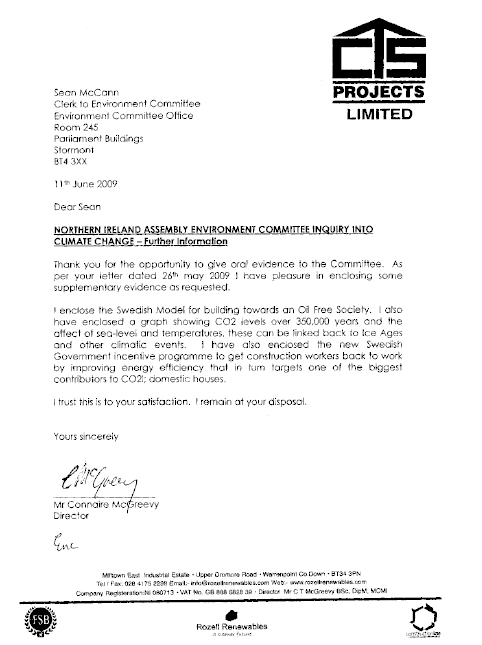
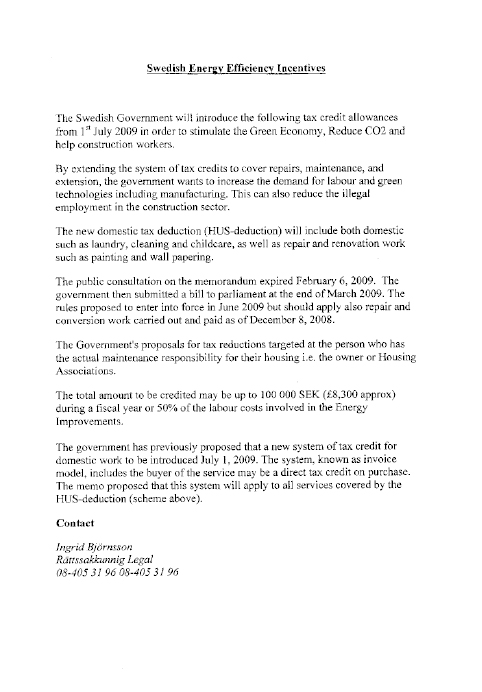

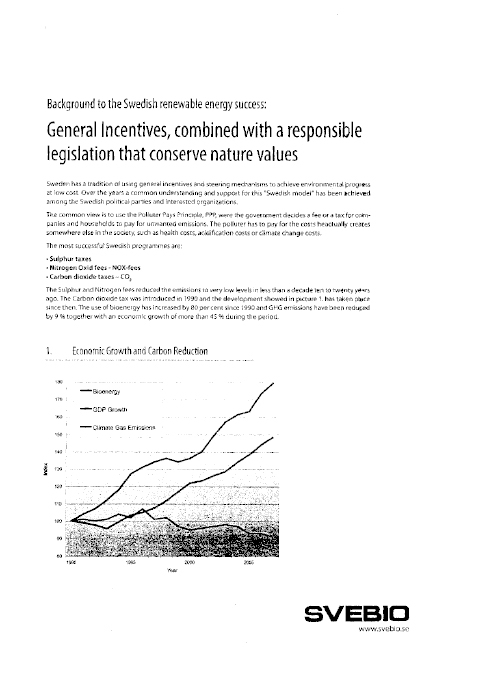

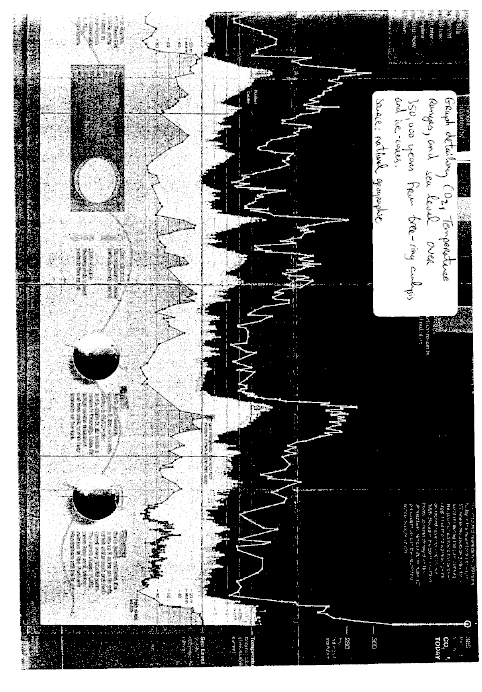
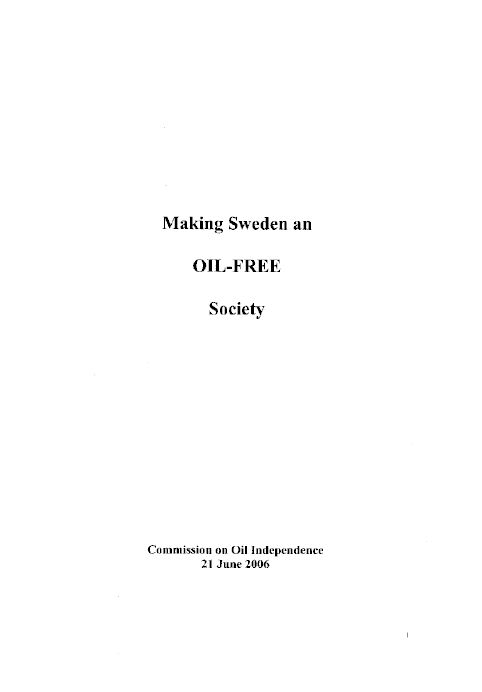
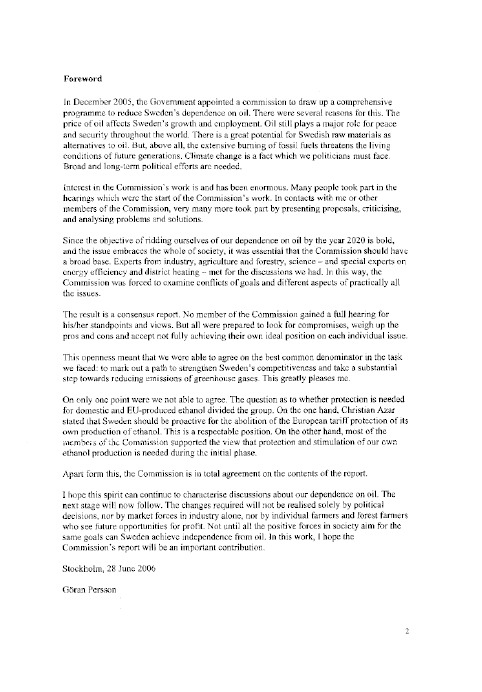
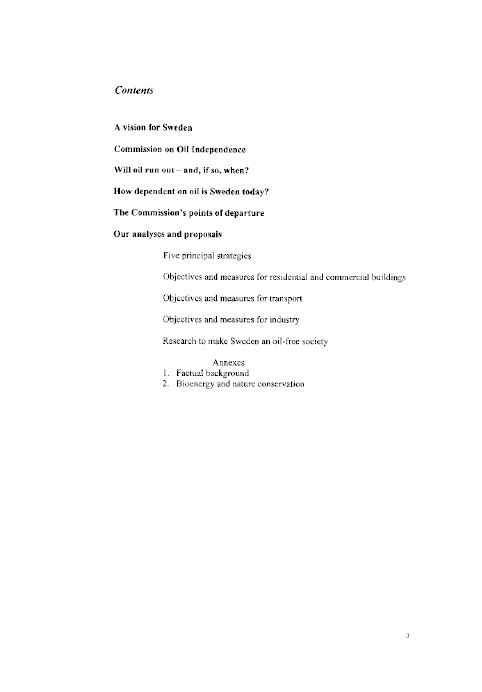
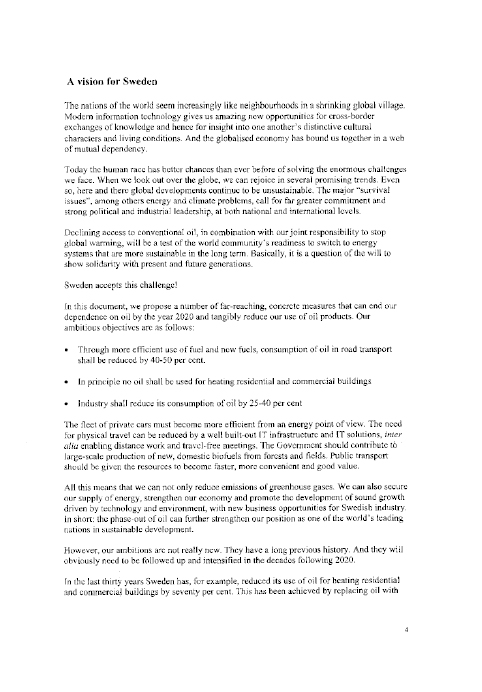
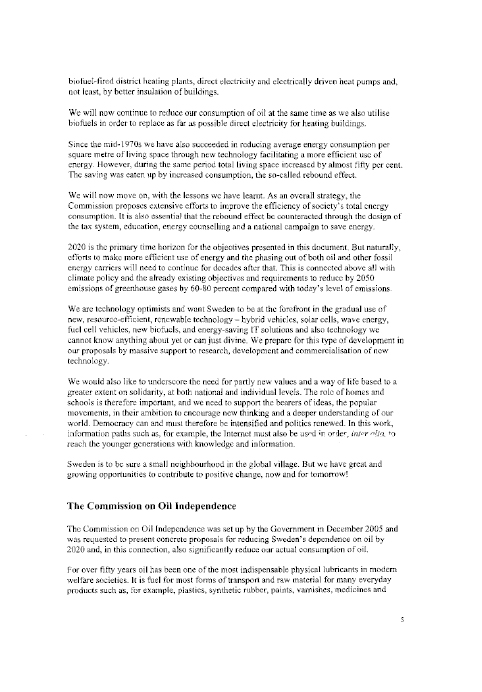

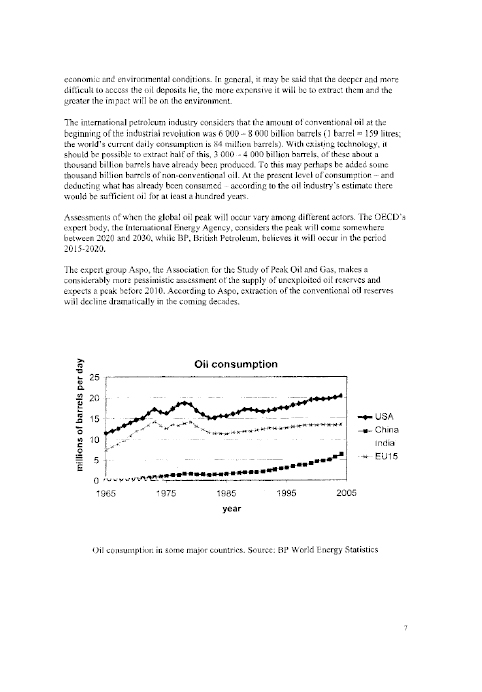

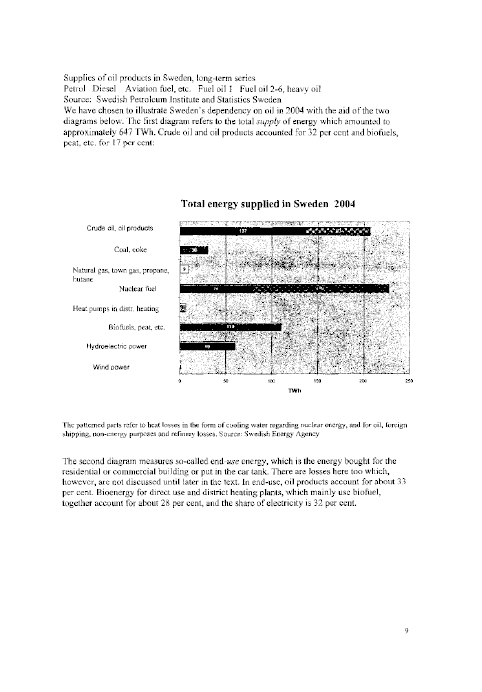

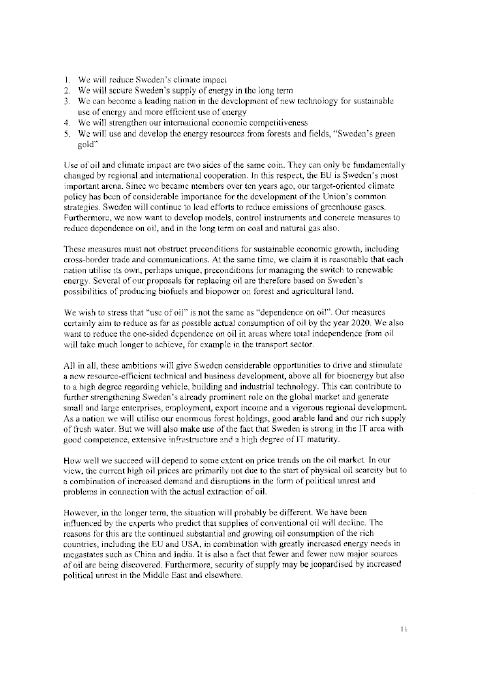
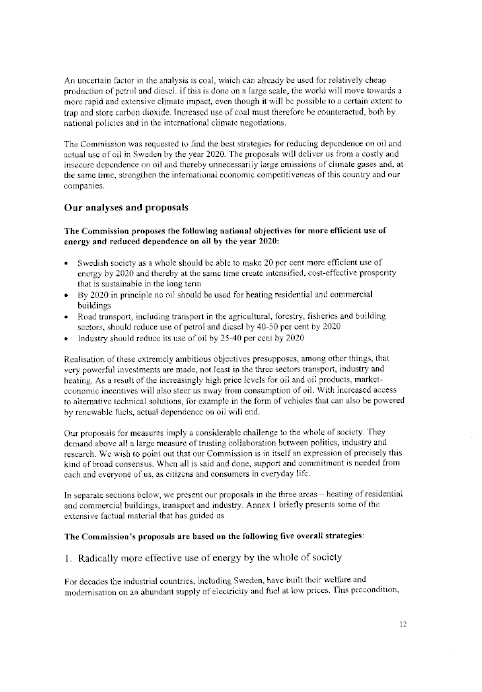
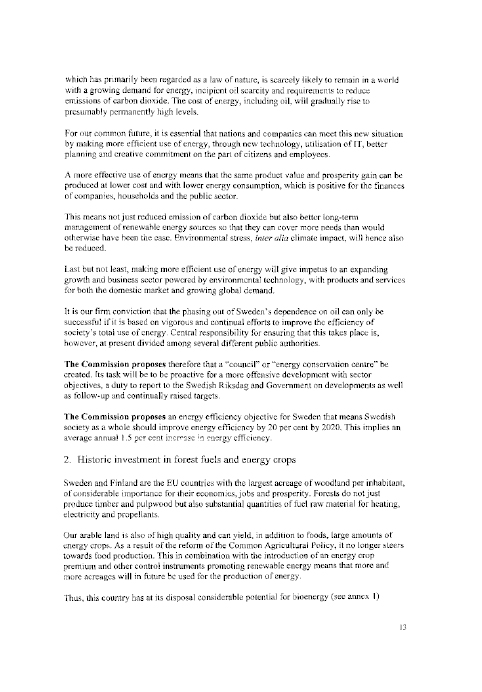


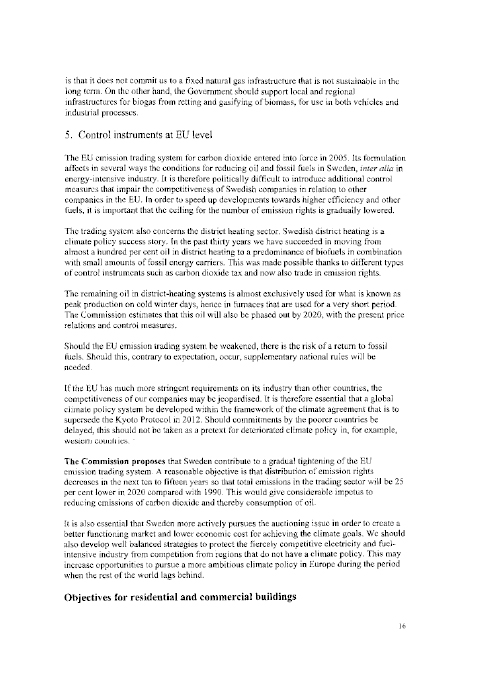






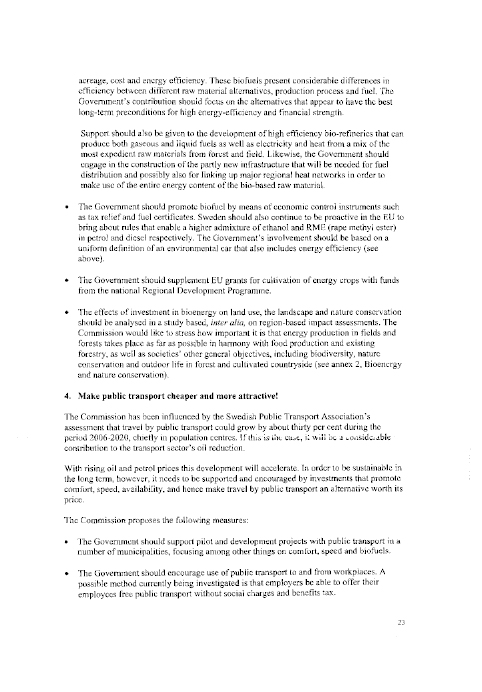

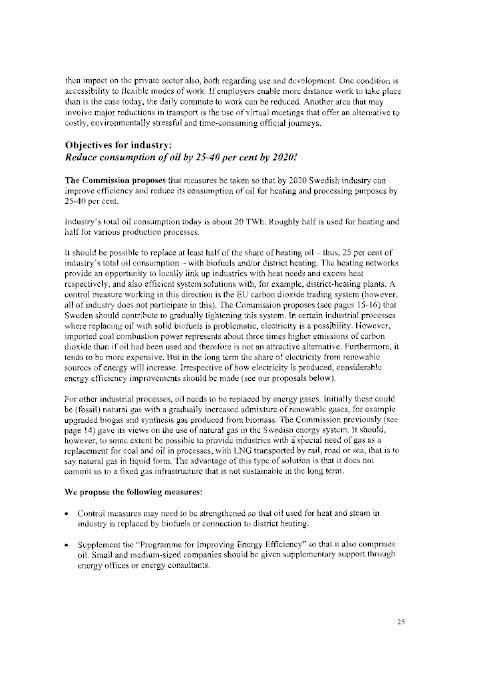

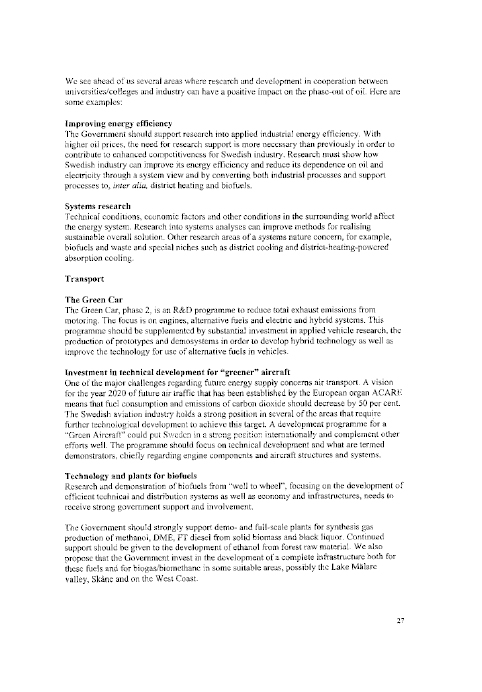

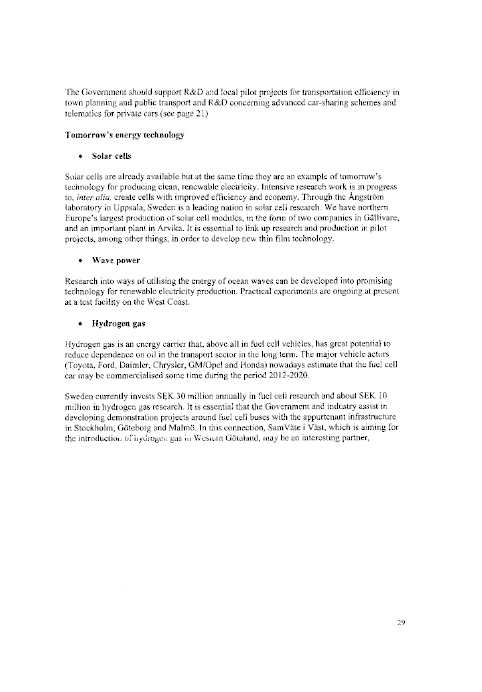
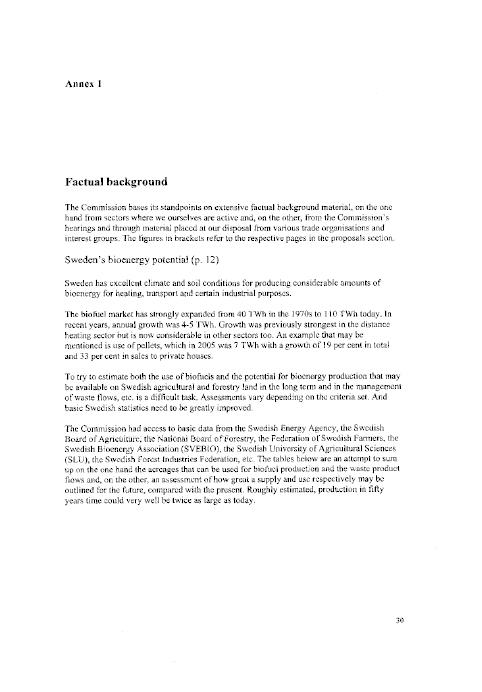
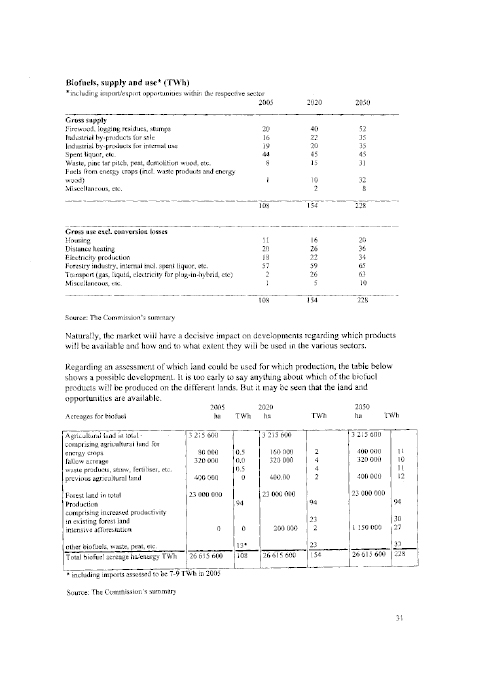




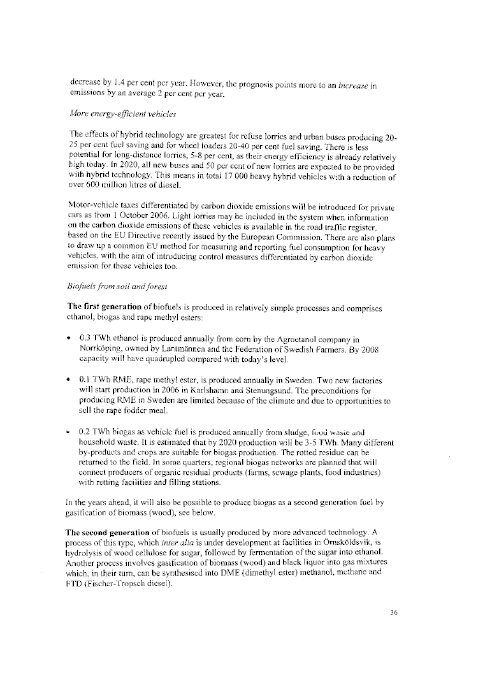
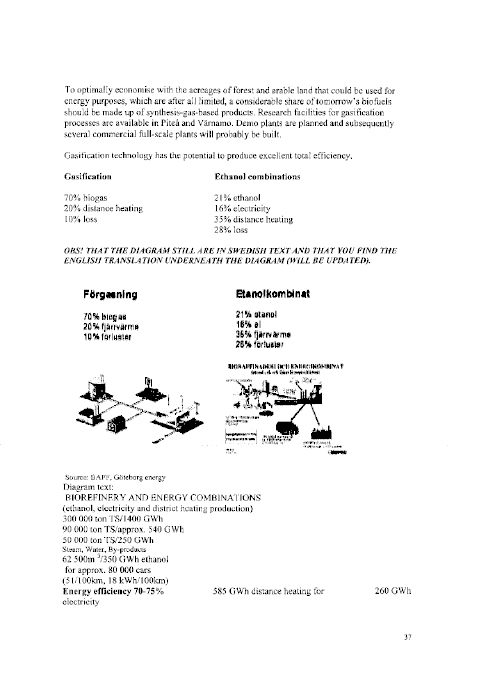


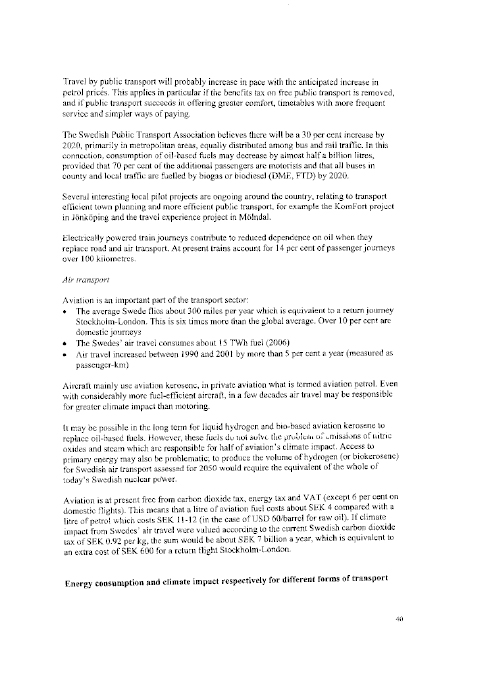

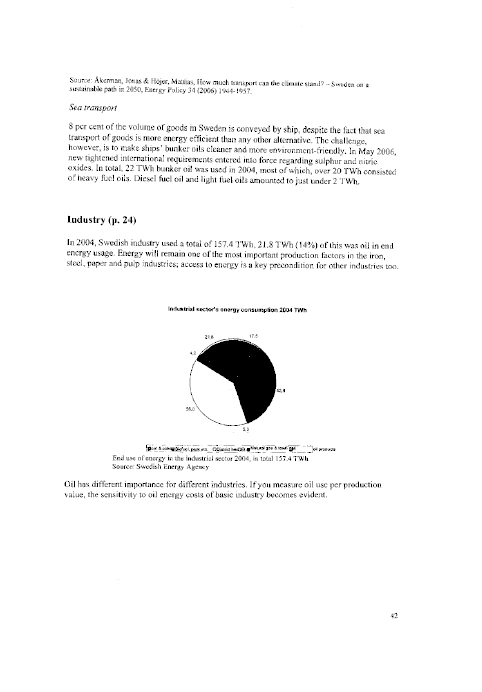


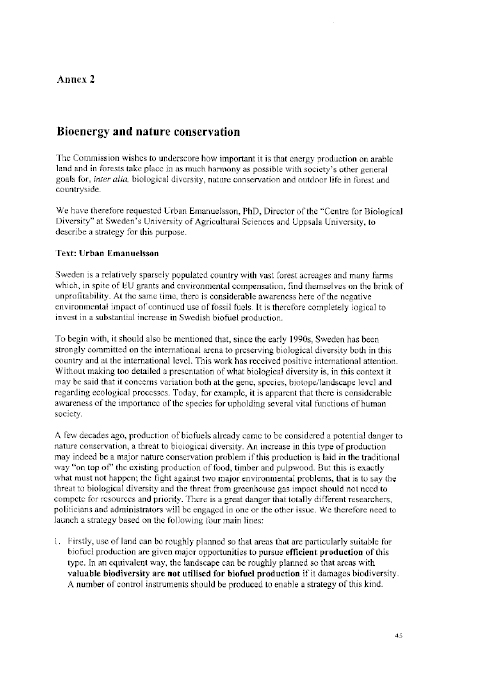
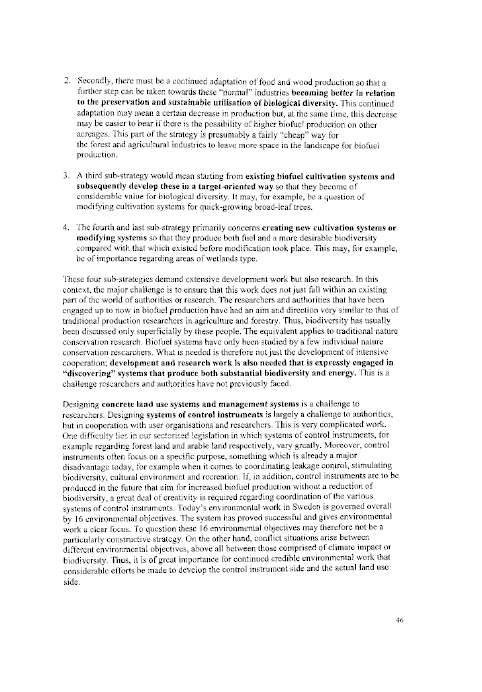

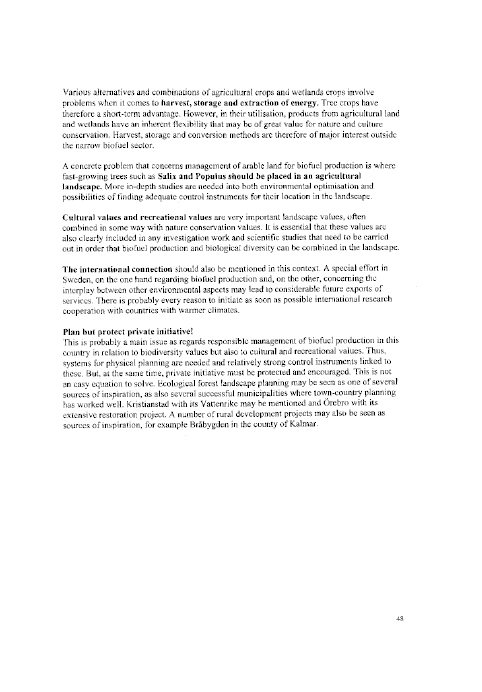
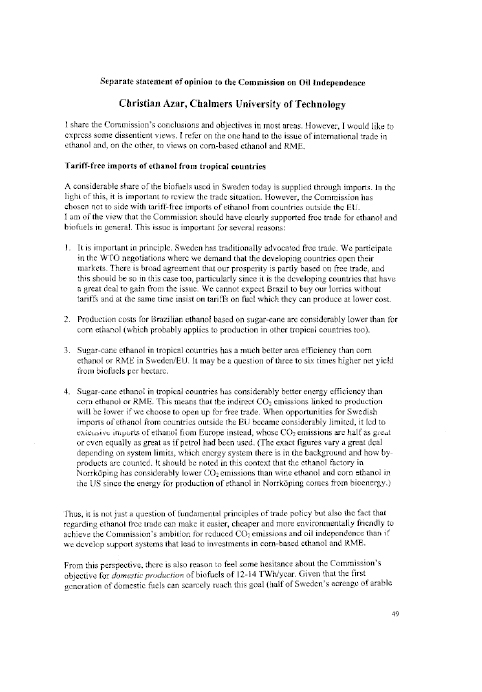


Assembly Research Paper
on the Climate Change Bill
in the Scottish Parliament
Climate Change Bill in Scottish Parliament
Jeff Mochan, Research Officer
22 June 2009
The purpose of this note, prepared for the Committee for the Environment, is to outline the main provisions in the Climate Change (Scotland) Bill to date. This note covers:
- The Bill as introduced in December 2008.
- The Bill as amended to date, after Stage 2 consideration.
- Likely amendments already expected at Stage 3 consideration.
Bill as Introduced[1]
The aim of the Bill is to establish a framework to drive greater efforts at reducing Kyoto Protocol greenhouse gas emissions in Scotland by creating mandatory climate change targets to reduce Scotland’s greenhouse gas emissions.
The main policy areas covered in the Bill, as introduced, are outlined below.
Part 1 – Emissions Reduction Targets. The Bill:
- Creates the statutory framework for greenhouse gas emissions reductions in Scotland, setting reduction targets of 50% for 2030 and 80% for 2050.
- Requires Ministers to set annual targets, in secondary legislation, for Scottish emissions from 2010 to 2050.
Part 2 – Advisory Functions. The Bill contains provisions to allow Ministers to establish a Scottish Committee on Climate Change, or designate an existing body to exercise advisory functions.
Part 3 – Reporting Duties. The Bill places duties on Ministers to report regularly to the Scottish Parliament on Scotland’s emissions and on progress made towards the emissions reduction targets.
Part 4 – Duties of Public Bodies. The Bill contains powers to allow Ministers, by order, to:
- Impose climate change duties on public bodies.
- Issue guidance to those bodies relating to their climate change duties.
- Require those bodies to report upon discharge of those duties.
Part 5 – Other Provisions.
- Chapter 1 – Adaptation. The Bill requires Ministers to lay climate change adaptation programmes before the Scottish Parliament.
- Chapter 2 – Forestry. The Bill will allow modification by secondary legislation of the functions of the Forestry Commissioners to enable the Forestry Commission in Scotland to play a greater role in tackling climate change.
- Chapter 3 – Energy Efficiency, Energy Performance of Existing Non-Domestic Buildings and Renewable Heat. The Bill:
- Requires Ministers to produce an action plan setting out their current and proposed measures to promote the energy efficiency of buildings in Scotland, as well as measures to encourage behavioural change towards energy efficiency.
- Contains measures for assessing the energy performance of existing non-domestic buildings in order to raise awareness of the contribution that those buildings can make to mitigating climate change through reducing energy demand and, thereby, emissions of greenhouse gases.
- Places a duty on Ministers to take such steps as they consider appropriate to promote the use of heat from renewable sources.
- Chapter 4 – Waste Reduction and Recycling. The Bill will enable Ministers to make regulations on waste reduction and recycling by different methods.
Bill As Amended To Date[2]
The main changes to the Bill, following Stage 2 consideration, are outlined below. Note that the Stage 3 debate in the Scottish Parliament is scheduled for 24 June 2009.
- Part 1 – Emissions Reduction Targets
Interim target:
- The interim target has been set for 2020, at a level of 34% lower than the baseline.
- Ministers are enabled to modify the target to a higher figure.
Setting annual targets:
- Annual targets set for each year in the period 2011-2019 must be set at a consistent rate of reduction to allow the interim target to be met.
- Target-setting criteria include the likely impact on jobs/employment opportunities, those living in poorer/deprived or island communities, and environmental considerations (in particular, biodiversity).
- Annual targets can be modified. In addition:
- Where this is done, Ministers must lay a report before the Parliament explaining why that modification has been made and make a statement to the Parliament on that report.
- Where a different modification is made to that recommended by the relevant body, Ministers must lay a report before the Parliament explaining their reasons and make a statement to the Parliament on that report.
- Where the date to set an annual target has been missed, Ministers are allowed to set a date as soon as practicably possible.
Advice before setting annual targets:
- Ministers are required, before setting annual targets, to publish advice received from the relevant body.
- The relevant body must express a view as to whether the annual targets are appropriate and to explain that view by reference to the target-setting criteria.
Net Scottish emissions account and carbon units and carbon accounting:
- The ‘domestic effort target’ has been introduced to ensure that the reduction in climate contribution is through predominately domestic sources rather than through international credits.
- The net amount of carbon units that may be credited to the account must not exceed the ‘allowable amount’ which is defined.
- Ministers cannot credit carbon units to the net Scottish emissions account in the period 2010-2012, and the amount of units that can be credited to the account for the period 2103-2017 is subject to a limit of to up to 20%.
- Ministers can modify the use of carbon units and take advice before setting or modifying such limits; the Advisory Body is required to express a view on the extent to which the annual targets should be met by the use of carbon units.
Scottish share of emissions from international aviation and international shipping:
- An Order, by which Ministers may make provision regarding greenhouse gas emissions from international aviation and international shipping attributable to Scotland, must be laid before the Parliament no later than 1 June 2010.
Part 2 – Advisory Functions
Functions of advisory body:
- The functions of the Advisory Body include providing advice, analysis, information and other assistance to Ministers in respect of Ministers’ functions under the interim target.
Advice on annual targets:
- The provision for the Advisory Body to express a view on the contribution of ‘sectors of the Scottish economy’ towards meeting the annual targets has been replaced by a more specific requirement for it to express a view on how the energy efficiency, energy generation, land use and transport sectors can contribute to greenhouse gas emissions reduction.
- The Advisory Body is required to express a view as to ‘what’ annual targets are appropriate, rather than ‘whether’ annual targets are appropriate.
Part 3 – Reporting Duties
Reports on annual targets:
- The report on annual targets not only states the amount of the net Scottish emissions account for the target year, but also:
- The proportion of the reduction in the net Scottish emissions account which is accounted for by reductions in net Scottish emissions.
- The amount of the net Scottish emissions account for each preceding target year and the cumulative amount of the net Scottish emissions account for the target year and all preceding target years.
- The average greenhouse gas emissions per megawatt hour of electricity generated in Scotland in the target year.
- The average greenhouse gas emissions per megawatt hour,and the estimated lifetime cumulative emissions, of any new electricity generation capacity greater than 50 megawatts approved in Scotland in the target year.
- If any adjustment is required to the annual target because the method of measuring or calculating net Scottish emissions changes, Ministers must state, in their report to the Parliament, why the adjustment is required, the adjustment required, and the adjusted amount.
Reports on emissions attributable to Scottish consumption of goods and services:
- Ministers are required to lay before the Parliament an annual report on the emission of greenhouse gases (whether in Scotland or elsewhere) which are produced by or otherwise associated with the consumption and use of goods and services in Scotland during that year.
Reports on interim and 2050 targets:
- Ministers are required to lay a report, no later than 31 December 2015, before the Parliament on the progress being made towards meeting the interim target, stating whether the progress being made is consistent with a reduction over time to meet both the interim and the 2050 targets.
- Reports on the interim and 2050 targets must state the cumulative amount of the net Scottish emissions account.
Provision of further information to the Scottish Parliament:
- Parliamentary scrutiny of the various reports required under the Bill has been increased:
- Ministers must send ‘immediately’, to parliamentary committee Conveners, copies of the reports on annual, interim and 2050 targets, proposals and policies for meeting annual targets, and proposals and policies to compensate for excess emissions.
- Ministers must have regard to any resolution or report of a parliamentary committee on these reports.
- Ministers must attend the appropriate parliamentary committees, if invited to do so, to give evidence on the report.
Part 4 – Duties of Public Bodies
Duties of public bodies relating to climate change:
- Public bodies are required, in exercising their functions, to act: in the best way calculated to contribute to the delivery of the emissions reduction targets; in the best way calculated to help to deliver any adaptation programmes; and in a way that it considers is the most sustainable.
Guidance to relevant public bodies:
- Ministers now ‘must’ give guidance to relevant public bodies, and those bodies ‘must’ have regard to such guidance.
Reporting on climate change duties:
- Any public body found to be failing to comply with its climate change duties must prepare a report on the action it is taking to comply with those duties in the future.
Part 5 – Other Provisions
Chapter 1 – Adaptation:
- The adaptation programme laid before the Parliament must include arrangements for involving employers, trade unions and other stakeholders in meeting adaptation objectives, and mechanisms for ensuring public engagement.
- Ministers must report on progress towards implementation of programmes for adaptation, progress towards implementation of programmes for adaptation, and on programmes for adaptation, in order to strengthen the Government’s approach to adaptation, increase scrutiny, accountability and provide for an annual report on its adaptation programme.
- Ministers are required to lay a land use strategy, including objectives for sustainable land use, before the Parliament no later than 31 March 2011.
Chapter 2 – Forestry:
- The biodiversity duty, under the Nature Conservation (Scotland) Act 2004, is applied to any such body, trust etc formed by the Forestry Commissioners.
Chapter 3 – Energy Efficiency, Energy Performance of Existing Non-Domestic Buildings and Renewable Heat:
- The plan for promoting energy efficiency must now include improving the energy efficiency of living accommodation and must set annual energy efficiency targets.
- The definition of ‘energy efficiency’ has been extended to include ‘surplus heat from electricity generation or other industrial processes for district heating or other purposes’.
- Ministers are required to prepare and publish a plan for the promotion of the use of heat from renewable sources, including targets for the percentage of heat to be produced from renewable sources and a date set by which such targets should be met. Ministers must make a statement to the Parliament on the plan.
- Ministers are required to provide (or revise existing) guidance on the conditions to which consent will be granted for the construction of new, or the extension of existing, energy generating stations of a capacity greater than 50 megawatts.
- Ministers ‘must’ provide for the assessment of the energy performance of non-domestic buildings, and the emission of greenhouse gases produced by or otherwise associated with such buildings, or with activities carried out in such buildings.
- Owners of non-domestic buildings must comply with such assessments, and powers available to Ministers, to ensure compliance, are strengthened.
- Council tax can be reduced for energy efficient improvements to dwellings.
- The definition of ‘maintenance’, in terms of a tenement management scheme, in the Tenements (Scotland) Act 2004 includes installation of insulation.
- Ministers are required to amend the relevant legislation so that air source heat pumps, wind turbine micro-generation equipment within the curtilage of domestic properties, and micro-generation equipment within the curtilage of non-domestic buildings is considered permitted development (will not need planning permission).
- Ministers are required to ensure that the energy performance of any newly constructed building that becomes part of the civil estate in Scotland falls within the top quartile of energy performance.
- The Bill requires Ministers are required to lay a report before the Parliament for each financial year (beginning 2010-2011) assessing progress made towards improving the efficiency and contribution to sustainability of civil estate buildings.
Chapter 4 – Waste Reduction and Recycling:
- Regulations on waste reduction and recycling are laid before the Parliament will be subject to a 60-day scrutiny period.
- The Order on the provision of information on waste must be laid no later than 1 year from the date of the Bill receiving Royal Assent.
Note, also, that after considerable debate at Stage 1, the Government announced that it would remove from the Bill the provision that would enable the Forestry Commissioners to delegate their functions, thus allowing it to lease out part of the forest estate. The Bill has been so amended.
Part 6 – General and Miscellaneous
- Ministers and the Advisory Body are required to take into account the way in which they exercise their functions (as conferred on them by the Bill) contributes to the achievement of sustainable development.
Additional Amendments Likely Before Stage 3[3]
At Stage 2, Ministers agreed to discuss, consider or act on the following amendments, at/before Stage 3, as outlined below.
Part 1
Ministers agreed to discuss amendments:
- That take account of the impact of greenhouse gas emissions that occur outside Scotland, but for purposes of providing goods or services in Scotland.
- On emissions reduction proposals in Scotland that do not adversely affect other countries.
Part 2
Ministers agreed to bring back amendments to:
- Require the Advisory Body’s functions to provide advice on the interim target as well as advice on the effectiveness of Ministers’ proposals and policies for achieving the interim and 2050 targets.
- Require the Government to define and quantify how various sectors are expected to contribute to overall emissions reduction.
Part 4
Ministers agreed to bring back amendments to require reports by public bodies on compliance with their climate change duties to contain information about the way in which procurement policies and wider workplace policies contribute to these duties.
Part 5
Ministers agreed to:
- Discuss an amendment to insert a public engagement strategy into the Bill.
- Bring forward an amendment to require Ministers to report on measures they intend to take to reduce emissions from non-domestic buildings, and when they intend to make provisions for powers to ensure compliance.
Agreement appeared to be reached on the principle of creating climate change burdens for a public body or Ministers to reduce greenhouse gas emissions.
[1] http://www.scottish.parliament.uk/s3/bills/17-ClimateChange/b17s3-introd-en.pdf
[2] http://www.scottish.parliament.uk/business/research/briefings-09/SB09-43.pdf
[3] http://www.scottish.parliament.uk/business/research/briefings-09/SB09-43.pdf
Assembly Research Paper –
The Carbon Trust in NI
and the Public Sector
The Carbon Trust in NI and the Public Sector
Jeff Mochan, Research Officer
25 June 2009
The purpose of this note, prepared for the Committee for the Environment, is to:
- Outline reasons why the Carbon Trust in NI does not currently work with the public sector.
- Identify any barriers which might prevent it doing so in the future.
In 2008, Invest NI commissioned consultants to evaluate the Carbon Trust and other energy programmes/services. The final report of that evaluation included the following observations and recommendations.[1]
The Carbon Trust is funded mainly by Government to deliver programmes and services on its behalf. Funding is sourced from Central Government in GB, but a Government Agency (Invest NI) in NI. Annual business plans are developed by the Carbon Trust on a local basis, and agreed with each local funder.
The Carbon Trust (in the UK) developed the following key objectives, based upon the remit set for the Carbon Trust and the themes set out in the Climate Change Programme that it would be expected to cover:
- To ensure that UK business and the public sector contribute fully to meeting ongoing targets for greenhouse gas emissions.
- To improve the competitiveness of UK business through resource efficiency.
- To support the development of a UK industry sector that capitalises on the innovation and commercial value of low-carbon technologies nationally and internationally.
The Carbon Trust in NI was established in May 2002; it was mainly funded through Climate Change Levy receipts, but, since inception, Invest NI has supplemented this funding.
A key activity of the Carbon Trust in NI was a NI Energy Scoping Study, which established a robust analysis of final energy usage and carbon emissions in the industrial, commercial and public sectors. Subsequent activities have focussed on helping businesses reduce their energy usage, costs and carbon emissions, and serving as a catalyst for moving NI towards a low carbon economy.
The main aim of the Carbon Trust in NI was set to ensure that the work programme, to introduce low carbon technologies and practices into NI businesses as agreed with the Carbon Trust, is delivered efficiently and effectively for the benefit of NI businesses.
Over time, the aims of the Carbon Trust in NI were developed to include identifying and improving the energy efficiency of Northern Ireland industry, commerce and the public sector.
Invest NI is responsible for working in partnership with the Carbon Trust in NI to help promote/support energy saving projects within the business community and public sector, and so contribute to reducing carbon emissions, mitigating climate change. The Carbon Trust is the key programme in NI aimed at promoting and supporting energy efficiency in the industrial and commercial sectors.
2 strategies present opportunities for the Carbon Trust in NI, which is currently largely dependent on Invest NI for financial support:
- The DETI draft NI Strategic Energy Framework (launched in 2008).
- The forthcoming Sustainable Development Strategy for NI (currently being developed).
Current support allows the Carbon Trust in NI to deliver a range of activities and initiatives, but these are constrained, to a certain extent, in that they must be consistent with Invest NI objectives. By securing funding from other sources, the Carbon Trust in NI would be less constrained and less dependent on a single funding source.
Future support could be expanded; the report recommended that the Carbon Trust in NI should be encouraged to present opportunities to other parts of Government that deliver on the Sustainable Development Strategy for NI. This should include sourcing further funding to support the delivery of other areas of work which fall outside the remit of the support provided by Invest NI.
The conclusion reached by reading the report outlined above is that it appears that there is no reason why the Carbon Trust in NI cannot work more with the private sector, if it chooses to seek additional funding options; indeed the Invest NI evaluation report recommends that the Carbon Trust in NI does so.
[1] http://www.investni.com/evaluation_of_ct_energy_programmes_final_exec_sum.doc
Notes of Meetings of
Committee Visit to London
Meeting, Friday 19 June 2009 with Climate Change Mitigation and Land Use Unit London
Attendance:
Committee for the Environment
Mr Cathal Boylan Deputy Chairperson
Mr Roy Beggs
Mr Tommy Gallagher
Mr Alastair Ross
Mr Peter Weir
Alex McGarel Clerk
Sean McCann Assistant Clerk
Sue Christie Specialist Adviser
Climate Change Mitigation and Land Use Unit
Jonathan Mogford
The Climate Change Mitigation and Land Use Unit is a unit within DEFRA.
The Department of Energy and Climate Change (DECC) co-ordinates work in Whitehall on climate change. DEFRA’a role in this is twofold:
1. It is the lead in adapting to climate change
2. It deals with climate change mitigation in areas such as agriculture, waste and industrial gases.
The government focus is on the application of the duty of the Climate Change Act to get organizations to set out their approach to tackling climate change.
The main areas of the discussion with members were the co-ordination of the work into climate change, targets for individual departments, the possibility of fines for departments not meeting targets, the possibility of allowances being made for particular circumstances within regions, a communications strategy, work with local government, the effectiveness of current structures, how government departments are adapting, emissions trading schemes and DEFRA’s role in the preparation for the Copenhagen summit.
Jonathan stated that there is a lot of work ongoing on tackling climate change but that is particularly focused on England. Scotland are currently setting their own targets and DECC are leading discussions on UK level targets but the focus at the moment is on Whitehall departments. There is also work ongoing in relation to allowances for particular circumstances in regions.
There is a real need to improve the evidence base in relation to agriculture which is a big agenda to think about in terms of lower carbon.
A copy of the presentation by the Unit is attached.
Meeting, Friday 19 June 2009 with DECC
Attendance:
Committee for the Environment
Mr Cathal Boylan Deputy Chairperson
Mr Roy Beggs
Mr Alastair Ross
Mr Peter Weir
Alex McGarel Clerk
Sean McCann Assistant Clerk
Sue Christie Specialist Adviser
DECC
Mr James Hughes
Mr Phil Davis
The Department of Energy and Climate Change (DECC) was created in October 2008, bringing together energy policy (previously with BERR - the Department for Business, Enterprise and Regulatory Reform) with climate change mitigation policy (previously with Defra - the Department for Environment, Food and Rural Affairs).
DECC’S three overall objectives are:
- To ensure energy is secure, affordable and efficient;
- To bring about the transition to a low-carbon Britain;
- To achieve an international agreement on climate change at Copenhagen in December 2009.
Mr Hughes stated that there is a lot of ongoing work with the devolved administrations which form part of the project boards. An energy and climate change strategy will be published mid July 2009.
Scotland is working on its own targets and Wales has just produced their own climate change strategy. The Northern Ireland targets are currently lagging behind the rest of the UK. DECC are willing to work with Northern Ireland officials and are keen to encourage NI officials to communicate with DEFRA.
The current focus of work is on areas such as decarbonising the electricity supply, changes in diets for cattle, accountability, the flow of information and work with the devolved administrations.
The main areas of discussion with members were DECC’s role in the Copenhagen summit, cross departmental work on climate change, buy in from government departments and engagement with NI departments such as DETI and DOE.
Meeting, Friday 19 June 2009 with Rural Climate Change Forum London
Attendance:
Committee for the Environment
Mr Cathal Boylan Deputy Chairperson
Mr Roy Beggs
Mr Tommy Gallagher
Mr Alastair Ross
Mr Peter Weir
Alex McGarel Clerk
Sean McCann Assistant Clerk
Sue Christie Specialist Adviser
Rural Climate Change Forum London
Mr John Gilliland
Mr Zitouni Ould-Dada
Mr Jeremy Eppel
The Climate Change Mitigation and Land Use Unit is a unit within DEFRA.
The Rural Climate Change Forum brings together the key organisations with an interest in the rural sector. The Forum helps to raise awareness of climate change among farmers and land managers, acts as a catalyst and coordinator of work on climate change in the rural sector, advises Defra on rural climate change policies, helps ensure that policies are sufficiently ambitious and will lead to real results, and advises on research priorities to build a stronger evidence base on reducing greenhouse gas emissions from agriculture and managing the impacts of a changing climate.
The work of the Forum is central to Defra’s Agriculture and Climate Change Project, under the Farming for the Future Programme. The Forum was formed in March 2005 and its current term ends in October 2008. John Gilliland is the Forum’s Chair.
The Forum has 3 key roles:
1. To look at the evidence base of climate change research and make recommendations to government as to how gaps can be filled.
2. To communicate this information.
3. To advise on policy.
Mr Gilliland stated that carbon dioxide is not the biggest issue within agriculture, methane and nitrous oxide are more potent and need to be addressed.
Food security in Europe will be at threat by 2080 and agriculture will be a particular focus at the Copenhagen summit. There is a need to coral the evidence basin in Northern Ireland and DARD has a role to play in tackling climate change. At the moment there is a lack of information out there and even the agricultural media do not have a great understanding of the issues.
The main areas of discussion with members were roles and responsibilities, information and communication, current structures and the key issues for Northern Ireland
A copy of the presentation by the Forum is attached.
Meeting, Thursday 18 June 2009 with Environmental Audit Committee London
Attendance:
Committee for the Environment
Mr Cathal Boylan Deputy Chairperson
Mr Roy Beggs
Mr Tommy Gallagher
Mr Alastair Ross
Mr Peter Weir
Alex McGarel Clerk
Sean McCann Assistant Clerk
Sue Christie Specialist Adviser
Environmental Audit Committee
Mr Gordon Clarke Clerk
Richard Douglas Specialist Adviser
The Environmental Audit Committee (EAC) was established by the Labour Government when it came into power in 1997 in accordance with its manifesto.
The Committee is allowed to interpret its terms of reference itself and so has latitude to focus on the issues it feels are the most important of the day.
To date EAC has focused on monitoring the operations of government such as the sustainability of the government estate targets. These have been independently scrutinised by the Sustainable Development Commission.
To date monitoring has been good but to date this has not translated into a resultant change of government behaviour.
The priority of the EAC for the life of this Parliament is climate change. It has looked at biofuels, personal carbon trading and emissions from shipping and is currently looking at forestry, emissions trading, carbon budgets and green jobs. As a rule it would have 4 -5 inquiries as a top priority with a longer list ongoing.
The EAC is made up of 16 members. This is larger than most select committees and carries a risk of being unwieldy however there tends to be an active core of 6-7 well informed members with a high level of interest. The set up of the EAC makes provision for the Minister of the Environment to be a member but in practice this does not take place.
EAC has been set up along the same principles of the Public Accounts Committee but without the level of support from the National Audit Office. Consequently it works more like a regular select committee and its inquiries tend to have been more policy focused.
In theory the EAC has a staff of 7 but in practice the main team comprises 2 clerks and 2 specialists with admin support as required. The specialists are appointed to bring the Committee up to speed on issues quickly and ensure it is meeting the right people during its inquiries. Staff impartiality is seen as important and the work of the Committee is member-led.
The relationship the committee has with the devolved regions is often not straightforward; devolution settlements were not symmetrical across the regions. To date the EAC has only tended to cover DAs where issues are reserved.
The Government responds to EAC reports within 2 months but the EAC are not always happy with the quality of response.
The EAC made the following observations in response to Members’ questions:
All attention to date tends to have been on mitigation. More work needs to be done on adaptation to climate change.
Devolution makes some processes tricky. Where the terms of reference of an inquiry are for a reserved issue, such as fiscal policy, their UK-wide action is straightforward, for other inquiries, such as the ongoing one on green jobs, activity in the devolved regions is less clear cut.
The creation of DECC has created more leverage but Treasury is still a big stumbling block and the silo mentality of Departmental structure has not yet been overcome. There is need for the top leaders of Departments to understand the importance of climate change within their remits. There are still a lot of links to be made.
Regulation gives confidence to businesses and encourages them to adopt green models into the future even when market signals make this difficult.
EAC hoping to do more post legislative scrutiny in future, e.g. 3-5 years after an Act has been introduced.
Meeting, Thursday 18 June 2009 with Environmental Audit Committee London
Attendance:
Committee for the Environment
Mr Cathal Boylan Deputy Chairperson
Mr Roy Beggs
Mr Tommy Gallagher
Mr Alastair Ross
Mr Peter Weir
Alex McGarel Clerk
Sean McCann Assistant Clerk
Sue Christie Specialist Adviser
Environmental Audit Committee
Mr Gordon Clarke Clerk
Richard Douglas Specialist Adviser
The Environmental Audit Committee (EAC) was established by the Labour Government when it came into power in 1997 in accordance with its manifesto.
The Committee is allowed to interpret its terms of reference itself and so has latitude to focus on the issues it feels are the most important of the day.
To date EAC has focused on monitoring the operations of government such as the sustainability of the government estate targets. These have been independently scrutinised by the Sustainable Development Commission.
To date monitoring has been good but to date this has not translated into a resultant change of government behaviour.
The priority of the EAC for the life of this Parliament is climate change. It has looked at biofuels, personal carbon trading and emissions from shipping and is currently looking at forestry, emissions trading, carbon budgets and green jobs. As a rule it would have 4 -5 inquiries as a top priority with a longer list ongoing.
The EAC is made up of 16 members. This is larger than most select committees and carries a risk of being unwieldy however there tends to be an active core of 6-7 well informed members with a high level of interest. The set up of the EAC makes provision for the Minister of the Environment to be a member but in practice this does not take place.
EAC has been set up along the same principles of the Public Accounts Committee but without the level of support from the National Audit Office. Consequently it works more like a regular select committee and its inquiries tend to have been more policy focused.
In theory the EAC has a staff of 7 but in practice the main team comprises 2 clerks and 2 specialists with admin support as required. The specialists are appointed to bring the Committee up to speed on issues quickly and ensure it is meeting the right people during its inquiries. Staff impartiality is seen as important and the work of the Committee is member-led.
The relationship the committee has with the devolved regions is often not straightforward; devolution settlements were not symmetrical across the regions. To date the EAC has only tended to cover DAs where issues are reserved.
The Government responds to EAC reports within 2 months but the EAC are not always happy with the quality of response.
The EAC made the following observations in response to Members’ questions:
All attention to date tends to have been on mitigation. More work needs to be done on adaptation to climate change.
Devolution makes some processes tricky. Where the terms of reference of an inquiry are for a reserved issue, such as fiscal policy, their UK-wide action is straightforward, for other inquiries, such as the ongoing one on green jobs, activity in the devolved regions is less clear cut.
The creation of DECC has created more leverage but Treasury is still a big stumbling block and the silo mentality of Departmental structure has not yet been overcome. There is need for the top leaders of Departments to understand the importance of climate change within their remits. There are still a lot of links to be made.
Regulation gives confidence to businesses and encourages them to adopt green models into the future even when market signals make this difficult.
EAC hoping to do more post legislative scrutiny in future, e.g. 3-5 years after an Act has been introduced.
Meeting, Friday 19 June 2009
with Climate Change Mitigation
and Land Use Unit London
Attendance:
Committee for the Environment
Mr Cathal Boylan Deputy Chairperson
Mr Roy Beggs
Mr Tommy Gallagher
Mr Alastair Ross
Mr Peter Weir
Alex McGarel Clerk
Sean McCann Assistant Clerk
Sue Christie Specialist Adviser
Climate Change Mitigation and Land Use Unit
Jonathan Mogford
The Climate Change Mitigation and Land Use Unit is a unit within DEFRA.
The Department of Energy and Climate Change (DECC) co-ordinates work in Whitehall on climate change. DEFRA’a role in this is twofold:
1. It is the lead in adapting to climate change
2. It deals with climate change mitigation in areas such as agriculture, waste and industrial gases.
The government focus is on the application of the duty of the Climate Change Act to get organizations to set out their approach to tackling climate change.
The main areas of the discussion with members were the co-ordination of the work into climate change, targets for individual departments, the possibility of fines for departments not meeting targets, the possibility of allowances being made for particular circumstances within regions, a communications strategy, work with local government, the effectiveness of current structures, how government departments are adapting, emissions trading schemes and DEFRA’s role in the preparation for the Copenhagen summit.
Jonathan stated that there is a lot of work ongoing on tackling climate change but that is particularly focused on England. Scotland are currently setting their own targets and DECC are leading discussions on UK level targets but the focus at the moment is on Whitehall departments. There is also work ongoing in relation to allowances for particular circumstances in regions.
There is a real need to improve the evidence base in relation to agriculture which is a big agenda to think about in terms of lower carbon.
A copy of the presentation by the Unit is attached.
Meeting, Friday 19 June 2009
with DECC
Attendance:
Committee for the Environment
Mr Cathal Boylan Deputy Chairperson
Mr Roy Beggs
Mr Alastair Ross
Mr Peter Weir
Alex McGarel Clerk
Sean McCann Assistant Clerk
Sue Christie Specialist Adviser
DECC
Mr James Hughes
Mr Phil Davis
The Department of Energy and Climate Change (DECC) was created in October 2008, bringing together energy policy (previously with BERR - the Department for Business, Enterprise and Regulatory Reform) with climate change mitigation policy (previously with Defra - the Department for Environment, Food and Rural Affairs).
DECC’S three overall objectives are:
- To ensure energy is secure, affordable and efficient;
- To bring about the transition to a low-carbon Britain;
- To achieve an international agreement on climate change at Copenhagen in December 2009.
Mr Hughes stated that there is a lot of ongoing work with the devolved administrations which form part of the project boards. An energy and climate change strategy will be published mid July 2009.
Scotland is working on its own targets and Wales has just produced their own climate change strategy. The Northern Ireland targets are currently lagging behind the rest of the UK. DECC are willing to work with Northern Ireland officials and are keen to encourage NI officials to communicate with DEFRA.
The current focus of work is on areas such as decarbonising the electricity supply, changes in diets for cattle, accountability, the flow of information and work with the devolved administrations.
The main areas of discussion with members were DECC’s role in the Copenhagen summit, cross departmental work on climate change, buy in from government departments and engagement with NI departments such as DETI and DOE.
Meeting, Friday 19 June 2009 with
Rural Climate Change Forum London
Attendance:
Committee for the Environment
Mr Cathal Boylan Deputy Chairperson
Mr Roy Beggs
Mr Tommy Gallagher
Mr Alastair Ross
Mr Peter Weir
Alex McGarel Clerk
Sean McCann Assistant Clerk
Sue Christie Specialist Adviser
Rural Climate Change Forum London
Mr John Gilliland
Mr Zitouni Ould-Dada
Mr Jeremy Eppel
The Climate Change Mitigation and Land Use Unit is a unit within DEFRA.
The Rural Climate Change Forum brings together the key organisations with an interest in the rural sector. The Forum helps to raise awareness of climate change among farmers and land managers, acts as a catalyst and coordinator of work on climate change in the rural sector, advises Defra on rural climate change policies, helps ensure that policies are sufficiently ambitious and will lead to real results, and advises on research priorities to build a stronger evidence base on reducing greenhouse gas emissions from agriculture and managing the impacts of a changing climate.
The work of the Forum is central to Defra’s Agriculture and Climate Change Project, under the Farming for the Future Programme. The Forum was formed in March 2005 and its current term ends in October 2008. John Gilliland is the Forum’s Chair.
The Forum has 3 key roles:
1. To look at the evidence base of climate change research and make recommendations to government as to how gaps can be filled.
2. To communicate this information.
3. To advise on policy.
Mr Gilliland stated that carbon dioxide is not the biggest issue within agriculture, methane and nitrous oxide are more potent and need to be addressed.
Food security in Europe will be at threat by 2080 and agriculture will be a particular focus at the Copenhagen summit. There is a need to coral the evidence basin in Northern Ireland and DARD has a role to play in tackling climate change. At the moment there is a lack of information out there and even the agricultural media do not have a great understanding of the issues.
The main areas of discussion with members were roles and responsibilities, information and communication, current structures and the key issues for Northern Ireland
A copy of the presentation by the Forum is attached.
Environment Committee Visit to Climate Change Unit Power Point Presentation
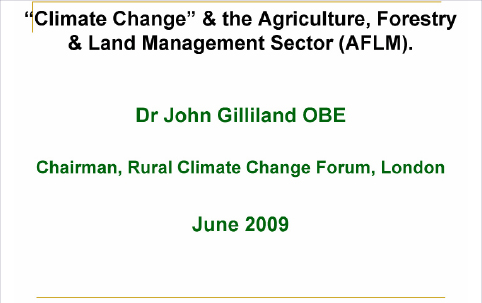



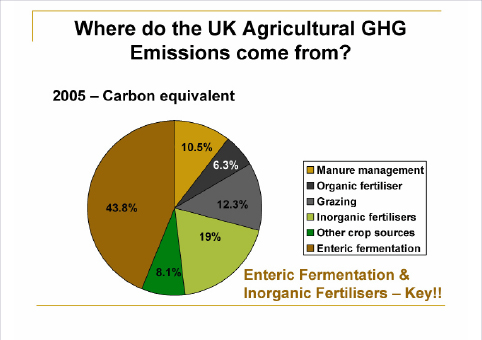
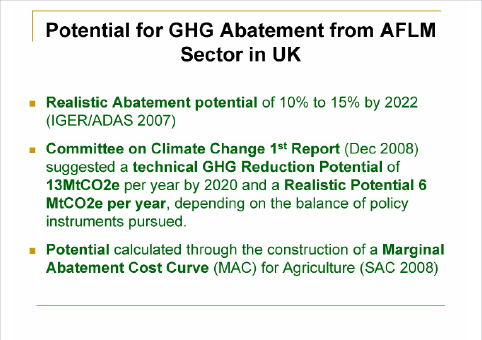
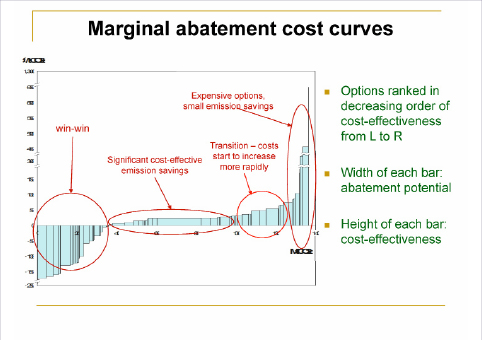
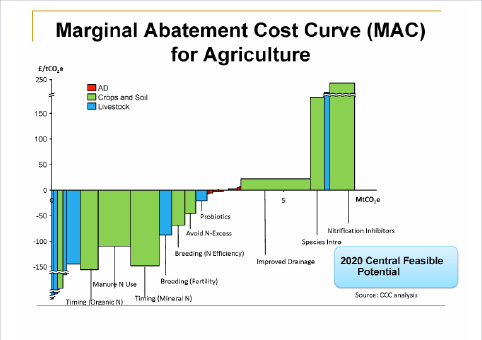




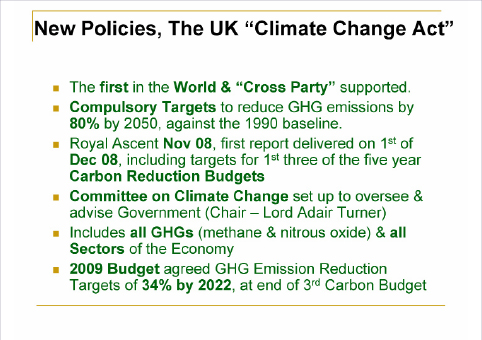
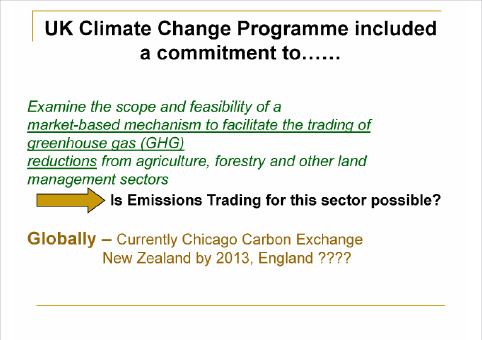
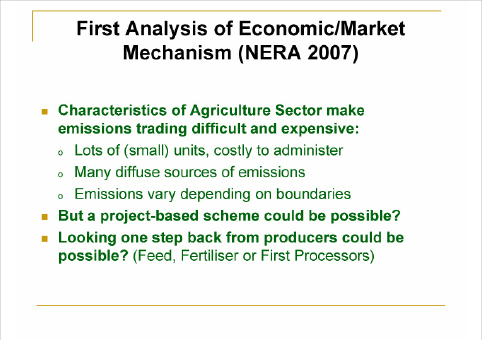
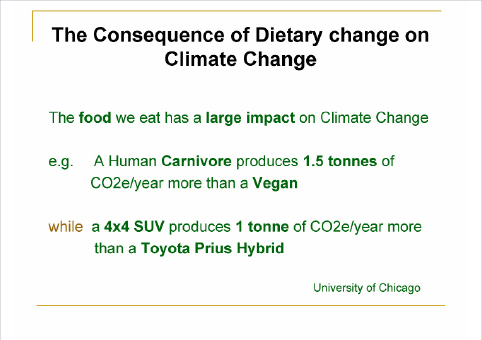
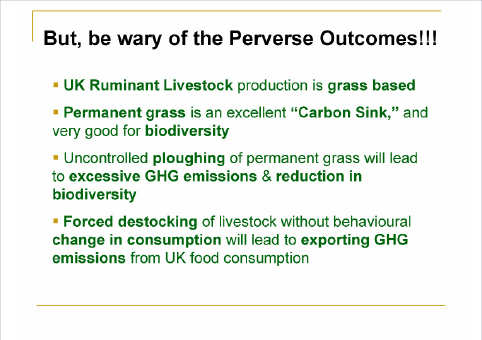
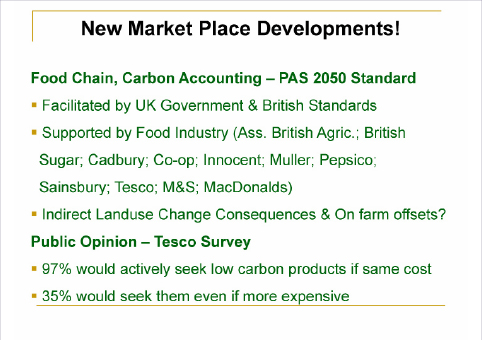

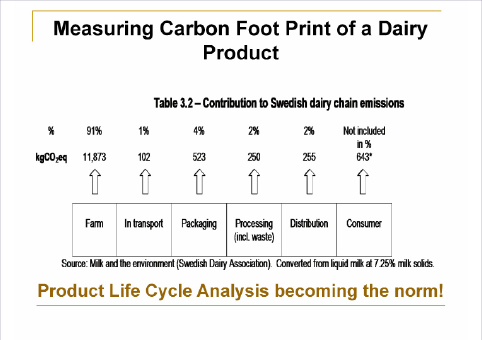
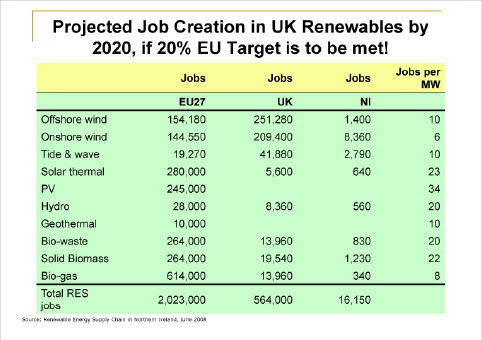
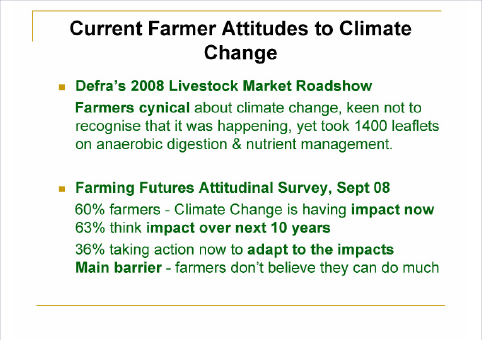
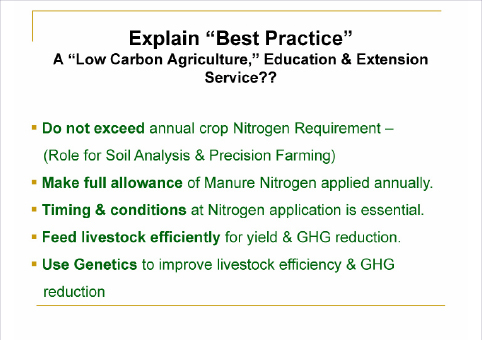
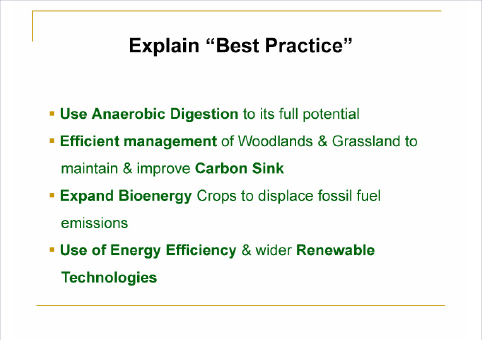




Environment Committees Visit to
Climate Change Unit - Questions
During its visit to the Department’s Climate Change Unit on the 25 June the Environment Committee was given a presentation by Brendan Forde covering the operational extent and functional role of the Climate Change Unit. Following the presentation, the Chairperson indicated that he wished to raise some questions on behalf of the Committee. However, he acknowledged that some of the questions had already been answered in the presentation and where this is the case it has been reflected below.
To consider:
Q.1 (a) How long has the Climate Change Unit been in existence (b) What is their budget (c) How many staff have they in place (d)What are their roles?
A.1.(a) The Climate Change Unit has been in existence since 2003.
A. 1.(b),(c)&(d) As per B. Forde’s presentation on 25 June 2009.
Q.2. If the work DOE has done/is doing is likely to be enough for Northern Ireland to meet its obligations under the Sustainable Development Plan (25% reduction below 1990 levels in greenhouse gas emissions by 2025)?
A.2. Overall responsibility for the Sustainable Development Implementation Plan lies with OFMDFM. As per B Forde’s explanation on 25 June, there is no road map to describe how Northern Ireland will achieve the target to reduce greenhouse gas emissions by 25% below 1990 levels by 2025.
Q.3. If DOE thinks the above Sustainable Development target is sufficient to ensure Northern Ireland contributes its fair share to the UK emissions reduction target?
A.3. There has been no determination made in Northern Ireland as to what is a ‘fair share’ of UK emissions. The UK emissions reduction target has not been allocated for each constituent country.
Q.4.(a) If DOE will introduce legally binding carbon/greenhouse gas emission reduction targets for Northern Ireland? (b) If not, how will Northern Ireland’s contribution to the target be measured?
A.4.(a) The introduction of legally binding carbon/greenhouse gas emission reduction targets for Northern Ireland would be the collective responsibility of the Northern Ireland Executive.
A.4.(b) Northern Ireland’s contribution to the overall UK greenhouse gas emissions is published in the annual Greenhouse Gas Inventories for England, Scotland, Wales and Northern Ireland (latest edition – 1990 to 2006 available on the National Atmospheric Emissions Inventory website: http://www.naei.org.uk/reports.php?list=GHG ).
Q.5. Has DOE approached the Committee on Climate Change to discuss targets/ monitoring/reporting/action plans from a Northern Ireland perspective?
A.5. DOE engages regularly with the Committee on Climate Change on a wide range of climate change issues including the above.
Q.6.Which other government departments has the Climate Change Unit worked with to date and on what particular climate change issues?
A.6. As per B. Forde’s presentation on 25 June 2009.
Q.7. Does DOE have sufficient data to enable them to measure progress against targets?
A.7.Yes. As per B Forde’s explanation on 25 June.
Q.8.What is DOE doing in cross-sectoral work to ensure other departments are able to contribute to their sectoral targets when established by the Committee on Climate Change in September?
A.8. DOE keeps other departments briefed on a regular basis on the work of the Committee on Climate Change. Functional responsibility for policy development remains with the relevant departments.
Q.9. Has any work been done by DOE on assessing the impacts of other government policies and strategies on climate change adaptation and mitigation?
A.9. DOE does not have the functional responsibility for this task nor does the Climate Change Unit have the resources to carry out impacts studies on other government policies.
Q.10. Is any work being done by DOE on integrated communications tying climate change issues to connected areas such as waste, energy, health and transport, with specific target audiences such as the public, business and other departments?
A.10. DOE does not have the functional responsibility for this task nor does the Climate Change Unit have the resources to carry out a full communications strategy.
Q.11. What consideration has DOE given to delivering/encouraging/supporting cross departmental working to deliver a better overall programme addressing multiple issues and identifying early, cheap actions?
A.11. The Programme for Government’s target to reduce emissions is the collective responsibility of individual departments within their functional accountability. The Sustainable Development Implementation Plan describes cross-departmental actions on climate change. Overall responsibility for the Sustainable Development Implementation Plan lies with OFMDFM.
Q.12. Is DOE working with other jurisdictions and if so what conditions are taken into account to ensure Northern Ireland needs are taken into account?
A.12. As per B Forde’s presentation on 25 June.
Sustainable Development Commission’s “Green New Deal" Papers
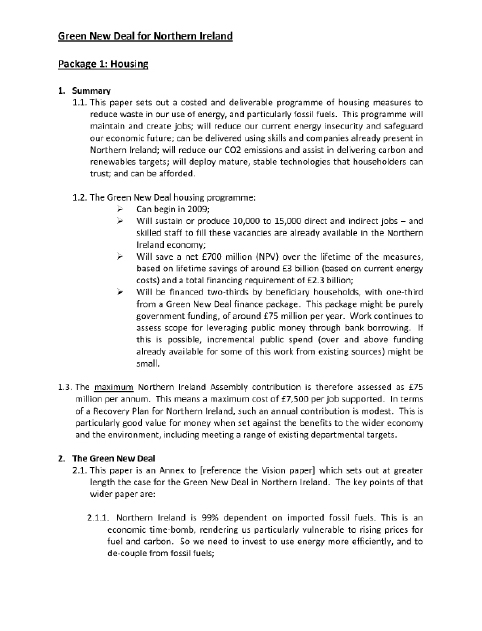

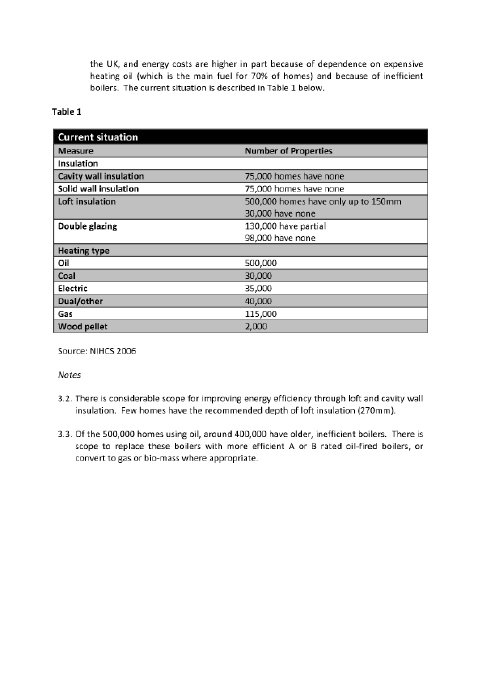
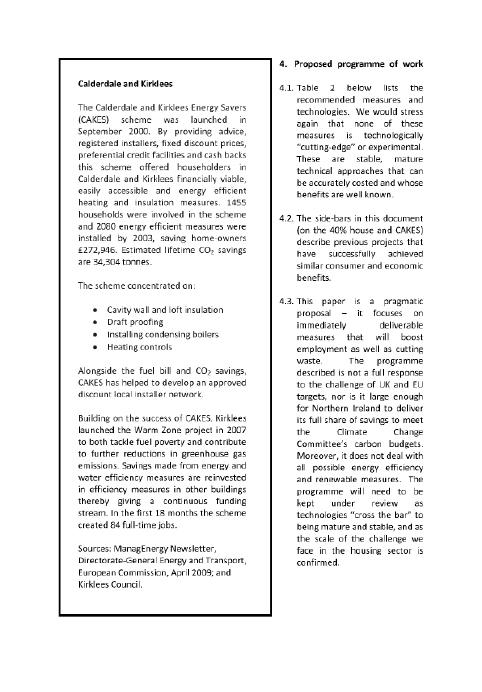
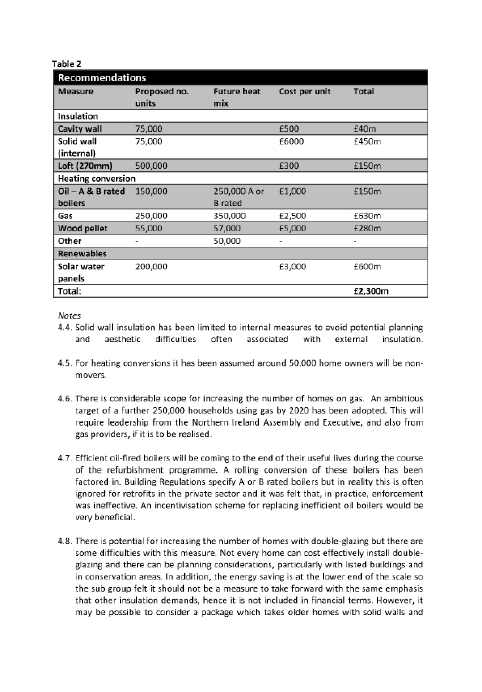


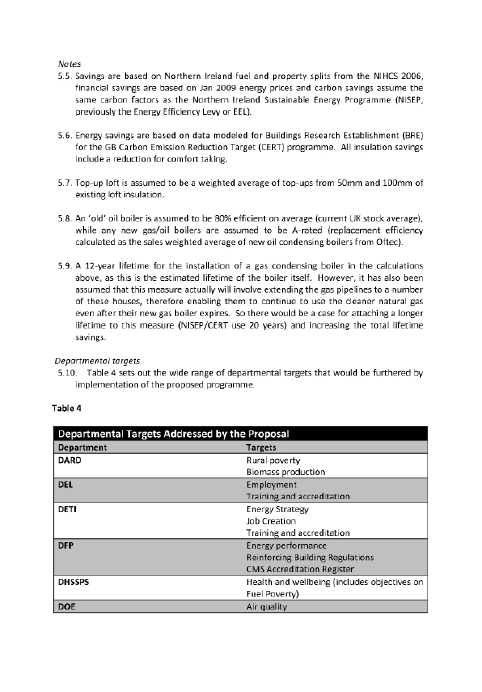
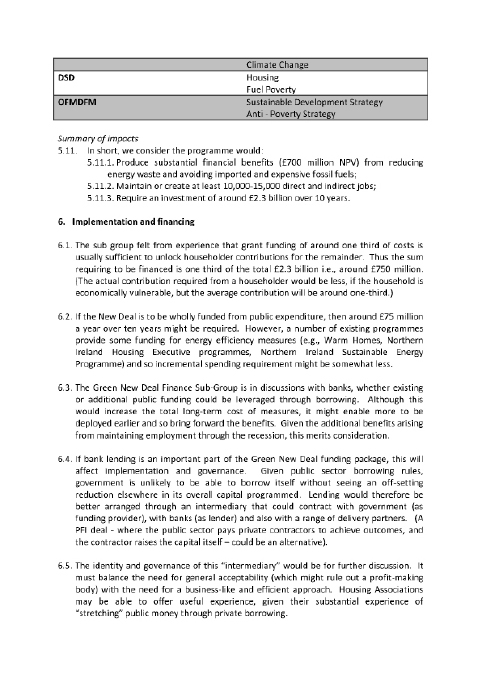


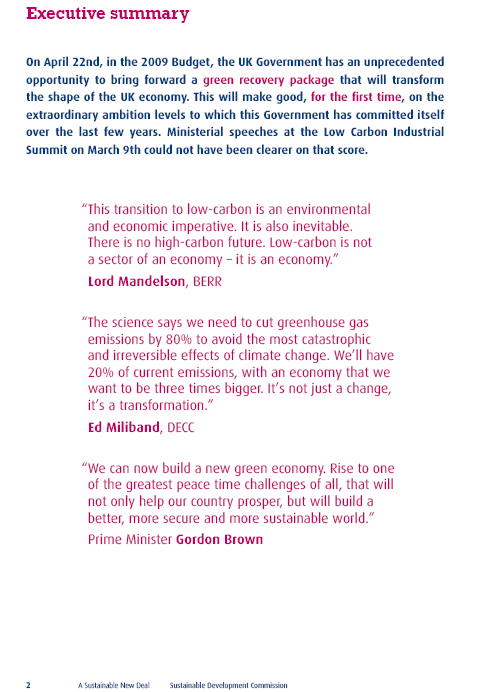

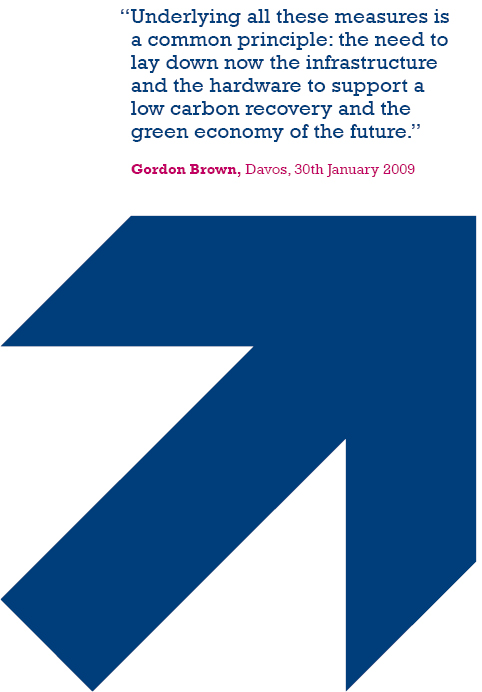

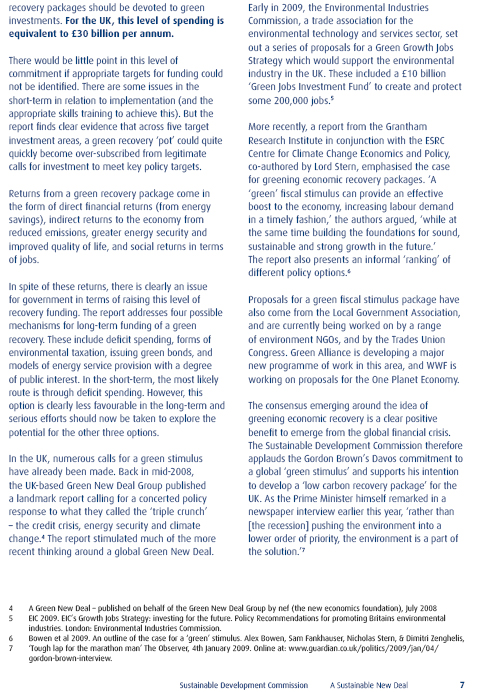


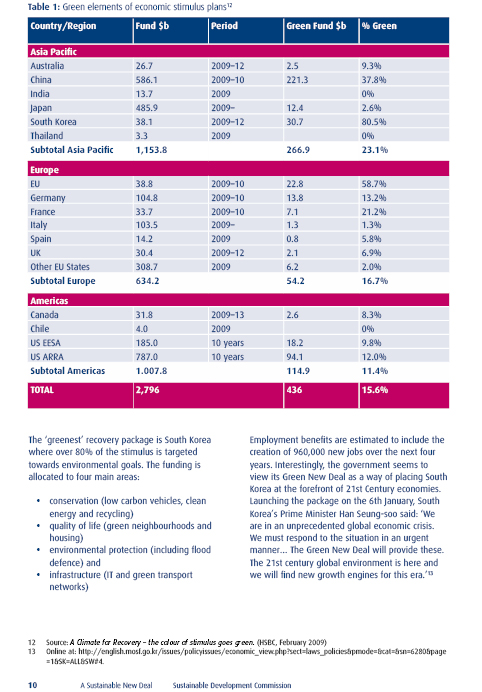
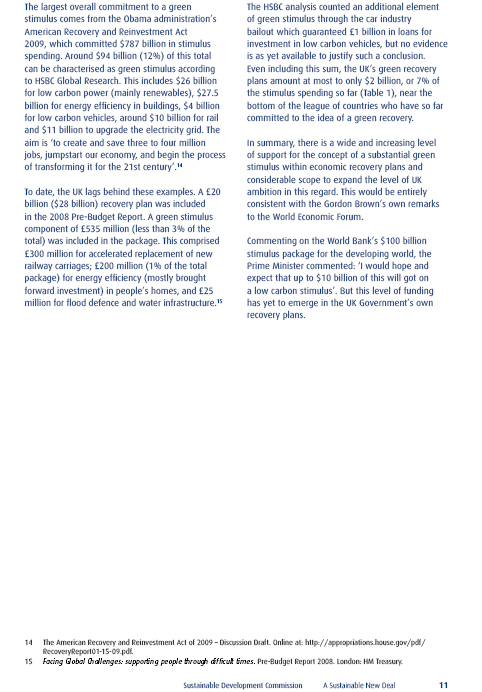
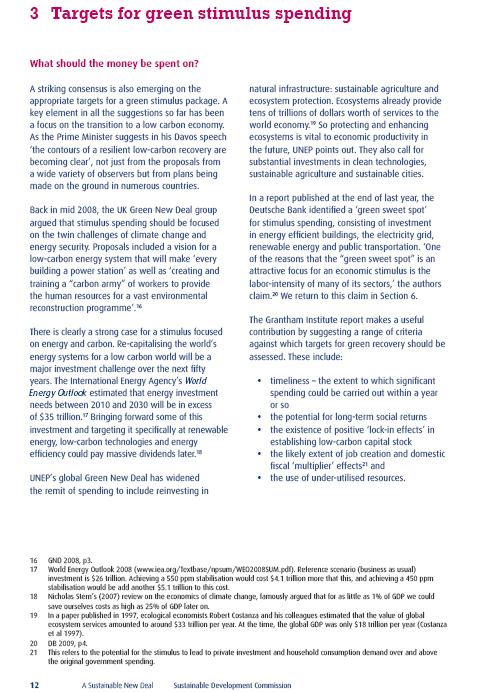
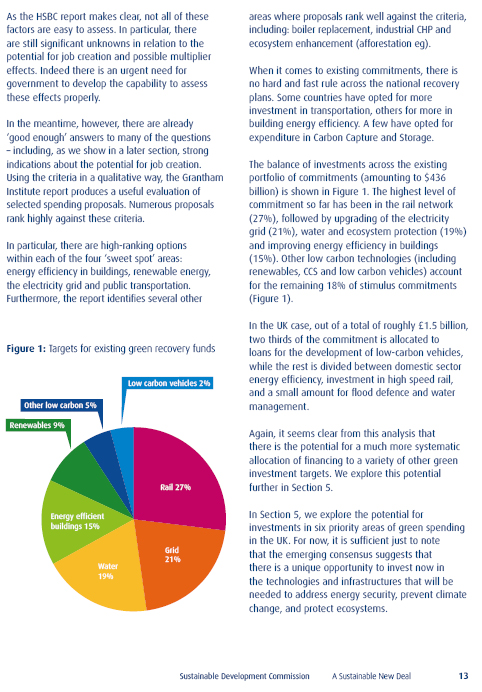


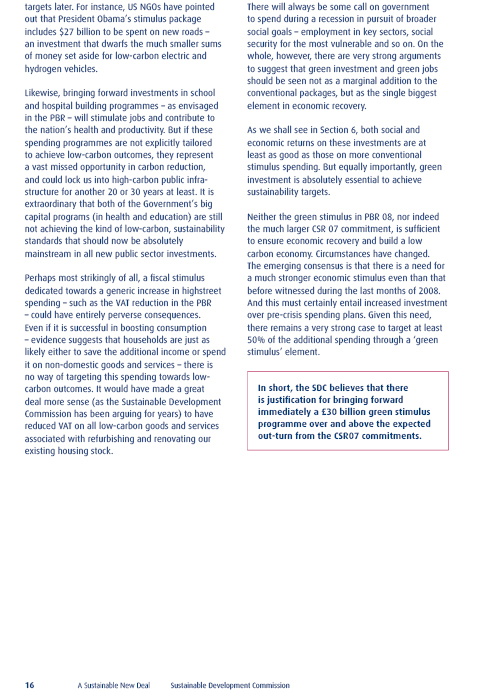
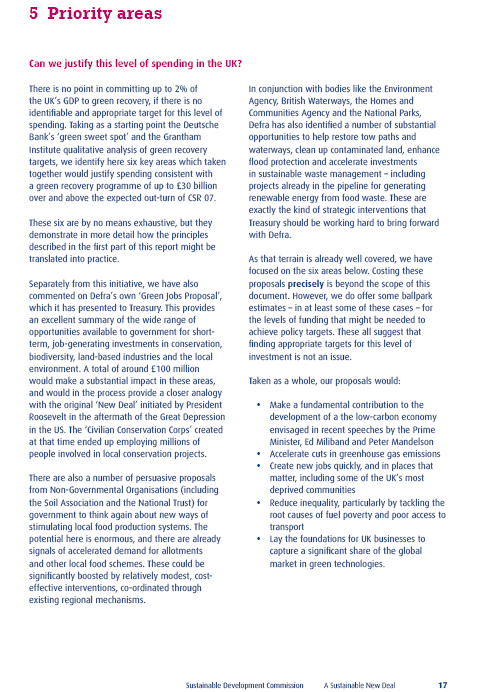

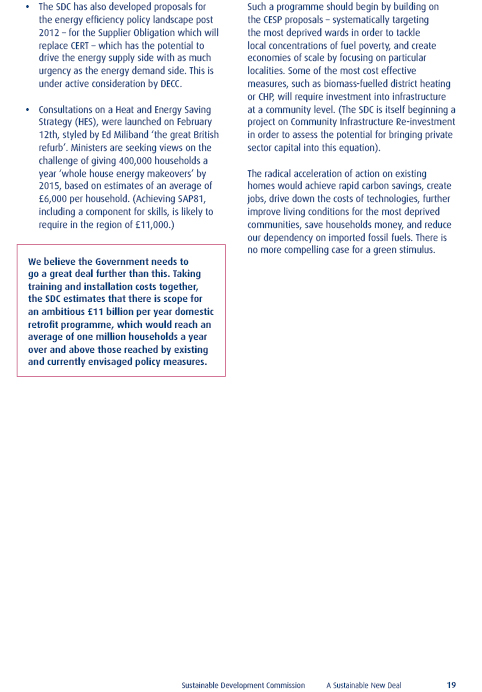


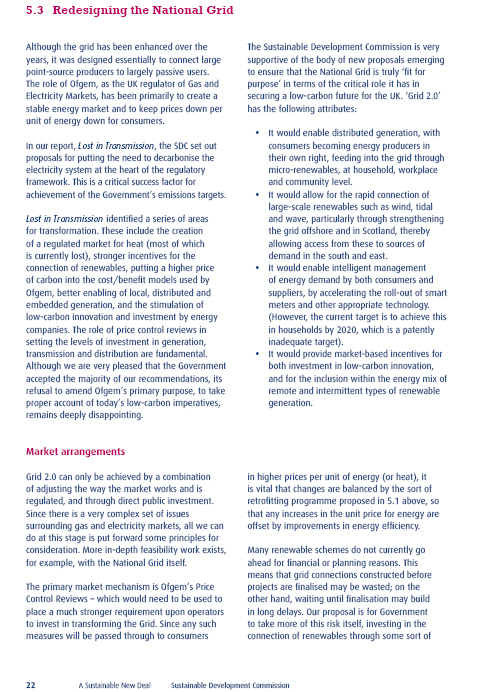

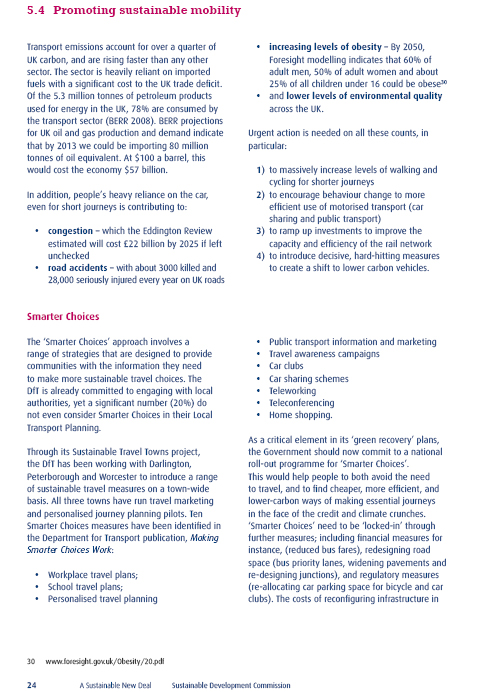
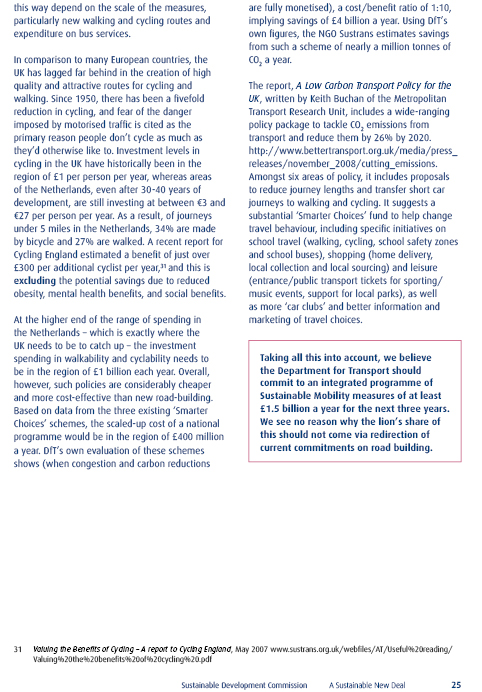
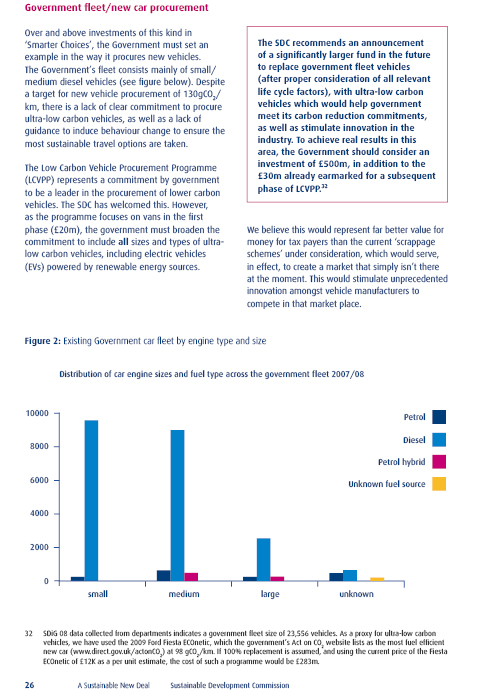

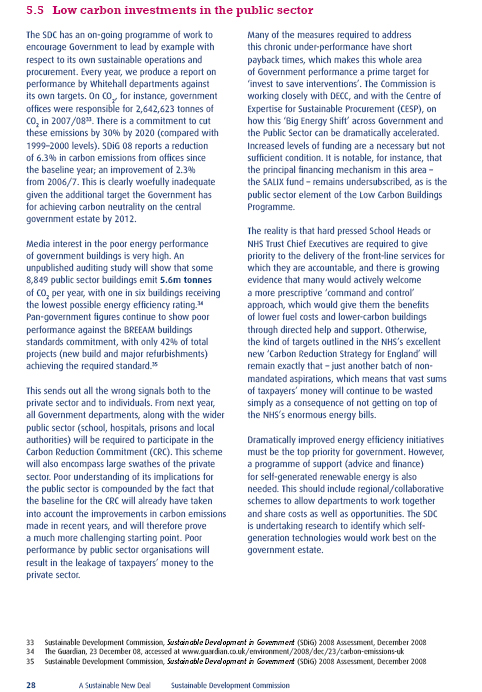
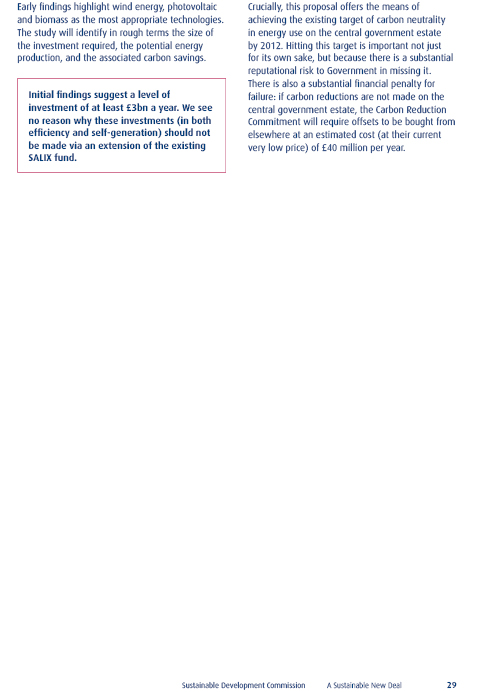
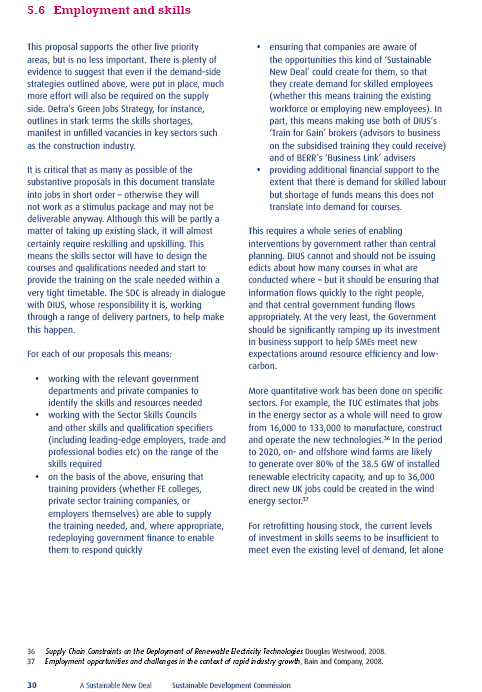


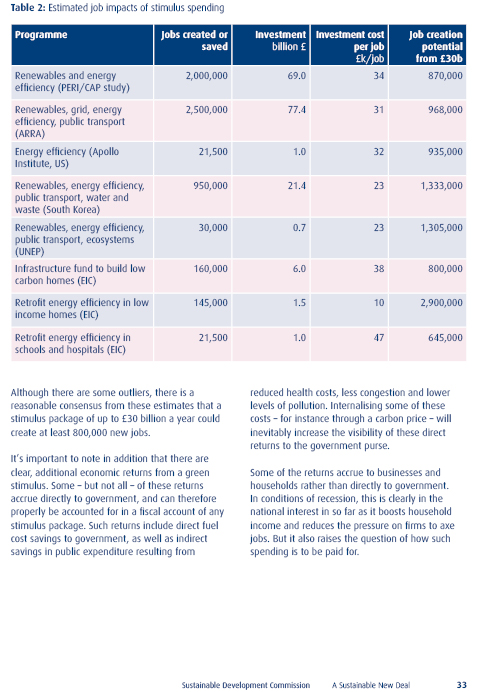

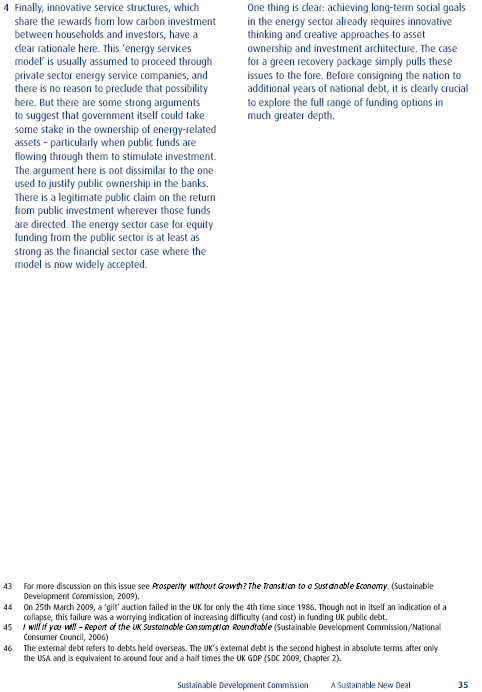
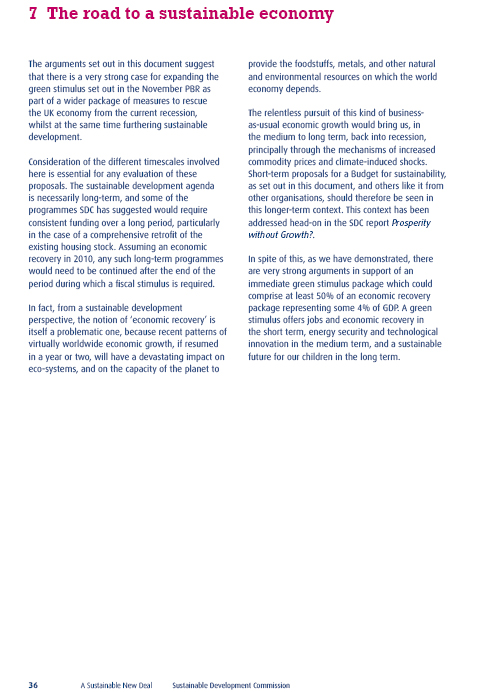
CIEH Paper 1
NI Environment Committee
Inquiry on Climate Change
Supplementary Paper 1
August 2009
The Chartered Institute of Environmental Health
As a professional body, we set standards and accredit courses and qualifications for the education of our professional members and other environmental health practitioners.
As a knowledge centre, we provide information, evidence and policy advice to local and national government, environmental and public health practitioners, industry and other stakeholders. We publish books and magazines, run educational events and commission research.
As an awarding body, we provide qualifications, events, and trainer and candidate support materials on topics relevant to health, wellbeing and safety to develop workplace skills and best practice in volunteers, employees, business managers and business owners.
As a campaigning organisation, we work to push environmental health further up the public agenda and to promote improvements in environmental and public health policy.
We are a registered charity with over 10,500 members across England, Wales and Northern Ireland.
Any enquiries about this response should be directed in the first instance to:
Name Gary McFarlane
Title Director NI FCIEH Chartered EHP
Chartered Institute of Environmental Health
Philip House
123 York Street
Belfast
BT15 1AB
Telephone 028 9024 3884
Email g.mcfarlane@cieh.org
1.0 Background and context
1.1 The Environment Committee is currently completing an inquiry on climate change and the issues relating to Northern Ireland. We gave evidence to this inquiry in May 2009. During the evidence session members of the committee requested further information on several points that we raised. This supplementary paper seeks to provide further information relating to the specific request for further detail regarding the costs associated with upgrading existing housing stock in Northern Ireland.
2.0 Detail
2.1 The government has made a pledge that carbon emissions from existing homes be cut by 80% by 2050. The housing sector represents 27% of total emissions in the UK, and increases in population and falling household size mean this sector is set to increase. It is estimated that some 80% of homes that will be standing in 2050 have already been built. Therefore, existing housing stock will need to play a key role in achieving climate change targets.[1]
2.2 In their submission to the NI Assembly Environment Committee Inquiry into Climate Change the Energy Saving Trust (EST) recommended that a series of targets must be set in Northern Ireland for the reduction of greenhouse gases. EST referred to The Committee on Climate Change’s analysis[2] and highlighted the fact that one key feature of the sectors covered, particularly the residential sector, seemed to be the scope for significant energy-efficiency improvements. Significant energy savings are possible in housing because they can be made at low cost, nil cost and at even negative cost, as up-front investment would be quickly recouped and deliver a good return.
2.3 However, it was noted that while the Climate Change’s analysis looked at the reduction of emissions in the UK as a whole it did not break down the potential for Northern Ireland and the EST were not aware of any NI-specific work on this. The energy efficiency and microgeneration technologies in NI are different from those in the UK as a whole. One reason for this is the number of households that are on gas. In GB, 95% of households are on gas, but only 122,000 homes are here.
2.4 There does not appear to be any specific analysis that has been undertaken to look specifically at the costs of NI meeting delivering a ‘fair and proportionate’ share of the UK’s climate change targets, and this is understandable because NI’s appropriate share has yet to be determined.
2.5 In terms of the costs of delivering improvements to the energy performance of existing buildings it worthwhile noting the Synthesis of Climate Change Policy Appraisals, (DEFRA, January 2007)[3] which showed that it is more cost-effective to deliver carbon savings in the household sector than in any other and the findings of the CCC’s analysis[4] highlight that ‘One key feature of the sectors covered, in particular of the residential sector, is that there appears to be scope for significant energy efficiency improvement at a cost to the economy and to individuals which is low, nil, or indeed negative (i.e. where upfront investment would be quickly repaid and give a good return).’ Despite the fact that this report originated from DEFRA this point is just as relevant and applicable in NI as in England and Wales.
2.6 The EST offered some figures to the NI Assembly Environmental Committee when evidence was given on 14 May 2009:
“There are 75,000 homes that need cavity wall insulation; 75,000 homes that have solid wall insulation; 500,000 homes that need their lofts topped up to the right level of insulation; and 150,000 oil boilers that need to be upgraded. By 2020, we need 250,000 gas conversions, 55,000 wood-pellet boilers, and 200,000 solar and water panels, if we are to get to where we want to be. We need 50,000 ground or air heat pumps. The cost of those measures amounts to £2·6 billion over the next 10 years or so, but they will result in savings of £3·7 billion and 7·3 million tons of carbon."
2.7 Notwithstanding the excellent work of the EST, there still exists considerable scope for improving the efforts made in assisting private home owners and landlords to improve energy efficiency within existing housing. Particularly in this time of economic recession when often modest investment could yield significant savings.
2.8 Not enough use is being made of existing opportunities where public sector services in NI have a “ready made" interface with homeowners and occupiers. These settings and services, which include community health services (e.g. district nurses, health visitors, occupational therapists, social workers etc) as well as environmental health services, often present ideal opportunities to provide simple information on energy saving which at its most basic involves no cost to the homeowner.
2.9 Serious consideration should be given to utilising these opportunities much more effectively and to that end the development of an integrated information pack which sets out the benefits; the steps that individuals can take; and provides a comprehensive list of where further assistance and information can be obtained (including financial assistance with improvements). CIEH would be very happy to assist in the development of this idea and, assuming funds were available for its production, the development of such a pack. We have strong links with the Chartered Institute of Housing who should also be involved in this, along with other potential partners.
2.10 CIEH argued that the remit for home energy efficiency, currently with the Northern Ireland Housing Executive, would have been much better positioned within the new local authorities post RPA, simply because they have much better opportunities in terms of interfaces with the general public, coupled with their active involvement in health partnerships. This remains our position.
[1] Sustainable Development Framework Existing Housing Stock – Climate Proofing February 2009
[2] http://www.theccc.org.uk
[3] http://www.defra.gov.uk/environment/climatechange/uk/ukccp/pdf/synthesisccpolicyappraisals.pdf
[4] http://www.theccc.org.uk/reports/
CIEH Paper 2 - Obesity
NI Environment Committee
Inquiry on Climate Change
Supplementary Paper 2
August 2009
The Chartered Institute of Environmental Health
As a professional body, we set standards and accredit courses and qualifications for the education of our professional members and other environmental health practitioners.
As a knowledge centre, we provide information, evidence and policy advice to local and national government, environmental and public health practitioners, industry and other stakeholders. We publish books and magazines, run educational events and commission research.
As an awarding body, we provide qualifications, events, and trainer and candidate support materials on topics relevant to health, wellbeing and safety to develop workplace skills and best practice in volunteers, employees, business managers and business owners.
As a campaigning organisation, we work to push environmental health further up the public agenda and to promote improvements in environmental and public health policy.
We are a registered charity with over 10,500 members across England, Wales and Northern Ireland.
Any enquiries about this response should be directed in the first instance to:
Name Gary McFarlane
Title Director NI FCIEH Chartered EHP
Chartered Institute of Environmental Health
Philip House
123 York Street
Belfast
BT15 1AB
Telephone 028 9024 3884
Email g.mcfarlane@cieh.org
1.0 Background and context
1.1 The Environment Committee is currently completing an inquiry on climate change and the issues relating to Northern Ireland. We gave evidence to this inquiry in May 2009. During the evidence session members of the committee requested further information on several points that we raised. This supplementary paper seeks to provide further information relating to the specific request for further detail regarding the links between obesity and climate change.
2.0 Detail
2.1 Given the rapidly increasing global concern over the growing percentage of populations, particularly in developed nations and including the United Kingdom and Ireland, a wealth of evidence exists suggesting causal factors (many of which could be readily deduced in any case) which predispose individuals to obesity. People who are obese consume a high percentage of foods high in fat, salt and sugar; eat a high proportion of processed foods; and tend to take little or no physical exercise and in particular either drive or take public transport in preference to walking or cycling.
2.2 All three of these lifestyle issues and choices are inherently carbon intensive either in terms of CO2 emissions from the activities themselves (High fat foods; sugar and salt; processed foods and transport are all sources of significant CO2 emissions) or in the case of meat and dairy the methane (CH3) emissions produced by the animals themselves. Clearly the greater the demand for meat and dairy products, the more intensive these industries become and the greater the carbon footprint as a result.
2.3 Apart from the types of food eaten, there is also evidence that suggests that people who are obese eat more food in general than those with a normal body mass index.
2.4 Research carried out by Department of Epidemiology and Population Health at the London School of Hygiene and Tropical Medicine[1] compared two theoretical populations: one with a ‘normal’ mix of body types, and the other an ‘overweight’ population where 40% of people were obese and the findings show that as the population distribution of body mass index (BMI) increases so does greenhouse gas emissions. Compared with a normal population distribution of BMI, a population with 40% obese requires 19% more food energy for its total energy expenditure. Greenhouse gas emissions from food production and car travel due to increases in obesity in a population of 1 billion are estimated to be between 0.4 giga tonnes (GT) and 1.0 GT of carbon dioxide equivalents per year.
2.5 This research shows that the maintenance of a healthy BMI has important environmental benefits in terms of lower greenhouse gas emissions. The authors argue that obesity should be recognised as an environmental problem because of its contribution to climate change from additional food and transport GHG emissions.
2.6 An earlier report by the Institute for European Environmental Policy (IEEP) in 2007[2] also linked climate change and obesity. The report found that by returning to the walking patterns of 30 years ago, when car ownership was less common (i.e. by walking just 1 hour more during the week), people could help save up to 11 MtCO2 (15.4% of total emissions from passenger cars) and reduce the chances of becoming obese (i.e. avoiding an average weight gain of 2lb 11oz each year, which over 20-30 years could lead to an obese body weight).
2.7 In other words this study suggests that reverting to the walking patterns we had before owning a car, when physical activity included more regular walking to work, to the shops and to escort children to school, could be an important part of national programmes to fight climate change and obesity. The costs of such programmes are likely to be dwarfed by those that would be incurred by the National Health Service and society at large through inactivity, ill-health and premature death as a consequence of obesity (estimated at £8.2 billion per year).
2.8 Globesity: A Planet Out of Control?[3] is a book by four public-health researchers who show how climate change and obesity draw from a shared web of roots. Both problems worsen as car culture spreads, desk jobs replace manual jobs, and carbon-intensive foods (including meat) become available to more and more eaters
2.9 The Department of Health in England has recognised the importance of providing sustainable food in hospitals and how this has a positive impact, not only on health and well-being, but also on the environment. In their report ‘Sustainable food: a guide for hospitals[4]’ the DH and the NHS highlight the importance of sustainable food, defining it as food that should be produced, processed and traded in ways that contribute to thriving local economies and sustainable livelihoods whilst avoiding damaging natural resources and avoid contribute to climate change. Sustainable food should also be safe, healthy and nutritious for consumers and it should “respect biophysical and environmental limits in its production and processing, while reducing energy consumption and improving the wider environment."
2.10 It has been suggested that production, distribution and consumption of food in the UK account for 22% of total greenhouse gas emissions[5] and the NHS accounts for 25% of all public sector carbon emissions and 3.2% of total carbon emissions in England[6]. It is therefore recognised that the sheer volume of NHS food services provides a significant opportunity for the NHS to alter its approach to the sourcing of ingredients and the production of food, leading to improvements in the health of patients and staff, while reducing environmental impacts.
2.11 The Scottish National Food and Drink Policy Leadership Group recently compiled extensive research on health and food sustainability and noted that the biggest contributors to the ecological footprint within Scotland are the food industry, the housing sector and mobility (including air travel). Whilst there is debate about the exact contribution of food, there is some agreement that the food supply chain accounts for around 20% of the Scottish footprint (Garnett, 2008[7], SEI, 2008[8]) Within the food supply chain, there are several key areas that can be identified as major contributors namely; Intensive livestock production (methane production); food processing ( water, energy costs); food packaging; food conveyance (at all stages from production to processers to retailers to consumers); and food waste
2.12 In their study report on A Framework for Pro-environmental Behaviours DEFRA (2008)[9] focused on three main areas of action related to the food chain notably waste and recycling, eating food locally in season and adopting diets with lower environmental impacts. Whilst reductions in each of these arenas are desirable from an environmental sustainability perspective, there may be unintended consequences (both positive and negative) in terms of economic and socio-cultural perspectives (and indeed dietary implications) which require careful modelling to be able to assess potential intervention effects. For example, reduction in the consumption of sugary drinks which are presented in a range of packaging, transported from far distant sites of production, which are often stored and served from chilled (energy using) cabinets and vending machines could make a significant contribution to the reduction in dental caries and obesity with minimal impact on the socio-cultural sustainability of Scotland.
Summary
Typical dietary behaviours of people who are obese or, alternatively, the type of diets that predispose individuals to obesity are also carbon intensive, more so than a healthier diet.
Correspondingly, changes in dietary behaviour that would hypothetically reduce an individuals risk of obesity and improve overall physical health would also have a positive environmental impact.
Likewise, other behavioural patterns such as more physical exercise through for example walking and cycling as an alternative means of transport to the car, which are proven to benefit overall health and wellbeing, as well as reduce obesity risk, are also less carbon intensive.
There are very clear opportunities for government departments and agencies, most notably in the health and environmental sectors, to develop joint campaigns and programmes around these issues. Much greater effort needs to be channelled into doing so.
[1] Edwards P and Roberts I. Population adiposity and climate change. IJE 2009;
[2] Davis, A et al (2007) Unfit for purpose: how car use fuels climate change and obesity Institute for European Environmental Policy: London
[3] Delpeuch, F et al Globesity: A Planet Out of Control? (2009)
[4] Department of Health, April 2009
[5] DEFRA, Securing the Future, 2005
[6] NHS Sustainable Development Unit, Saving Carbon, Improving Health, 2009
[7] Garnett T (2008) Cooking up a storm Food Climate Research Network. University of Surrey http://www.fcrn.org.uk/frcnPubs/publications/PDFs/CuaS_web.pdf
[8] SEI (2008) http://www.resource-accounting.org.uk/downloads
[9] DEFRA (2008) A framework for pro-environmental behaviours London: DEFRA.
“Smarter Travel" Policy from
Department of Transport


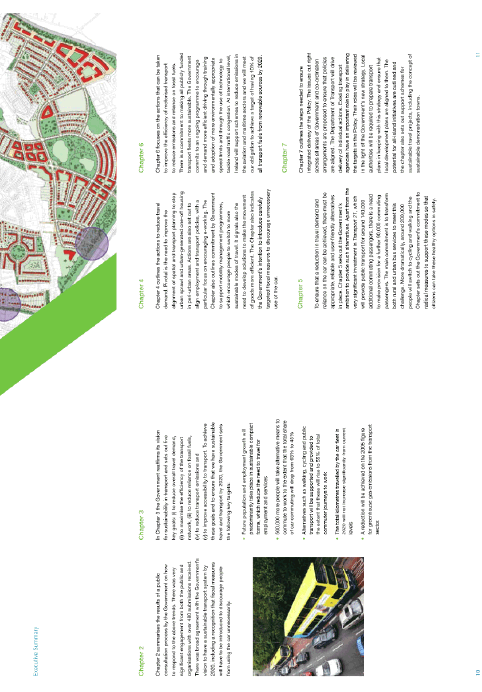
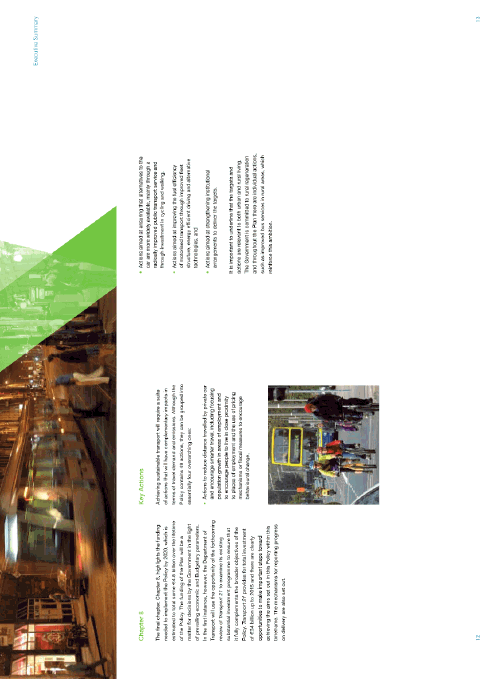
ICTU “Round Table" Presentation
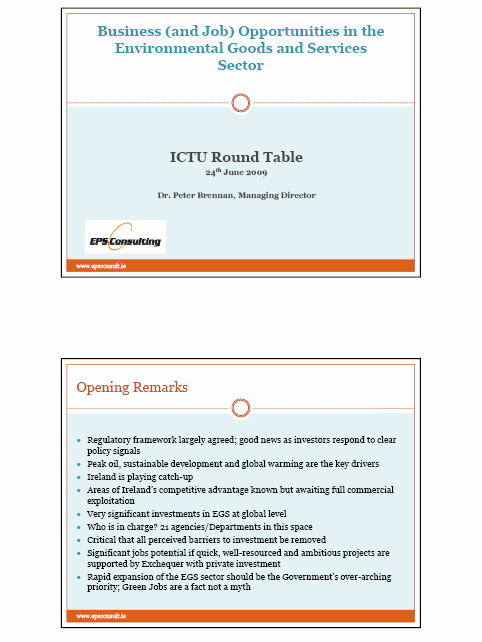

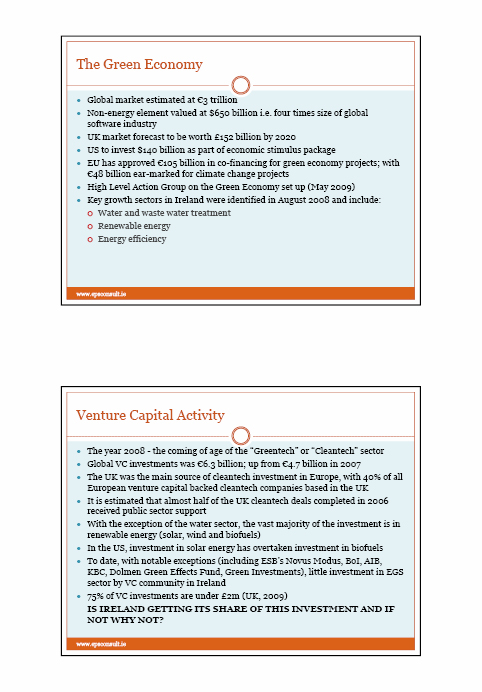
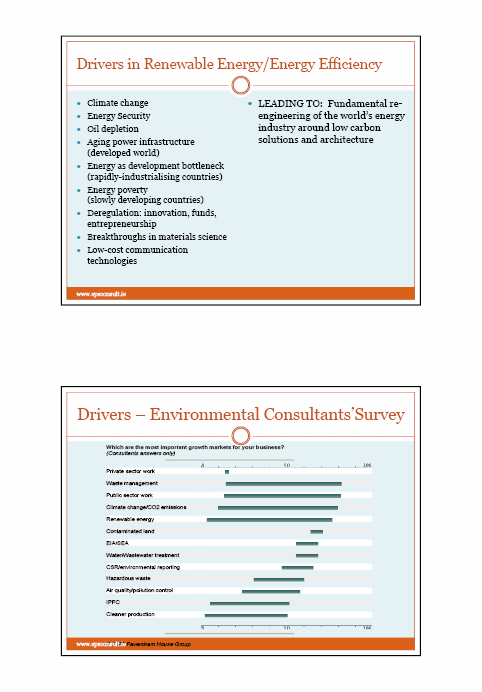

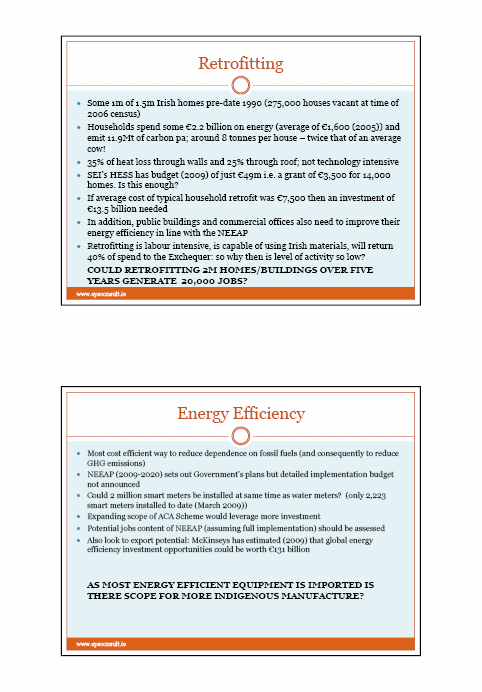

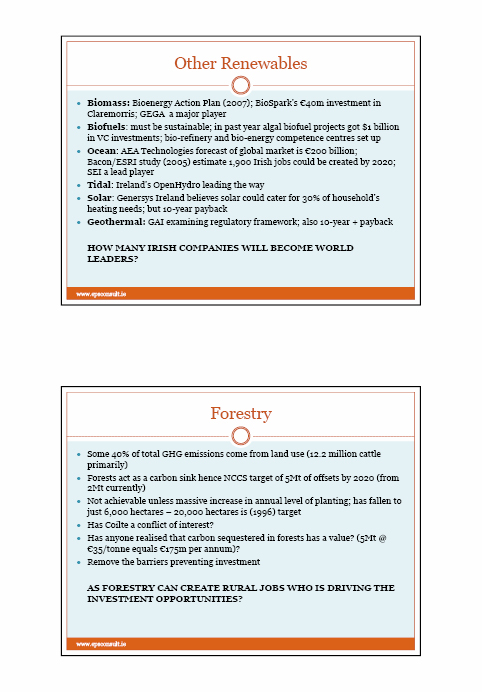
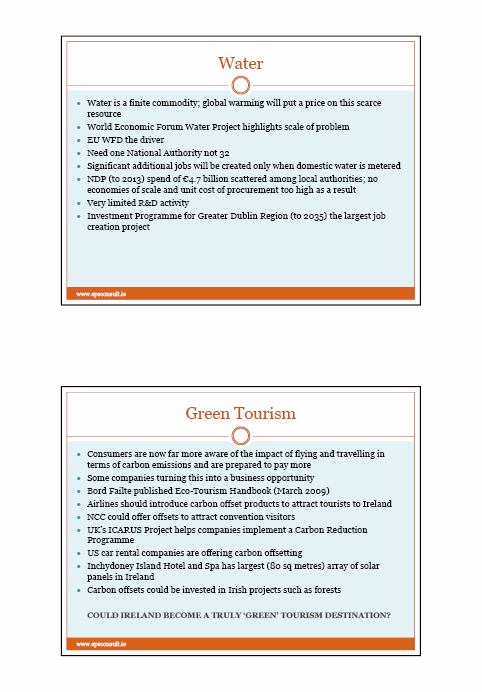



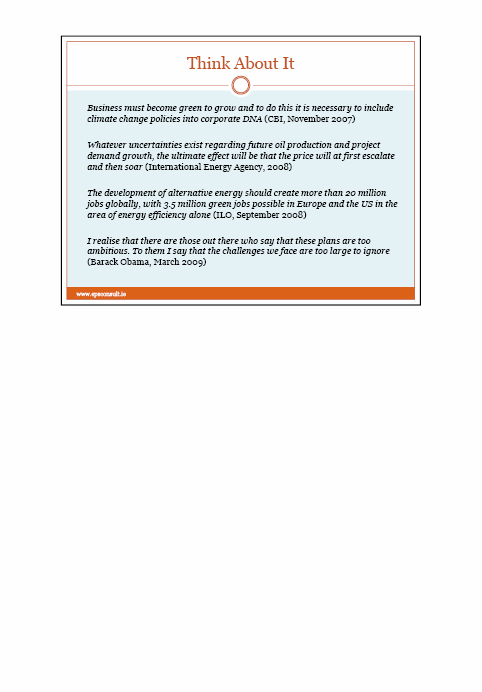
“Energy Efficiency Action Plan" from
the Department of Communications,
Energy and Natural Resources

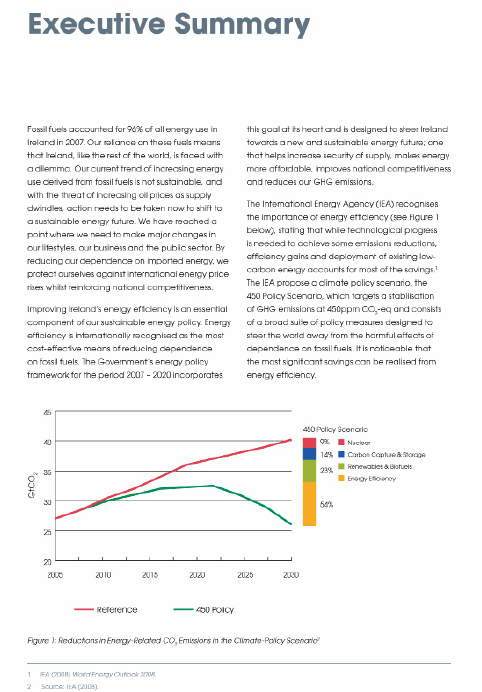




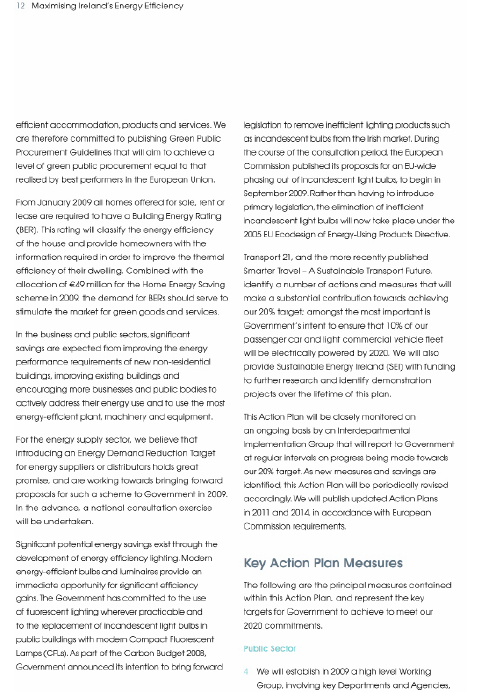
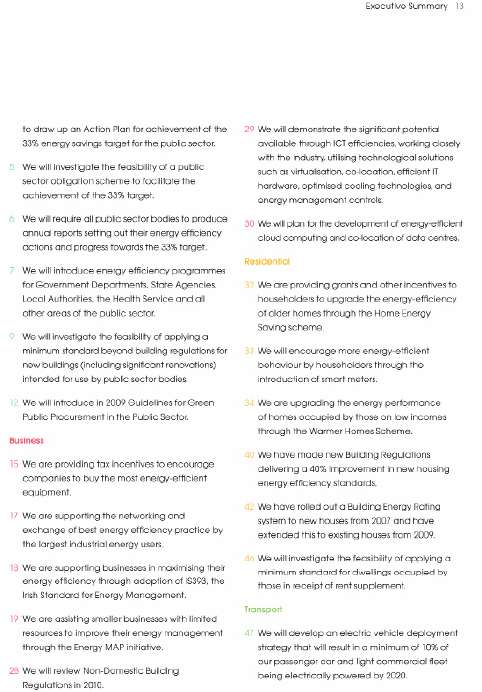


Response from Department of the Environment, Heritage and Local Government to Committee Query on
Climate Changes Structures
July 2009
Mr. Patsy McGlone MLA
Chairperson
Committee for the Environment
Environment Committee Office
Room 245
Parliament Buildings
Belfast
BT4 3XX
Dear Mr. McGlone,
I refer to your recent letter to me regarding the inquiry being carried out into climate change by the Northern Ireland Assembly Environment Committee.
At the time, you also wrote to the International Climate Change Unit in this Department. My reply to you incorporates the response from this section.
A range of structures are in place in the Republic, all aimed at ensuring that a ‘whole-of government’ approach is taken in relation to policies and measures relating to climate change.
Our response is broken down as follows.
- Political structures:
- National structures - Mitigation
- National structures - Adaptation
- The role of the Environmental Protection Agency
- International structures
Yours sincerely
Pat Macken
Climate Change Policy: National
1. Political Structures
Since the publication of the National Climate Change Strategy 2007 - 2012, work has continued across Government Departments on the development of measures to reduce national greenhouse gas emissions. Progress in implementing such measures, and the coordination of work across Government with respect to the climate change agenda is overseen by the Cabinet Committee on Climate Change and Energy Security.
The Taoiseach, Mr. Brian Cowen T.D., chairs this Cabinet Committee and membership also includes the Tánaiste and Minister for Enterprise, Trade and Employment, the Minister for the Environment, Heritage and Local Government, the Minister for Communications, Energy and Natural Resources, the Minister for Agriculture, Fisheries and Food, the Minister for Finance, the Minister for Foreign Affairs, the Minister for Health and Children, the Minister for Transport, the Attorney General and the Minister of State with responsibility for energy and the environment.
The Cabinet Committee was established to provide oversight for the development and implementation of effective policies and measures which meet the energy, environmental and climate change priorities set out in the Programme for Government.
A Senior Officials’ Group on Climate Change and Energy Security, chaired by the Department of the Taoiseach has also been established to support the work of the Cabinet Committee. There are also a number of subgroups which report to the Senior Officials Group including a Technical Analysis Steering Group. (These two Groups are discussed further under National structures – Mitigation).
I note that you have also written to the Clerk of the Joint Committee on Climate Change and Energy Security and to the Clerk of the Select Committee on the Environment, Heritage and Local Government. Their respective replies will deal with the Committee work in more detail.
As a brief overview, the Joint Committee on Climate Change and Energy Security was created by Dáil order on 14 November 2007 to consider the following issues:
- medium and long term climate change targets and the key measures needed to meet those targets;
- the role of the Agriculture sector in providing bio-fuel and biomass crops and consequential implications;
- the levels of power supply which can be generated from renewables or other new power supplies;
- the projected energy demand from transport and the implications for energy security and emissions targets;
- such other matters as may be referred to it from time to time by both Houses of the Oireachtas
The Joint Committee on Climate Change and Energy Security is also important in developing cross-party consensus both on targets and on the measures required to achieve them.
Membership details are available from the following web address:
The Select Committee on the Environment, Heritage and Local Government also has role in this area, considering Bills, Estimates for Public Services, International agreements, Annual Output Statements, and Value for Money and Policy Reviews produced by or within the aegis of the Department of the Environment, Heritage and Local Government
Membership details are available from the following web address:
2. National structures - Mitigation
As mentioned previously, the Cabinet Committee on Climate Change and Energy Security is supported by a Senior Officials Group.
The Senior Officials Group supports the work of the Cabinet Committee on Climate Change and Energy Security and helps to ensure appropriate synergies with the relevant cross-departmental teams.
The Senior Officials Group is tasked with addressing the challenges posed to Ireland in achieving its greenhouse gas emission targets and informing and implementing policy in this regard. Departmental membership mirrors that of the Cabinet Committee, and the Group is chaired by the Department of the Taoiseach.
At the request of the Cabinet Committee, an informal Expert Advisory Panel has been established to give an independent expert perspective on the potential for, and cost of, greenhouse gases reductions in the non-ETS sector. The Panel has met on three occasions to date and it is anticipated it will make a report to the Cabinet Committee before the end of the year.
The Technical Advisory Steering Group was established to provide analysis to Government on the implications for Ireland of the European Commission’s proposed greenhouse gas targets for 2020. The Department of the Environment, Heritage and Local Government chairs the group, which meets quarterly and reports to the Senior Officials Group.
The Steering Group includes representatives from the Departments of Environment, Heritage and Local Government, Communications, Energy and Natural Resources, Transport, Enterprise, Trade and Employment, Agriculture, Fisheries and Food, Finance and the Taoiseach.
It also includes representatives from COFORD (the National Council for Forest Research and Development), Teagasc (the agriculture and food development authority in Ireland) , the Economic and Social Research Institute (ESRI), Forfas (Ireland’s national policy advisory body for enterprise and science), the Environmental Protection Agency, Central Statistics Office (CSO), Sustainable Energy Ireland (SEI) and the Marine Institute.
Subgroups to these Groups have been established on an ad-hoc basis to consider specific issues and to report to the two main Groups. The Technical Analysis Steering Group will oversee progress across these areas and may also identify further issues for attention. At present these include:
- an Energy Modelling Group
- a Group working on the Development of a National Transport Model
- a Sub-Group to develop guidelines and change experiences on quantifying policies and measures
- a Working Group to feed into and discuss agriculture modelling
- a Preferred Policy Measures Group to reduce greenhouse gas emissions for Ireland
3. National structures - Adaptation
In its National Climate Change Strategy for the period 2007-2012, the Irish Government made a commitment to publish a National Adaptation Strategy in 2009. The planned adaptation strategy will provide a framework for integration of adaptation issues into decision-making at national and local level.
The EPA is currently finalising a report on the impacts of climate change which will input into the development of the adaptation strategy. Subsequent steps will be informed by the findings of this report. The strategy must be informed by the best available scientific research in order to enable the various sectors to plan ahead and develop policies and strategies to enable Ireland cope with the likely impacts of climate change.
A steering group has been established which will facilitate the Department in consulting with stakeholders. Attached at Appendix 1 is a list of members of this steering group. It is hoped that a representative from Northern Ireland will also participate on this group.
The European Commission, in its white paper Adapting to climate change: Towards a European framework for action, proposed the establishment of the Impacts and Adaptation Steering Group (IASG) which would be composed of experts and representatives from the EU Member States who are involved in the process of preparing national adaptation programmes and measures. Technical groups would feed into this steering group. The Department will be represented on these groups when they are established.
4. The role of the Environmental Protection Agency
The Environmental Protection Agency (EPA) has responsibilities for a wide range of licensing, enforcement, monitoring and assessment activities associated with environmental protection.
The Climate Change Programme in the EPA encompasses responsibilities for Emissions Trading, Kyoto Project Mechanisms, National Inventories, Emissions Projections, Scientific Advice, and Climate Change Research. It is structured into 8 functional areas as follows:
1. Emissions Trading – National Competent Authority;
2. Emissions Trading – National Allocation Authority;
3. National Emissions Trading Registry;
4. Kyoto Project Mechanisms;
5. Reporting and Review of National Inventories (for Greenhouse gases and for Acid Gases)
6. National Emissions Projections (for Greenhouse Gases and for Acid Gases);
7. Air and Climate Science (including Acid Gases and Earth Observations);
8. Climate Change Research
5. International structures
In relation to contacts with our European partners and at the international level, on-going discussion, cooperation and liaison takes place through the following channels and structures:
- EU: Working Party on International Environmental Issues (Climate change) – this group of officials, representing each Member State of the Union and the European Commission meet on a monthly basis. The group discuss and agree on European Union positions going into the international negotiations taking account of the over-arching policy agreed by Heads of State and Government at the European Council.
- EU: Expert Groups – these informal groups of national experts meet under a mandate from the Working Party to discuss and provide advice on the technical, detailed elements of the positions being developed. There is, for example, an expert group on land use, land use change and forestry (LULUCF) looking at new and improved accounting rules for the sector and another on the flexible mechanisms under the Kyoto Protocol, looking at the workings of the mechanisms and how they might be made more efficient. The expert group on reporting looks at inventory information, how it is managed, reported and reviewed and future requirements in this area. All expert group work is passed to the Working Party for final approval.
- International level: the policy context for the climate change negotiations at international level is the objective of limiting greenhouse gas emissions so as to prevent dangerous climate change as set out in Article 2 of the United Nations Framework Convention on Climate Change.
- The Parties to the Convention have been meeting frequently over the past 18 months, following the Bali Roadmap (December 2007), which agreed a programme of work designed to ensure that a successor to the Kyoto Protocol would be agreed at the meeting of the Conference of the Parties in Copenhagen in December 2009.
- During the international negotiations, the EU holds coordination meetings on the spot on a daily basis, with the Presidency speaking on behalf of the EU in the plenary sessions, while there are nominated “lead negotiators" appointed to speak in the Ad Hoc Working Groups. Many bilateral meetings with third countries take place during the international meetings, usually with the EU Troika who regularly report back to the Working Party on the discussions held.
Appendix 1
Membership of National Adaptation Strategy Steering Committee
| Organisation | |
| D/ Environment, Heritage and Local Government | Water Quality Section |
| Water Policy | |
| Water Inspectorate | |
| National Parks & Wildlife | |
| Spatial Planning | |
| Planning | |
| D/Transport | |
| D/Agriculture, Food and Forestry | |
| D/ Communications, Energy & Natural Resources | |
| Environment Protection Agency | |
| Teagasc (The agriculture and food development authority in Ireland) | |
| Fáilte Ireland | |
| Office of Public Works | |
| Met Eireann | |
| Geological Survey of Ireland (GSI) | |
| COFORD (The National Council for Forest Research and Development) | |
| Marine Institute |
Department Reply to Request for
Response from Officials and a Hansard Recording in Relation to the Environment Committee Visit to Climate Change Unit

Central Management Branch
10-18 Clarence Court
BELFAST
BT2 8GB
Telephone: 028 90 5 40855
Facsimile: 028 90 5 41169
Email: una.downey@doeni.gov.uk
Date: 6 July 2009
Mrs Alex McGarel
Clerk to the Environment Committee
Northern Ireland Assembly
Parliament Buildings
Stormont
Belfast
BT4 3XX
Dear Alex
Further to the request for further information following the Committee’s visit to the Climate Change Unit (CCU) on 25 June 2009, please see attached:
i. response prepared by CCU officials.
ii. copy of presentation
The Hansard record will also be relevant.
I trust this information is of assistance, should you require anything further please contact me directly.
Yours sincerely,
Úna Downey
DALO
Presentation for Environment Committee Visit to Climate Change Unit on 25 June 2009
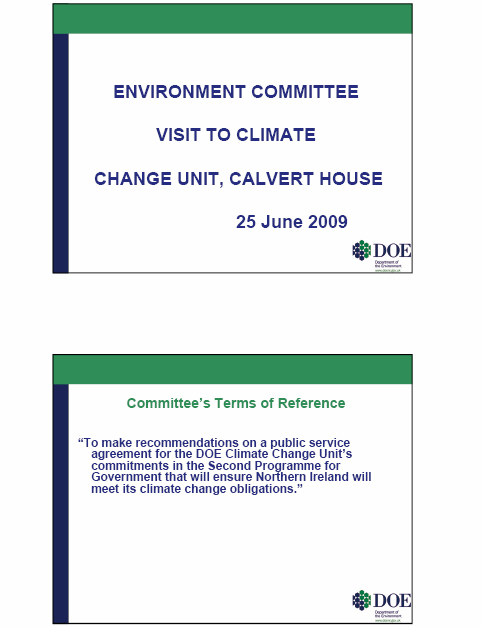

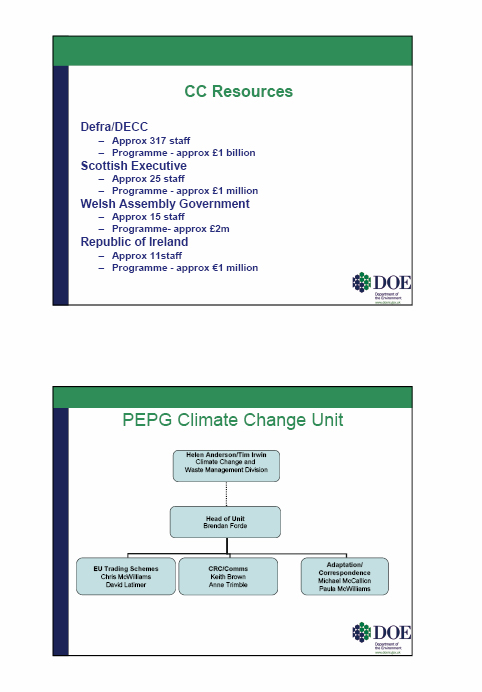
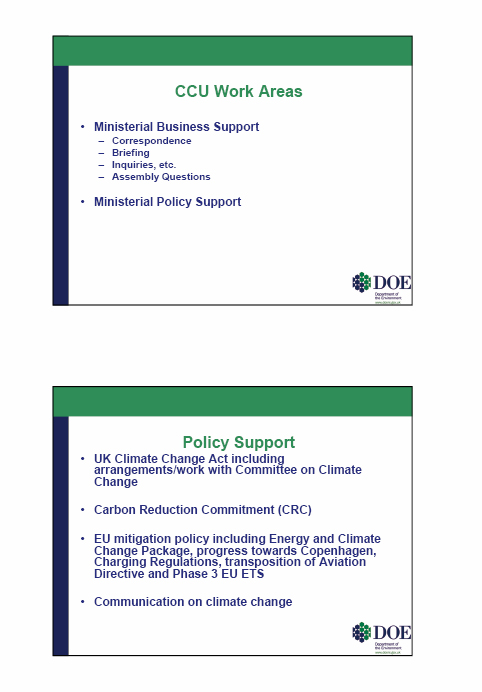


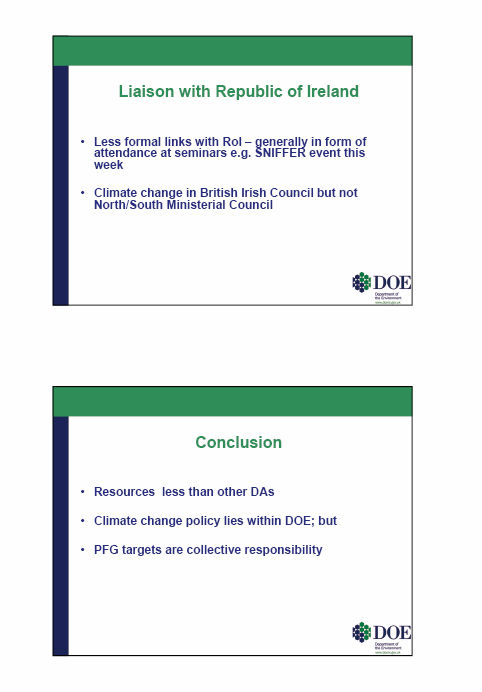
Greenhouse Gas Emissions Report
July 2009





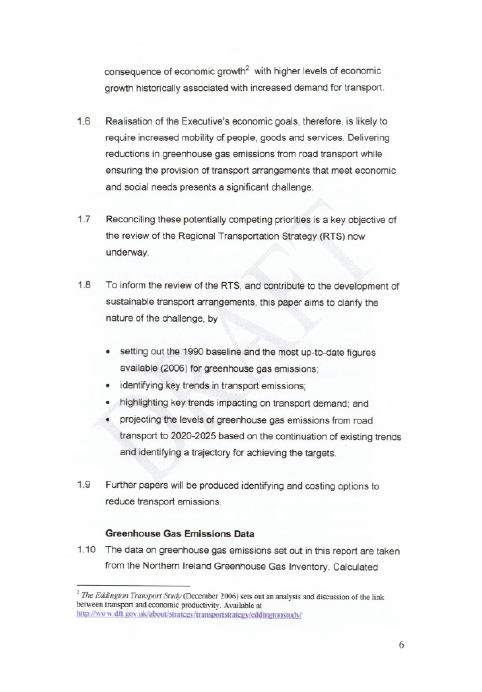
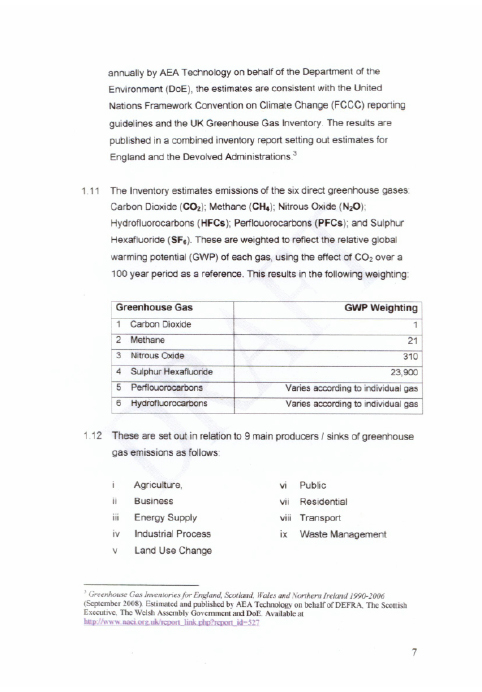
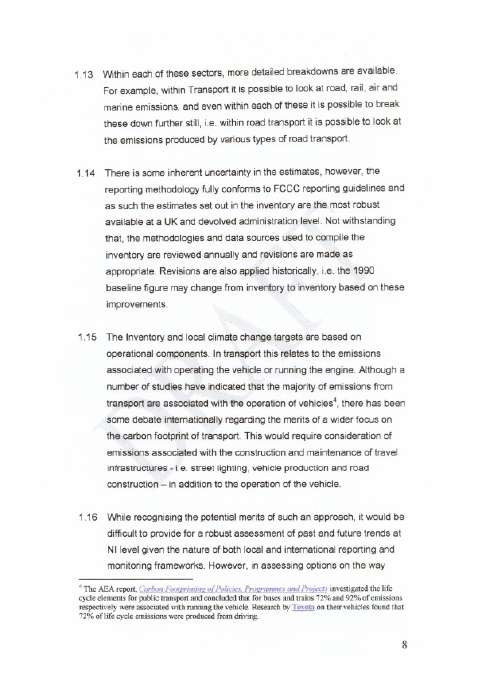

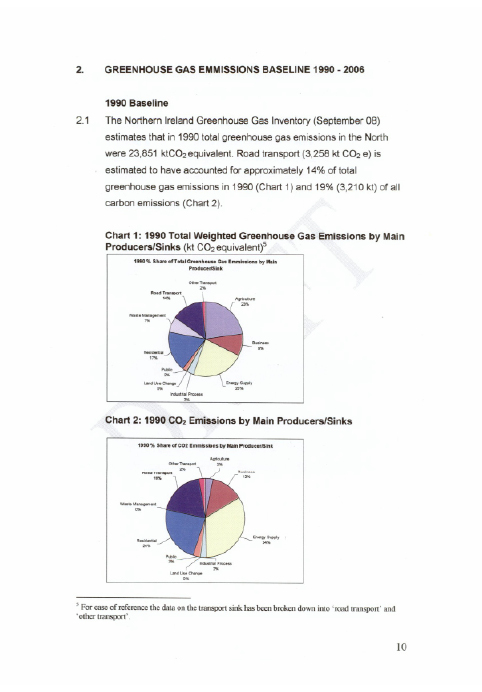

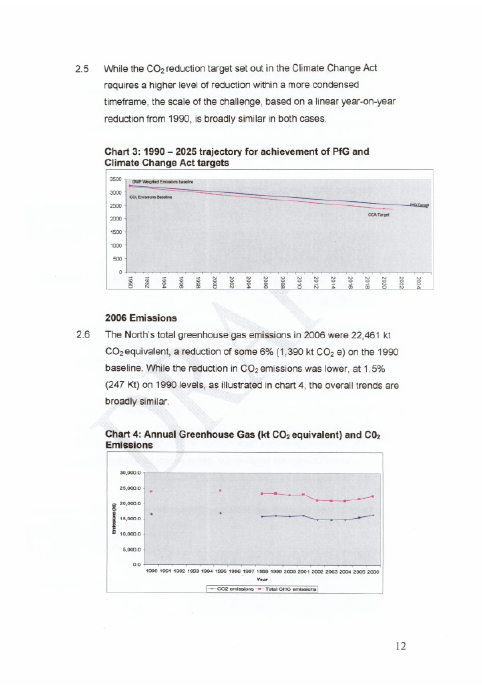
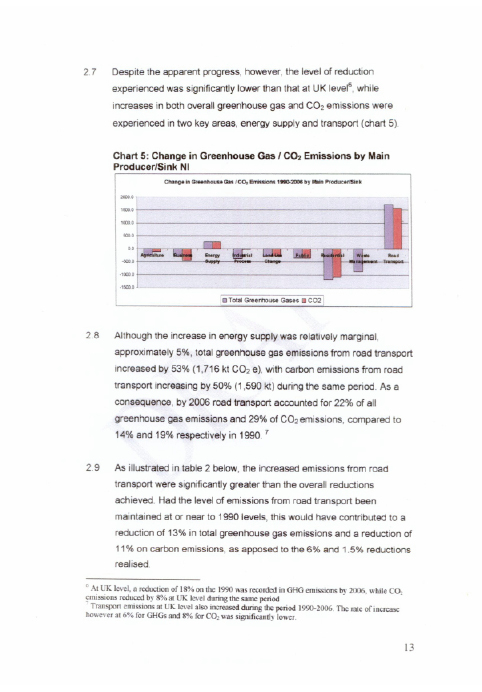
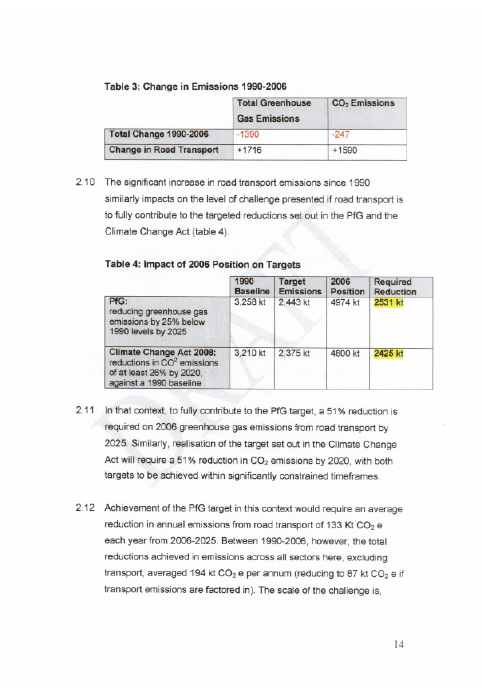

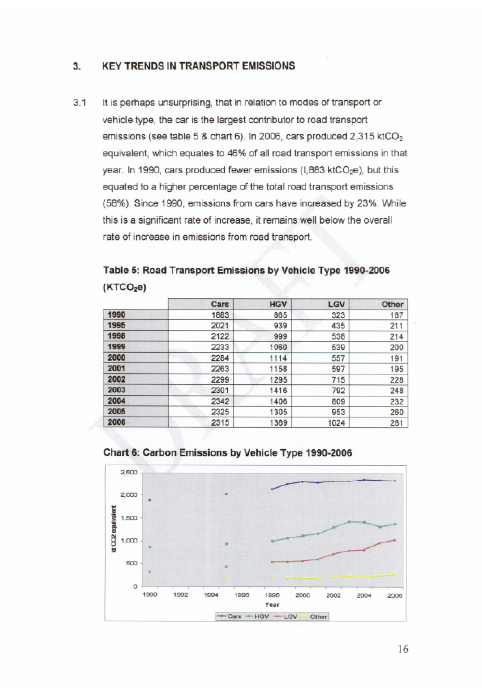
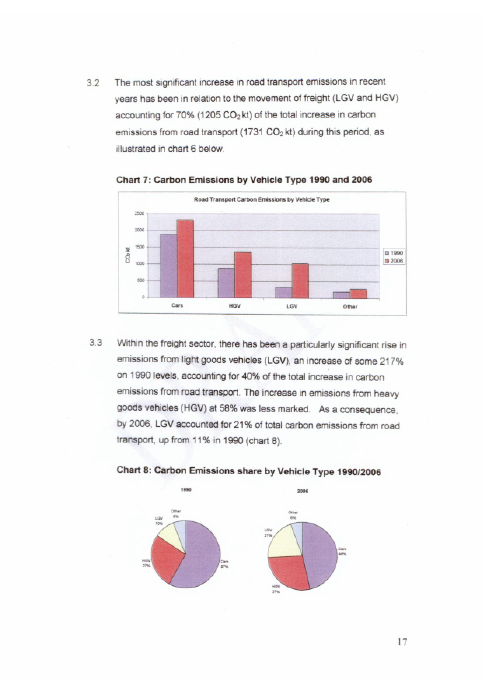
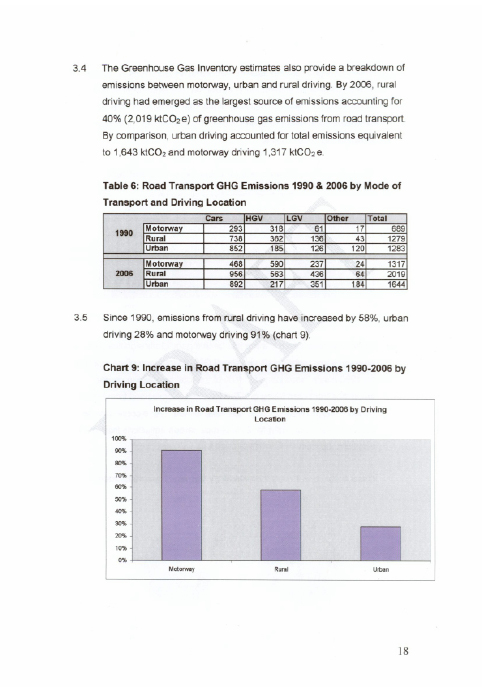
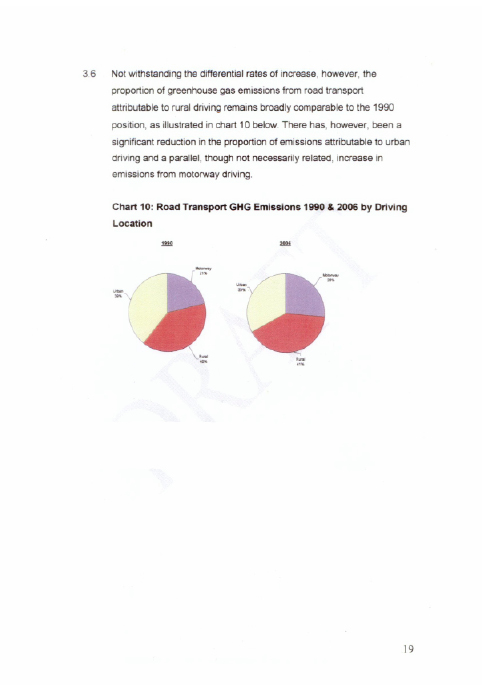
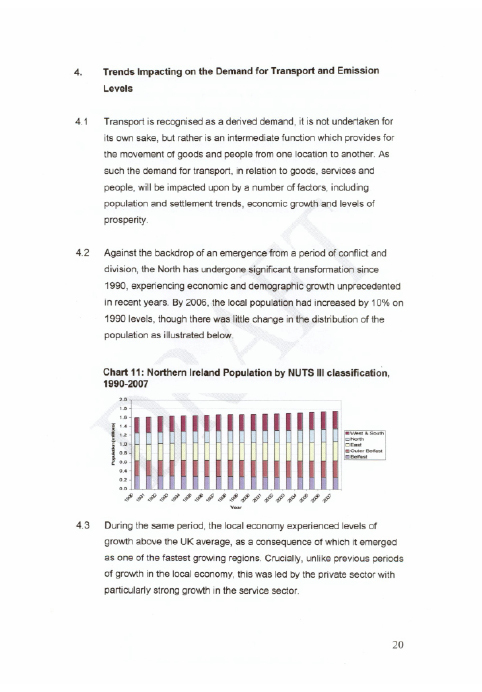
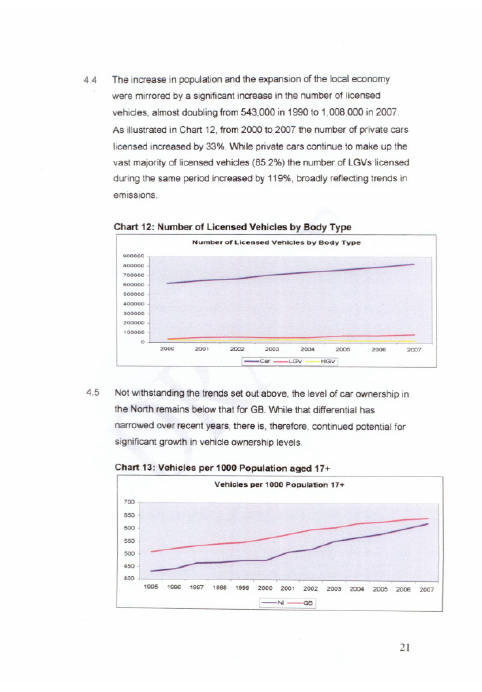


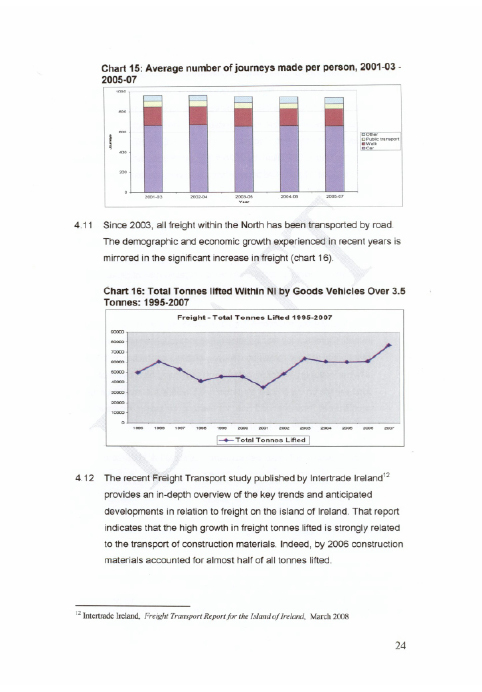


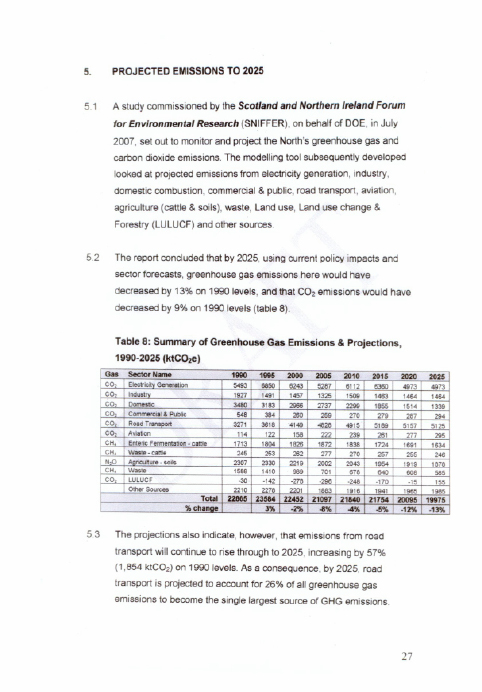
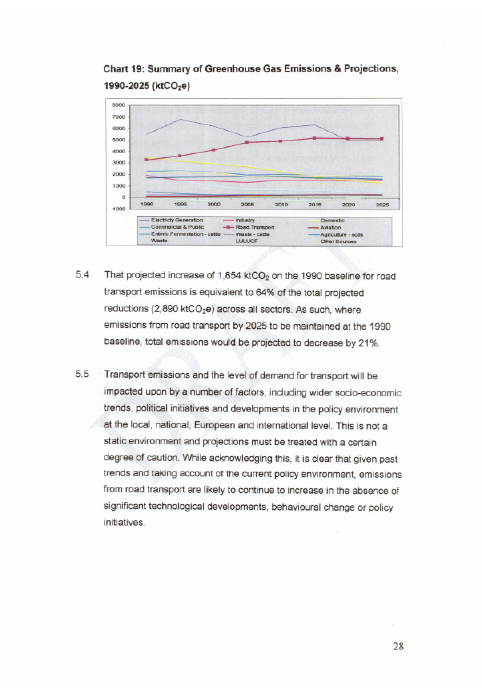
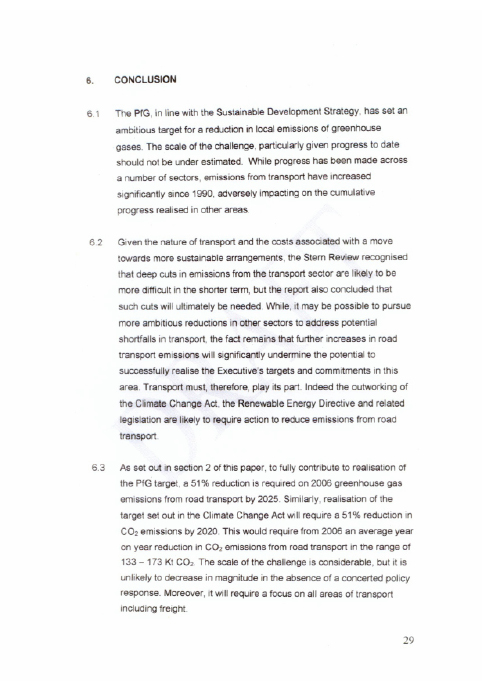
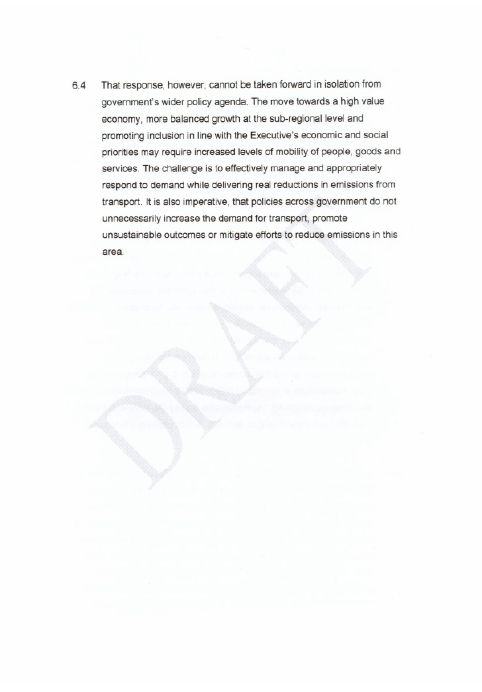
Letter from DFP Minister in
relation to Carbon Trust Funding
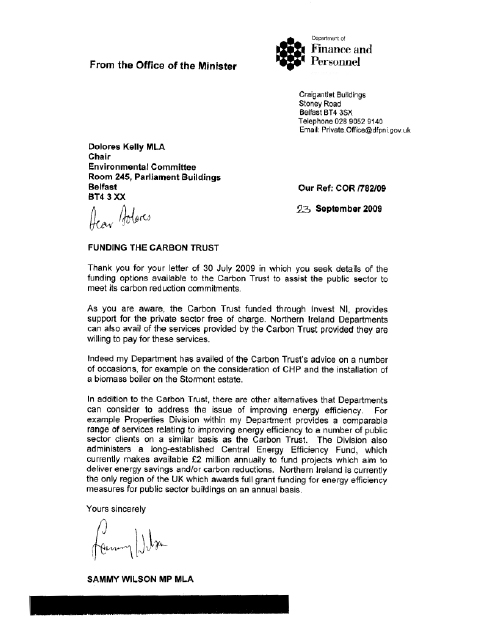
Research Paper:
Climate Change Obligations
Climate Change Obligations
Briefing Paper
October 2nd, 2009
1. UK Carbon Reduction Targets
The Climate Change Act 2008 extends throughout the UK. The NI Assembly granted legislative consent to the extensions of its provisions on 10 December 2007 and it became law on the 26 November 2008. There are a number of provisions of the Act but in relation to greenhouse gas emissions and carbon budgeting there are two key pieces of information. These are:
- a legally binding target of at least an 80% cut in greenhouse gas emissions by 2050 with an interim target of 34% by 2020; and
- a carbon budgeting system to cap emissions over five year periods. The first three carbon budgets will run from 2008 -12, 2013 - 17 and 2018 - 22 and the first had to be set by 1 June 2009.
In May 2009, following the UK Government’s stated intention in its April Budget, Parliament approved the first three carbon budgets. The figures are presented in table 1
Table 1 Carbon levels for the first three carbon budgets[1]
|
Budget 1 (2008-12) |
Budget 2 (2013–17) |
Budget 3 (2018–22) |
|
| Carbon budgets (MtCO2e)1 | 3018 | 2782 | 2544 |
| Percentage reduction below 1990 levels | 22 | 28 | 34 |
The UK Climate Change Committee in following the EU framework has produced two sets of budgets for the UK. The Intended budget will apply following a global deal on climate change and will require an emissions reduction of 42% in 2020 relative to 1990 (31% relative to 2005). This translates to required emissions reductions of 175 MtCO2e in 2020. The Interim budgets require an emissions reduction of 34% in 2020 relative to 1990 (21% relative to 2005). This translates to required reductions of 110 MtCO2e in 2020.
2. Northern Ireland response
The UK government consulted with the devolved administrations on these proposals and the then Minister for the Environment responded[2] noting the targets while also indicating the potential negative effects these could have on employment, actions to address fuel poverty, and NI Executive finances among others. However, there have been no specific targets set, as yet, for NI in relation to carbon budgeting.
2.1 NI Programme for Government Targets
The NI Programme for Government did establish targets for reduction in greenhouse gas emissions. This was set at a 25% reduction below 1990 levels by 2025. It also set a target of reducing CO2 emissions by 30% from 1990 levels by 2025. The end-of-year delivery report[3] 1 April 2008 – 31 March 2009 on the PfG has stated that the 25% target for greenhouse gas emissions is a ‘major challenge going forward’. At that time the report stated that the reduction in greenhouse gas emissions for NI stood at 6% (of 1990 figures). The report in consideration of the Review Area, Greenhouse Gas Emissions and Sustainable Development identified a number of areas of concern. These are highlighted in table 2 below
Table 2 Chief areas of concern in the Review Area: Greenhouse Gas Emissions and Sustainable Development
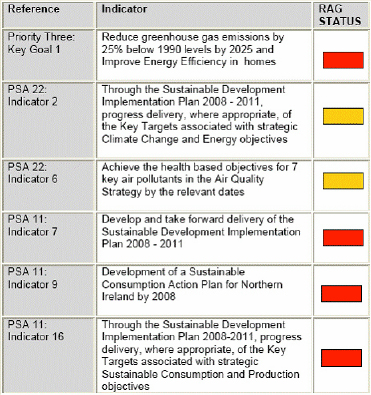
This report is critical of departments stating that “from the Departmental returns it is not clear how the delivery of the targeted reductions are intended to be achieved". It is also states that
“Furthermore there was little evidence of any plans/actions from the Lead Department with an apparent reliance on mainly UK-wide initiatives. Overall the RAG[4] Assessment for this Key Goal was RED with little evidence to provide assurance that current actions are placing NI on the sort of trajectory that would plausibly see achievement of a challenging target – even one that is 16 years away".
It is also critical of the lack of co-ordination between departments to achieve these and other targets.
A recent report[5] by AEA Technology has stated that greenhouse gas emissions have fallen in Northern Ireland by 13% since 1990 while CO2 emissions have decreased by 9% since that time. Table 3 outlines the figures for the UK administrations
Table 3 Net C02 and Greenhouse Gas Emissions for the UK regions[6]
| England | Wales | Scotland | N Ireland | |
| CO2 (Mt CO2 e) | -8.7 | -9.5 | -14.7 | -8.7 |
| Total (Net Emissions6) (Mt CO2 e) | -19.6 | -14.7 | -19.9 | -12.6 |
This raises an issue for clarification i.e. in March of this year the end-of-year delivery report on the PfG stated that
“The target is a 25% GHG reduction below 1990 levels by 2025 and at 2006 we stood at a 6% reduction.."
As noted in table 2 this is now estimated at 12.6%. It is difficult to see how a further 7% reduction in GHGs could be achieved in only 3 years since 2006.
2.2 Carbon Reduction Commitment
Although there is no identifiable high level carbon budget target specific to Northern Ireland a UK-wide scheme – the Carbon Reduction Commitment (CRC) – will apply to around 100 organisations in NI. CRC is scheduled to come into effect in April 2010. This is a ‘cap and trade’ scheme which is designed to create a shift in awareness, behaviour and infrastructure. To quote the department’s website[7]:
“The CRC will target emissions from energy use from large non-energy intensive organisations in both the public and the private sector whose annual mandatory half hourly metered electricity use is above 6,000MWh – focusing on those emissions outside the Climate Change Agreements (CCAs) and outside the direct emissions covered by the EU Emissions Trading Scheme (EU ETS). In addition, firms with more than 25% of their energy use emissions in Climate Change Agreements would be completely exempt".
2.3 Low Carbon Transition Plan
The Department of Energy and Climate Change has produced a low carbon transition plan detailing how the UK and its regions will meet the 34 percent cut in emissions on 1990 levels by 2020[8].
Summary of actions in Northern Ireland in respect of low carbon transition[9]
- The key target in relation to Northern Ireland is the reduction in emissions of 25% on 1990 levels.
- An Inter-departmental Working Group on Sustainable Energy was established in 2008 to ensure a more co-ordinated approach to the promotion of sustainable energy including energy efficiency and renewable energy. This is chaired by the DETI Minister.
- Electricity consumption from renewable energy sources has doubled since the introduction of the Northern Ireland Renewables Obligation in 2005. The target is to achieve 12% of total electricity consumption by 2012 (mainly from onshore wind); currently it is 7%. DETI has proposed in its consultation document Draft Strategic Energy Framework for Northern Ireland 2009 that the new target for electricity from renewable sources be increased to 40% by 2020. However, this would require significant upgrading of the grid which would be at a significant cost, possibly £1billion over 10 or 12 years[10].
- DETI has published the Cross-Departmental Bioenergy Action Plan for consultation – closes 30th October.
- Northern Ireland Energy Efficiency Action Plan is currently being developed and should be completed before the end of 2009.
- Northern Ireland must contribute to the UK energy savings target under the Energy End Use and Energy Services Directive. The UK target is 1% per annum – 9% by 2016. DETI has a target of reducing energy consumption by 1% per annum from 2007 until 2012. Because the UK target supersedes the NI one DETI intends to extend the monitoring of the target of reducing electricity consumption from 2007 by 1% annually until 2012 to all fuels.
- Initiatives to incentivise businesses are overseen by DETI.
- 51% reduction is required on 2006 greenhouse gas emissions from road transport by 2025. The Minister for Regional Development recently announced a review of its Regional Transportation Strategy. A key objective of this review will be to ensure more sustainable transport arrangements.
- DARD – support for willow coppicing; increase land afforested from 6 to 12% by 2056 which will improve opportunities for carbon sequestration
- The Northern Ireland Public Sector Energy Campaign aims to promote the efficient use of energy by Northern Ireland Public Bodies. Overall targets for this campaign are listed below.
Targets[11]
- To increase the energy efficiency of the buildings on their estates measured in terms of kiloWatt-hours (kWh) of fuel and electricity used per square metre of building floor area by 15% by 2010/11, relative to a base year of 1999/2000;
- To reduce absolute carbon, from fuel and electricity used in buildings on their estates by 12.5% by 2010/11, relative to a base year of 1999/2000; and
- To reduce electricity consumption across the estate by 1% annually from 2007 to 2012 against the base year of 2006/07
3. Scotland
The Climate Change (Scotland) Act 2009 has also set a target of an 80% reduction of greenhouse gases based on 1990 levels by 2050. It also establishes an interim target for 2020 of at least 42% reductions in emissions, with the power for this to be varied based on expert advice from the UK Committee on Climate Change. Scotland has therefore adopted the target from the Intended budget estimates established by the Climate Change Committee, prior to any agreement being reached at a global level. This compares with the NI target of 25% by 2025. Annual targets must also be set in secondary legislation and from 2020 onwards annual targets must deliver at least 3% per annum reductions. The long term framework will also include emissions from international aviation and international shipping.
As well as setting targets this Act also requires a carbon assessment[12] of the budget including a description of the direct and indirect impact of the spending plans. This high level analysis will help the Scottish government to place the carbon impact of its use of goods and services in the context of the national and global economy and help raise awareness of the contributions different sectors make in respect of carbon impact[13].
Key Points of this Assessment[14]
- The carbon assessment of the Budget provides a first attempt to understand the carbon impact of the goods and services purchased through Government spending.
- It is estimated that total emissions resulting from the 2010-11 Draft Budget will be 11.5 Mt CO2-equivalent. For comparison, this would be around 14 per cent of the estimated carbon footprint for Scotland as a whole, based on a 2004 estimate.
- Over time, reductions in the emissions intensity of the economy as a whole will drive down the estimated carbon impact of future budgets.
- This assessment indicates that the amount of carbon for each pound of expenditure across the different areas of Government spending does not vary greatly.
- Emissions that may result from the use of public goods and services, whether beneficial in terms of reducing emissions (e.g. spending on energy efficiency or afforestation) or negative in terms of increasing emissions (e.g. road use) are not captured.
- It is anticipated that methods for assessing the carbon impact of the Budget will continue to be developed alongside other assessment methods to improve understanding of the emission impacts of both Government expenditure and policies.
The annual reports referred to (for the period 2010 to 2050) must set out the emissions of greenhouse gases, whether in Scotland or elsewhere, which are produced by or otherwise associated with the consumption and use of goods and services in Scotland during that year. The Climate Change (Scotland) Act is the only legislation which requires that this kind of reporting by carried out on a statutory basis. This step ensures that production-based and consumption-based emissions are considered together[15].
4. Wales
The Welsh Assembly is currently developing a Climate Change Strategy that aims to bring together the High Level Policy Statement and the Programme of Action which will be published at the end of 2009. However in the ‘One Wales’ document it states that
“We will aim to achieve annual carbon reduction-equivalent emissions reductions of 3% per year by 2011 in areas of devolved competence. We will set out specific sectoral targets in relation to residential, public and transport areas. We will work with the heavy industry/power generation industries to reduce emissions in those sectors"[16].
Jane Davidson has stated that the Programme of Action represents plans to commit £300m by all Ministers of the Welsh Assembly across all departments to contribute towards tackling climate change[17].
5. Republic of Ireland
The Climate Change Policy Unit at the Department of the Environment, Heritage and Local Government, has advised on the current status of the proposed Climate Change legislation and the National Climate Change Adaptation Framework. This is outlined below:
- In July 2009[18] the Government approved the Minister John Gormley’s proposal to proceed to draft Heads of a Climate Change Bill.
- The proposed legislation will provide an overarching framework which will complement and support the existing arrangements under the Cabinet Committee on Climate Change and Energy Security.
- The proposed Climate Change Bill will enshrine principles and policies towards underpinning the national effort in combating climate change as a core priority in the pursuit of a sustainable, low carbon economy and the integration of principles outlined in the National Climate Change Strategy 2007 – 2012[19] for all relevant development activity.
- The Department, in this initial phase, is consulting with other Government Departments and their associated agencies with a view to scoping the legislation and further elaborating policies and principles to reflect the priorities of the various sectors.
- The legislation will also include enabling provisions and the consultation phase is focusing on identifying areas where provisions allowing for the development of secondary legislation might be required.
- The legislation will also cover climate change adaptation. In this context, the Department is also developing a National Climate Change Adaptation Framework in tandem with the draft Climate Change Bill.
- The Minister has publicly indicated his intention to publish the climate change legislative proposals and adaptation strategy by the end of 2009.
6. Obligations emanating from Europe
6.1 Targets
The EU is committed to reducing its overall greenhouse gas emissions by 20% below 1990 levels by 2020. In December 2008 the EU Parliament and Council reached agreement on a package to help the EU transform into a low carbon economy. The EU Climate and Energy package incorporates a number of different policies and targets. For example, the following targets have been set for 2020:
- cutting greenhouse gases by at least 20% of 1990 levels (30% if other developed countries commit to comparable cuts)
- increasing use of renewables (wind, solar, biomass, etc) to 20% of total energy production (currently ± 8.5%)
- cutting energy consumption by 20% of projected 2020 levels - by improving energy production
6.2 Cutting Emissions
Power plants and energy–intensive industries will have to cut emissions to 21% by 2020 compared to levels in 2005. This will be enabled by revision and implementation of the EU’s emission trading scheme which will grant fewer emissions allowances. How emissions trading works can be found in Appendix 2.
6.3 Increasing the use of renewables and cutting energy consumption
In relation to renewable energy the key document is the DIRECTIVE OF THE EUROPEAN PARLIAMENT AND OF THECOUNCIL on the promotion of the use of energy from renewable sources amending and subsequently repealing Directives 2001/77/EC and 2003/30/EC is the key document[20]. The aim of this legislative act is to achieve by 2020 a 20% share of energy from renewable sources in the EU’s final consumption of energy
For the UK the share of energy from renewable sources in gross final consumption of energy at 2005 levels is 1.3%. The UK’s 2020 target for share of energy from renewable sources in gross final consumption of energy is 15%.
The directive also states that each country should reach a 10% renewables share in its transport sector, and establish criteria for the sustainable use of biofuels. Each country is expected to adopt a national renewable energy action plan setting out its national targets for the share of energy from renewable sources consumed in transport, electricity, heating and cooling in 2020 and will notify it to the Commission by June 2010[21].
7. References
Appendix 1
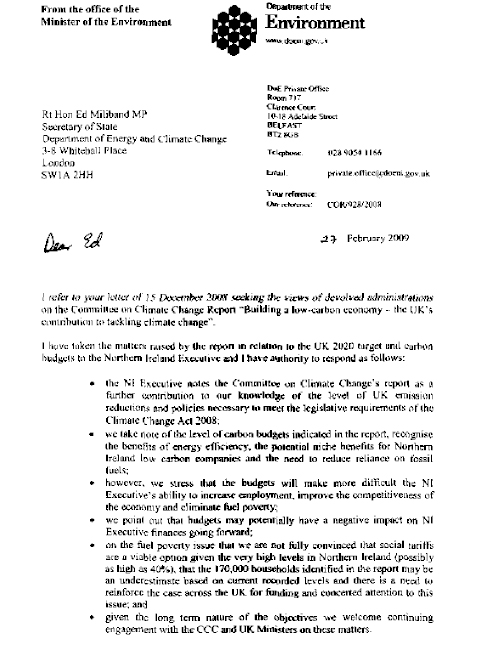
Appendix 2
How does emissions trading work?
Let’s say that companies A and B both emit 100,000 tonnes of CO2 per year. The government gives each of them 95,000 emission allowances. One allowance represents the right to emit 1 tonne of CO2. So, neither company is fully covered for its emissions. At the end of each year, the companies have to surrender a number of allowances corresponding to their emissions during the year, whatever the emissions of the individual company are. If they fail to do so, they face a fine of € 40 per missing allowance during the 2005-2007 trading period, and € 100 during the second 2008-2012 trading period. Companies A and B do not want to pay the fine and both have to cover 5,000 tonnes of CO2. They have two ways of doing this.
They can either reduce their emissions by 5,000 tonnes, or purchase 5,000 allowances in the market. In order to decide which option to pursue, they will compare the costs of reducing their emissions by 5,000 tonnes with the market price for allowances.
For the sake of the example, let’s say that the allowance market price is € 10 per tonne of CO2. Company A’s reduction costs are € 5 (i.e. lower than the market price). Company A will reduce its emissions, because it is cheaper than buying allowances. Company A may even reduce its emissions by more than 5,000 tonnes, say 10,000 tonnes. For Company B, the situation may be the opposite: its reduction costs are € 15 (i.e. higher than the market price) so it will prefer to buy allowances instead of reducing emissions.
Company A spends € 50,000 on reducing 10,000 tonnes at a cost of € 5 per tonne and receives € 50,000 from selling 5,000 tonnes at a price of € 10. So Company A fully offsets its emission reduction costs by selling allowances, whereas without the Emissions Trading Scheme it would have had a net cost of €25,000 to bear. Company B spends € 50,000 on buying 5,000 tonnes at a price of € 10. In the absence of the flexibility provided by the Emissions Trading Scheme, company B would have had to spend €75,000.
Since only a company that has low reduction costs and therefore has chosen to reduce its emissions, like Company A, is able to sell, the allowances that Company B buys represent a reduction of emissions, even if Company B did not itself reduce emissions.
This is important to remember. This ensures that the cheapest reductions are made first. Since the scheme is EU-wide, companies will seek out the cheapest reductions in the whole of the EU and ensure that they are made first. It is this flexibility in the system which makes emissions trading the most cost-effective manner of achieving a given environmental target. The overall cost to industry would have been higher if Company B had been forced to reduce emissions at its own plant at a higher cost.
[1] Million tonnes of CO2 equivalent per year
[2] This letter is in Appendix 1
[3] Building a Better Future: End of Year Delivery Report: 1 April 2008 – 31 March 2009.
The Northern Ireland Executive’s Programme for Government 2008-2011
[4] This refers to RED, AMBER, GREEN designations to highlight the degree of concern
[5] Greenhouse Gas Inventories for England, Scotland, Wales and Northern Ireland: 1990-2007. Report to the Department for Energy and Climate Change, The Scottish Government, The Welsh Assembly Government and The Northern Ireland Department of Environment. AEAT, 2009.
[6] Total Greenhouse Gas Emissions: six greenhouse gases are reported on: carbon dioxide (CO2), methane (CH4), nitrous oxide (N2O), hydrofluorocarbons (HFC), perfluorocarbons (PFC), and sulphur hexafluoride (SF6)
[7] http://www.doeni.gov.uk/index/protect_the_environment/climate_change/crc.htm
[8] http://www.decc.gov.uk/en/content/cms/publications/lc_trans_plan/lc_trans_plan.aspx
[9] Ibid
[10] All-Island Grid Study. Workstream 1, Renewable Energy Resource Assessment. January 2008. Department of Communications, Energy and Natural Resources/Department of Enterprise, Trade and Investment
[11] http://www.dfpni.gov.uk/index/public-sector-energy-campaign.htm
[12] http://www.scotland.gov.uk/Publications/2009/09/17102339/0
[13] http://www.scotland.gov.uk/Publications/2009/09/17102339/2
[14] Ibid
[15] http://www.scotland.gov.uk/Topics/Environment/climatechange/scotlands-action/climatechangeact/reporting
[16] One Wales. A progressive agenda for the government of Wales. An agreement between the Labour and Plaid Cymru Groups in the National Assembly. June 27th, 2007
[17] http://www.theccc.org.uk/news/features/332-jane-davidson-on-climate-change-in-wales
[18] http://www.irishtimes.com/newspaper/ireland/2009/0728/1224251492566.html
[19] http://www.environ.ie/en/PublicationsDocuments/FileDownLoad,1861,en.pdf
[20] http://register.consilium.europa.eu/pdf/en/08/st03/st03736.en08.pdf
[21]Press Release, Council of the European Union. Council adopts climate-energy legislative package. Brussels, 6 April 2009,8434/09 (Presse 77)
Research Paper: Climage Change:
Republic of Ireland, Wales and the
North-South Ministerial Council
_fmt2.jpeg)
Research and Library Services
Climate Change: Republic of Ireland, Wales and the North-South Ministerial Council
Briefing Paper
November 6th, 2009
1. Republic of Ireland – National Climate Change Strategy 2007- 2012[1]
1.1 Principles
The RoI Strategy is based on the following principles:
- The need to take a long term view taking into consideration the likely future commitments and the economic imperative for early action
- The promotion of sustainable development including through integration of climate change considerations into al policy areas
- The protection of economic development and competitiveness
- Maximisation of economic efficiency at a macro level and within sectors
- Equitable approach to all sectors, having regard to the relative cost of mitigation between sectors
1.2 Policy Options
The Strategy adopts an integrated approach using a range of policy options such as:
- Economic instruments such as taxation and emissions trading
- Regulation and other incentives directed towards behavioural change
- An approach to establish common and co-ordinated policies and measures implemented at EU and international level
- Participation in international emissions trading
2. Sector-specific approaches
2.1 Energy Supply
- Reduction on reliance of fossil fuels by expanding the use of renewable energies such as wind, solar, wave, and biomass.
- 15% of electricity from renewable energy by 2010 and 33% by 2020.
- Promotion of energy efficiency and reduction in CO2 output by participation in the EU Emissions Trading Scheme.
2.2 Public Transport
- Sustainable Transport Action Plan – see Appendix 1.
- Modal shift to public transport.
- Introduction of biofuels obligation with 10% target of fuel used in transport to be from biofuel source by 2020.
- Vehicle Registration Tax (VRT) and Road Tax changed to reward the purchase of more fuel-efficient vehicles.
2.3 Residential
- Building Regulations revised to aim for 40% improvement on current thermal performance standards
- Grants to support homeowners to switch to renewable energy heating under Greener Homes Scheme
- Changes to planning to allow micro-renewable technologies for homeowners (e.g. solar panels, wind turbines etc)
- Energy efficiency campaigns to encourage behavioural change
- Smart meters to be supplied to all electricity customers
- Energy efficiency measure to be funded in social housing programmes
- Building Energy Rating (BER) certification required for all domestic and non-domestic buildings sold from January 1 2009
2.4 Industry, Commercial and Services
- Building Energy Rating (BER) certification required for all domestic and non-domestic buildings sold from January 1 2009
- Energy Efficient Action Plan to deliver a significant reduction in energy demand by 2020 – target of 33% by 2020
- Promotion of energy efficiency across businesses through Irish Standard for Energy Management (IS 393) but in particular support its implementation in Small and Medium Enterprises (SMEs)
- €26m commercial bioheat support scheme - grants provided to companies and small businesses to install wood chip and wood pellet boilers in large buildings and commercial premises
- €11m Combined Heat and Power (CHP) programme – provides grants for the installation of CHP units (up to 1Mw) for use in hotels, leisure centres, small hospitals etc. Target of deployment of 800Mw by 2020.
2.5 Agriculture, Land Use and Forestry
Two key approaches:
- Reform of Common Agriculture Policy (CAP) resulting in full decoupling of payments from production. This is projected to reduce emissions by 2.4million tonnes CO2 equivalent per annum in the period 2008-2012.
- Increase in land afforested from 10% to 17% to sequester 2.08Mt Equivalent CO2 per annum.
2.6 Waste
- Waste accounted for 2.5% of Greenhouse Gas Emissions.
- National Strategy on Biodegradable Waste (2006) – requires 80% of biodegradable municipal waste to be diverted from landfill by 2016
- Market Development Programme for Waste Resources 2007-2011 was published by the Market Development Group to promote more recycling in Ireland of materials recovered in this country.
- Raising awareness e.g. Race against Waste Campaign
- Working towards fitting landfill gas recovery and flaring/use at all existing sites under EPA licensing control.
2.7 Public Sector
- Target of a 33% reduction in greenhouse gas emissions by the public sector by 2020.
- Only CFL light bulbs only purchased for use in public buildings since 2007.
- Conversion of heating systems in large public buildings to biomass burners.
- Energy efficient design of new buildings.
- Energy Awareness.
- Public Procurement – consideration of incorporating environmental criteria into public procurement contracts (worth approximately €10 billion/annum). A national action plan for green public procurement is being discussed at government level.
3.0 Wales
Jane Davidson, the Welsh Assembly Minister for Environment, Sustainability and Housing intends to allocate £300 million towards tackling climate change. This will be used across all departments to achieve a high-level goal of greenhouse gas emissions reductions of 3% per year by the year 2011. The actions that will be funded to achieve this goal have not been finalised but will be contained in the Welsh Climate Change Strategy due to be published before the end of 2009. The consultation document on the Programme for Action can be accessed here. The proposed initiatives are outlined below:
3.1 Reducing emissions from the transport sector
Sustainable Travel Towns
Investment in infrastructure, e.g. park and ride sites, bus priority corridors.
Strategic Park and Ride
These will be established along the main traffic routes in Wales to help reduce congestion and make public transport more accessible for commuters.
Inter-modal Freight consolidation centre
This would move freight between different types of transport and therefore reduce unnecessary road journeys.
3.2 Reducing emissions from the business sector
- Skills for a low carbon economy
Development of skills to equip people to work in low carbon business in the long term and to ensure that economic and social benefits are maximised from a low carbon economy.
- Low carbon and resilient business
To ensure that business advice also includes advice on climate change
- Enhanced support for SMEs
Focus on enhancing support for SMEs to take action to tackle climate change.
- More effective use and regulation of waste heat and energy efficiency
Promotion of the use of waste heat and improved energy efficiency through awareness raising and regulation where necessary.
3.3 Reducing emissions from the residential sector
- Developing and area-based approach to domestic energy efficiency
This focuses on improving the energy efficiency of all homes in an area.
- Supporting Community Scale Energy Generation
To develop a programme that will support community scale energy projects and to encourage the development of low carbon energy schemes (50Mw).
3.4 Reducing emissions from agriculture and land use
- Agriculture and land management
Additional support to promote sustainable land management approaches including a new land management scheme. Capital grant for woodland cover.
- Dairy and red meat road maps – increasing efficiency across the entire food chain
Aim is to identify where carbon can be cut from the food chain for the meat and dairy sectors.
3.5 Reducing emissions from the waste sector
- Promoting Anaerobic Digestion
Investment to support the development and commercialisation of anaerobic digestion.
3.6 Reducing emissions from the Public sector
- Reducing the carbon footprint of the Assembly Government estate
Reduction of the carbon footprint of the Welsh Assembly Government estate by implementing the Carbon Management Plan.
- Reducing the carbon footprint of education services
An assessment of the carbon impact will be integrated into decision-making on school reorganisation.
- Delivering schools to higher building standards
Adoption of standards as a condition of new and refurbished school buildings.
3.7 Adapting to climate change in Wales
- Framework for adapting to the impacts of climate change in Wales
A framework will help incorporate impacts of climate change into decisions and improves the ability of Wales to respond to the challenges and opportunities to meet obligations under the Climate Change Act.
3.8 Helping society to adapt to climate change in Wales
- Building up evidence on social justice, equality and adapting to the effects of climate change
The Government will focus on increasing its understanding of the social justice and equality consequences of climate change risk.
- Helping the Public Sector to address the impacts of climate change
Focus on building the Public Sector’s ability to adapt to the effects of climate change.
- Communications and Engagement
Build awareness of climate change and equip organisations with the ability to help local communities be prepared for climate change and its effects.
3.9 Helping the economy adapt to climate change
- Supporting an economy to cope with climate change and its effects.
Building more evidence to understand how climate change will affect Wales’ economy.
- Equipping decision makers
Equip and inform decision makers to take decisions that take account of climate change risks.
3.10 Understanding Impacts on the natural Environment
- Working with partners to enhance our understanding of the impact of climate change on the Wales’ natural environment, support projects to monitor changes and use the latest projections.
4. Climate Change discussion between Fianna Fáil and the Green Party
4.1 Background
Fianna Fáil and the Green Party have worked together over the past two years during a period of record global economic downturn. The paper ‘Proposed Renewed Programme for Government’ is their agreed paper produced as a review of the ‘Programme for Government’, which was negotiated prior to the current economic situation. The goals set out in the document provide the political basis of Government action on national renewal and economic recovery.
Realising the environmental challenges we face today, one of the purposes of the measures discussed in the paper is to move towards a low carbon economy by utilising the country’s natural energy, forestry and food resource :
“There will be great rewards for the country that understands and responds quickly to the environmental challenges of this new century. Moving to a low-carbon economy, we will take advantage of our own natural resources in energy, forestry and food".
Both Parties believe that Ireland has the chance to be a forerunner in the global battle against climate change, and states that carbon emission targets will be legally binding. They stress their understanding of the link between economic sustainability and environmental sustainability, with proposals to invest in public transport, new broadband infrastructure and more energy efficient buildings as it makes both economic and environmental sense .
This paper will look at the Renewed Programme for Governance in relation to negotiations regarding climate change under section 5, Our Environment. While this is the main topic of discussion in this paper, the other areas covered by the Renewed Programme include: The Economy and Public Finances, Enterprise and Jobs, A more caring and Just Society, Building for the future: Our Infrastructure, A Learning Nation, Enhancing Our Democracy and Public Services, A vibrant Ireland, and Ireland’s International Role.
4.2 Proposed Renewed Programme for Government .
4.2.1 Our Environment: Climate Change
The paper proposes:
1. The introduction of a Climate Change Bill to give a legislative foundation to the annual carbon budget. The Bill will include:
- A target of 3% annual average reduction in GHG emissions
- Annual carbon budget put on a statutory basis
- Government Departments to take responsibility for changes in emissions associated with their policies so that they are consistent with the overall 3% annual reduction target.
- Estimates of carbon impact of expenditure programmes announced in the annual budget to be included in the carbon budget.
- Adaptation and mitigation obligations on emanations of the State.
- Monitoring and reporting obligations on the private sector.
2. The addition of a ‘Climate Change Impact’ assessment to considerations which must be included for all Cabinet decision-making.
3. The development of a National Climate Change Adaptation Strategy to ensure that the necessary procedures needed to adapt to the challenges faced with climate change are implemented at every level of society.
4.3 Economy and Public Finances: Taxation for Sustainable Development
The paper proposes the introduction of Carbon Tax in Budget 2010. The principles underlying the carbon levy to be introduced in 2010 will be:
- those most at risk of fuel poverty will be protected,
- the improvement of the fuel efficiency of our current housing stock,
- the reduction of the relative tax burden on labour.
Any revenues generated through the application of the tax will be accounted for in identified areas of spending in the Carbon Budget.
4.4 Enterprise and Jobs: The Green Economy
One of the fundamental areas of economic policy will be to implement a Green New Deal to move away from fossil-fuel based energy production by investment in renewable energy and to increase energy efficiency for the reduction of demand, waste and costs. To ensure that green criteria are at the centre of all state procurement, both parties suggest the introduction of new public procurement procedures and guidelines. The revision of the Capital Investment Programme will be carried out to ensure the inclusion of new budget realities, the need to deliver a Smart Economy and to meet mandatory climate change emissions reduction targets.
4.5 Enterprise and Jobs: Forestry
One of the aims will be to review state forestry policy to take account of the importance of its role in tackling climate change. Following the review, the current range of programmes and supports will be enhanced to assist the accomplishment of 17% forestry cover by 2030, therefore contributing to meeting climate change commitments. Another idea is the combined work of the Government with the Irish forestry sector, including Coillte, for the development of a scheme where some of the finance set aside to buy carbon credits abroad will be used for forestry investment in Ireland.
5. North South Ministerial Council
5.1 Background
The North South Ministerial Council (NSMC) was established under the Belfast/Good Friday Agreement in 1998. Comprising Ministers of the Northern Ireland Executive and the Irish Government, its purpose is to:
“develop consultation, co-operation and action within the island of Ireland - including through implementation on an all-island and cross-border basis - on matters of mutual interest and within the competence of the Administrations, North and South."
There are six Areas of Co-operation in which common policies and approaches are agreed in the NSMC and then implemented separately in each jurisdiction. The six Areas include:
1. Agriculture: Common Agricultural Policy issues, Animal and Plant Health Policy and Research and Rural Development.
2. Education: Education for children with special needs, educational under-achievement, teacher qualifications and school, youth and teacher exchanges.
3. Environment: Environmental protection, pollution, water quality management and waste management in a cross-border context
4. Health: Accident and emergency planning, co-operation on high technology equipment, cancer research and health promotion.
5. Tourism, including Tourism Ireland: The promotion of the island of Ireland overseas as a tourist destination through the publicly owned limited liability company Tourism Ireland Limited.
6. Transport: Co-operation on strategic transport planning including road and rail infrastructure and public transport services and road and rail safety.
5.2 The Role of the NSMC in Climate Change
Although one of the Co-operation Areas under the auspices of the NSMC is Environment, according to a statement made by the Department of Environment (DoE) NI, at a meeting of the Assembly Environment Committee 25th June 2009 , climate change is not a mandated area in the NSMC. The only time it may come up is when climate change cross-cuts one of the other topics under discussion. For instance, a Workshop held in Newry, June 2009 to Examine the Impacts of Climate Change on the Implementation of the Water Framework Directive, meant that the discussion of climate change was a requirement of the NSMC.
Climate Change is instead dealt with by the British-Irish Council (BIC) as it is one of their Priority Areas of Work under Environment . The most recent publication from the BIC was a discussion paper called “Adapting to Climate Change in the British-Irish Council Region" (2006). This was submitted to the 2nd European Climate Change Programme to inform of the development of the EU’s Green Paper on Adaptation, and the working towards a White Paper .
For more information on the BIC, visit their website at: http://www.british-irishcouncil.ie
References
1 http://www.greenparty.ie/en/government/renewed_programme_for_government
2 Ibid
3 Ibid
4 http://www.northsouthministerialcouncil.org/
5 Committee for Environment Official Report Climate Change Inquiry 25th June 2009 http://archive.niassembly.gov.uk/environment/2007mandate/minutes_of_evidence/2008/090625_climatechange.htm
6 Committee for Environment Official Report Climate Change Inquiry 25th June 2009 http://archive.niassembly.gov.uk/environment/2007mandate/minutes_of_evidence/2008/090625_climatechange.htm
7 http://www1.british-irishcouncil.org/work/environment.asp
8 Adapting to Climate Change in the British Irish Council Region http://www3.british-irishcouncil.org/work/climate_change_paper.pdf
Appendix 1
Republic of Ireland
Transport
Smarter Travel – a Sustainable Transport Future
The key document in respect of sustainable travel proposals is Smarter Travel – a Sustainable Transport Future details proposals to achieve a sustainable travel and transport system by 2020.
Five key goals form the basis of the policy. These are:
- Improve quality of life and accessibility to transport for all and, in particular, for people with reduced mobility and those who may experience isolation due to lack of transport
- Improve economic competitiveness through maximising the efficiency of the transport system and alleviating congestion and infrastructural bottlenecks
- Minimise the negative impacts of transport on the local and global environment through reducing localised air pollutants and greenhouse gas emissions
- Reduce overall travel demand and commuting distances travelled by the private car
- Improve security of energy supply by reducing dependency on imported fossil fuels
There are 49 actions in the document detailed over 5 chapters beginning at chapter 4. The following gives a flavour of the actions to be taken but it is recommended that the document be consulted for greater detail.
2.3 Chapter 4 – Actions to encourage smarter travel
- Aligning Spatial Planning with Transport
Enhance existing legislative provisions to deliver deeper integration of spatial and transport planning. Government investment in new public facilities will be linked, as far as is practicable, to the need to give priority to walking, cycling and public transport as the primary means of accessing these facilities.
Better integration of land use planning and transport policies in the relevant planning guidelines as part of their ongoing review. The document indicates that future policy guidelines will include require significant housing developments in cities and towns to have good public transport connections and safe routes for walking and cycling so that these connections and local amenities can be accessed. Other requirements are for development of land in urban rail networks to be high density and appropriate for public transport and the requirements that developments above a certain scale have viable travel plans in place. It should be noted that there is no definition of ‘good’ public transport connections in the document or indeed what is meant by ‘significant’ housing developments or how a ‘certain scale’ is defined.
Promotion of Land Use and Transportation Strategies (LUTS) to support better co-ordination and integration of development planning between local authorities across Gateways and Hubs .
Local authorities will be required to prepare plans to retrofit areas with the aim of establishing sustainable neighbourhoods so that walking and cycling are the best options for local trips e.g. to shops and schools.
- Aligning Employment Policy with Transport Planning
All organisations in the public sector will have to set targets for e-working where appropriate.
Government will carry out research to determine if e-working centres can be established so that people in rural areas and in satellite towns can work in locations closer to home.
- Mobility Management
As part of the Green Schools Travel Programme every school and college will have to develop a school travel plan to encourage students to take alternatives to the car. As part of this programme local authorities will have to provide safe walking and cycling routes to and from school and other educational institutions.
The Government has supported a pilot scheme for the development of Workplace Travel Plans and will work towards a requirement for organisations with over 100 employees to develop and implement a workplace travel plan.
- Personalised Travel Plan to encourage alternatives to the car.
A levy in the region of €200 has been placed on employee parking in key urban areas to dissuade the use of the private car for commuting purposes.
- Movement of Goods
95% of freight is moved by road and over 30% of greenhouse gases originate from the freight sector. The emphasis here therefore is on how to reduce emissions e.g. using more fuel-efficient vehicles. The realistic role of rail freight is also being considered. Logistics are also being considered to ensure more efficient transfer of goods.
- Fiscal Measures
This involves the introduction of fiscal measures as disincentives to using the car.
2.4 Chapter 5 – Actions to deliver alternative ways of travelling
- Public Transport
Redesign of bus services including bus networks and implementation of bus priority and traffic management measures.
Implement real time passenger information on bus services in Dublin then role out to other cities and rural areas.
Integrated ticketing to be made more widely available.
Increase Public Service Obligation (PSO) services over and above those provided by Dublin Bus and Bus Éireann
Development of an Intelligent Transport Systems and Services Action Plan as basis to improve efficiency and effectiveness of bus fleet management and service punctuality.
Urban bus service in significant urban areas will have:
- A bus route within 800m of a house
- A schedule which commences at 6am and finishes at 1am, 7 days/week depending on demand
- A frequency of at least 10 minutes at peak hours and 20 minutes at non-peak hours
- A pre-pay cashless transaction, to minimise delays at stops
- A defined level of comfort and cleanliness on vehicles
For other areas the Government will:
- Offer a 7day/week transport service for those in rural communities and smaller urban areas.
- Review criteria for provision of school transport.
- Provide Park and Ride facilities near to urban centres.
- Expansion of the Rural Transport Programme
- Examine the expansion of school and other publicly funded buses to provide other local transport services.
- Cycling and Walking
Government will publish and implement a National Cycle Policy Framework.
Government will publish National Walking Policy.
Release of state-owned land, where possible, for cycling and walking routes.
- Car Clubs and Car Sharing
Establish car-sharing website (work with NI to make this applicable to the whole island).
Support public and private car club schemes and legislate to make car club on-road parking available
- Other Motorised Transport
Consider giving traffic priority to mopeds and segways.
- Integration measures
Greater use of smart card ticketing for public transport services e.g. Irish Rail to introduce smart cards latter half of 2009.
Integrated ticketing will roll out so that it is national in scope. Possible development of an all-island travel ticket to complement work of Tourism Ireland.
Park and ride expanded to include taxis and bikes.
Creation of a National Travel Information Portal offering an on-line integrated journey planner.
- Successor to Transport 21 Programme
This will be developed and will address issues such as environmental and social impacts in the cost benefit analysis.
2.5 Chapter 6 – Actions to improve the efficiency of motorised transport
- Aviation
Work within Europe to promote efficiency of air travel.
Public Service Obligation (PSO) for regional air services due for renewal in 2011 and will be considered in the context of expanding bus and rail services so that the most sustainable modes of transport are given priority support.
- Maritime
Work at international level to reduce emissions from shipping.
Review of the 2005 Ports Policy Statement to ensure that the efficiency in the movement of goods is maximised.
- Roads
Enforcement of speed limits.
Improve information for road users, prioritise road space for public transport, reduce fuel consumption and emissions etc
Deployment of ‘Incident Management Technologies’ on key road arteries to ensure better movement of traffic.
- Renewable Energy in Transport and Fuel Economy
Commitment that 10% of energy used in transport is sourced from renewable resources.
Incentives to encourage switch to electric vehicles with the aim of receiving market penetration by 2020.
Promote the use of alternative technologies in public sector fleets. Every public sector organisation and public transport provider will have to prepare a plan for the replacement of their fleet with the most sustainable vehicle and fuel type.
Motor tax scheme revised to encourage purchase of cars with lower CO2 emissions.
Sustainable Energy Ireland (SEI) – a research facility – has had its remit extended to include sustainable energy and energy efficient technologies in the transport sector.
- Driver Behaviour
National driving test will include a module on efficient driving which could reduce emissions by 10%.
2.6 Chapter 7 – Actions to ensure efficient delivery of the plan
- Overarching Legislation
A Sustainable Travel and Transport Bill will be introduced.
- Co-ordination at Government level
The inter-departmental working group that assisted in the development of this policy will be retained to advise on progress of it implementation and on alternatives approaches if targets are not being met.
National Sustainable Travel Office will be established to oversee the delivery of many of the initiatives in the policy.
- Other arrangements at National level
The role of the Dublin Transportation Authority will include a range of responsibilities and functions from other transport organisations including the department of transport. This will encompass functions relating to a National Transport Regulator.
- Delivery at Regional and local level
Local Authorities will be empowered to prepare transport plans to complement their development plans. These will include establishing sustainable transport plans for their area and incorporating targets for shifts to sustainable transport modes in the next statutory review of the Regional Planning Guidelines. The Minister of Transport will also be given powers in relation to these plans.
- All-Island arrangements
Work with NI to develop sustainable transport initiatives in both jurisdictions.
- Demonstration Sustainable Travel Towns and Areas
Government will establish and support a national competition to deliver outstanding examples of sustainable travel towns and rural areas. A national partnership between government departments would support this initiative. Funding will be routed through local authorities which will co-ordinate proposals.
- Other related action
Embed best practice in the principles of sustainable travel in all relevant local authorities and state agencies.
Engage with third level institutions to ensure sustainable travel is a core component in relevant course leading to qualifications in areas such as civil engineering, regional and urban planning and public administration.
Department of Transport to develop branding to support concept of smarter travel.
Fund established to support innovative travel projects.
National Travel, Transport and Mobility Household Survey will be established to support the goals and targets of this policy
- Progress over the short, medium and long term
Biennial report required from the inter-departmental working group on the progress towards implementing the report with the first to be submitted to Government in 2010.
Appendix 2
Climate Change and Water Framework Directive Workshop
The workshop offered a chance for climate change scientists and river basin planners to interact and consider the impacts of climate change on the delivery of Water Framework Directive and River Basin Plans.
The objectives of the workshop were:
- To identify what is needed for achievement in the first River Basin Plans (end 2009) in relation to climate change adaptation
- To identify actions needed to adapt to our changing climate for the 2nd river basin plan (end of 2015)
- To provide an opportunity for climate change and WFD scientists to get together to discuss the issues and identify any actions.
In general the workshop focused on how to deal with the possible pressures on the water environment, created by the effects of climate change and the actions that will be required to deal with such impacts. The three areas of interest were:
1. biodiversity and non native species and protected areas
2. abstraction and flow regulation and morphology
3. diffuse & point source pollution.
Some of the key recommendations made by the 3 workshop groups (made up of a mixture of NI and ROI Waste Framework Directive and Climate Change staff), are as follows:
- During the River Basin Planning (RBP) Cycle 1, data will need to be collected and collated to ensure that the knowledge base is available for implementing climate change scenarios in RBP Cycle 2.
- Existing water quality and hydrological models will need to be re-visited and verified to ensure they are fit for purpose for re- running with data from the new probabilistic climate change scenarios.
- Abstraction licensing regimes should incorporate mechanisms to take the likely effects of climate change (higher winter flows and lower summer flows) into account. In NI the planned review of licenses in 2009 should take into account the new climate change scenarios. In ROI, the forthcoming licensing regime needs to include mechanisms to deal with climate change
- New policies and measures should be designed to include metering, water efficiency etc to ensure more sustainable use of water to manage water demand. A suggestion was to start with pilot studies to show the effectiveness of these measures to get buy in from the public.
- An holistic catchment approach will be required to ensure that agriculture and land use planning, flooding and the Water Framework Directive (WFD) all take an integrated approach in dealing with impacts of climate change. This may require the establishment of a high level policy group to take joint ownership of issues and to ensure joined up working between policy makers in each department. There may be a role for the Scotland and Northern Ireland Forum for Environmental Research (SNIFFER) in facilitating initial conversations in this area.
- Forthcoming regulations and guidance documents need to be climate proofed. This will include abstraction, consenting and land use policy and guidance.
[1]Information taken from Ireland, National Climate Change Strategy 2007-2012. Department of Environment, Heritage and Local Government.
Research Paper: Likely Impacts
of Climate Change in NI
The purpose of this note, prepared for the Committee for the Environment, is to identify the likely impacts of climate change in NI on key groups and sectors.
The Government’s UK Climate Impacts Programme[1], in its latest report, states that trends related to temperature are statistically significant, but very few other trends outlined are equally reliable, because of high natural variability and short observational datasets. This does not, however, necessarily contradict expectations from model projections of climate change.
Studies show that unambiguous trends at UK level are unlikely to emerge in some variables for several decades to come. This could mean that the impacts identified by the SNIFFER project in 2007[2], apart from those related to temperature, are likely to be indicative only, rather than sufficiently reliable to predict exact outcomes for NI over the next 10, 20 or 50 years.
SNIFFER identified the following impacts, as threats to or opportunities for NI, from climate change:
Cross-Sector Impacts
- Increasing flood risk, with implications for the built environment and economic infrastructure.
- Significant reduction in summer rainfall, with implications for the natural environment.
- Warmer summers with more extreme hot days, both positive and negative with implications for different geographical settings.
- Impacts on biodiversity, with implications for fisheries, tourism and recreation.
Conservation, Biodiversity and Habitats
Threats:
- Warmer winters change distribution and composition of habitats.
- Warmer temperatures increase invasive non-native species and threaten ecosystems.
- Flooding and erosion threaten inter-tidal habitats, salt marshes and mudflats.
- Loss of coastal grazing marsh.
- Tidal flooding threatens estuarine and river ecology.
- Warmer seas affect phytoplankton, and, so, sand eels and seabirds.
Opportunities (such as the expansion of a species or wetter winters for some habitats) tend to be accompanied by equivalent threats (such as the loss of another species and drier summers respectively).
Fisheries
Threats:
- Flooding threatens fish egg survival and juvenile salmon.
- Lower flows and water quality, and increased temperatures, kill fish.
- Melting polar ice cools the Atlantic and threatens salmon habitats.
- Disturbed fish breeding seasons affects angling.
Opportunity of warmer waters benefiting aquaculture through higher growth rates and new species.
Note that, in 2007[3]:
- Total recorded landings of fish into NI were 17008 tonnes, with an estimated value of £19m (8216 tonnes wet fish worth £4.8m and 8792 tonnes shell fish worth £14.2m).
- 1489 people were employed in the NI fishing industry (catching, processing, marketing and others).
Agriculture
Threats:
- Wetter weather threatens field drainage.
- Crop yields and animal health.
Opportunities:
- Potential for new crops.
- Less cold weather problems including frost damage and the need to house animals indoors.
Note that agriculture accounted for 24% of NI total greenhouse gas emissions in 2005[4]. In 2007[5]:
- The total agricultural labour force was 48974 people.
- Agriculture contributed 1.3% of NI GVA, against 0.7% of UK GVA.
- Farms were categorised as: very small (76% in NI, 78% in UK); small (13% in NI, 10% in UK; medium (5% in NI and UK); or large/very large (5% in NI, 8% in UK).
Forestry
Threats:
- Hotter drier summers increase water uptake by woodlands and restrict planting in limited water areas.
- Increased risk of forest fires.
- Changing risk of insect pest and disease outbreaks.
- Extended summer droughts bring widespread tree mortality.
Opportunities:
- Higher potential productivity.
- Altered site suitability of tree species.
- Increased commercial planting.
Note that, in 2007, 8.5% of the total farmed area in NI was in forestry, against 16.2% in the UK[6].
Water
Threats:
- Lower flows.
- Increased temperatures affect water quality.
- Storms may cause sewer overflows.
- Increased rainfall causes soil erosion and leaching.
- Reduction in sewer base flow levels may result in blockages.
- Drier, hotter summers increases demand for water.
- Lower summer run-off leads to reduced flushing of estuaries and lakes.
- Higher evaporation and lower inflows leads to reduction in open-water storage.
- Increased pests and changed life-cycles of aquatic and land-based organisms.
- Summer storms after dry periods lead to high pollutant levels.
Opportunities:
- Wet winters provide opportunity for increased water storage.
- Business benefits from increased demand for water-efficient products.
Note that, in 2006[7]:
- NIW provided 619m litres of drinking water to c795k households and businesses through more than 26500 km of water mains.
- Compliance with mean zonal NI drinking water standards rose from 98.65% in 2004 to 99.34% in 2006.
- NIW collected 133 million cubic meters of wastewater through c14.5k of sewers from 660k businesses and households connected to the sewerage system.
- Compliance with NI Water Order Consents rose from 63% of people served by compliant works in 2004 to 77% in 2006.
Coastal and Flood Risk Management
Threats:
- Increase in flooding.
- Increase in winter fluvial flooding.
- Increase in coastal flooding and erosion.
No opportunity was identified.
Note that the Rivers Agency estimates that[8]:
- In an event with a 100 to 1 chance of occurrence in any year, some 60k properties are at risk from flooding, c14k of which are in Greater Belfast.
- While coastal erosion is perceived to be a minor issue, climate change is likely to make this more significant.
Buildings, Construction and Planning
Threats:
- Increase in winter flooding.
- Increase in summer temperatures and drought.
- Rising sea levels.
No opportunity was identified.
Note that residential buildings accounted for 14% of NI total greenhouse gas emissions in 2005[9].
Business
Threats:
- Wetter winters damage stock and premises, supply chains, reputations and credibility.
- Exposure of outdoor workers to hotter summer temperatures.
- Changed demand for seasonal goods and services.
Opportunities:
- Boosted sales of summer goods.
- Business growth in outdoor activities and al fresco retail.
- Increased demand for cooling products.
Note that, in 2007[10]:
- Relative to the UK, NI had a larger share of employees in the public sector, construction, manufacturing and agriculture.
- NI was still more of a small firm economy than the UK, with only 19% of employment in NI by large firms (250+ employees) compared to 41% in the UK.
Insurance
Threats:
- Wetter winters and rising sea levels mean increased inland and potentially coastal flooding.
- Hotter, drier summers mean increased subsidence.
Opportunity of possible reduction in certain claims.
Transport
Threats:
- Wetter winters and inland flooding.
- Drier summers with drier soils and vegetation.
- Hotter summers with more extreme temperatures.
Opportunity of increased demand for walking and cycling.
Note that transport accounted for 25% of NI total greenhouse gas emissions in 2005[11].
Tourism
Threats:
- Wetter winters affect outdoor tourism.
- Coastal changes cause flooding and degrade beaches.
- Dry summers cause water shortages and affect the natural environment.
Opportunities:
- Drier, hotter summers increase demand for domestic tourism.
- Warmer winters allow year-round tourism.
- Hotter weather allows more outdoor and water-based activities.
Note that, in 2003[12]:
- Total income generated by tourism was worth £783m (3.5% of NI GVA).
- External visitors’ contribution to the NI economy was the lowest in the UK or RoI.
- More than 36k jobs were supported by resident and non-resident tourism
Energy
Threats:
- Heightened risk of subsidence and heave leave structures vulnerable to damage or collapse.
- Greater demand for air conditioning.
Opportunity of reduction in winter heating demands and fuel poverty.
Note that energy supply accounted for 14% of NI total greenhouse gas emissions in 2005[13].
Health
Threats:
- Flooding impacts on physical and mental health.
- Hotter summers and ‘heatwaves’.
- Hotter summers and milder winters mean increased bacterial growth and pest activity.
- Longer summers increase exposure to UV-rays.
Opportunities:
- Reduction in cold-weather mortality and morbidity.
- Improved public health from more physical recreation potential.
Sport and Recreation
Threats:
- Wetter winters and storms mean adverse conditions for outdoor sport and recreation.
- Dry weather affects local habitats and species vital for nature-based recreation.
- Damage to sports facilities through flooding and drought.
Opportunities:
- Drier, hotter summers allow more outdoor sport and recreation.
- More water-based recreation and sports.
- Warmer winter weather allows more year-round outdoor sport and recreation.
[1] http://www.ukcip.org.uk/images/stories/08_pdfs/Trends.pdf
[2] http://www.sniffer.org.uk/Webcontrol/Secure/ClientSpecific/ResourceManagement/UploadedFiles/UKCC13_Final_report.pdf
[3] http://www.dardni.gov.uk/key_statistics_for_2008.09.043_northern_ireland_agri-food_sector_key_statistics_june_08.pdf.pdf
[4] http://www.ni-environment.gov.uk/stateoftheenvironmentreportfornorthernirelandairandclimate.pdf
[5] http://www.dardni.gov.uk/key_statistics_for_2008.09.043_northern_ireland_agri-food_sector_key_statistics_june_08.pdf.pdf
[6] http://www.dardni.gov.uk/key_statistics_for_2008.09.043_northern_ireland_agri-food_sector_key_statistics_june_08.pdf.pdf
[7] http://www.niwater.com/siteFiles/resources/pdf/NI_Water_BusPlan.pdf
[8] http://www.riversagencyni.gov.uk/living-with-rivers-and-the-sea.09.097_rivers_agency_-_living_with_rivers_and_the_sea_report_-_published_august_2008.pdf.pdf
[9] http://www.ni-environment.gov.uk/stateoftheenvironmentreportfornorthernirelandairandclimate.pdf
[10] http://www.detini.gov.uk/cgi-bin/downutildoc?id=1955
[11] http://www.ni-environment.gov.uk/stateoftheenvironmentreportfornorthernirelandairandclimate.pdf
[12] http://www.detini.gov.uk/cgi-bin/downutildoc?id=1963
[13] http://www.ni-environment.gov.uk/stateoftheenvironmentreportfornorthernirelandairandclimate.pdf
Northern Ireland Green New Deal Group
The Green New Deal for Northern Ireland is a joined up approach to the ‘triple crunch’ of recession, rising energy prices and climate changei.
The proposal is a simple one: investing in an ambitious programme to cut consumption of fossil fuels can create thousands of new jobs; help secure our energy supply; and build a competitive low-carbon economy.
Around 10% of Northern Ireland’s income is spent on importing fossil fuels on which we are 99% dependent for our energy. Facing a future of rising energy prices we risk serious economic and social failure unless we act swiftly to reduce that dependence.
The Green New Deal vision is to:
- Refurbish tens of thousands of existing homes each year with full insulation and renewable energy, including the 137,000 homes that fail to meet the Decent Homes Standard and thus making significant inroads into fuel poverty.
- Transform the energy performance of public and commercial buildings through energy efficiency measures and making ‘every building a power station’.
- ‘Decarbonise’, regionalise and localise the supplies of both electricity and heat through large-scale renewables, micro-generation and using fossil fuels more efficiently.
- Employ a ‘carbon army’ of high- and lower-skilled workers to implement this vast systematic reconstruction programme creating around 24,000 new jobs.
- Transform our transport system to be fit for purpose in the coming era of high oil and carbon prices by providing a real public transport choice for everyone.
- Create thousands of ‘green collar’ jobs in the £3,000 billion world market for Low Carbon Environmental Goods and Services.
- Develop a wide-ranging package of financial innovations and incentives to assemble and leverage the very large sums needed to implement such a programme, based on collaboration and partnership between the public sector, the private sector, other stakeholders and the public.
The Green New Deal Group is a cross-sectoral initiative led by CBI, ICTU, NICVA, UFU and Friends of the Earth. A full list of members and advisors is at the end of this document.
Introduction
In common with the rest of the world Northern Ireland is in the grip of a serious recession. Job losses are mounting and many businesses are suffering. There is a squeeze on the public finances as revenue falls and the outcome of the Government’s fiscal stimulus and quantitative easing is unknown. At first sight it may appear that the Northern Ireland Executive is constrained in what it can do to arrest rising unemployment, much less restore employment to previous levels. Yet while macro-economic policy is reserved to Westminster, key policy levers—industrial and energy policy, education and training, the environment and social policy—are in devolved hands.
If unemployment is the most immediate threat that Northern Ireland faces, it is not the only one. Last year the price of oil rose to nearly $150 a barrel. At the time of writing it was $70 but the consensus in the energy industry is that the future is one of volatile and inexorably rising prices as we emerge from recession and global oil production reaches its historical peak. 99% of Northern Ireland’s energy comes from imported fossil fuels, leaving us highly vulnerable to the price and politics of oil with serious implications for security of supply
A third threat comes from climate change and our need to cut emissions in line with global agreements while building a low carbon economy in order to remain internationally competitive. The price of carbon is currently low but will inevitably rise as policy bites: a significant challenge for a region with particularly high carbon emissions.
But from threats come opportunities. The Green New Deal Group proposes a transformational policy programme aimed at tackling growing unemployment and declining demand inspired by Franklin D Roosevelt’s New Deal of the 1930s. This programme involves policies and novel funding mechanisms to substantially reduce the use of fossil fuels. This in turn will help us tackle climate change and cope with rising and volatile energy prices caused by peak oil.ii
Approaches similar to this are being taken by many Governments around the world: from South Korea and China to Australia and the USA. Centred on moving power and transport infrastructures away from their dependence on fossil fuels, it has become known as the Green New Dealiii.
The proposals in this paper show that by focussing on reducing Northern Ireland’s vast imported energy bill we can create in the region of 24,000 (see appendix A) high and low skilled jobs in the short term; substantially reduce our dependence on imported energy; make significant inroads into tackling fuel poverty; comply with international agreements to cut CO2 emissions; and lay the foundations of an internationally competitive low-carbon economy, thus securing employment and business success for the long term.
Northern Ireland’s Fuel Bill
Northern Ireland energy users in the domestic, commercial, industrial, transport and public sectors spend a total of £2.3 billioniv a year on energy, 99% of which is derived from imported fossil fuels. This constitutes between 9% and 11% of GVA5 and represents a very significant leakage from the Northern Ireland economy.

vi
As primary energy and carbon prices rise these figures can only get worse. Economic modelling shows that a sustained oil price of $150 per barrel would reduce energy demand but the proportion of GVA spent on imported fossil fuels would increase to between 11% and 14%vii. We would be paying significantly more money for a great deal less energy.
An oil price of $250 per barrel is regarded by some experts as entirely plausible but is beyond the range of most economic models. It is clear however, that the trend would be an ever higher proportion of GVA being spent on ever decreasing amounts of energy.
Carbon prices are currently very low but there is a growing international commitment to cutting emissions through increasing the cost of carbon. It has been estimated that in order not to exceed the 450ppm CO2 threshold that the price of carbon will need to rise to $100 a tonne by 2010.viii Climate science is telling us that global temperature rises above 2 degrees C are now inevitable. The expected costs of climate change are rising fast, and so should our willingness to spend money so as to mitigate global warming and avoid those costs.
These scenarios are clearly economically worrying but also socially disastrous, pushing many more households into fuel poverty unless their dependence on fossil fuel is reduced.
The challenge is to construct a glide path to an attainable lower level of consumption quantifying the value of the saving in fossil fuel expenditure and carbon together with the cost of the measures required. Short, medium and long term targets should be identified and achieved through a series of five-year programmes based on a range of oil and carbon price scenarios.
Such an approach can progressively eliminate the extraordinary amounts of waste in the system: wasted energy; wasted money; and wasted human potential.
Housing
There are some 705,000 dwellings in Northern Ireland. Despite improvements over the past decade, over 90% of houses still fall some way short of the best energy performance standards. Domestic space and water heating is responsible for over 40% of energy consumed in Northern Ireland along with associated emissions.
We envisage a systematic programme to retrofit the entire housing stock[1] to the best energy performance standards over as quick a period as is feasible and ultimately reducing energy use in homes by 80%ix.
This is a huge challenge but it is important to focus on what can be done immediately. The Green New Deal Group proposes an initial £230 million per annum programme, including £75 million assembled from government and other sources, creating 10,000 to 15,000 direct and indirect jobs. Around 1.3 million measures are foreseen over 10 years cutting out (during the measures’ lifetime) around £3 billion in wasted fuel costs, and saving over 6 million tonnes of carbon. The measures range from basic insulation and double glazing to solid wall insulation, solar water heating and fuel switching. (see separate ‘Housing Package’ paper).
If the 137,000 houses that fail to meet the Decent Homes standard were targeted at an early stage, progress on tackling fuel poverty could be significantly accelerated.
A Community: Following a popular anti-nuclear protest in the early 70s the city of Freiburg found itself with an energy problem. The solution was found in renewables, energy efficiency and innovative design. Working closely with residents, the University and business the city has transformed itself into a model of sustainability. A typical house uses about 30% less energy than the national average while innovative passive homes manage to reduce energy costs by 90%. Over 12,000m2 of solar panels have been installed along with 500km of cycle lanes and an extensive tram network. The renewables and environmental services sector employs around 10,000 people, about 25% higher than the German average.
Public and commercial buildings[2]
Northern Ireland’s public sector organisations (including local authorities, healthcare trusts and universities) account for over 5% of NI’s total energy use and around 700,000 tonnes of carbon dioxide annually. Total annual expenditure on energy from imported fossil fuels is around £130 million.x
With an EU Directive requiring that the public sector leads by example in improving energy efficiency, we estimate that 20% of its energy use could be saved by an investment of £120-180 million on basic measures with a payback of 4-6 years giving recurring cost savings of £30 million per annum.xi
Beyond this, there is considerable scope for self generated renewable energy. Early findings from a study by the Sustainable Development Commission suggest that wind, photovoltaics and biomass are the most appropriate technologies.xii
Buildings in the commercial sector account for a similar scale of energy use and potential for energy efficiency and renewable technologiesxii
A Country: Concentrating on energy efficiency and technological solutions to energy security Japanese industry has managed to keep its overall energy consumption unchanged since the early 1970s despite increases in output. Japanese companies are leading the field in technologies such as PV, fuel cells and hybrid cars. Well known names like Sharp, Kyocera, Mitsubishi and Sanyo, produce about half the world’s photovoltaic solar panels, a market worth $10 billion a year. Renewables and energy saving devices are common place in Japanese homes. Japan has a well developed public transport system with the highest per capita rail patronage, with 8.8b passengers per annum, and nearly 24,000km of track.
Scaling up Renewable Energy Supply
Just 6% of our electricity supply and 1% of our total energy comes from indigenous renewable sources. By 2020 at least 15% of total UK energy must be renewable in order to meet EU targets; this implies that for Northern Ireland we will need to generate up to the grid limit for wind of 42%.xiv
Renewable heat is underdeveloped here but the economic conditions are good and we already have both agricultural expertise and a supply of marginal agricultural land as the raw materials to enable delivery. There is no obvious reason why we should not meet or exceed 14% of our heat needs from this source by 2020 in line with the rest of the UK.xv A Renewable Heat Incentive together with a proper legal and regulatory framework would help expand this market
Very considerable investment is therefore needed in renewable energy at a time when the industry is suffering from difficulties with access to capital; falling oil prices; and the collapse of the price of carbon. A credible and ambitious target of 40% of electricity from indigenous renewable sources by 2020 would be an important signal for private sector investment.
Overcoming these difficulties could deliver an 11% reduction in CO2 emissions and the creation of between 8,000 and 33,000 jobs depending on how successful we are at capturing the supply chain opportunities in the global market.xvi
Vital to achieving these outcomes are a fully supportive planning system and an electricity grid designed to allow contributions from distributed generation.
Sustainable mobility
Transport is responsible for at least 45% of expenditure on imported fossil fuels, equivalent to at least 4% of GVA, and for 28% of total energy use. Transport emissions are rising faster than any other sector and the sector is perilously dependent on imported petroleum products.
Real challenges lie ahead in ensuring that our transport system is a sustainable one and central to this will be the availability of a real public transport choice for most people.
Increasing fuel costs are likely to be a key driver for achieving a modal shift towards low carbon options. The challenge is to avoid the pain of such price rises by planning for that shift to take place in advanc.
A Company: In 2007 Marks and Spencer launched the Plan A initiative. The plan covers “100 commitments over 5 years to address the key social and environmental challenges facing M&S today and in the future". The aims of Plan A are that by 2012 the company will: be carbon neutral; send no waste to landfill; extend sustainable sourcing; help improve the lives of people in its supply chain; and help customers and employees live a healthier lifestyle. The company has stuck to Plan A despite the recent downturn in profits. M&S purchases about 2.6TWh of renewable energy, enough for all its shops and offices in England and Wales.
Sustainable industries
A recent report from the Department of Business, Enterprise and Regulatory Reformxvii estimated the global market value of Low Carbon Environmental Goods and Services to be over £3,000 billion with the UK sector worth £106 billion. This is somewhere between the healthcare and construction sectors in size.
In Northern Ireland the BERR report estimated the market value of the sector at £3.3 billion with 1,620 companies employing 30,600 people.
This sector of the economy is expected to grow by an average of 5% per annum despite the recession with much of the growth generated by renewable energy activities. Thus policies and investment to scale up renewable energy supply (see above) will help underpin the development of businesses able to take advantage of new opportunities in the low carbon technology market.
Employment and skills
Retrofitting the entire building stock with energy efficiency measures; scaling up renewable electricity to 40% of the total; and installing renewable heat networks will require a ‘carbon army’ of high and lower skilled workers.
The Sustainable Development Commission estimates that 800,000 new jobs could be created and sustained in the UK by a green stimulus package of £30 billion a year. In Northern Ireland terms this could mean 24,000 jobs (albeit we recognise there will be a modest reduction in jobs in traditional coal and oil distribution businesses). See appendix A for further detail.
The recession is biting hard and there is an urgent need to implement the measures described in this paper with a minimum of delay. That means moving swiftly to ensure that the necessary upskilling and reskilling takes place and this in turn means close collaboration between the relevant public bodies and the private sector together with the necessary investment. A clear signal from Government that it shares the kind of vision set out in this paper would help both students and colleges to make important decisions about the future.
Sources of funding
The total cost of a full green recovery package for Northern Ireland is likely to be in the region of £900 million per annum or 3% of GVAxviii. This is clearly a very large amount of money that is not obviously available from within the Northern Ireland block. Nevertheless, given the economic, social and environmental benefits that will flow from such spending, a significant contribution from public funds is warranted, and will have the ability to leverage significant additional investment.
Funding from within currently planned public expenditure could include:
- The Barnett consequential of the recent UK economic stimulus package;
- Maximising the potential of the Investment Strategy for Northern Ireland for new energy investments and associated training;
- Reallocating expenditure saved by tackling the inefficiencies arising from sectarian segregation and associated service duplication;
- Focusing existing economic support programmes on the Green New Deal.
- Much of the required investment is capable of showing an economic return at today’s prices and will therefore be attractive to the private sector but a clear policy and financial framework is needed to enable those investments to be accelerated. It is likely that the most effective means of securing this investment will be innovative mechanisms that combine public and private sources of funding. Possibilities include:
- Bond finance: capital is raised through the bond markets for investment in energy saving measures and a revenue stream is created through a ‘pay as you save’ scheme whereby the cost of the measures is recovered through energy bills.
- A surcharge on the regional rate serving as a revenue stream for a bond issue via a non-government body – such a cast iron revenue stream would secure the lowest interest rates.
- A more substantial restructuring of the rating system to incentivise investment in low carbon technologies and energy efficiency, while penalising those properties that continue to waste energy.
- Housing equity unlock: a charge on a property serves as security for the capital investment in energy saving measures and is paid for through a ‘pay as you save’ scheme.
- European Investment Bank loans made available through the local banks; a mutualised body; and/or other agencies.
- Salix Finance: the use of an enhanced Carbon Trust Salix fund to finance investment in the public sector.
Local authority bonds: local councils could issue bonds securitised against the rates base to carry out energy efficiency measures on their own buildings
Northern Ireland Green Energy Bond issued by government if Treasury rules were relaxed, or by local banks or a mutual institution to attract savings from individuals and pension funds
While one of the ways out of recession is to persuade people to spend more, not surprisingly people’s instinct is to save rather than spend. Worse, they are saving in a banking system that is reluctant to lend thus locking up a valuable resource. But the economy needs investment at least as much as consumption so the trick is to make ‘savers into saviours’ and offer trustworthy savings opportunities that will invest people’s savings in the Green New Deal, offering them a better return than current very low interest rates and an opportunity to invest in their own community.
Conclusion
Northern Ireland needs a ‘big idea’ to cope with recession and to plan for a sustainable future. The Green New Deal is that big idea.
Our unusually high dependence on imported fossil fuels makes this particularly compelling as does our relatively high levels of carbon dioxide emissions.
It builds on our traditional strengths in manufacturing, construction and agriculture and offers the prospect of a sustainable future for those industries, as well as providing Northern Ireland with a distinctive competitive advantage as it achieves low carbon status.
It is also a project on which it should be easy to achieve political consensus and popular support, building a sense of common purpose in dealing with some of the biggest challenges facing Northern Ireland.
The Green New Deal Group will produce a series of papers setting out a package of measures for housing; public buildings; commercial buildings; renewable energy; sustainable industries; employment and skills; and finance mechanisms.
A series of working groups have been formed to take this work forward.
The role of Government in achieving the benefits of the Green New Deal is clearly critical: offering strong leadership; providing funding which can leverage substantial investment; developing the necessary policy framework; and working in partnership with a range of stakeholders.
The prize is a considerable one: a way out of recession; significant job opportunities; escape from almost total dependence on imported fossil fuels; significant reductions in fuel poverty; cuts in our carbon emissions in line with international obligations; and the foundations of a competitive low carbon economy of the future.
Northern Ireland Green New Deal Group
c/o 7 Donegall Street Place
Belfast BT1 2FN
Tel 028 9023 3488
10 June 2009
Members of the Green New Deal Group
Bryson Charitable Group
Chamber of Commerce
CBI
Energy Savings Trust
Friends of the Earth
Institute of Directors
ICTU
NICVA
NI Environment Link
NI Federation of Housing Associations
NI Manufacturing
Sustainable Development Commission
Translink
Ulster Farmers Union
With advice and help provided by the following
Dr John Barry, Institute for a Sustainable World, Queen’s University
David Bell, Invest NI
Declan Billington, John Thompson & Sons
Alan Bissett, Partner, Carson McDowell (acting in a personal capacity)
Jenny Boyd, NIE Energy
Mark Browne, Construction Employers Federation
Peter Doran, School of Law, Queen’s University
Mark Ennis, Airtricity
David Gavaghan, Strategic Investment Board Ltd
Professor Neil J Hewitt, University of Ulster, Centre for Sustainable Technologies
John McLean, Fold Housing Association
Eoin Magennis, InterTrade Ireland
Cody Mayoh, Environmental Industries Entrepreneur
Heather Moorhead, NILGA
Iain Osborne, Chief Executive of the NI Utility Regulator (acting in a personal capacity)
Noel Rice, NI Housing Executive
Richard Rodgers, eaga International
Geoff Smyth, The Carbon Trust
Neil Stewart, Glen Dimplex Heating
Robin Wilson, Policy Analyst
Appendix A: Estimated jobs impact of stimulus spending
The table below is reproduced from the Sustainable Development Commission’s A Sustainable New Deal. It shows the job creation possibilities from a UK green stimulus package based on a number of international studies. The commission concludes “Although there are some outliers, there is a reasonable consensus from these estimates that a [UK] stimulus package of up to £30 billion a year could create at least 800,000 jobs."
The final column has been added to the table and shows what this would mean for Northern Ireland on a pro rata basis.
| Programme |
Jobs created or saved |
Investment billion £ |
Investment cost per job £k/job |
Job creation potential from £30b |
NI Job creation potential £900m |
| Renewables and energy efficiency (PERI/CAP study) | 2,000,000 | 69.0 | 34 | 870,000 | 26,000 |
| Renewables, grid, energy efficiency, public transport (ARRA) | 2,500,000 | 77.4 | 31 | 968,000 | 29,000 |
| Energy efficiency (Apollo Institute, US) | 21,500 | 1.0 | 32 | 935,000 | 28,000 |
| Renewables, energy efficiency, public transport, water and waste (South Korea) | 950,000 | 21.4 | 23 | 1,333,000 | 40,000 |
| Renewables, energy efficiency, public transport, ecosystems (UNEP) | 30,000 | 0.7 | 23 | 1,305,000 | 40,000 |
| Infrastructure fund to build low carbon homes (EIC) | 160,000 | 6.0 | 38 | 800,000 | 24,000 |
| Retrofit energy efficiency in low income homes (EIC) | 145,000 | 1.5 | 10 | 2,900,000 | 88,000 |
| Retrofit energy efficiency in schools and hospitals (EIC) | 21,500 | 1.0 | 47 | 645,000 | 20,000 |
Endnotes
i A Green New Deal, New Economics Forum, London, July 2008
ii The International Energy Agency’s 2008 World Energy Outlook has acknowledged that conventional oil production will ‘level off’ by 2030, and the recently established UK Industry Task Force on Peak Oil’s first report, The Oil Crunch, http://peakoiltaskforce.net/ also acknowledges peak oil as a major economic and political concern in terms of energy security for the UK.
iii See for example, HSBC’s Global Research report A Climate for Recovery, Feb. 2009, http://globaldashboard.org/wp-content/uploads/2009/HSBC_Green_New_Deal.pdf; the UNEP’s Green Jobs: Towards Sustainable Work in a Low Carbon World, Oct 2008, http://www.unep.org/publications/search/title_search.asp?search=Green+Jobs&image.x=6&image.y=9
iv From DETI and DBERR data.
v Ibid
vi From data in Northern Ireland Vision Study, Carbon Trust, 2005
vii Modelling by University of Ulster
viii An elaborate proposal for global climate policy architecture: specific formulas and emissions targets for all countries in all decades by Prof Jeffrey Frankel of the Harvard Project on International Climate Agreements.
ix A Sustainable New Deal, Sustainable Development Commission, London, April 2009
x Northern Ireland Vision Study, Carbon Trust, 2005
xi Carbon Trust
xii A Sustainable New Deal, Sustainable Development Commission, London, April 2009
xiii Northern Ireland Vision Study, Carbon Trust, 2005
xiv Northern Ireland Strategic Energy Framework 2009: pre-consultation scoping paper, DETI, November 2008
xv Ibid
xvi Northern Ireland Renewable Energy Supply Chain , Carbon Trust, June 2008
xvii Low Carbon and Environmental Goods and Services: an industry analysis, Innovas Solutions Ltd, commissioned by BERR, March 2009
xviii £900 million is pro-rata to the SDC’s recommended £30 billion package for the UK in A Sustainable New Deal, Sustainable Development Commission, London, April 2009
[1] This paper does not address the important issue of energy efficiency and renewables for ‘new build’ properties. We intend to do so in future work.
[2] As note 1.
Climate Change in Scotland Response 1
Climate Change and Water Industry and
Environmental Quality Directorates
John Mason, Director
T: 0131-244 0779
E: john.mason@scotland.gsi.gov.uk
Patsy McGlone
Chairperson
Committee for the Environment
Northern Ireland Assembly
Environment Committee Office
Room 245
Parliament Buildings
BELFAST BT4 3XX
29 June 2009
Dear Patsy
Thank you for your letter of 4 June requesting information about climate change in Scotland as part of the Northern Ireland Assembly Environment Committee inquiry into climate change. I am pleased to respond on behalf of the Scottish Government. To best reflect the information you have requested, I will address three key points in this letter, namely: the approach in Scotland to adaptation and mitigation; the effectiveness of government structures; and, liaison with the UK Government, and the other devolved administrations.
Approach to adaptation and mitigation
As a small nation of five million people, Scotland is determined to act as a model of best practice in tackling climate change to influence the international community to agree an ambitious new climate change treaty at Copenhagen in December 2009. The Climate Change (Scotland) Bill sets bold targets for emissions reductions, and Scotland’s Climate Change Delivery Plan, published on 17 June, sets out the high level measures needed to achieve these reductions by 2020 and beyond.
The Delivery Plan, available at www.scotland.gov.uk/climatechangedeliveryplan, identifies the key sectors for abatement, and four major transformational measures needed to deliver the targets:
- a massive increase in clean, green energy;
- wholesale adoption of electric vehicles powered by green energy;
- major improvements in energy efficiency and reduction in demand for energy; and
- significant increases in forest cover to absorb more carbon.
Delivering the ambitious targets will be key to unlocking Scotland’s vast potential in renewable energy.
The world-leading Climate Change (Scotland) Bill was passed unanimously by the Scottish Parliament on 24 June. The Bill includes:
- all internationally recognised greenhouse gases;
- emissions from international aviation and shipping;
- a system of annual targets for cuts in emissions;
- an interim target for 2020 of 42% reductions, with a power to vary the interim target based on expert advice from the UK Committee on Climate Change; and
- a legally binding commitment on all future Scottish governments to deliver at least 80% cuts in emissions by 2050.
Scottish Ministers are committed to delivering the highest achievable emissions reductions based on expert advice. The Scottish Government has also made a commitment to assess the carbon impact of its spending from 2010-11. While the carbon impact of government spending has been measured in some countries, the Scottish Government is potentially leading the world in integrating carbon assessment into key budget decision-making.
Within Government, new, stronger governance will deliver the ambitious targets. Carbon will be treated in the same way as money and there is a new Climate Change Delivery Board at Director level supported by a new Operational Group, organised along sector lines – power, heat, transport, waste, agriculture and land use, and forestry – and covering cross-cutting themes – carbon management, funding, resources, economic growth, planning, adaptation, public sector, national conversation and stakeholder engagement.
The Climate Change (Scotland) Bill also establishes a requirement for Government and public bodies to start preparing for the consequences of the unavoidable changes in Scotland’s climate. Records show that Scotland’s climate is already changing and, due to the level of greenhouse gases already in the atmosphere, will certainly continue to change for several decades to come. This will have wide reaching consequences for the way we live and work in Scotland. Revised climate projections released by the Met Office on 18 June suggest an increase in heavy rainfall events, an increase in summer temperatures in Scotland by more than 3ºC by the 2080s, and a reduction in snowfall by 60 per cent or more in mountainous areas, stopping completely in other regions. The Scottish Government recently included climate change as a risk on its Strategic Risk Register, as a step towards actively managing the negative impacts of climate change. Because many adaptation decisions are taken at a local level by individual organisations, Government will need to work with all sectors to prepare for this change. To provide strategic direction for this, work is currently ongoing to develop Scotland’s Adaptation Framework to build our resilience to the impacts of climate change. The Adaptation Framework is currently going through a consultation period, which closes on 20 July.
Government structures
The Scottish Government has one overarching Purpose – to focus the Government and public services on creating a more successful country, with opportunities for all of Scotland to flourish, through increasing sustainable economic growth. This is supported by five strategic objectives that drive the work of government – to create a Wealthier and Fairer, Greener, Smarter, Safer and Stronger, and Healthier Scotland. These objectives inform the National Performance Framework, where progress on fifteen National Outcomes is measured by forty-five National Indicators. Specific targets in the framework on sustainability call for emissions to be reduced over the period 2005 to 2011, and reduced by 80% by 2050.
When the present administration came to power following the May 2007 elections to the Scottish Parliament, the new Scottish Ministers took steps to reorganise the structure of the Scottish Government. The previous departmental system was replaced by a larger number of smaller, more flexible directorates which work across all five Strategic Objectives. This cross-cutting system reduces the potential for ‘silo’ approaches, allows greater communication between officials, and enhances the strategic decision-making ability of the organisation.
Further, Scottish Ministers also included climate change at the centre of government in the Finance and Sustainable Growth portfolio (alongside energy and transport) recognising that it is not just an environmental issue: it impacts on all walks of life, and all branches of government.
Liaison with UK Government and Devolved Administrations
There are a number of levels of communication between the Scottish Government, UK Government and other Devolved Administrations. As a starting point, you will know that the UK Climate Change Act is based on a partnership approach between the UK Government and Devolved Administrations. There are a number of areas where the Act requires consultation with the Devolved Administrations including setting or amending the overall targets and carbon budgets under the Bill. Prior to the UK Government’s carbon budgets announcement on 22 April, for example, Ministers in the Devolved Administrations each wrote to the the UK Government Secretary of State for Energy and Climate Change to give their views on the level of UK carbon budgets between 2008-22 and associated issues.
Of course, liaison does not only happen at those points where there is a statutory requirement for that. Again, taking the UK Climate Change Act as a starting point, the associated Concordat sets out the underlying principles for co-operation in its implementation as well as arrangements to make that work in practice. This is supported by a Framework Document which governs the relationship between the Committee on Climate Change and its sponsor departments and administrations. Officials in the Scottish Government have very positive working relationships with their counterparts in the UK Government and other Devolved Administrations, both on the basis of regular meetings of working groups and more ad-hoc contact. For example, climate change has been one of the issues on the agenda of the British Irish Council environment sectoral group. Climate change ministers from Scotland and Northern Ireland (as well as other member administrations) met in Jersey in April this year.
I hope this is useful to you. The Scottish Government believes climate change to be a serious threat, and the cost of action to address the issue now will be much less than cost of inaction. Scottish Ministers see the shift to a low carbon economy as a major opportunity for Scotland, particularly for economic recovery. I look forward to reading your Committee’s report in September.
Yours sincerely

JOHN MASON
Climate Change in Scotland Response 2
|
Patsy McGlone |
Room T3.40 |
15 June 2009
Transport, Infrastructure and Climate Change Committee
Dear Patsy
Thank you for your letter of 4 June 2009 regarding your inquiry into climate change and your request for information on the activities of the Transport, Infrastructure and Climate Change Committee here in the Scottish Parliament on this matter.
As you are aware, this Committee is the lead committee for consideration of the Scottish Government’s Climate Change (Scotland) Bill which will debated at Stage 3 in the Scottish Parliament before the end of June. The Committee reported to the Scottish Parliament at Stage 1 on the Bill and its report covered a number of issues you raise in your letter. The Committee also received amendments to the Bill at Stage 2 on target setting, monitoring and reporting. I attach a link to the Bill page which contains links to all the relevant material during the Committee’s consideration of the Bill, including the Committee’s Stage 1 report on the general principles of the Bill.
http://www.scottish.parliament.uk/s3/bills/17-ClimateChange/index.htm
The Parliament’s information service, SPICe, have produced a briefing paper which summarises the key changes to the Bill following the Stage 2 amendment process. I attach a link for information.
http://www.scottish.parliament.uk/business/research/briefings-09/SB09-43.pdf
You letter asks questions regarding the structures which are in place for the development and delivery of climate change policy. You will note that in its Stage 1 report, Committee stated in paragraphs 228, 229—
“The Committee calls on the Scottish Government to ensure that its statutory ‘report on proposals and policies’ provides a comprehensive overview of the potential contribution of all sectors in society to achieving emissions reductions. It should provide clear statements of policy intent and the direction for policy development which will lead to the reductions required to meet the challenging targets set by this Bill. It should also outline those initiatives currently underway to tackle climate change, including the Government’s public engagement implementation plan.
The Committee also considers it to be essential that the strategy overview document that will inform this process is produced as quickly as possible to allow sufficient time for the content of this significant and potentially detailed report to be developed, prior to its publication in 2010. The Committee requests that the Scottish Government provides a clear timescale for the production of the strategy overview discussion document, and an indication as to its contents, before Stage 2." It is expected that the Scottish Government’s climate change strategy document will be published shortly.
Throughout its work on climate change, the Committee has had regular meetings and informal briefing sessions with Officials from the Scottish Government to aid members’ understanding of the issues involved in this area.
In addition to consideration of the Climate Change (Scotland) Bill, the Committee’s scrutiny of the Scottish Government’s Draft Budget 09-10 focussed on the climate change element of its remit. The report encompassed the general impact of the Draft Budget on climate change and the development of the Scottish Government’s carbon assessment tool.
In its report, the Committee expressed concern that the Draft Budget did not contain sufficient proposals to contribute to the climate change agenda. It also felt that the Scottish Government’s climate change reduction targets were set too far into the future and its current proposed strategy for reducing annual emissions lacked urgency. The Committee therefore recommended that a system of carbon accountability be established in time for the draft budget 2010-11 and the Spending Review 2010, and that revisions be made to the 2009-10 budget to facilitate this.
The Committee considered that future budgets, and the next Spending Review, should reflect updated legislation on emissions targets. The Committee suggested that the next budget refocus its priorities on policies specifically designed to reduce greenhouse gas emissions and to contribute to addressing climate change, advising that subsequent budgets be presented with the fullest possible details of how expenditure across all portfolios will contribute to the reduction of emissions.
It is expected that the Committee will return to this issue following summer recess when it scrutinises the Scottish government’s Draft Budget 2010-11 and looks at developments in this area.
I hope that this information is helpful and if you have any further questions once you have reviewed this material, please do not hesitate to get in touch.
Yours sincerely,
Patrick Harvie MSP
Convener
Transport, Infrastructure and Climate Change Committee
Response from Climate Change and
Water Industry and Environmental
Quality Directorates in Relation to
Climate Change in Scotland
Climate Change and Water Industry and Environmental Quality Directorates
John Mason, Director
T: 0131-244 0779
E: john.mason@scotland.gsi.gov.uk
Patsy McGlone
Chairperson
Committee for the Environment
Northern Ireland Assembly
Environment Committee Office
Room 245
Parliament Buildings
Belfast
BT4 3XX
29 June 2009
Dear Patsy
Thank you for your letter of 4 June requesting information about climate change in Scotland as part of the Northern Ireland Assembly Environment Committee inquiry into climate change. I am pleased to respond on behalf of the Scottish Government. To best reflect the information you have requested, I will address three key points in this letter, namely: the approach in Scotland to adaptation and mitigation; the effectiveness of government structures; and, liaison with the UK Government, and the other devolved administrations.
Approach to adaptation and mitigation
As a small nation of five million people, Scotland is determined to act as a model of best practice in tackling climate change to influence the international community to agree an ambitious new climate change treaty at Copenhagen in December 2009. The Climate Change (Scotland) Bill sets bold targets for emissions reductions, and Scotland’s Climate Change Delivery Plan, published on 17 June, sets out the high level measures needed to achieve these reductions by 2020 and beyond.
The Delivery Plan, available at www.scotland.gov.uk/climatechangedeliveryplan, identifies the key sectors for abatement, and four major transformational measures needed to deliver the targets:
- a massive increase in clean, green energy;
- wholesale adoption of electric vehicles powered by green energy;
- major improvements in energy efficiency and reduction in demand for energy; and
- significant increases in forest cover to absorb more carbon.
Delivering the ambitious targets will be key to unlocking Scotland’s vast potential in renewable energy.
The world-leading Climate Change (Scotland) Bill was passed unanimously by the Scottish Parliament on 24 June. The Bill includes:
- all internationally recognised greenhouse gases;
- emissions from international aviation and shipping;
- a system of annual targets for cuts in emissions;
- an interim target for 2020 of 42% reductions, with a power to vary the interim target based on expert advice from the UK Committee on Climate Change; and
- a legally binding commitment on all future Scottish governments to deliver at least 80% cuts in emissions by 2050.
Scottish Ministers are committed to delivering the highest achievable emissions reductions based on expert advice. The Scottish Government has also made a commitment to assess the carbon impact of its spending from 2010-11. While the carbon impact of government spending has been measured in some countries, the Scottish Government is potentially leading the world in integrating carbon assessment into key budget decision-making.
Within Government, new, stronger governance will deliver the ambitious targets. Carbon will be treated in the same way as money and there is a new Climate Change Delivery Board at Director level supported by a new Operational Group, organised along sector lines – power, heat, transport, waste, agriculture and land use, and forestry – and covering cross-cutting themes – carbon management, funding, resources, economic growth, planning, adaptation, public sector, national conversation and stakeholder engagement.
The Climate Change (Scotland) Bill also establishes a requirement for Government and public bodies to start preparing for the consequences of the unavoidable changes in Scotland’s climate. Records show that Scotland’s climate is already changing and, due to the level of greenhouse gases already in the atmosphere, will certainly continue to change for several decades to come. This will have wide reaching consequences for the way we live and work in Scotland. Revised climate projections released by the Met Office on 18 June suggest an increase in heavy rainfall events, an increase in summer temperatures in Scotland by more than 3ºC by the 2080s, and a reduction in snowfall by 60 per cent or more in mountainous areas, stopping completely in other regions. The Scottish Government recently included climate change as a risk on its Strategic Risk Register, as a step towards actively managing the negative impacts of climate change. Because many adaptation decisions are taken at a local level by individual organisations, Government will need to work with all sectors to prepare for this change. To provide strategic direction for this, work is currently ongoing to develop Scotland’s Adaptation Framework to build our resilience to the impacts of climate change. The Adaptation Framework is currently going through a consultation period, which closes on 20 July.
Government structures
The Scottish Government has one overarching Purpose – to focus the Government and public services on creating a more successful country, with opportunities for all of Scotland to flourish, through increasing sustainable economic growth. This is supported by five strategic objectives that drive the work of government – to create a Wealthier and Fairer, Greener, Smarter, Safer and Stronger, and Healthier Scotland. These objectives inform the National Performance Framework, where progress on fifteen National Outcomes is measured by forty-five National Indicators. Specific targets in the framework on sustainability call for emissions to be reduced over the period 2005 to 2011, and reduced by 80% by 2050.
When the present administration came to power following the May 2007 elections to the Scottish Parliament, the new Scottish Ministers took steps to reorganise the structure of the Scottish Government. The previous departmental system was replaced by a larger number of smaller, more flexible directorates which work across all five Strategic Objectives. This cross-cutting system reduces the potential for ‘silo’ approaches, allows greater communication between officials, and enhances the strategic decision-making ability of the organisation.
Further, Scottish Ministers also included climate change at the centre of government in the Finance and Sustainable Growth portfolio (alongside energy and transport) recognising that it is not just an environmental issue: it impacts on all walks of life, and all branches of government.
Liaison with UK Government and Devolved Administrations
There are a number of levels of communication between the Scottish Government, UK Government and other Devolved Administrations. As a starting point, you will know that the UK Climate Change Act is based on a partnership approach between the UK Government and Devolved Administrations. There are a number of areas where the Act requires consultation with the Devolved Administrations including setting or amending the overall targets and carbon budgets under the Bill. Prior to the UK Government’s carbon budgets announcement on 22 April, for example, Ministers in the Devolved Administrations each wrote to the the UK Government Secretary of State for Energy and Climate Change to give their views on the level of UK carbon budgets between 2008-22 and associated issues.
Of course, liaison does not only happen at those points where there is a statutory requirement for that. Again, taking the UK Climate Change Act as a starting point, the associated Concordat sets out the underlying principles for co-operation in its implementation as well as arrangements to make that work in practice. This is supported by a Framework Document which governs the relationship between the Committee on Climate Change and its sponsor departments and administrations. Officials in the Scottish Government have very positive working relationships with their counterparts in the UK Government and other Devolved Administrations, both on the basis of regular meetings of working groups and more ad-hoc contact. For example, climate change has been one of the issues on the agenda of the British Irish Council environment sectoral group. Climate change ministers from Scotland and Northern Ireland (as well as other member administrations) met in Jersey in April this year.
I hope this is useful to you. The Scottish Government believes climate change to be a serious threat, and the cost of action to address the issue now will be much less than cost of inaction. Scottish Ministers see the shift to a low carbon economy as a major opportunity for Scotland, particularly for economic recovery. I look forward to reading your Committee’s report in September.
Yours sincerely

John Mason
3.3.2 Breakdown of UK Emissions Data: England, Scotland, Wales, Northern Ireland and Unallocated
All land-based emissions are allocated directly to the appropriate inventory of the constituent countries: England, Scotland, Wales or Northern Ireland.
Emission estimates from national navigation (i.e. coastal shipping, including local ferries, fishing fleets, local port movements by support vessels) and domestic aviation (flights between UK airports) are allocated to the individual countries also. For coastal shipping, the UK emission estimates are split between England, Scotland, Wales and Northern Ireland according to port movement data from the DfT Maritime Statistics. For domestic aviation, the emissions for each flight are allocated to England, Scotland, Wales or Northern Ireland according to the airport of flight origin.
The emission estimates from international shipping and aviation are excluded from the national total in the UK GHG inventory and also from the DA emissions totals.. These are reported as “memo items" alongside the UK GHG inventory data in the annual submissions to the UNFCCC. In autumn 2008, for the first time an estimate was made of the approximate share of these “memo item" emissions across England, Scotland, Wales and Northern Ireland.
Emissions from the oil and gas exploration & production offshore industry sector are not allocated to the individual country inventories of England, Scotland, Wales and Northern Ireland. Instead, these are reported within a separate “unallocated" category. The emissions from the onshore elements of this industry sector (mainly from gas and oil terminals) are allocated to the appropriate country inventory.
The most recent GHG Inventory report for the Devolved Administrations shows that the UK distribution of net greenhouse gas emissions (i.e. the sum of emissions and removals) in 2006, expressed in terms of global warming potentials (GWP), is:
- England 77.1%
- Scotland 9.1%
- Wales 7.8%
- Northern Ireland 3.4%
- Unallocated 2.6%
Meeting with Joint Committee on
Climate Change and Energy Security
Meeting, Tuesday 30 June 2009 with Joint Committee on Climate Change and Energy Security
Attendance:
Joint Committee on Climate Change and Energy Security
Sean Barrett Chair Joint Committee on Climate Change and Energy Security
Mr Michael McKenna Clerk to Joint Committee on Climate Change and Energy Security
Dr Peter Brennan Consultant to Joint Committee on Climate Change and Energy Security
David Taylor Energy Advisor to Joint Committee on Climate Change and Energy Security
Committee for the Environment
Mr Patsy McGlone Chairperson
Mr Cathal Boylan Deputy Chairperson
Alex McGarel Clerk
Sean McCann Assistant Clerk
The Joint Committee on Climate Change and Energy Security was formed in September 2007 consisting of thirteen members of Dáil Éireann, and 4 members of the Senate to consider:
- medium and long term climate change targets and the key measures needed to meet those targets;
- the role of the Agriculture sector in providing bio-fuel and biomass crops and consequential implications;
- the levels of power supply which can be generated from renewables or other new power supplies;
- the projected energy demand from transport and the implications for energy security and emissions targets;
- such other matters as may be referred to it from time to time by both Houses of the Oireachtas
The Joint Committee is due to report by December 2009 and has published 2 reports to date - Scrutiny Report on three proposals relating to the implementation of the EU Climate – Energy legislative package and Drive for Zero, a report on electric vehicles.
A taskforce has been set up to investigate the use of electric vehicles and the Committee feels that the government target should be far more ambitious and that all cars on the island of Ireland past 2020 should be electric vehicles. The Minister has supported the report on electric vehicles and framework conditions are being set in place but more investment is needed.
The Cabinet Sub Committee on Climate Change and Energy Security are driving the discussions on climate change, the Department of the Environment is the lead department, the Minister is responsible for carbon budgets and there is a National Climate Change Strategy to the year 2012 which includes all targets. A post 2013 strategy is to be published after the Copenhagen summit in December 2009.
The Republic of Ireland currently does not have a Climate Change Act although a raporteur from the joint committee has been appointed to make recommendations on an act.
The Joint Committee has sponsored a draft Bill (December 2008) on Offshore Renewable Energy Development but members feel that they are not getting adequate feedback from departments, particularly energy, environment and agriculture. The Committee feels there is a need for Ireland to speed up procedures for dealing with developers in offshore renewables as there is 16bn Euro of development being held up. The Bill is trying to put offshore energy into the framework of existing legislation.
Wind energy in the Republic of Ireland is not commercially viable at the moment as wind penetration is still very low. The Electricity Supply Board is becoming a renewables company and aim to be carbon neutral by 2030. The big issue for wind energy is grid access and the Committee feels there are enormous opportunities for green jobs.
There is not currently any marine legislation in the Republic of Ireland, something the Committee feels needs to happen.
Eir Grid has produced a report on moving grids offshore and has committed resources to strengthening their network. A government white paper on energy has been published but this will take 5-10 years to roll out.
The Commission on Taxation has a wide mandate and will almost certainly introduce a carbon tax which could raise around 10-15bn Euro by 2020 which could be invested in areas such as the Home Energy Savings Scheme. Other plans at the moment are the National Energy Efficiency Action Plan and the Smarter Travel Plan. Sustainable Energy Ireland and the Electricity Supply Board have conducted a joint study on cost effective measures which will be published soon.
DSD Reply on Social Housing Standards

5th Floor
Lighthouse Building
1 Cromac Place
Gasworks Business Park
Ormeau Road
BELFAST
BT7 2JB
Fax: (028) 9082 9548
e-mail: john.ball@dsdni.gov.uk
Tel: (028) 9082 9041
Mr Alex McGarel
Clerk of the Committee for the Environment
Committee for Environment
Room 247
Parliament Buildings
BELFAST
BT4 3XX
14 September 2009
Thank you for your letter dated 29 May regarding social housing standards. The Committee has asked the Department for information on any difference in the social housing standards set in relation to grants for private housing and grants for Housing Executive tenants.
The Department does not provide grants for Housing Executive tenants. The Housing Executive manages a Heating Replacement Scheme which improves the energy efficiency of their stock and forms part of their planned improvement programme.
The Warm Homes Scheme provides grants to owner occupiers or households in the private rented sector to improve the energy efficiency of their homes. The Warm Homes Scheme has two elements: Warm Homes and Warm Homes Plus. Warm Homes is open to eligible householders and provides insulation measures up to a maximum grant of £850. Warm Homes Plus will assist households where additional measures, such as heating or complex insulation, are required. Warm Homes Plus focuses on homes with no central heating system, a solid fuel system, Economy 7 or bottled gas system. The maximum grant available is £4,300.
I trust this information is helpful.
John Ball
Department for Social Development
cc Clerk of the Social Development Committee

AFBI Visit Presentation

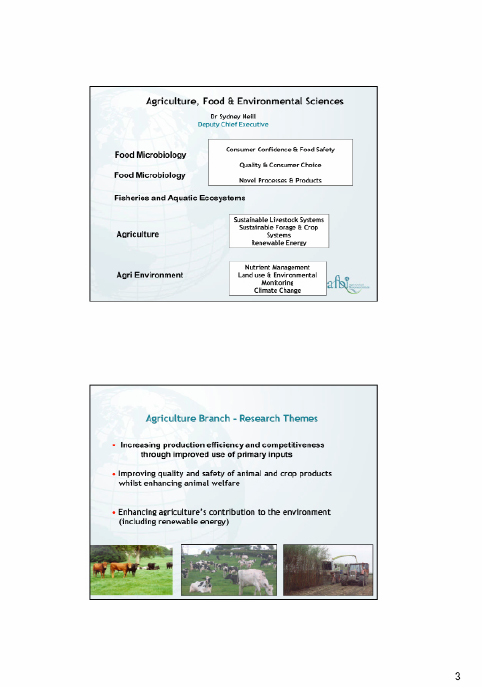
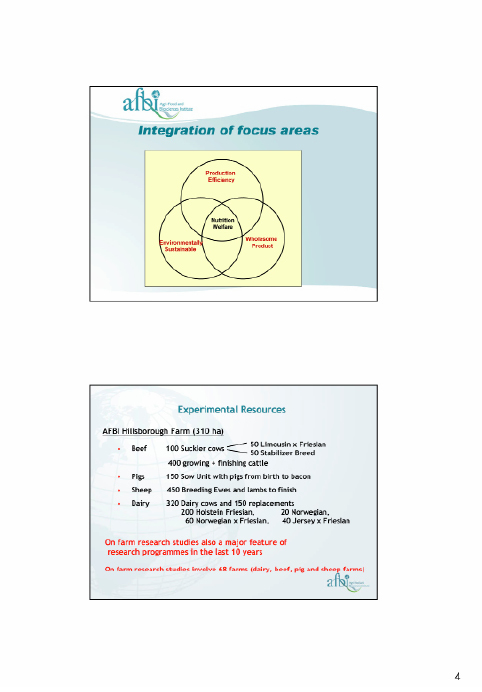
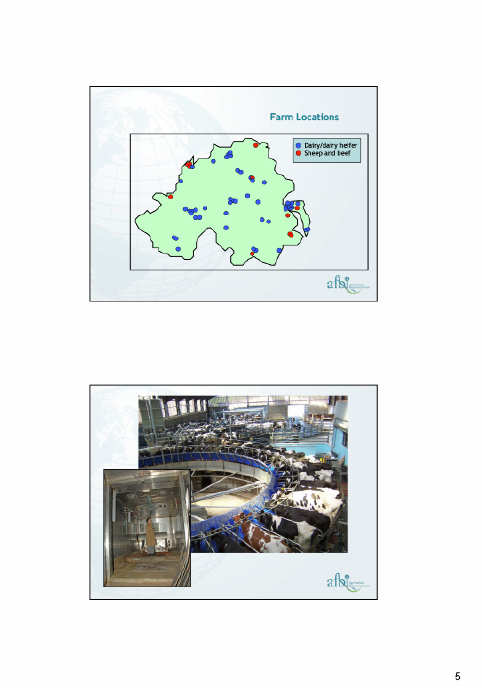

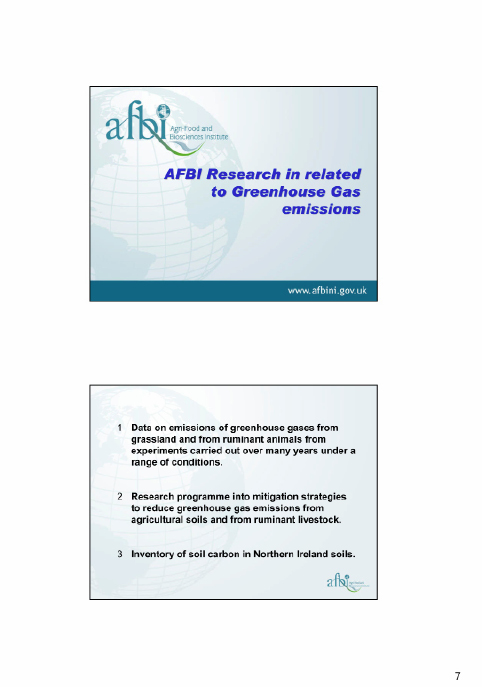
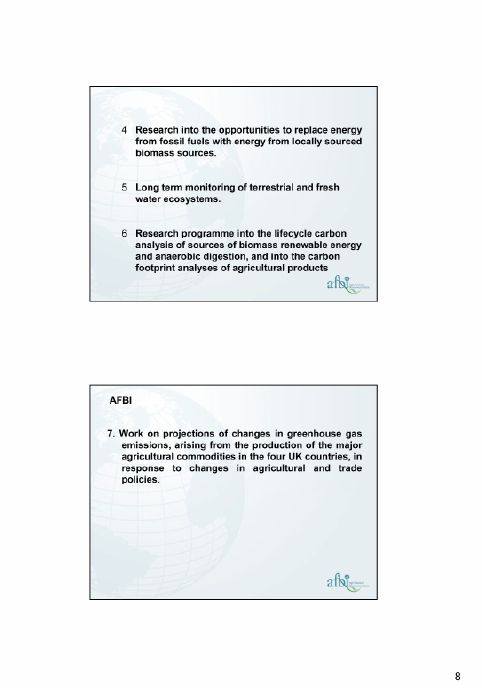
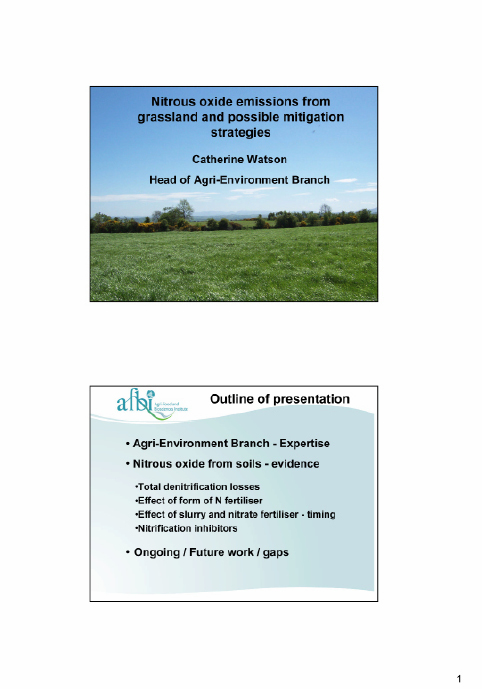
AFBI Visit Presentation
from Catherine Watson
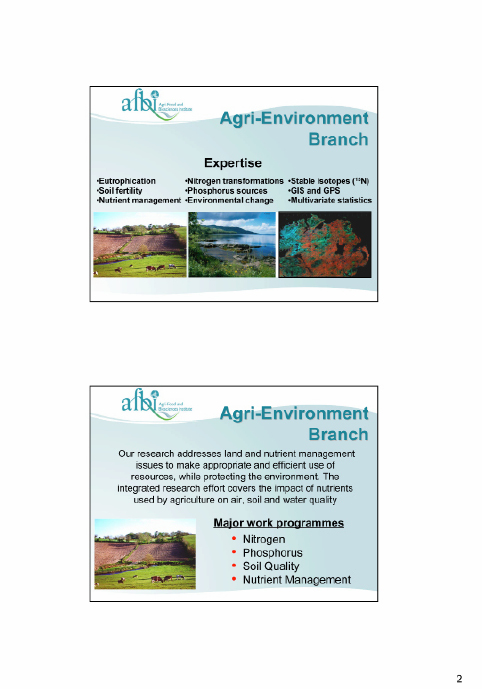
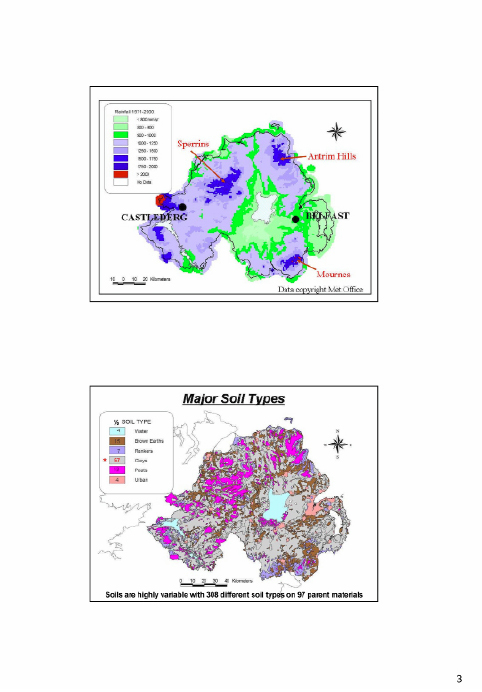
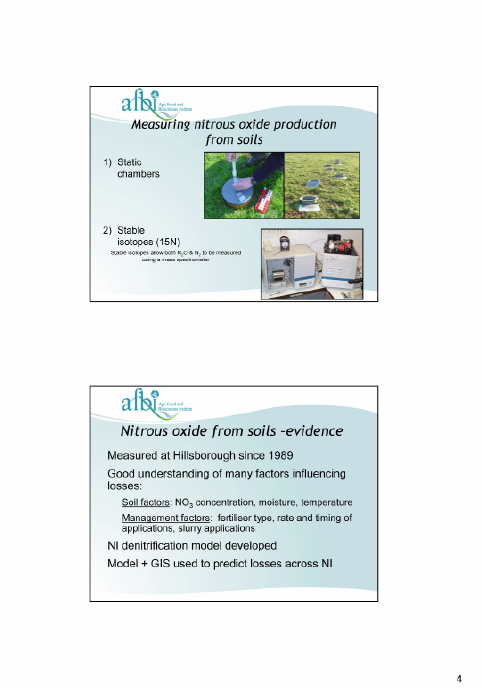
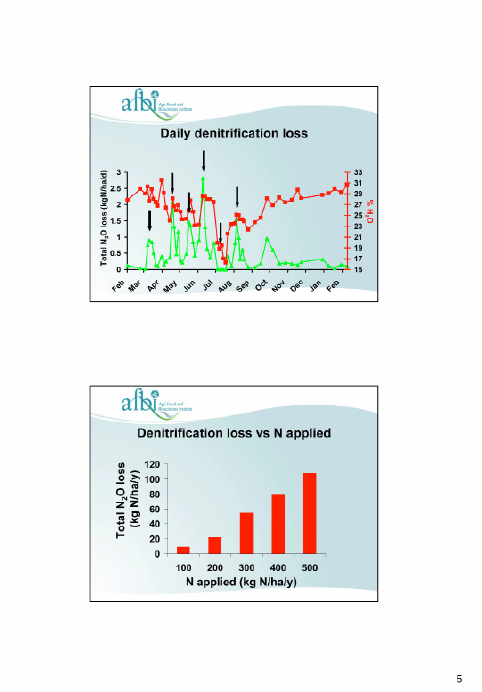
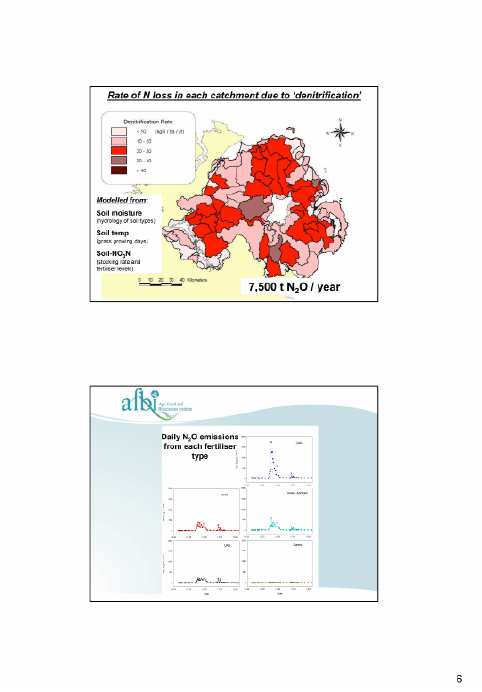
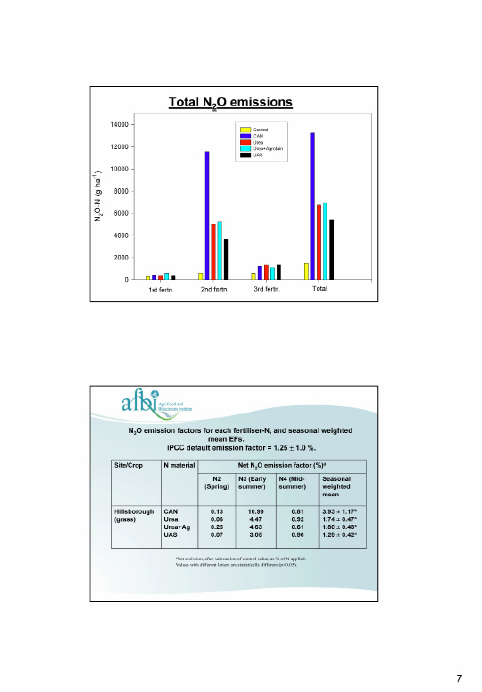



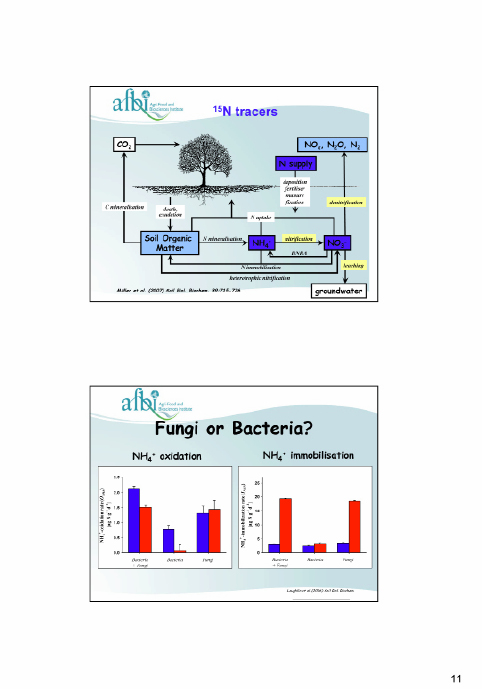


AFBI Visit Greenhouse Gas Emissions
from Agriculture Presentation
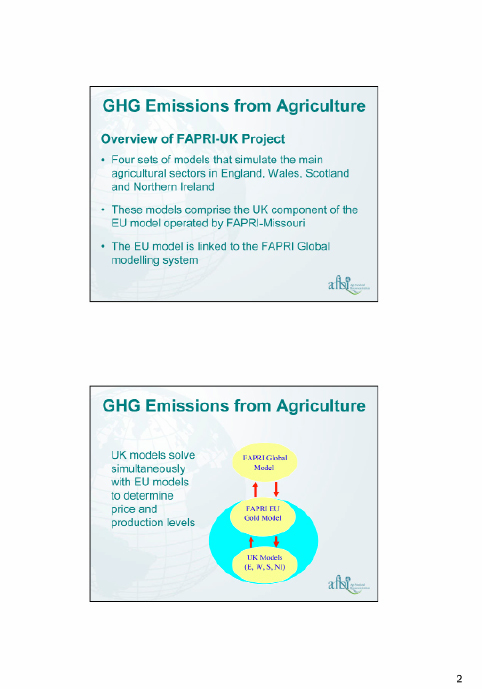
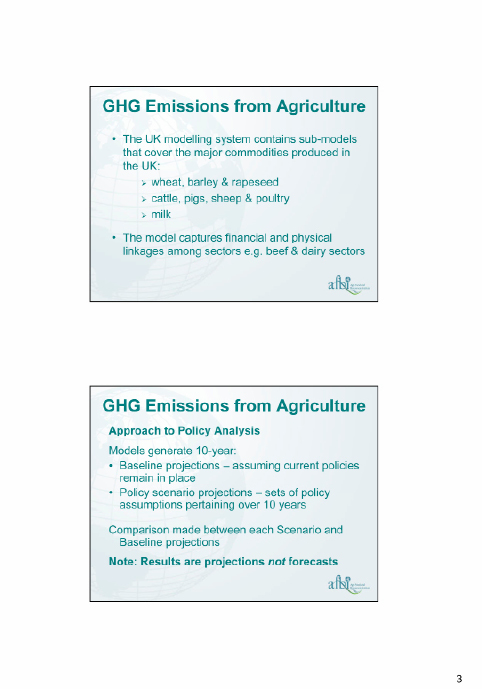

AFBI Visit Research Paper
AFBI Research relevant to greenhouse gas emissions from agriculture and land use
July 2009
AFBI’s research and development programme contributes to greenhouse gas emission research in a number of ways:
AFBI -
1. holds data on emissions of greenhouse gasses from grassland and from ruminant animals from experiments carried out over many years under a range of conditions.
2. has a research programme into mitigation strategies to reduce greenhouse gas emissions from agricultural soils and from ruminant livestock.
3. has prepared an inventory of soil carbon in Northern Ireland soils.
4. is conducting research into the opportunities to replace energy from fossil fuels with energy from locally sourced biomass sources.
5. has a research programme into the lifecycle carbon analysis of sources of biomass renewable energy and anaerobic digestion, and into the carbon footprint analyses of agricultural products
6. conducts long term monitoring of terrestrial and fresh water ecosystems.
7. is able to model the effects of changes in the economics of farming and land use systems on the structure of land use and make projections of the resulting changes in greenhouse gas emissions
1. Holds a data on scientifically measured emissions of greenhouse gasses from grassland and from ruminant animals under a range of conditions.
Over the last 20 years AFBI has been carrying out ruminant metabolism studies in state of the art indirect open circuit respiration calorimeters, which enable direct measurement of methane production. A number of papers have been published which include methane emission figures from various classes and breeds (eg Holstein, Norwegian, Jersey cross) of ruminant livestock, and from winter and spring calving dairy cows. Results from other studies are held by AFBI.
A combination of dentirifcation studies by AFBI and modelling of denitrification in grassland across Northern Ireland have enabled AFBI to produce maps of Northern Ireland showing estimate rates of nitrous oxide emissions.
2. Has a research programme into mitigation strategies to reduce greenhouse gas emissions from agricultural soils and from ruminant livestock.
(a) Methane
Methane is a major greenhouse gas and contributes about 18 per cent towards the global warming effect. Within the UK, ruminant livestock are the primary source of methane production, accounting for approximately 20% of total methane production. AFBI is well equipped to develop methane mitigation strategies for ruminant livestock with state of the art indirect open circuit respiration calorimeters, which enable direct measurement of methane production. In December 2007 AFBI, in association with UCD and Teagasc, Grange were successful in obtaining Department of Agriculture and Food Stimulus Funding to evaluate effects of dietary changes on methane production from ruminants.
Research has now been extended into the methane emissions from grazing animals under a range of regimes and these studies are being linked to associated nitrous oxide emissions so that lifecycle carbon footprint data can be collated.
(b) Denitrification and nitrous oxide
Nitrous oxide is a greenhouse gas which absorbs 270 times more heat per molecule than carbon dioxide. The major source of nitrous oxide emissions in the UK is from agricultural activities. Climatic and agricultural conditions conspire to ensure Northern Ireland soils have some of the highest rates of denitrification in the UK. Microbes in the wet and carbon-rich soils of Northern Ireland reduce nitrate in the soils through the process of denitrification to produce two principal gaseous products, nitrogen and nitrous oxide, in the ratio of approximately 3:1. These gases are lost to the atmosphere. The nitrogen produced is not a problem environmentally but the nitrous oxide, being a greenhouse gas, may contribute to global warming. AFBI research has shown that denitrification rates increase linearly with increasing rate of CAN applied. Loss rates as high as 3 kg N/ha/d have been measured at Hillsborough (CENIT site). Modelling of denitrification losses using the AFBI GIS predicts that around 7,500 tonnes of nitrous oxide are emitted annually from Northern Irish soils (Jordan & Smith, 2005). This corresponds to around 5% of the current annual UK emissions of nitrous oxide. Northern Ireland accounts for 6% of the land area of the UK. Current work by AFBI involves the use of inhibitors and stable isotopes to study the nitrogen cycle and how to manage it to minimise nitrous oxide losses from fertilisers (both chemical and organic). In addition, AFBI in association with Teagasc and University College Dublin, have recently received Stimulus funding for a joint project to investigate opportunities to maximise the efficiency of slurry-N and urea-N utilisation by grassland, using nitrification and urease inhibitors as a strategy for environmental protection. The impact of these inhibitors on greenhouse gas emissions (N2O, CH4, CO2), ammonia emissions and nitrate leaching are being quantified under contrasting soil and environmental conditions in Ireland to enable emission factors to be verified.
(c) Ammonia emissions
Ammonia emissions from manures during storage and after spreading on the land account for a significant proportion of UK emissions. AFBI research includes examination of trailing-shoe spreading technology which can significantly lower ammonia losses to the atmosphere.
3. Inventory of Soil Carbon
Until recently, there was no reliable inventory of soil carbon for the UK as required by the Kyoto Protocol. Under the Kyoto Protocol, the UK is required to make estimates of net carbon emissions to the atmosphere. One potential source is the soil. An important driver of soil carbon losses and gains is changes in land use. AFBI Science has delivered the Northern Ireland soil and land use input to a recent standardised UK soil carbon database compatible with Geographic Information Systems (GIS) and numerical modelling requirements, using agreed protocols (Bradley et al, 2005). This has provided a baseline from which the effect of land use change and management options on soil carbon turnover can be modelled by other researchers.
AFBI have estimated that the soil carbon storage to 1 metre depth across Northern Ireland amounts to 296 million tonnes of carbon, about 6.5% of the UK total (in line with the ratio of the area of the Province to that of the UK). As expected, the highest density of soil carbon is in the peat overlying high ground. Current work involves measuring peat depth and changes in the bulk density of peat with depth to update our estimate of the total carbon stocks for Northern Ireland.
4. Opportunities to replace energy from fossil fuels with energy from renewable sources
AFBI considers that the future for renewable energy from agriculture and forestry in Northern Ireland lies with small-scale, rural, embedded systems which are sustainable and will generate income for farmers and foresters and benefit the wider rural community. Building on many years of research which has pioneered short rotation coppice willow AFBI was recent developed the Environment and Renewable Energy Centre (EREC) at AFBI Hillsborough which combines a significant research programme around a range of renewable energy technologies delivering heat and electricity to the AFBI Hillsborough site.
The Environment and Renewable Energy Fund allocated £3.6m to AFBI to set up the EREC at AFBI Hillsborough and to develop a research programme into key renewable energy technologies relating to agriculture. The renewable energy research programme is being developed in consultation with DARD.
The EREC incorporates a biomass heating system and a wood-chip drying store being installed at the AFBI Hillsborough site, and this will facilitate a research programme into the production, storage and utilisation of biomass crops including SRC willows, other biomass crops and forestry residues.
An Anaerobic Digester is also part of the EREC scheme and the biogas is being used to generate electricity and heat in the EREC. Aspects of solar technologies are also being evaluated.
EREC staff at Hillsborough are working with other groups in AFBI including those in Applied Plant Science and in Agriculture and Food Economics, and are also developing both local and international collaborative research links into agriculturally relevant aspects of renewable energy.
The EREC will give AFBI a unique capability to provide research data on renewable energy from production to utilisation across a range of land-based enterprises, and to develop ways of building renewable energy projects into farming systems to achieve maximum carbon emission reductions, in ways that are both economically viable and sustainable.
(a) Biomass and Energy Crops
AFBI has pioneered research into short – rotation coppicing of willows and has over 30 years of experience at its Loughgall Centre into all aspects of growing, harvesting and utilising the crop. AFBI expertise has been recognised through high-level participation in a number of key EU-networked projects over the past 10 years. At a technology transfer level we are closely involved with Rural Generation Ltd in developing heat and power systems from willow coppice while incorporating novel bio-remediation technology in association with a local sewage works. AFBI was also involved in a recent EU supported innovative project whereby a consortium of local farmers are growing willow for biomass used to heat a local Leisure Centre run by Cookstown District Council. This project was co-ordinated by AFBI scientists, involved growers, suppliers and users of wood chip, and also resulted in a ‘Best Practice’ guide for the management of SRC willows.
Through the EREC AFBI has initiated biomass research projects into
i) The bioremediation of farm dirty water through SRC willows
ii) Techniques for the improved establishment and early growth of miscanthus
iii) The recovery of forest brash and its use as a biomass fuel
iv) The storage and drying of woody biomass fuels
v) The identification of alternative biomass crops & forestry species
(b) Anaerobic digestion
Anaerobic digestion of agricultural manures and other organic materials has significant potential to produce renewable energy as biogas and to aid in the management of plant nutrients from these materials. AFBI has installed a 600 cubic metre mesophilic on-farm anaerobic digester with the research objectives of:
- Determining physical and financial base-line performance
- Researching performance improvers such as co-digestion
- Modelling feasibility of on-farm anaerobic digestion for NI
- Determining contribution of anaerobic digestion to greenhouse gas mitigation
- Providing information for policy and industry
The digester as been operational for about one year and is producing research data on the yield and quality of biogass from the digestion of cow manure. The biogas is being used for the generation of electricity and heat through the EREC.
5. Long term monitoring of terrestrial and fresh water ecosystems
(a) Effect of elevated CO2 on nitrogen dynamics in temperate grassland soils
Climate change due to increasing atmospheric CO2 concentrations will have an impact on biogeochemical cycles in terrestrial ecosystems. Since carbon (C) cycling is closely linked to nitrogen (N) cycling, elevated atmospheric CO2 concentrations may influence both the internal cycling of nitrogen (N) as well as the processes that regulate the total ecosystem nitrogen balance. Because N is a limiting nutrient in most ecosystems, changes in the N availability or N cycling will be controlled by the long-term response of ecosystems to atmospheric CO2. Studying the effect of elevated CO2 on microbial N transformations and plant N uptake in soil is technically difficult and extremely expensive. Long-term studies (>5years) are required as the system needs to be in equilibrium before any meaningful data can be obtained. The University of Giessen in Germany set up a unique field experiment approx. 9 years ago (called Free Air CO2 Environment (FACE) experiment) maintaining elevated atmospheric CO2 concentrations above a grassland sward. The FACE facility is funded by the Hessian Agency for the Environment and Geology in Germany and the system has now reached equilibrium. Researchers in AFBI have been collaborating with Professor Christoph Muller at the University of Giessen and more recently at UCD for a number of years. The collaboration is based on AFBI’s expertise in the use of stable isotopes (15N and 13C) to investigate N and C dynamics in soil and Professor Muller’s expertise in the analysis of data using simulation models.
At present AFBI has a unique opportunity to use the FACE experiment to undertake collaborative research with the University of Giessen on the effect of elevated CO2 levels on soil N dynamics. This collaboration utilises the expertise in both organisations. The information obtained from the FACE experiment could be applied to grassland systems in Northern Ireland to predict more accurately the response of grassland to environmental change and improve our understanding of how changing climate and atmospheric composition interact to influence agricultural sustainability. The research may also help in developing future strategies to make N cycling more efficient leading to enhanced plant growth and minimising losses to the environment.
(b) Environmental Change Network (ECN) UK
Since 1994, AFBI Science has been operating one of twelve terrestrial sites within ECN UK, at AFBI’s Hillsborough site, Co. Down (Figure 3) and 3 freshwater sites (Lough Neagh, L Erne and River Bush). ECN is a long-term ecosystem monitoring and research network, designed for the detection, interpretation and prediction of long-term environmental change in order to help mitigate and adapt to climate change.
The chief objectives of the ECN are:
- to obtain uniform and comparable long-term datasets for key environmental components at selected sites by using standardised protocols
- to integrate these datasets in such a way as to identify changes and improve our understanding of the causes of such changes. (Sykes & Lane 1996, Sykes et al 1999).
In addition to monitoring components of the physical and chemical environment, such as meteorology and atmospheric chemistry, ECN also monitors changes in selected biota. Changes in these biological populations can then be considered against changes in the physical environment. Detecting this pattern of biotic responses to changes in key, driving variables relies on the use of complex analytical and statistical tools to tease out real effects of environmental change from natural population fluctuations.
Figure 3: The UK Environmental Change Network

The ‘Climate Change Indicator’ pages available online (see www.ecn.ac.uk) generate graphs direct from the ECN database to show recent change. Work is also progressing to identify climate-induced changes in biota. Ground predators (Coleoptera: Carabidae) are pitfall-trapped across the Network and the results used, with climate data, to test for climate-induced change. The data have been independently subjected to a novel species range classification and to correspondence analysis. Both analyses have indicated significant responses over time (1993 – 2000). Temporal changes in the balance of northern and southern elements within ground beetle communities show a significant increase in the presence/activity of southern species at the expense of northern (cold-adapted) species. The community structure in upland sites had also changed along a climatic (temperature) gradient, with certain flightless species (Carabus) declining significantly (Figure 4).
Figure 4: Carabus glabratus, a large, flightless ground beetle affected by climate change

Monitoring at the River Bush ECN site indicates that survival rates of North Atlantic salmon, an economically important species, have declined markedly since 1996, possibly due in part to climate change.
6. Lifecycle analysis of ‘Carbon Footprints’ and greenhouse gas emissions
AFBI is bringing together its scientists from across a range of disciplines to develop lifecycle analyses figures for important agricultural products from Northern Ireland, and for the range of biomass resources from agriculture which are starting to be utilized. IPCC procedures are being followed into which data sourced locally data are being incorporated in order to identify the most appropriate figures to be used in the Northern Ireland context, and to support local agriculture as it seeks to meet the increasing demand for information on the carbon footprint of its products.
7. Modelling the effects of changes in the economics of farming and land use systems on the structure of land use and make projections of the resulting changes in greenhouse gas emissions
The Economics Branch within AFBI is one of the leading UK groups working on the FAPRE model of the impacts of economic changes on the structure of agricultural and rural land use. This group are currently evaluating how the modeling of greenhouse gas emissions can be linked to their existing economic models with a view to providing the ability to provide the essential link between economic changes and the resulting changes in the pattern of emissions of greenhouse gases.
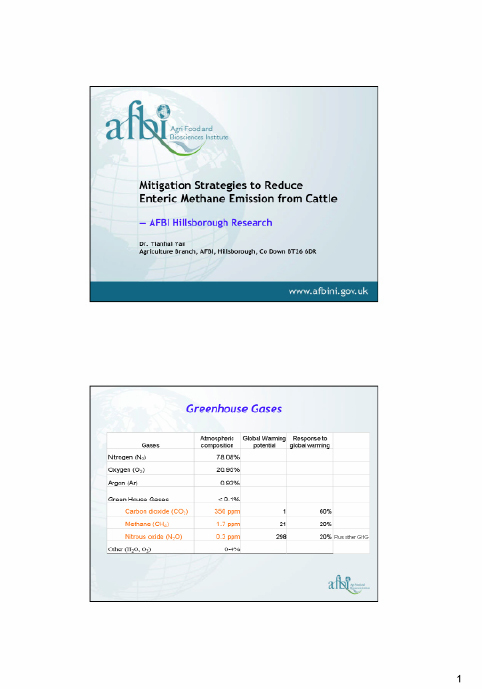
AFBI Visit Research Presentation

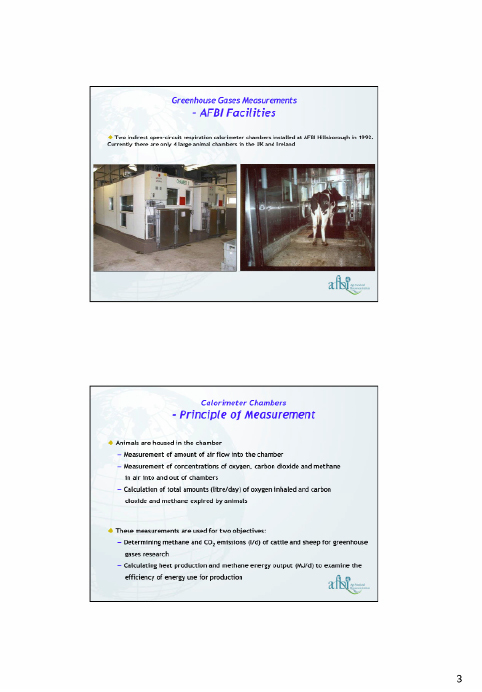
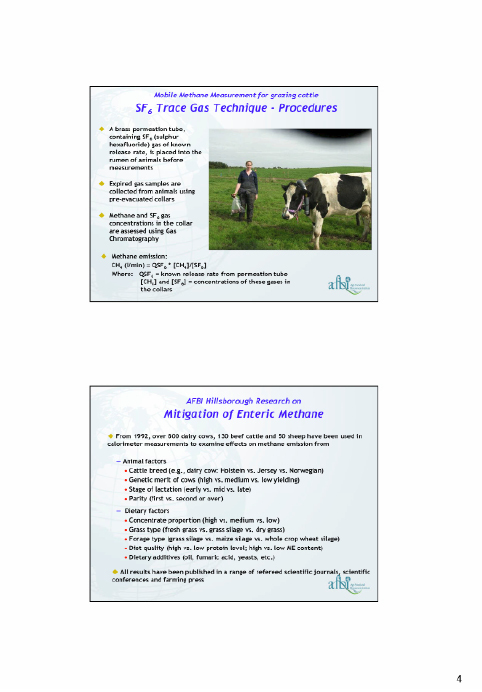
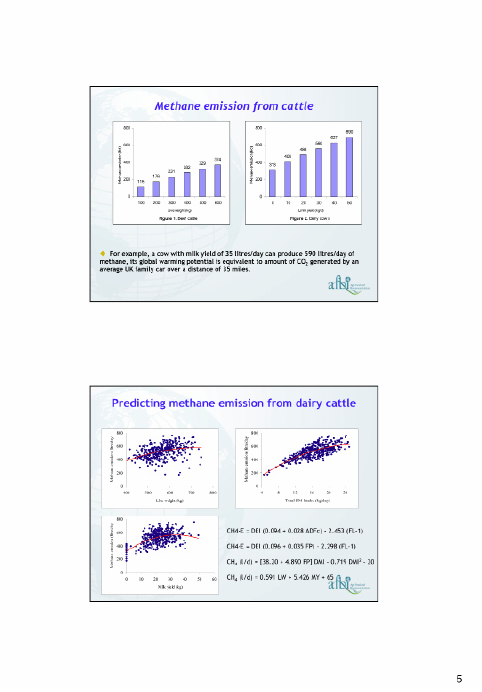
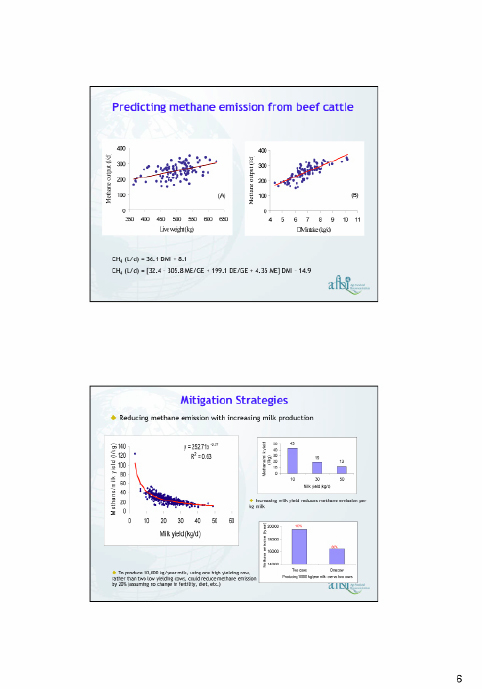
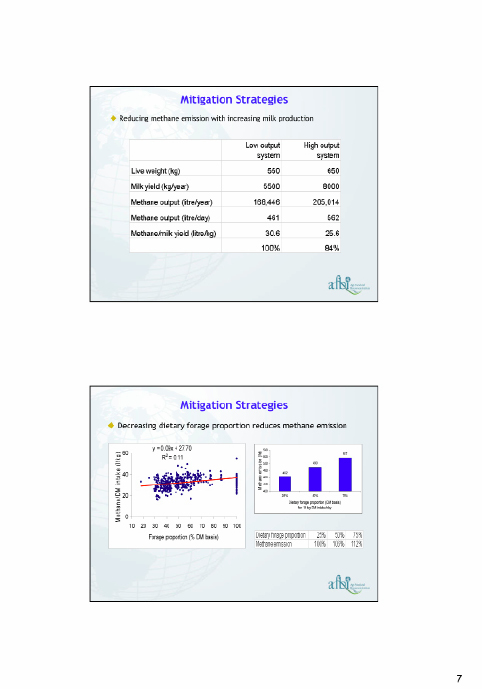


Draft Flood and Water Management Bill Executive Summary
_-_Draft_Flo_fmt.jpeg)
_-_Draft_Fl_fmt1.jpeg)
Appendix 5
List of Witnesses
List of Witnesses who gave
Oral Evidence to the Committee
|
Mr Mike Thompson |
Committee on Climate Change |
|
|
Mr James Dillon |
Sustainable Development Commission Northern Ireland |
|
|
Mr Alex Hill |
Met Office |
|
|
Ms Frances McCandless |
Northern Ireland Council for Voluntary Action |
|
|
Mr Keith Brown |
Department of the Environment |
|
|
Mr Mark Ennis |
Confederation of British Industry |
|
|
Ms Lynsey Orr |
Energy Saving Trust |
|
|
Mr Charles Anglin |
British Wind Energy Association |
|
|
Mr Gary Connolly |
Irish Wind Energy Association |
|
|
Mr Michael Doran |
Royal Institution of Chartered Surveyors |
|
|
Mr Herbert Bailie |
Institution of Highways and Transportation |
|
|
Mr Gavin Rafferty |
Royal Town Planning Institute |
|
|
Mr Sam Knox |
Chartered Institute of Environmental Health |
|
|
Ms Karen Smyth |
Northern Ireland Local Government Association |
|
|
Mr John Best |
Ulster Farmers’ Union |
|
|
Ms Patricia Mackey |
Northern Ireland Climate Change Partnership |
|
|
Mr Colum Delaney |
Royal Society for the Protection of Birds |
|
|
Mr Glynn Roberts |
Northern Ireland Independent Retail Trade Association |
|
|
Mr John Hardy |
CTS Projects |
|
|
Mr Hans Schreuder |
ILoveMyCarbonDioxide.com |
|
|
Mr Neil Alldred |
Climate Change Coalition Northern Ireland |
|
|
Mr Peter Archdale |
Council for Nature Conservation and the Countryside |
|
|
Mr Geoff Smyth |
Carbon Trust Northern Ireland |
|
|
Ms Bairbre de Brún |
MEP Sinn Féin |
Appendix 6
List of Abbreviations
List of Abbreviations
1. AFBI – AgriFood Biosciences Institute
2. ASSI – Areas of Special Scientific Interest
3. BWEA – British Wind Energy Association/Irish Wind Association
4. CBI – Confederation of British Industry
5. CCC – Committee on Climate Change
6. CCCNI – Climate Change Coalition Northern Ireland
7. CIEH – Charted Institute of Environmental Health
8. CNCC – Council for Nature Conservation and the Countryside
9. CVNI – Conservation Volunteers Northern Ireland
10. DARD – Department of Agricultural and Rural Development
11. DCAL – Department of Culture, Arts and Leisure
12. DECC – Department of Energy and Climate Change
13. DEFRA – Department for Environment, Food and Rural Affairs
14. DEL – Department for Employment and Learning
15. DETI – Department of Enterprise, Trade and Investment
16. DFP – Department of Finance and Personnel
17. DHSSPS – Department of Health, Social Services and Public Safety
18. DOE – Department of the Environment
19. DRD – Department of Regional Development
20. DSD – Department for Social Development
21. EAC – Environmental Audit Committee
22. ECCC – Energy and Climate Change Committee
23. EFRA – Environment, Food and Rural Affairs Committee
24. EPC – Energy Performance Certificate
25. EST – Energy Saving Trust
26. ETI – Enterprise, Trade and Investment Committee
27. FSB – Federation of Small Business
28. FOE – Friends of the Earth
29. GHG – Greenhouse gas
30. ICTU - Irish Congress of Trade Unions
31. IHT – Institute of Highways and Transportation
32. IOD – Institute of Directors
33. NIAO – Northern Ireland Audit Office
34. NICI – Northern Ireland Cycling Initiative
35. NICIP – Northern Ireland Climate Change Impacts Partnership
36. NICVA – Northern Ireland Council for Voluntary Action
37. NIE – Northern Ireland Electricity
38. NIEL – Northern Ireland Environment Link
39. NIRRTA – Northern Ireland Independent Retailers Association
40. NILGA – Northern Ireland Local Government Association
41. NT – National Trust
42. PAS – Publicly Audited Standard
43. PFG – Programme for Government
44. PPS – Planning Policy Statement
45. PSA – Public Service Agreement
46. QUB – Queen’s University Belfast
47. RCCF – Rural Climate Change Forum
48. RICS – Royal Institute of Chartered Surveyors
49. RPA – Review of Public Administration
50. RSPB – Royal Society for the Protection of Birds
51. RTPI – Royal Town Planning Institute
52. SDC – Sustainable Development Commission
53. SDS – Sustainable Development Strategy
54. SMART – Specific, measurable, achievable, realistic and timebound
55. SMEs – Small and Medium Sized Enterprises
56. SNI – Sustainable Northern Ireland
57. UFU – Ulster Farmers Union
58. VAT – Value Added Tax
59. WWF – World Wide Fund for Nature




_fmt1.jpeg)